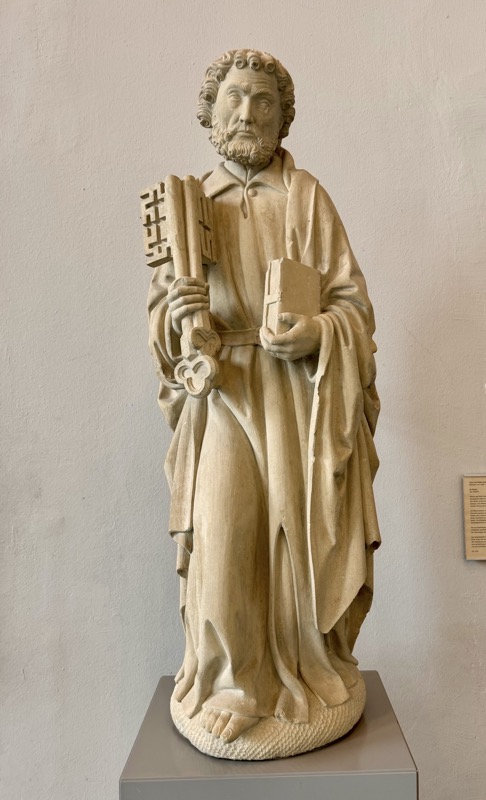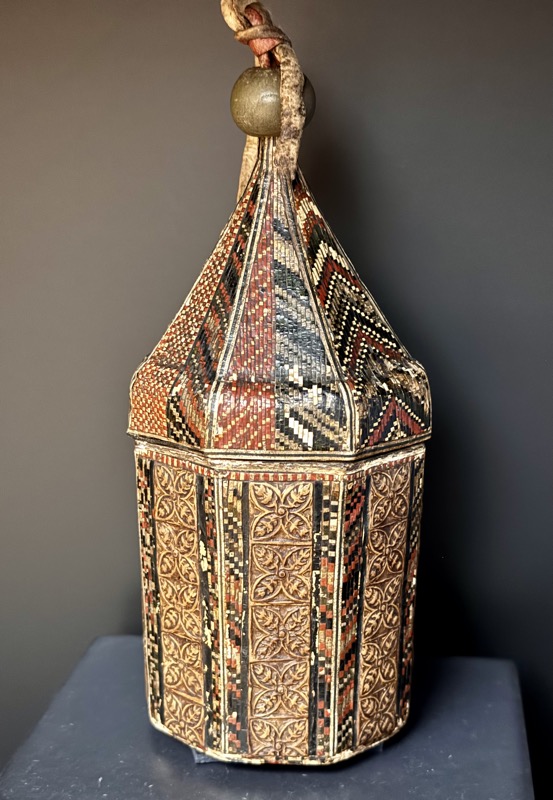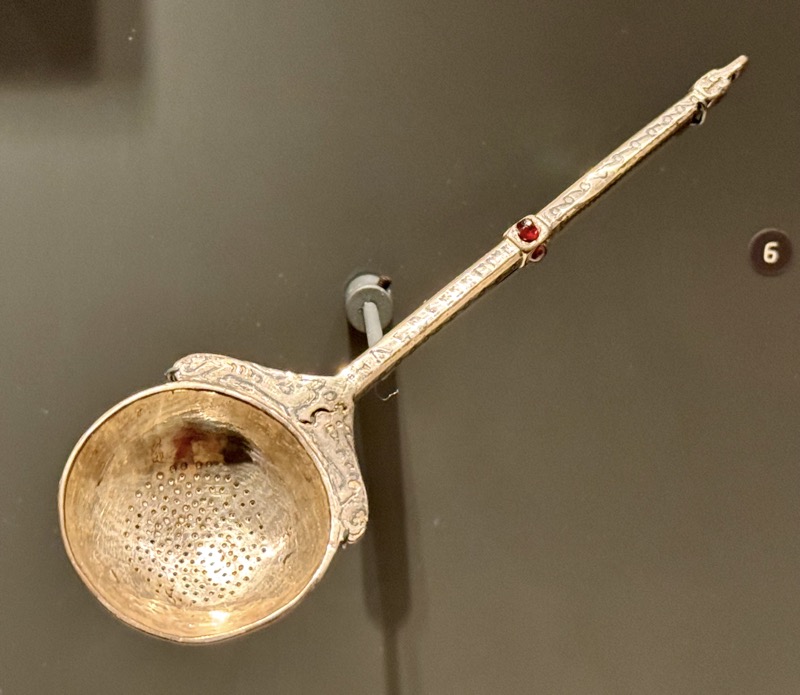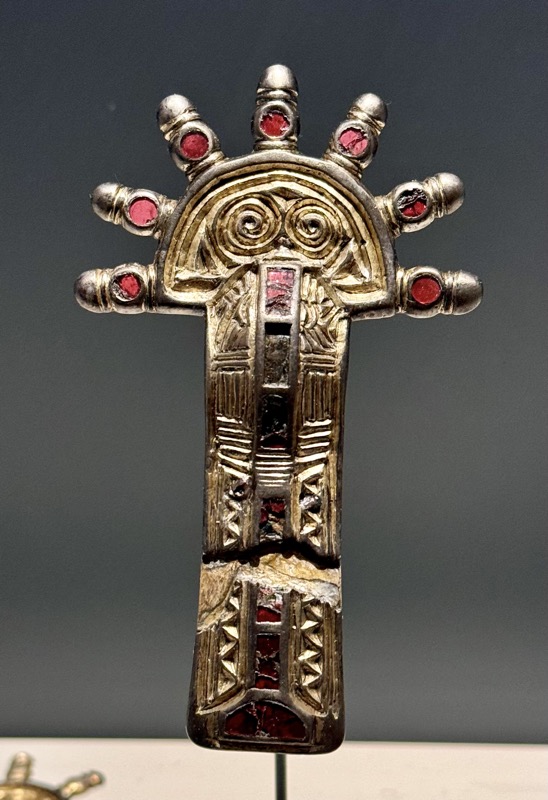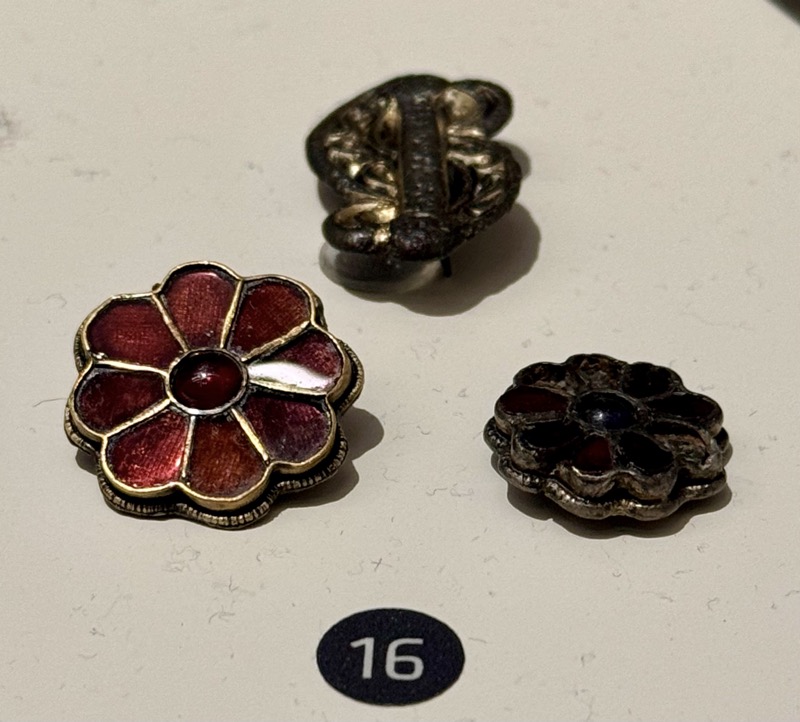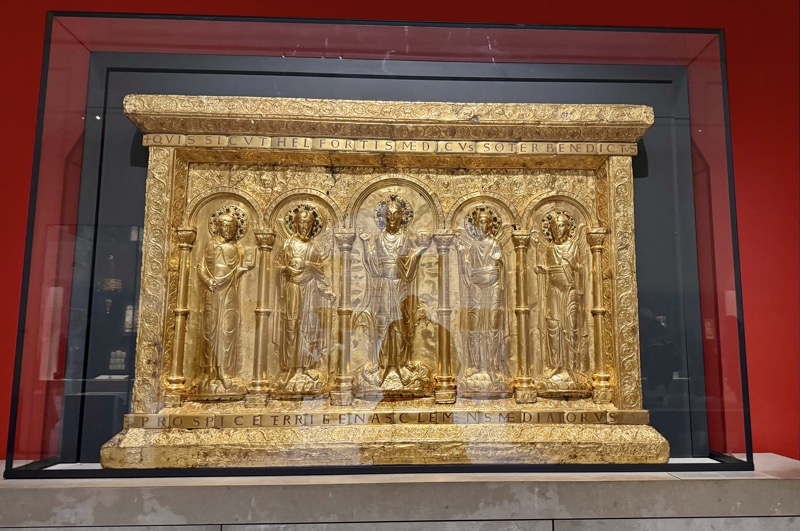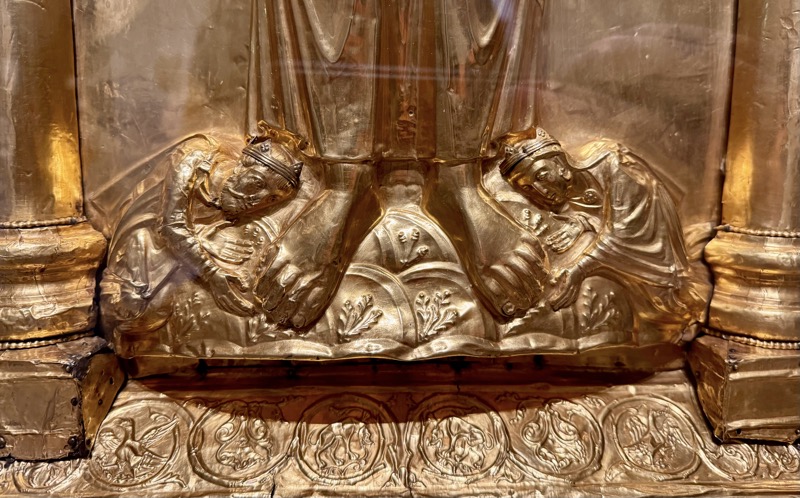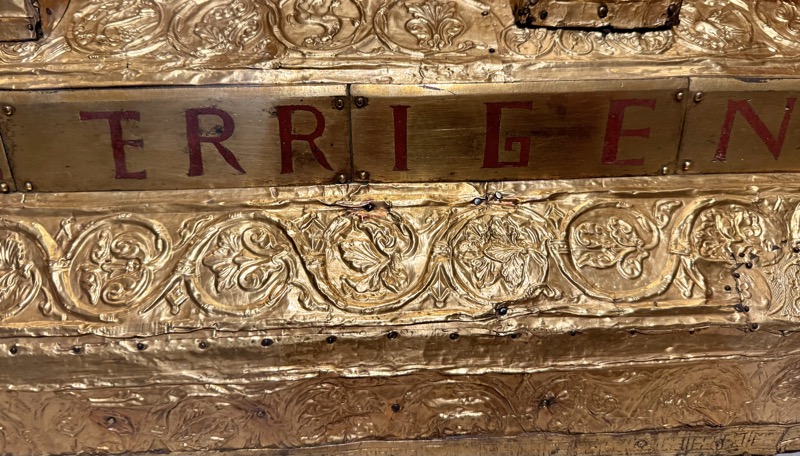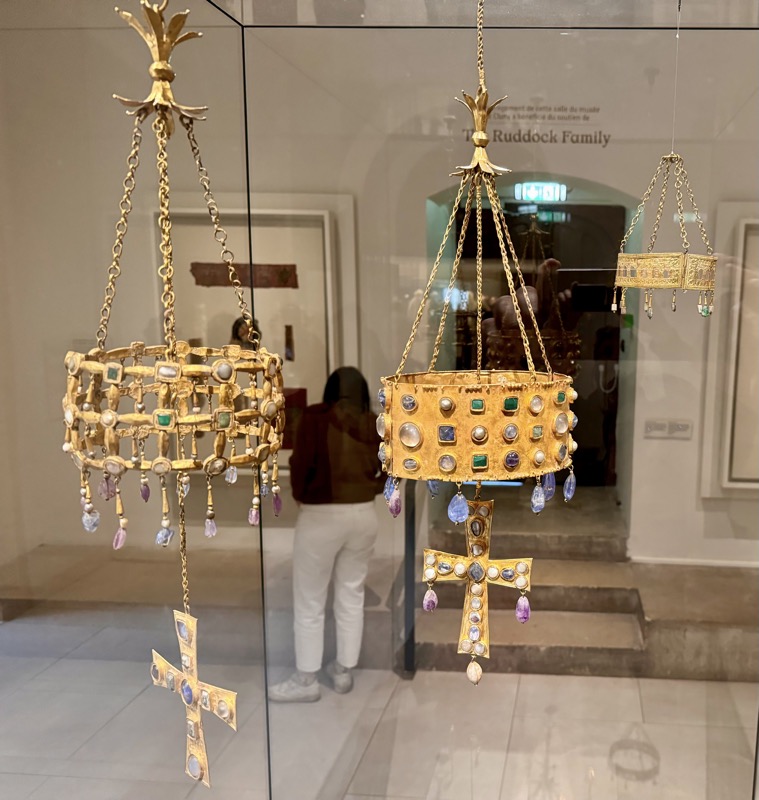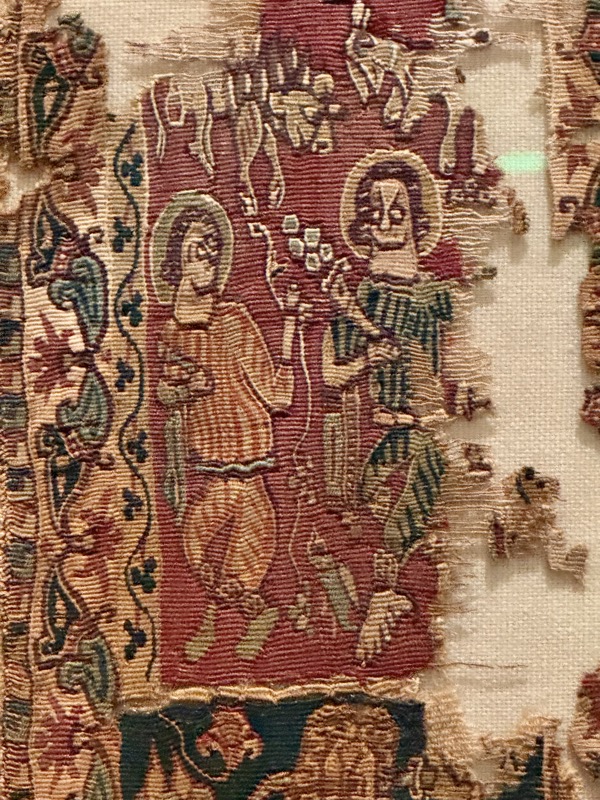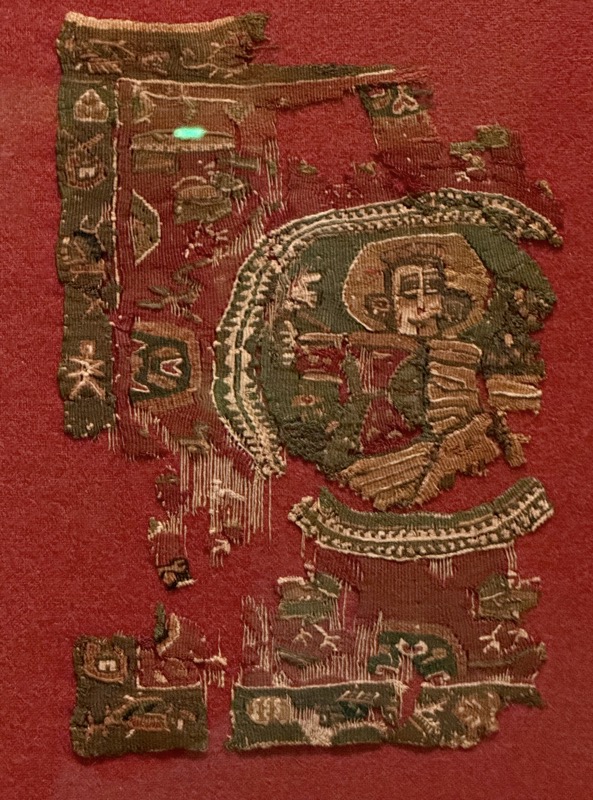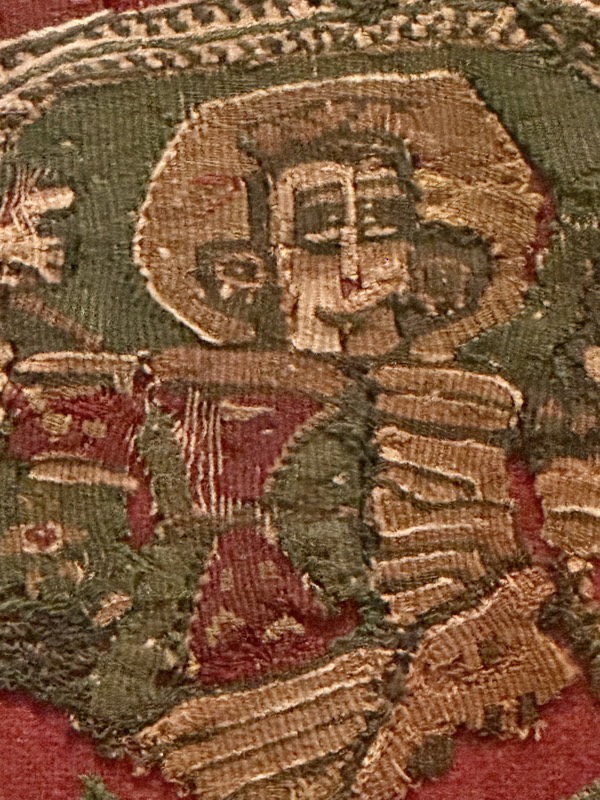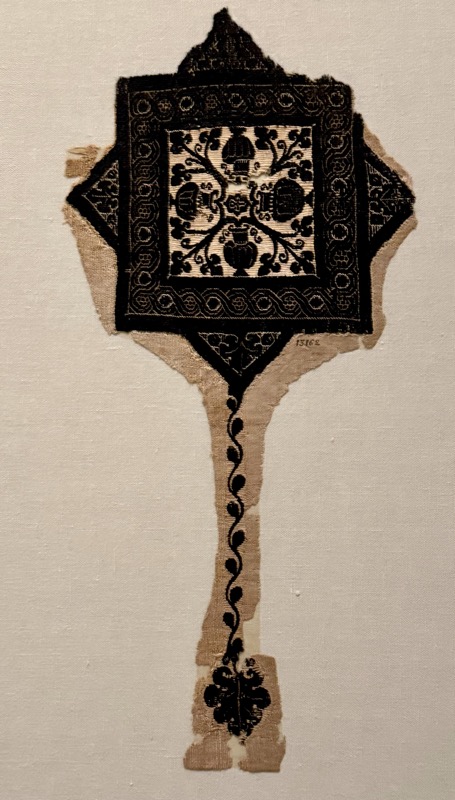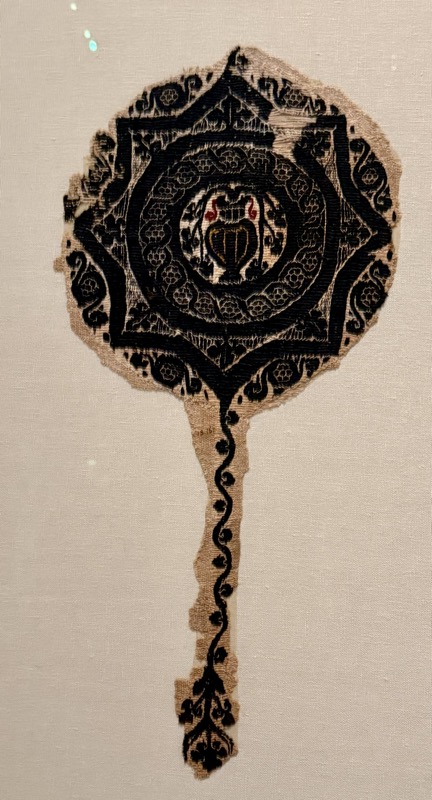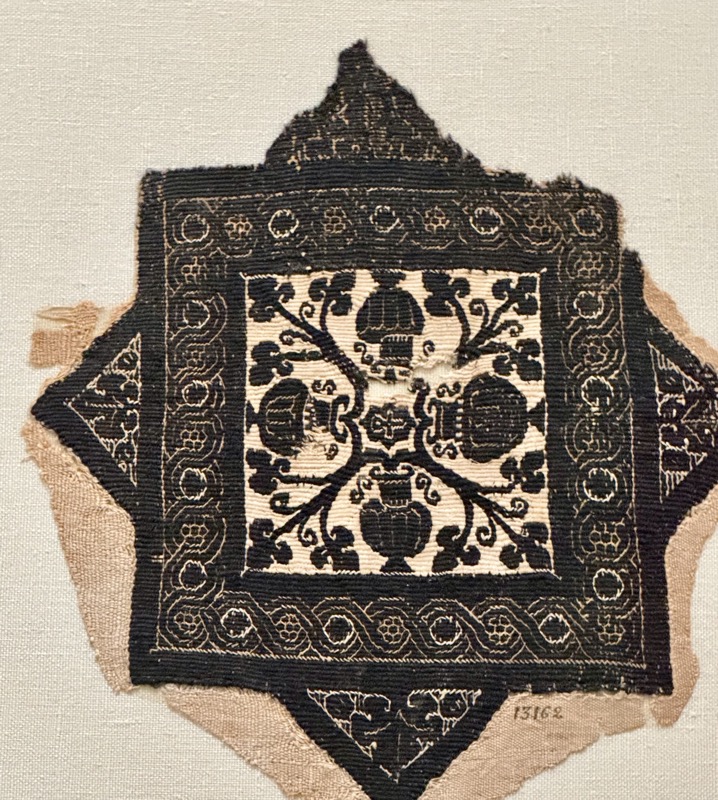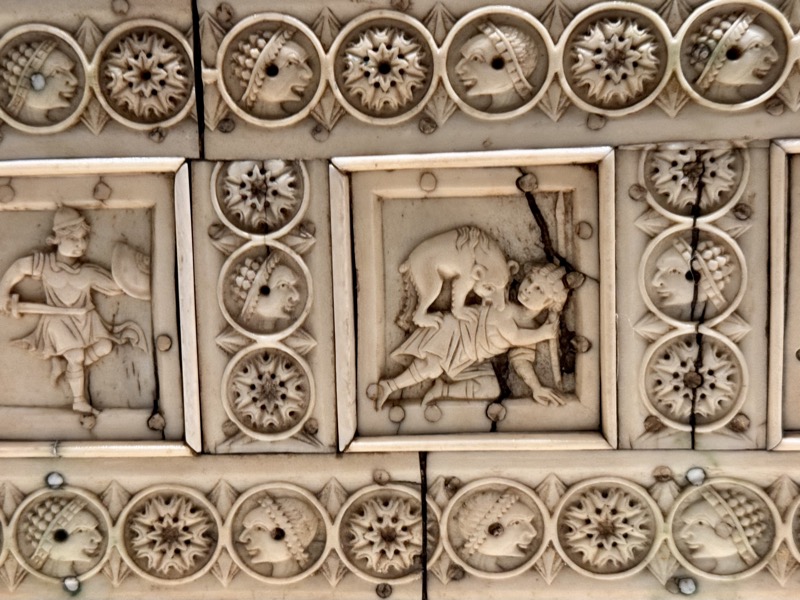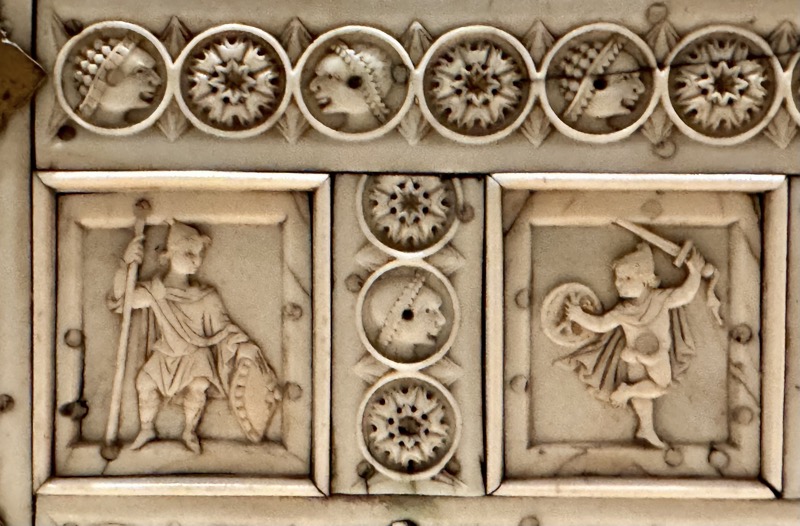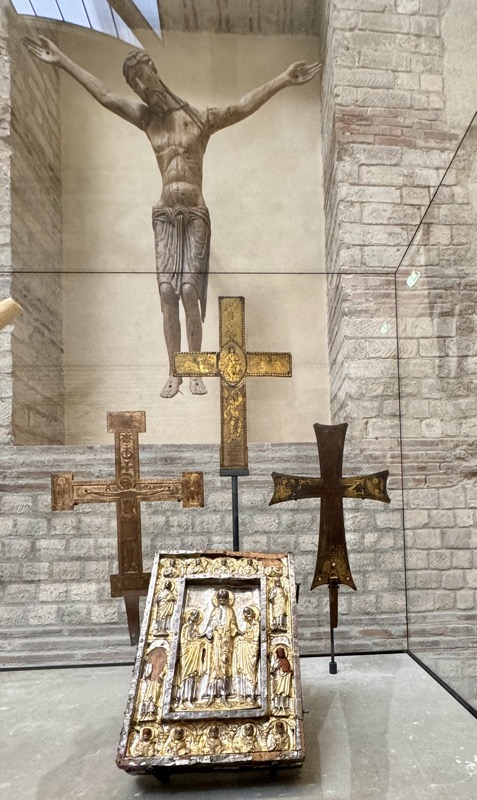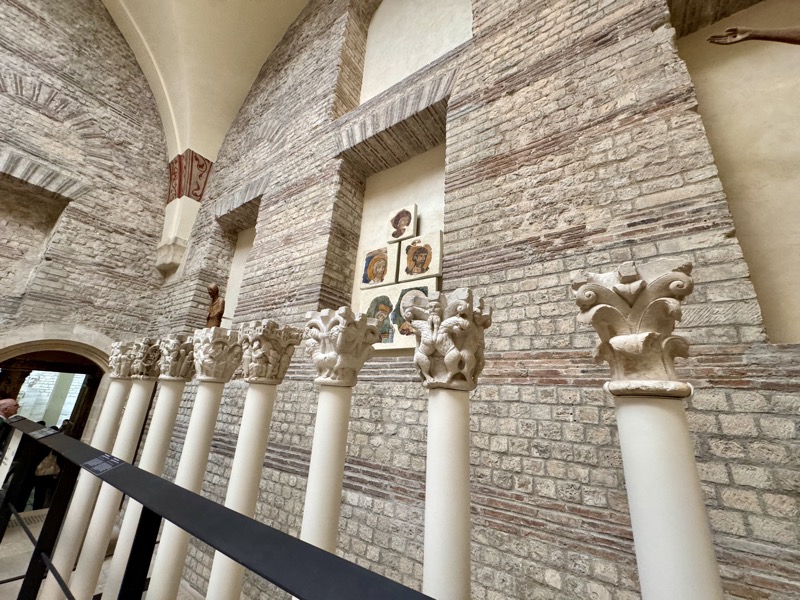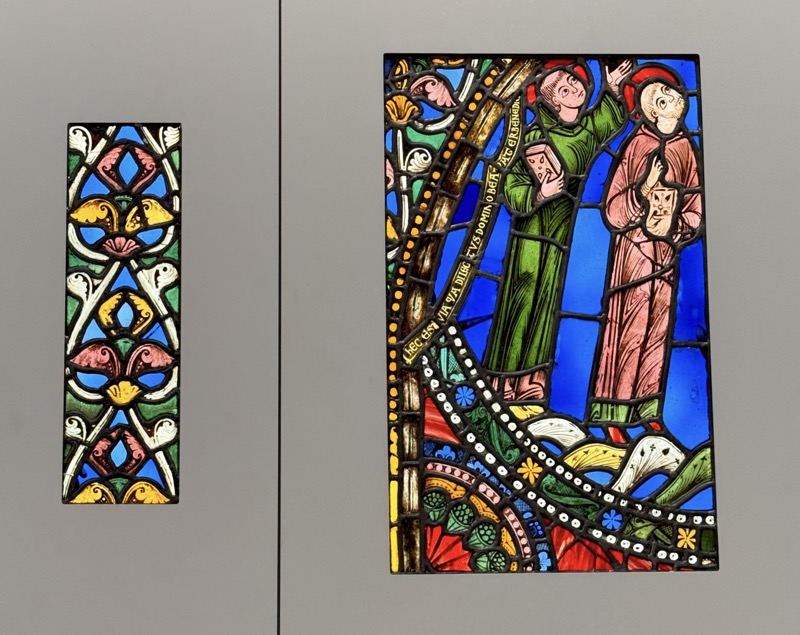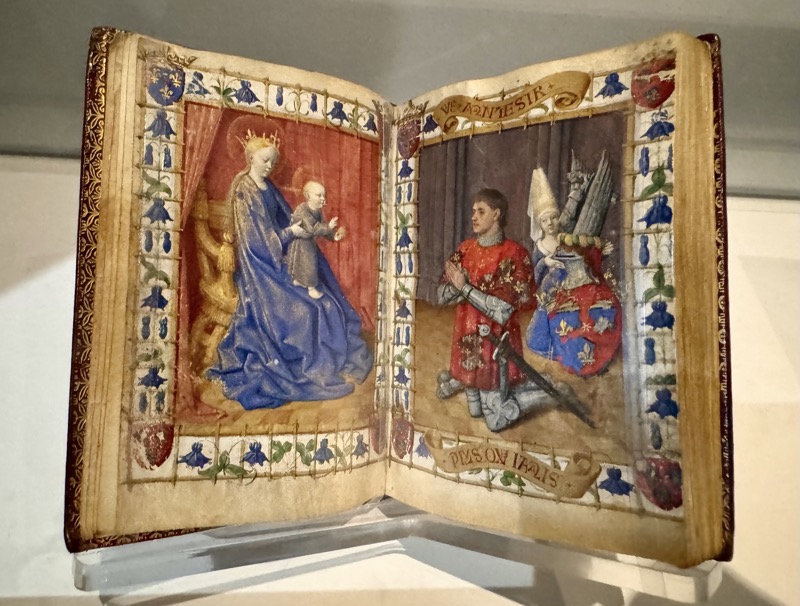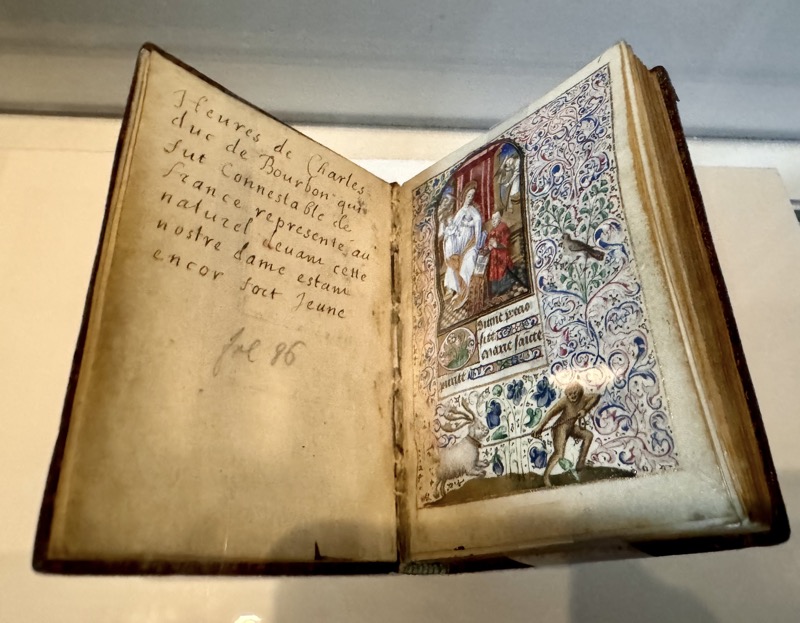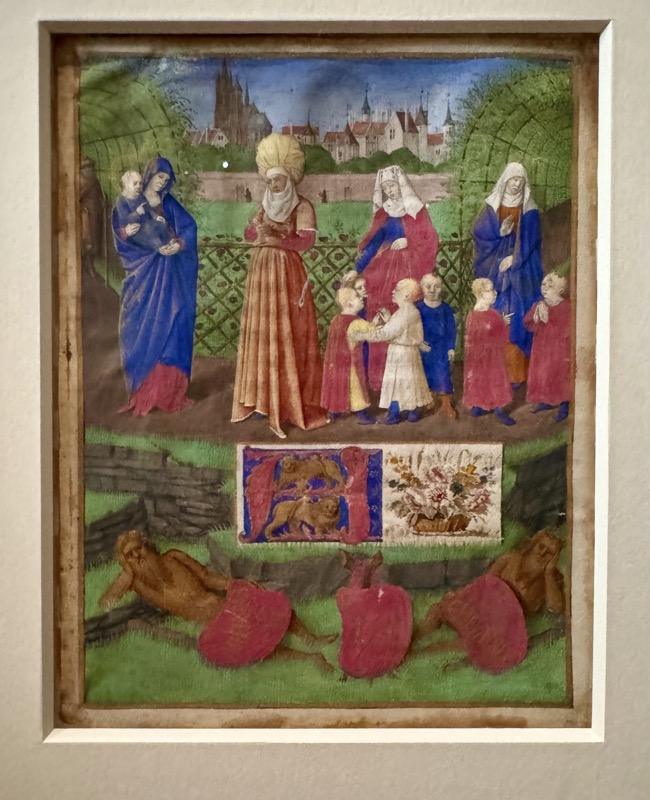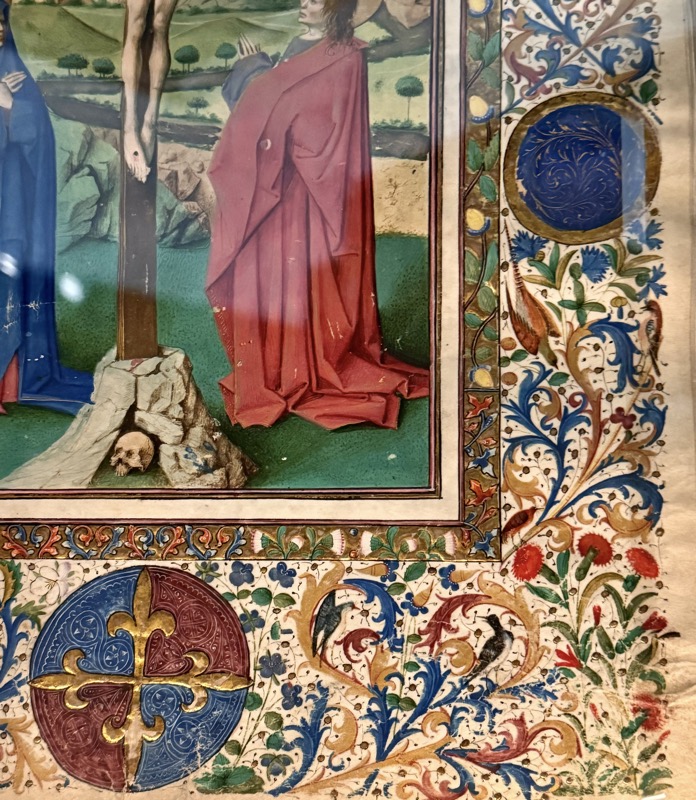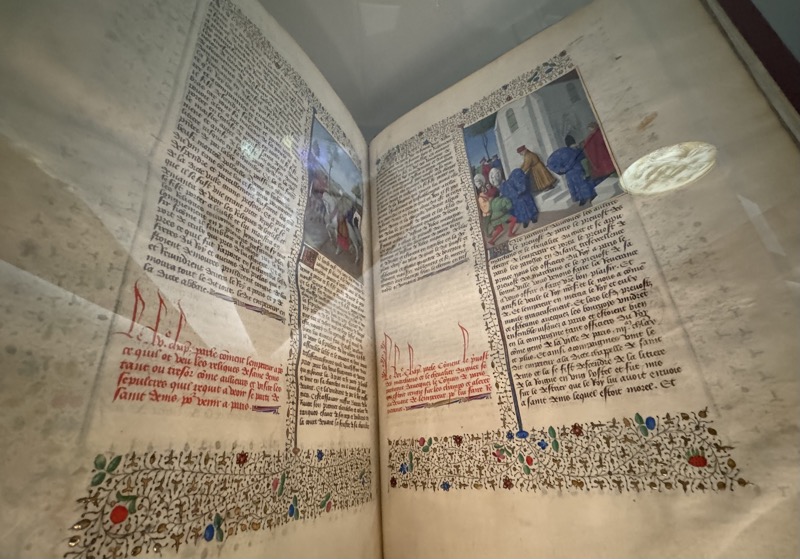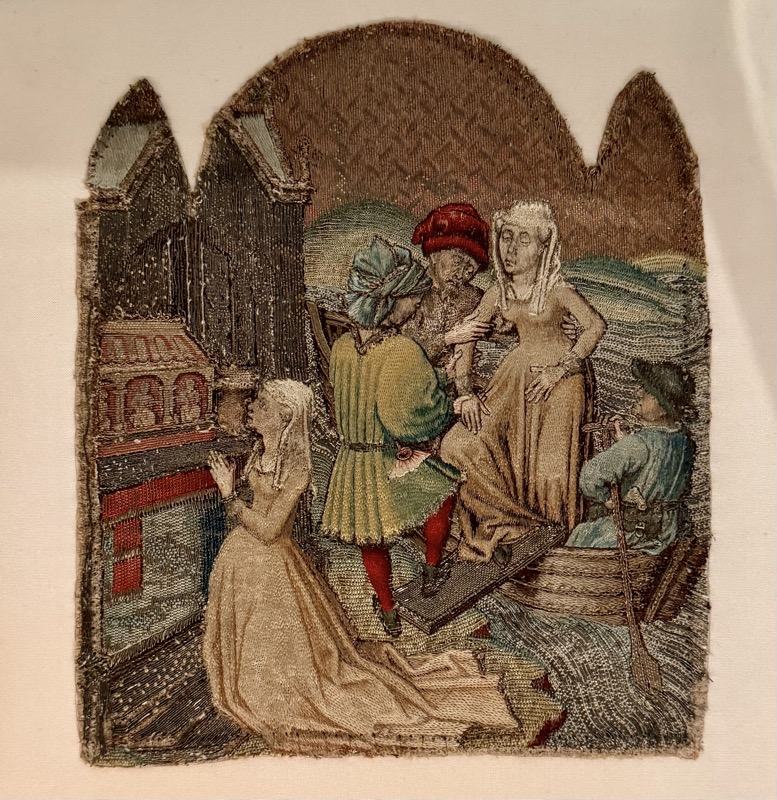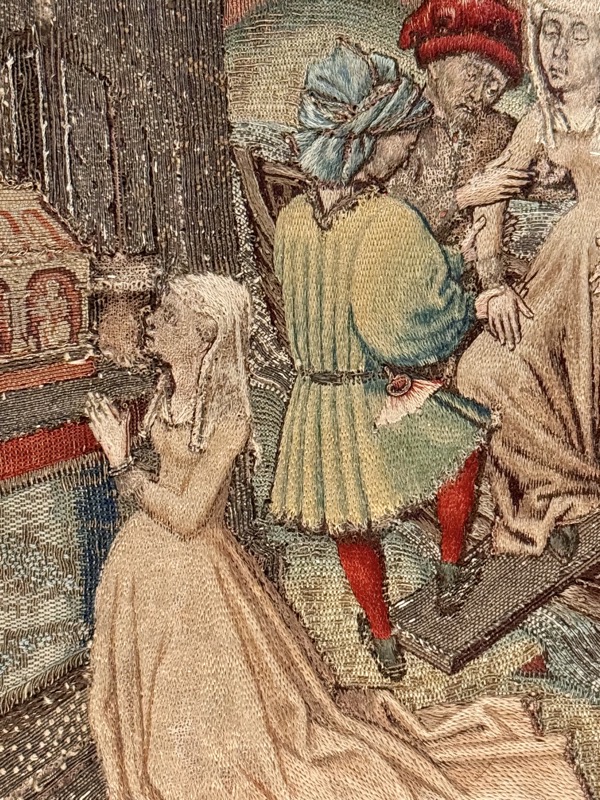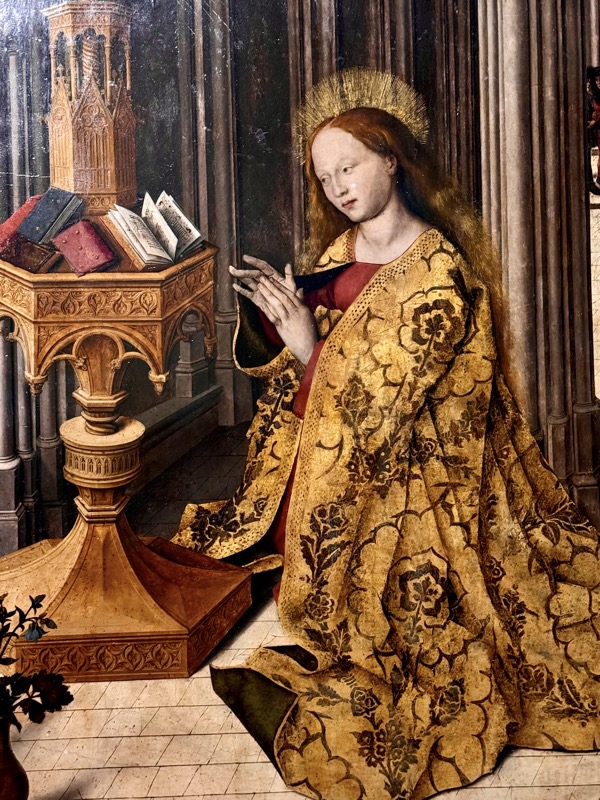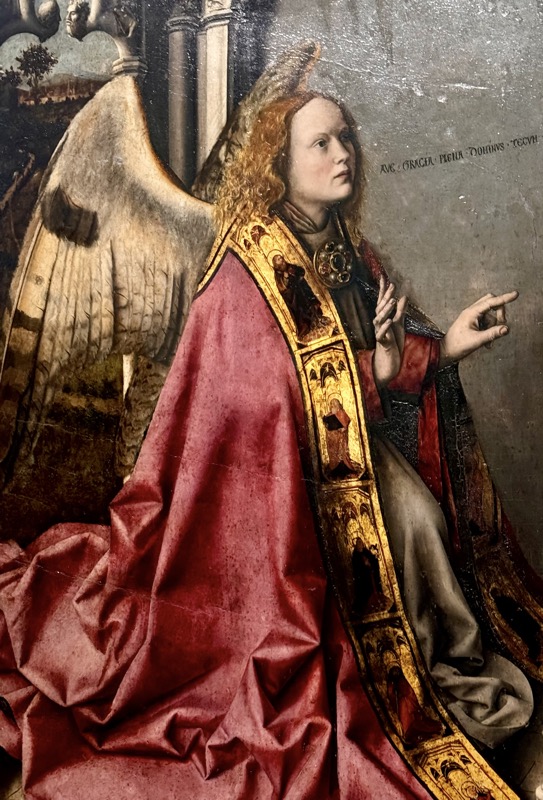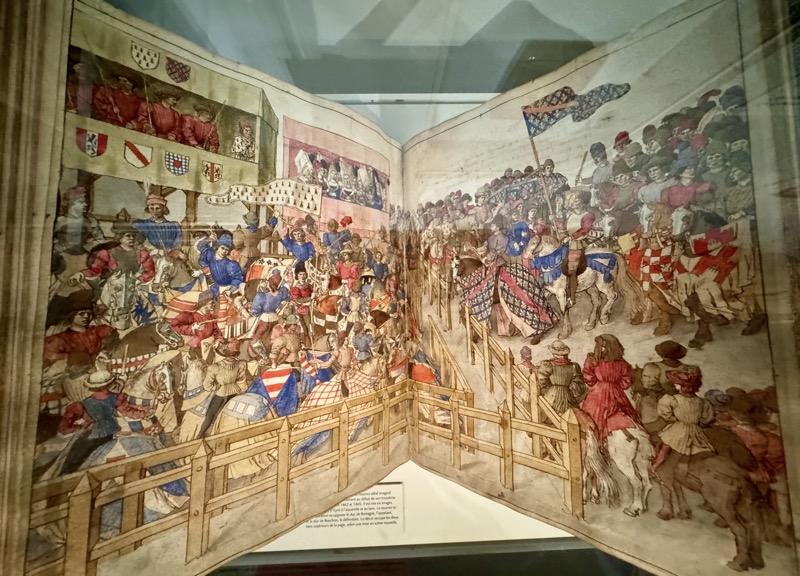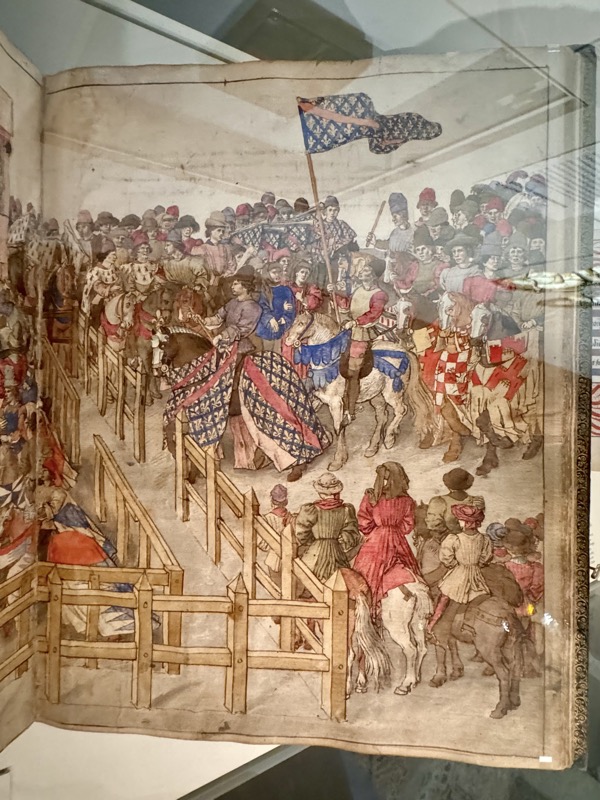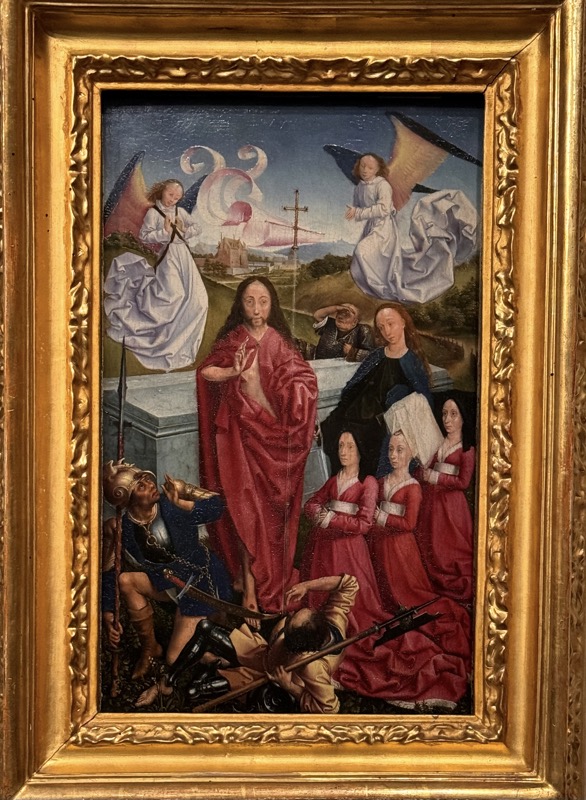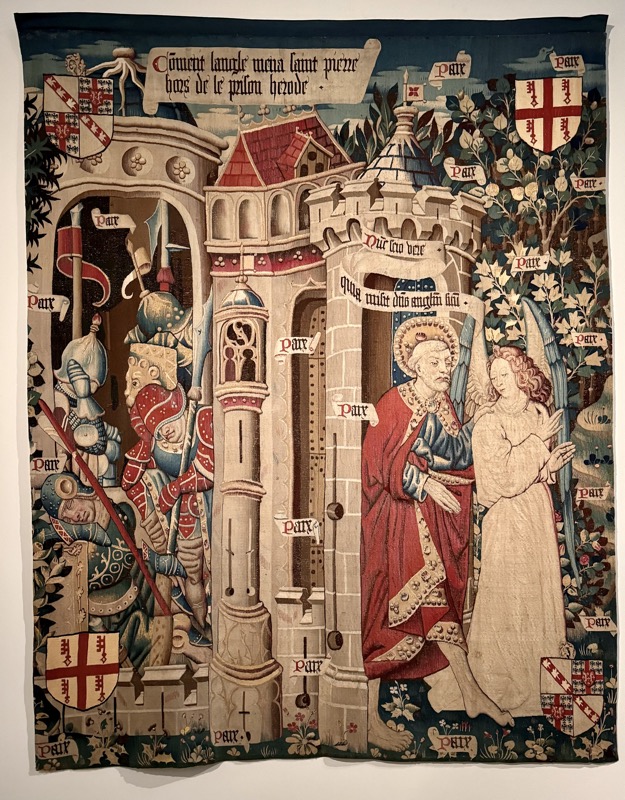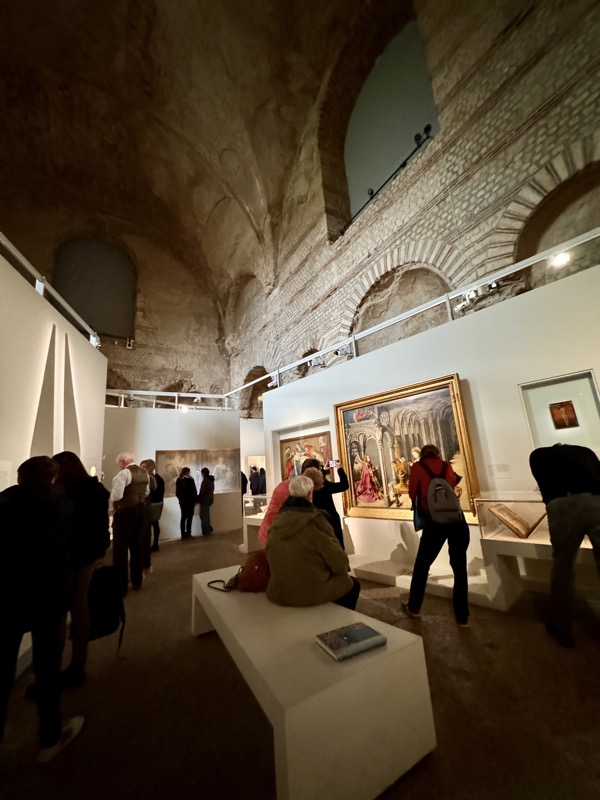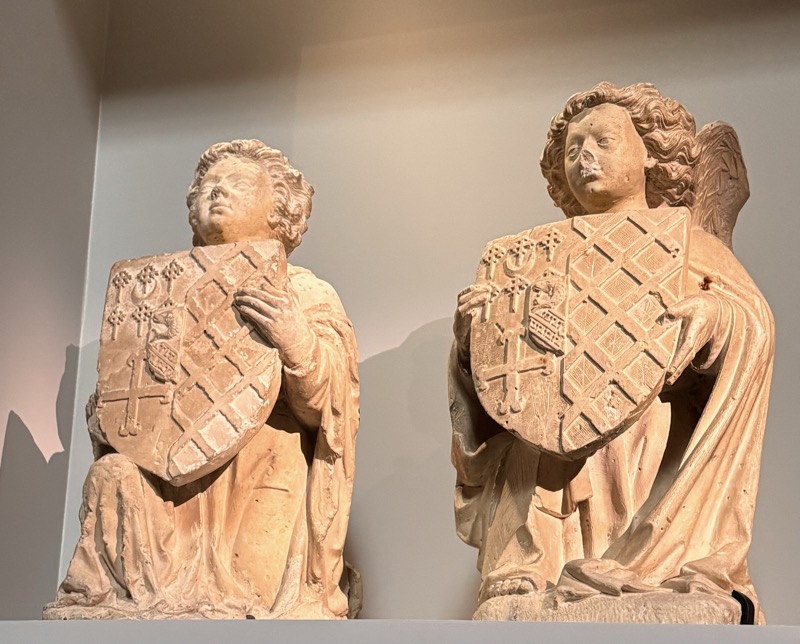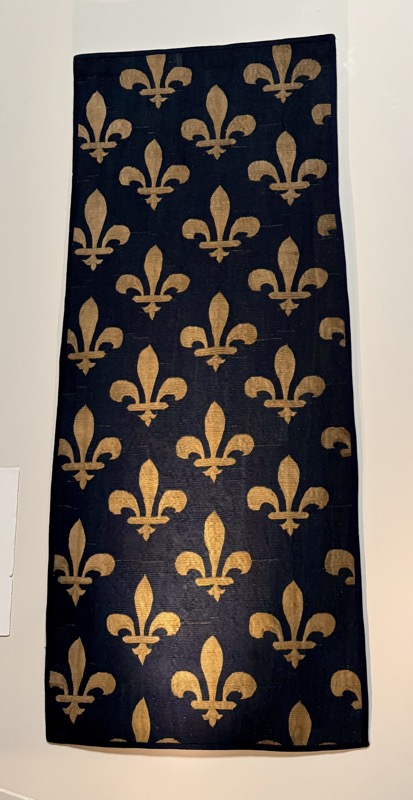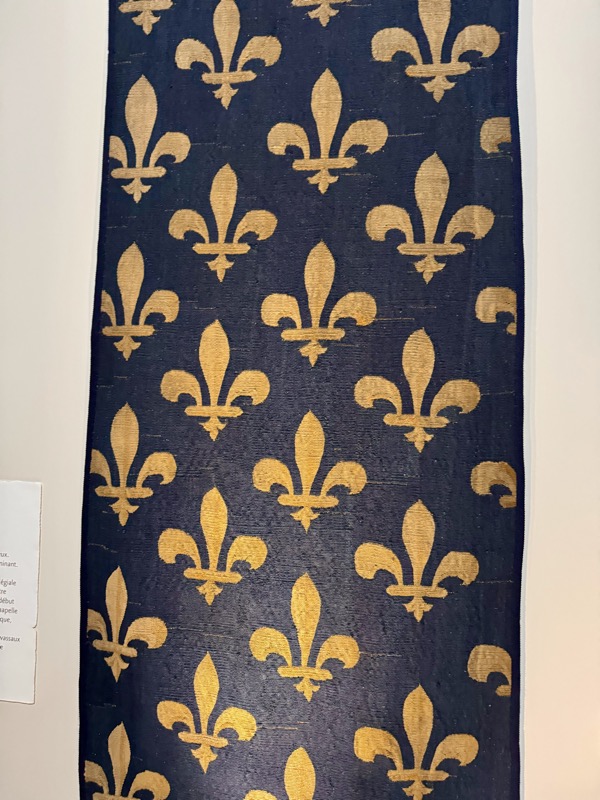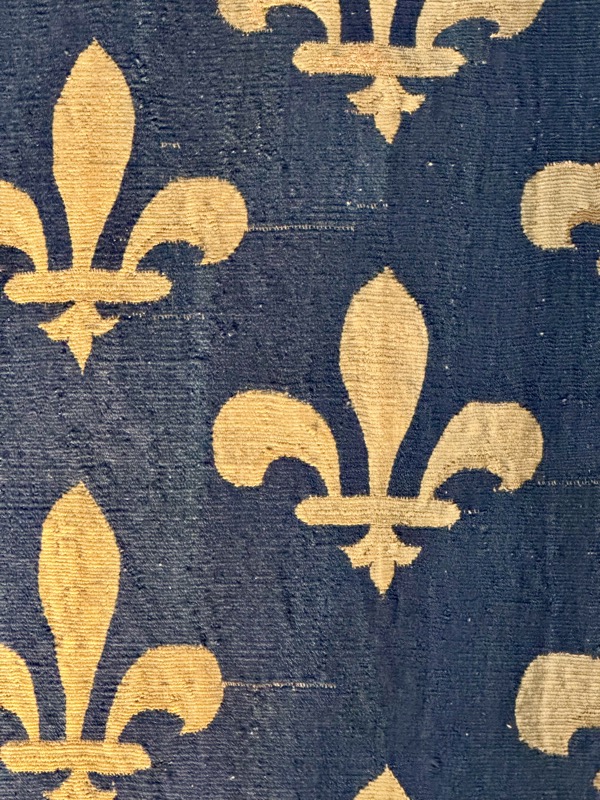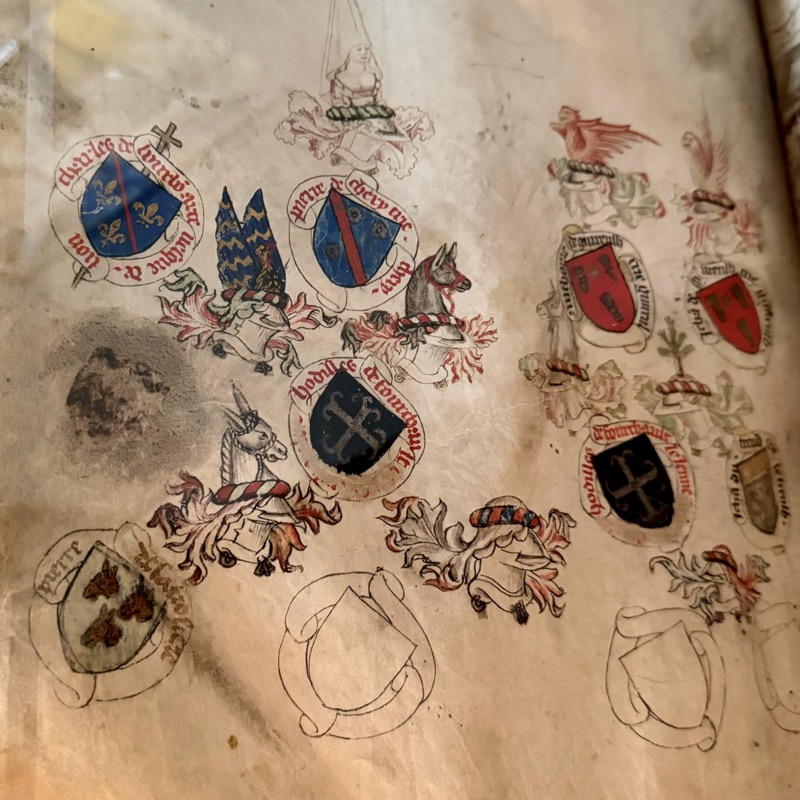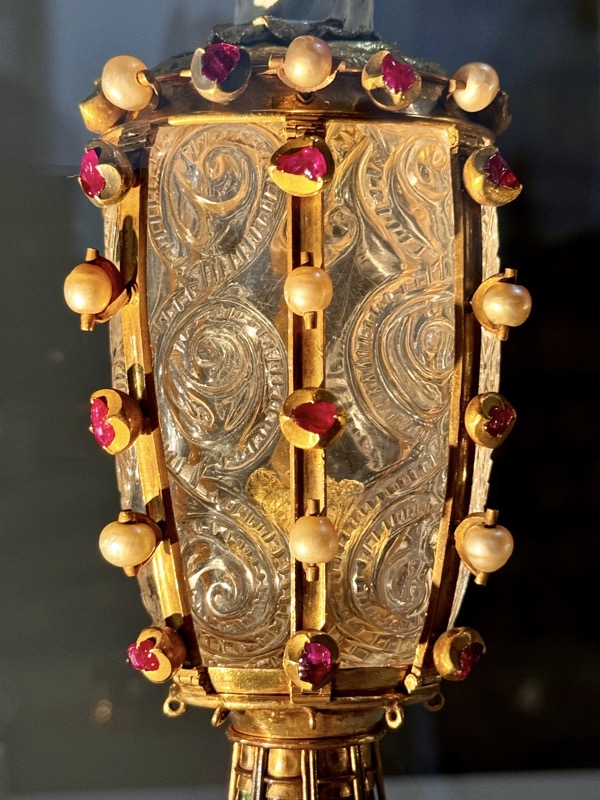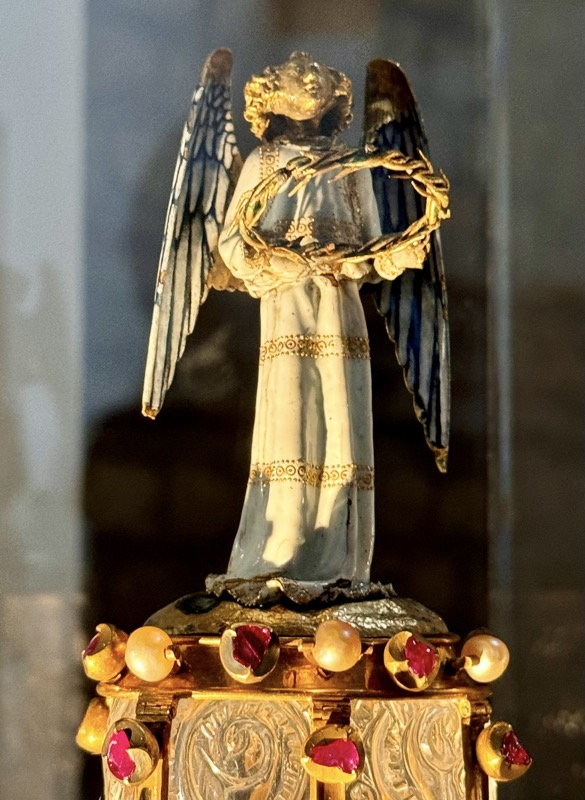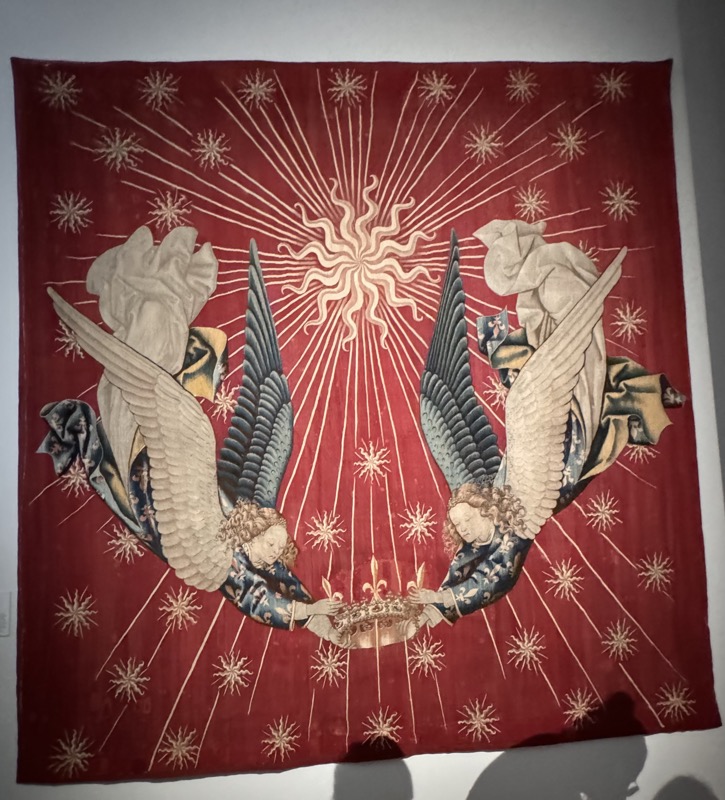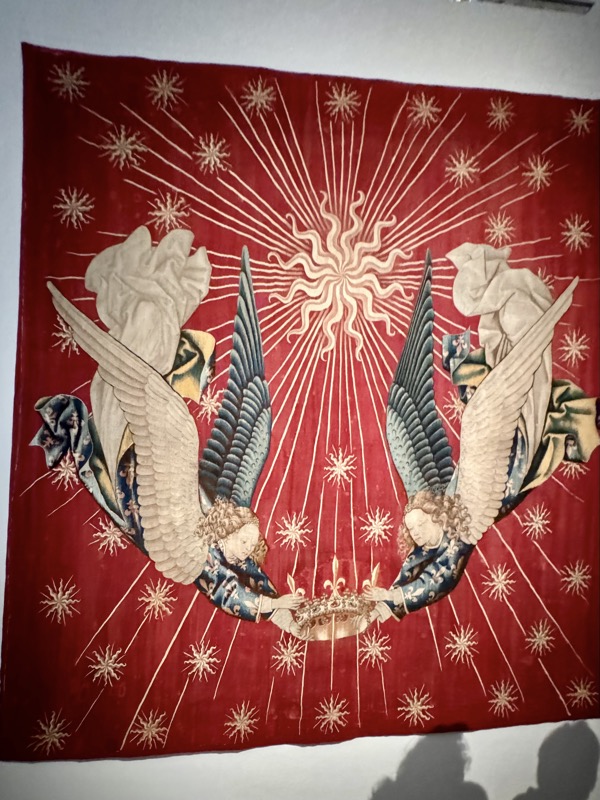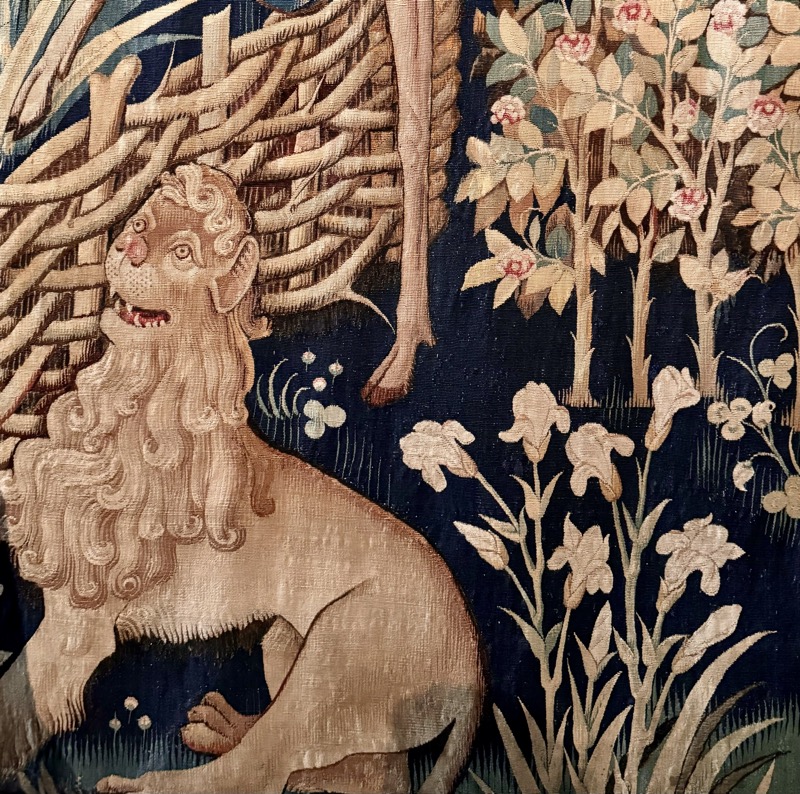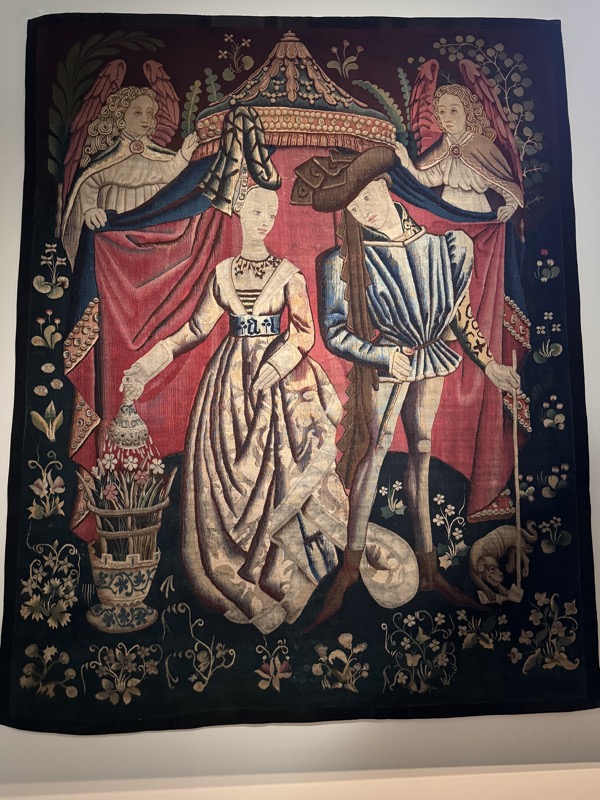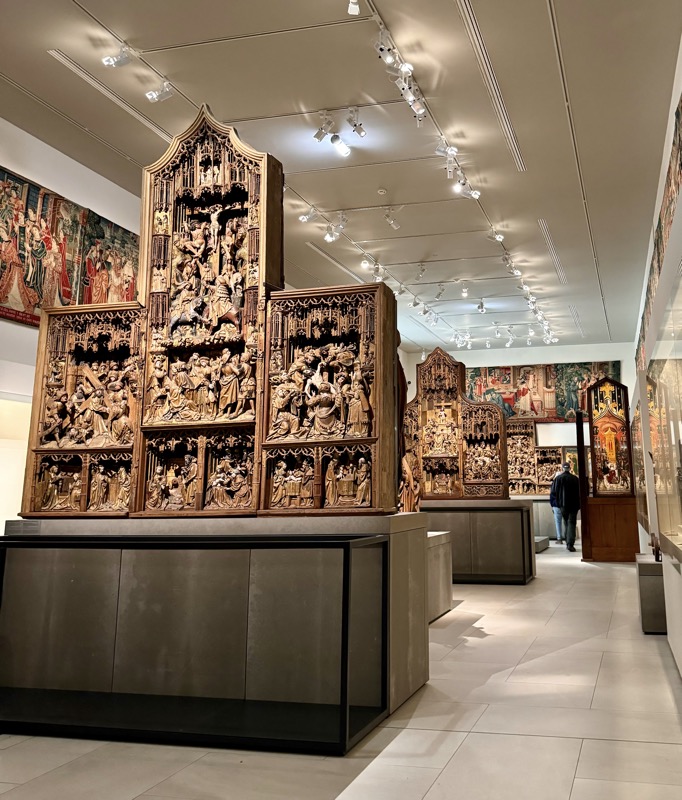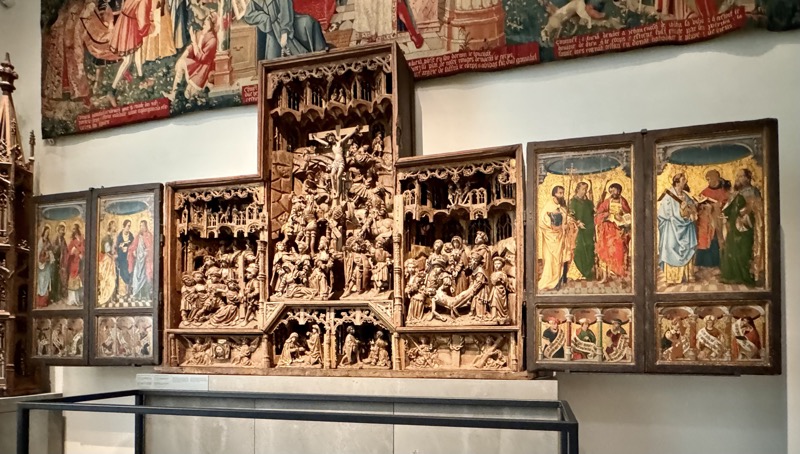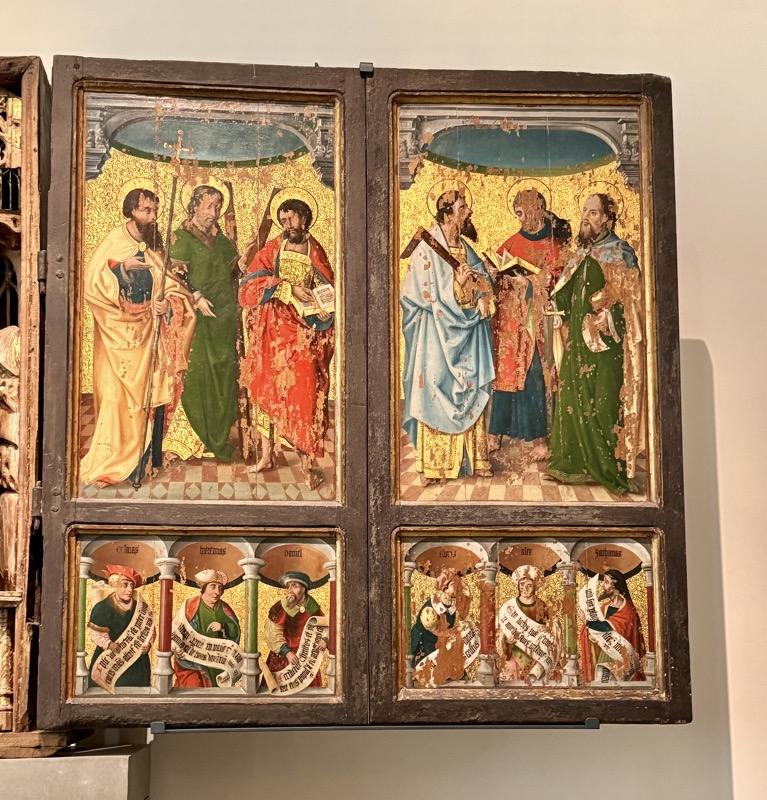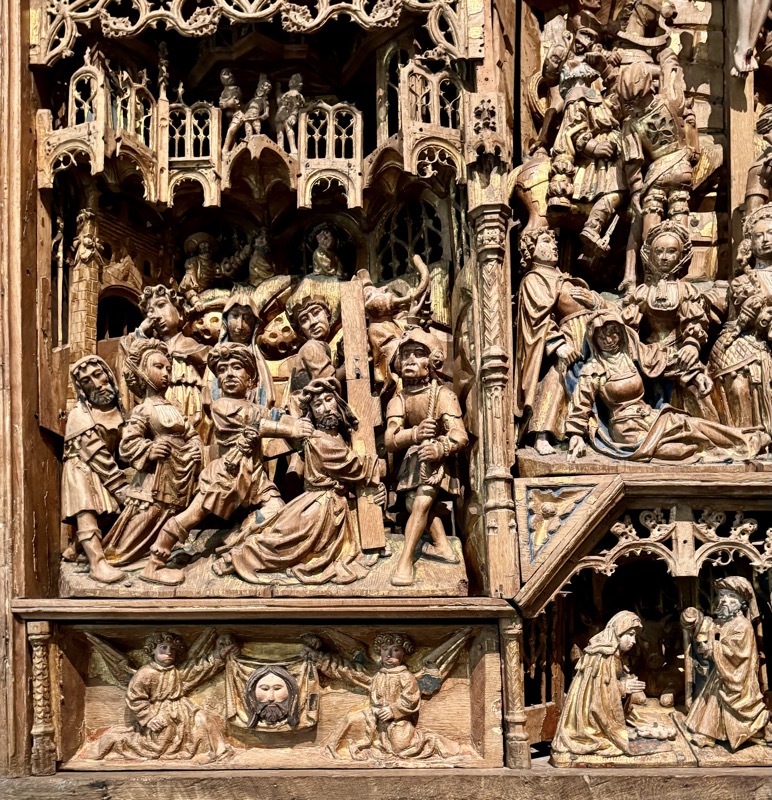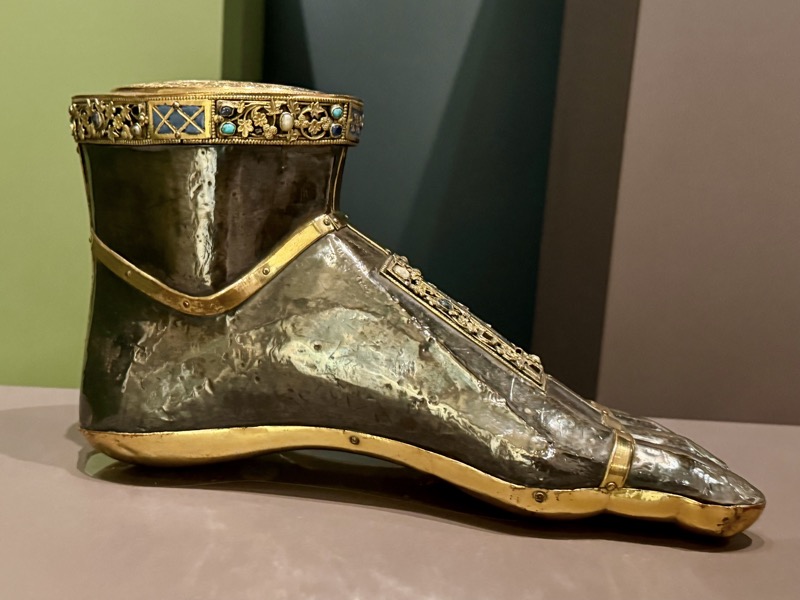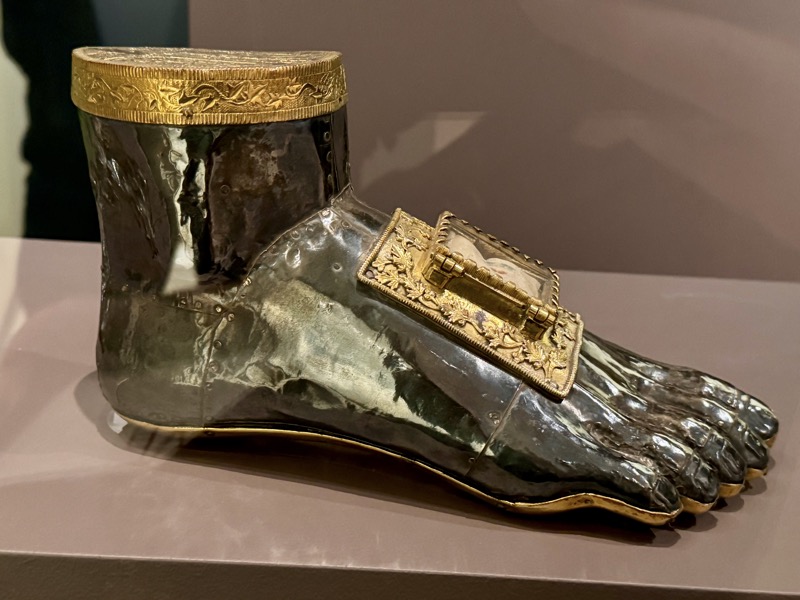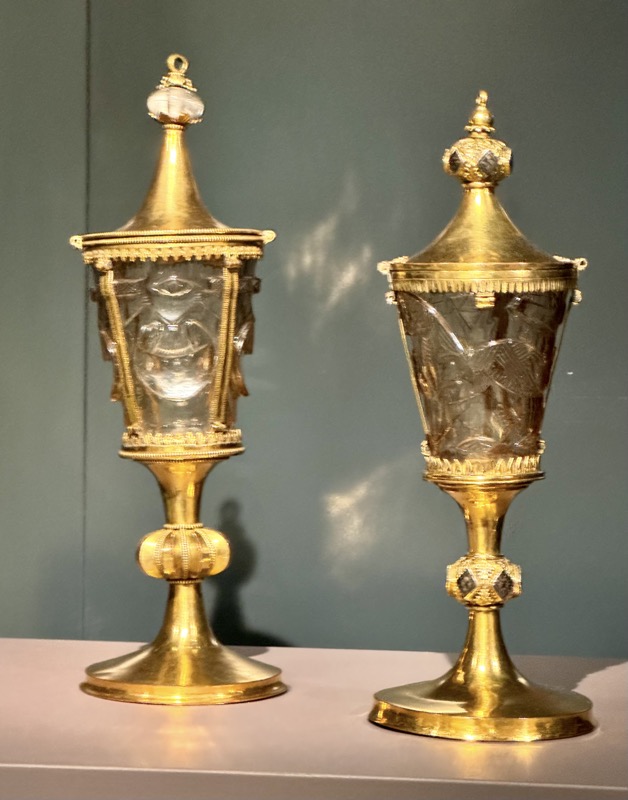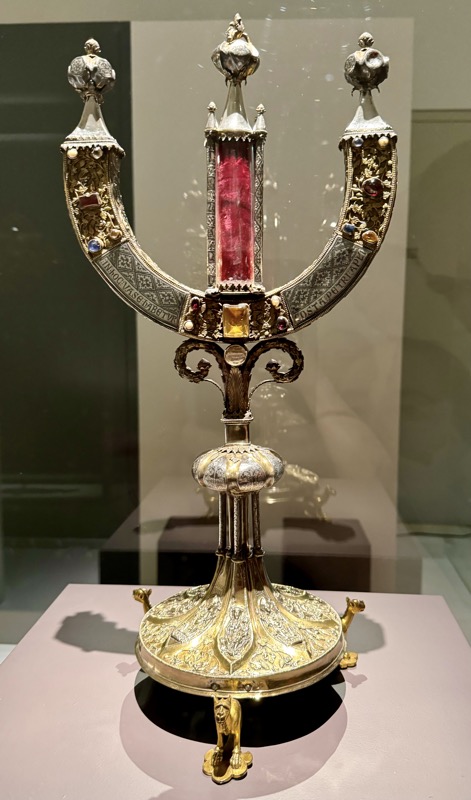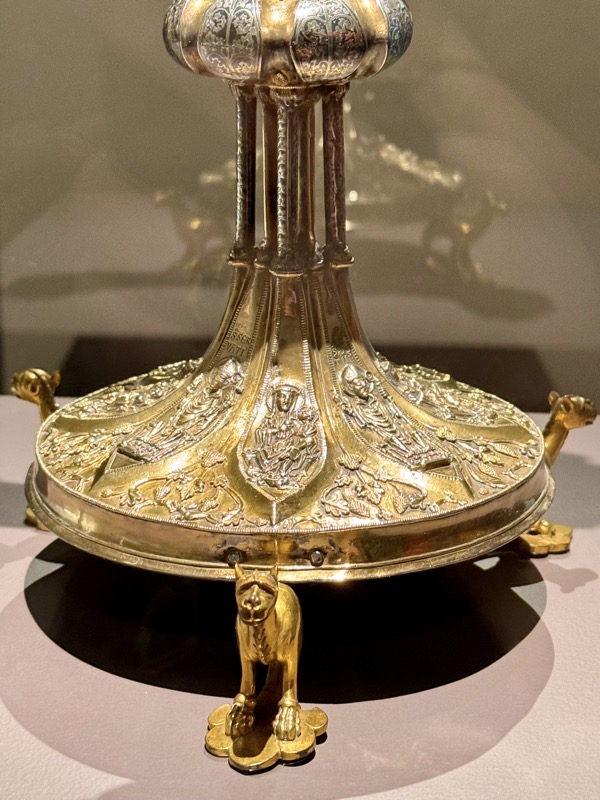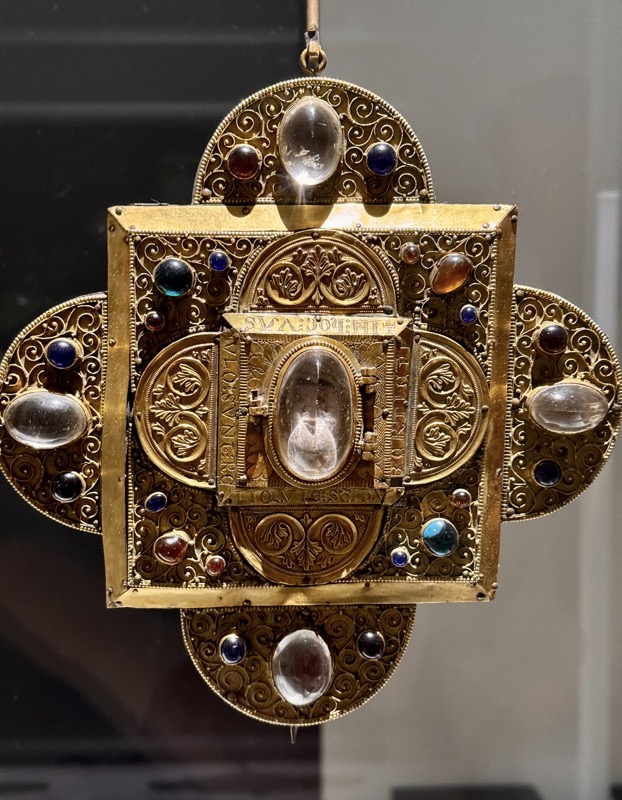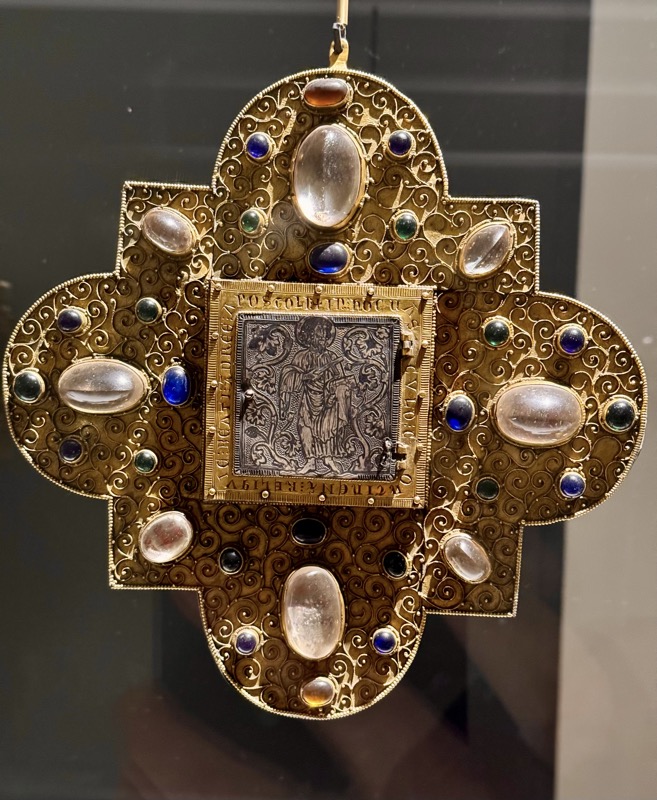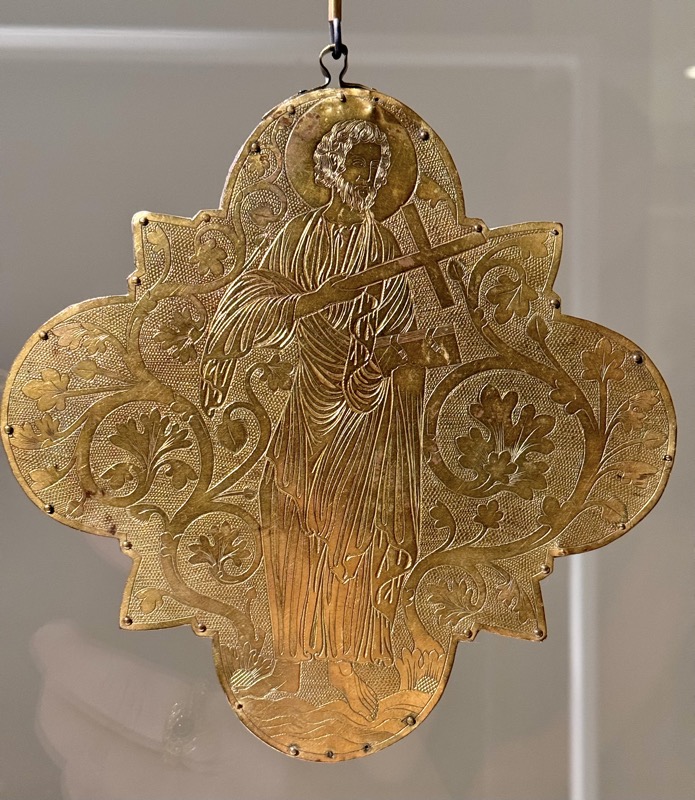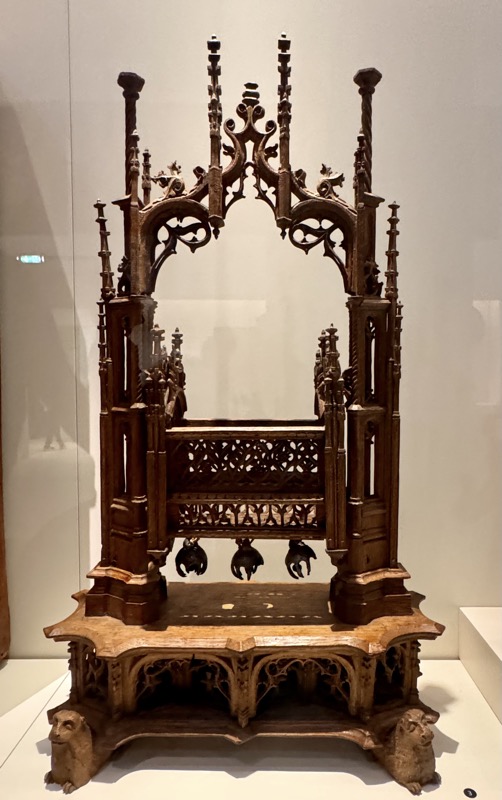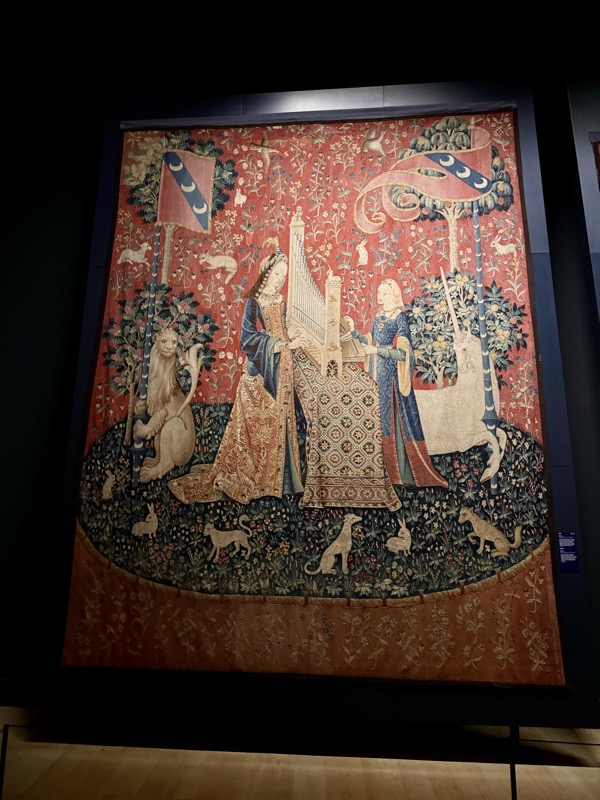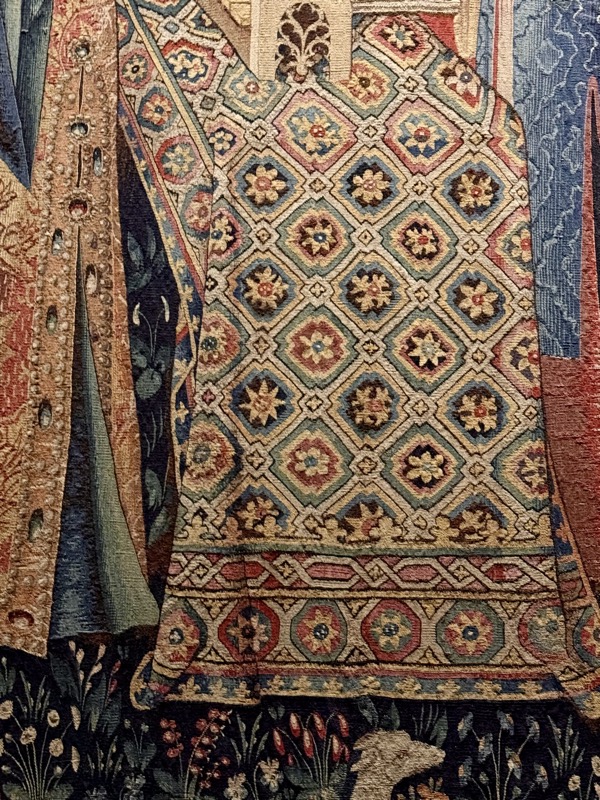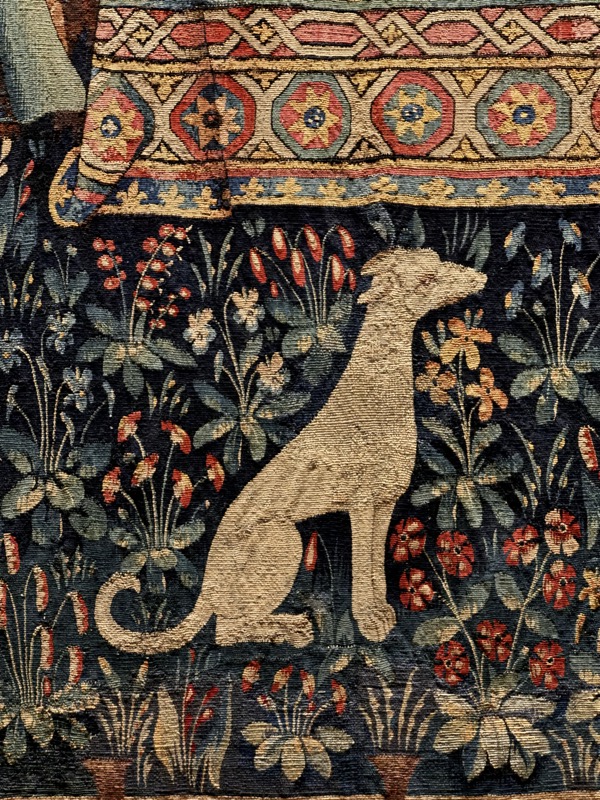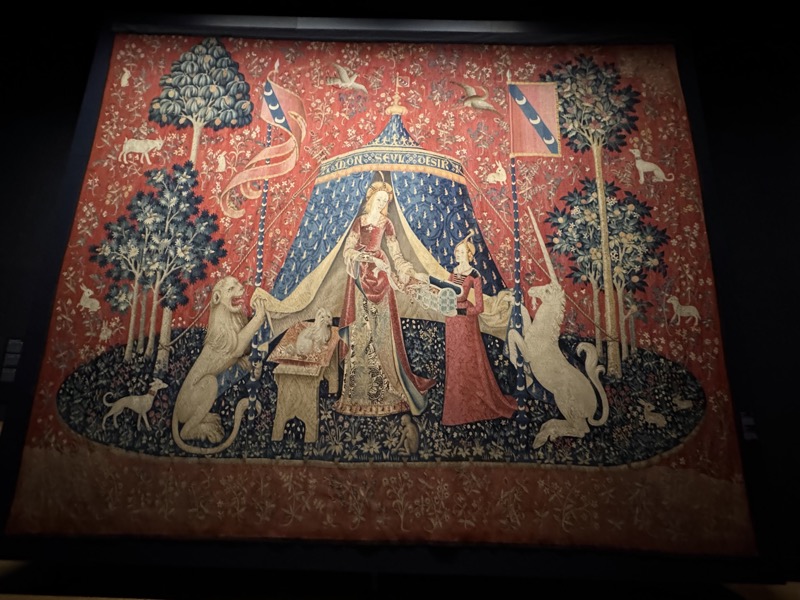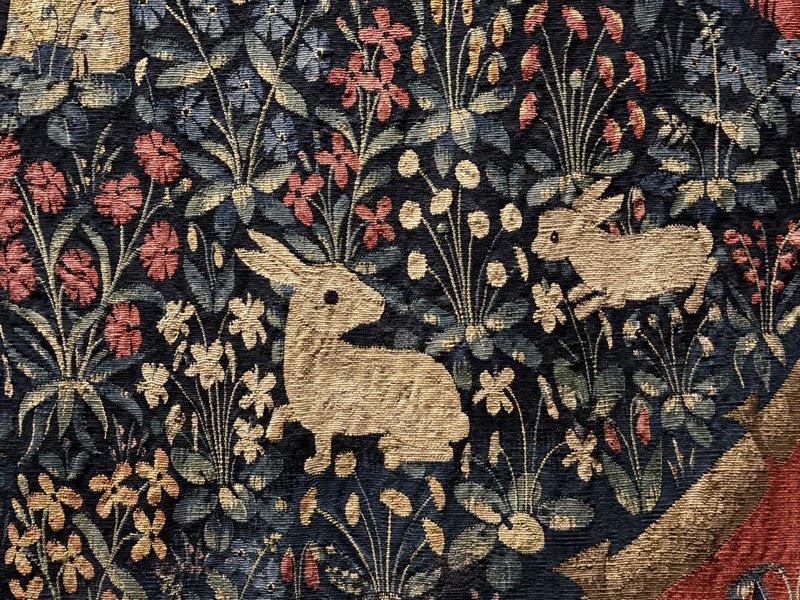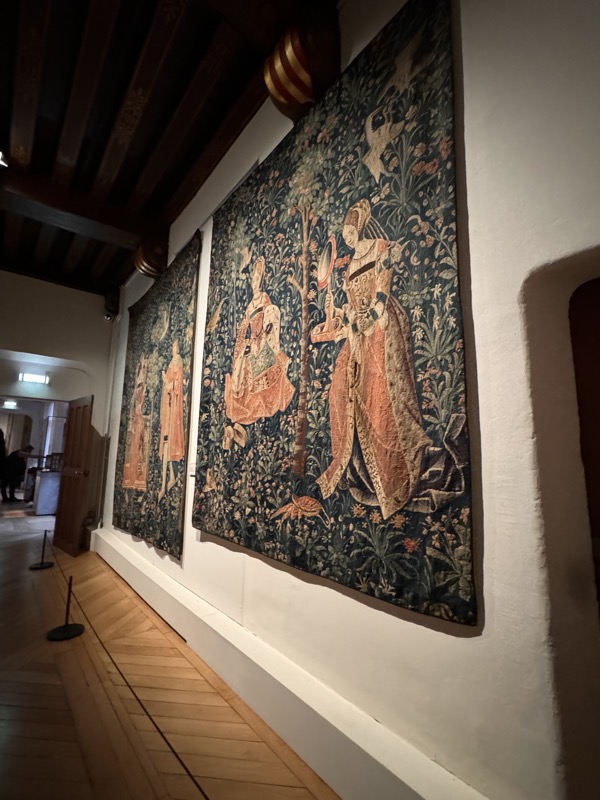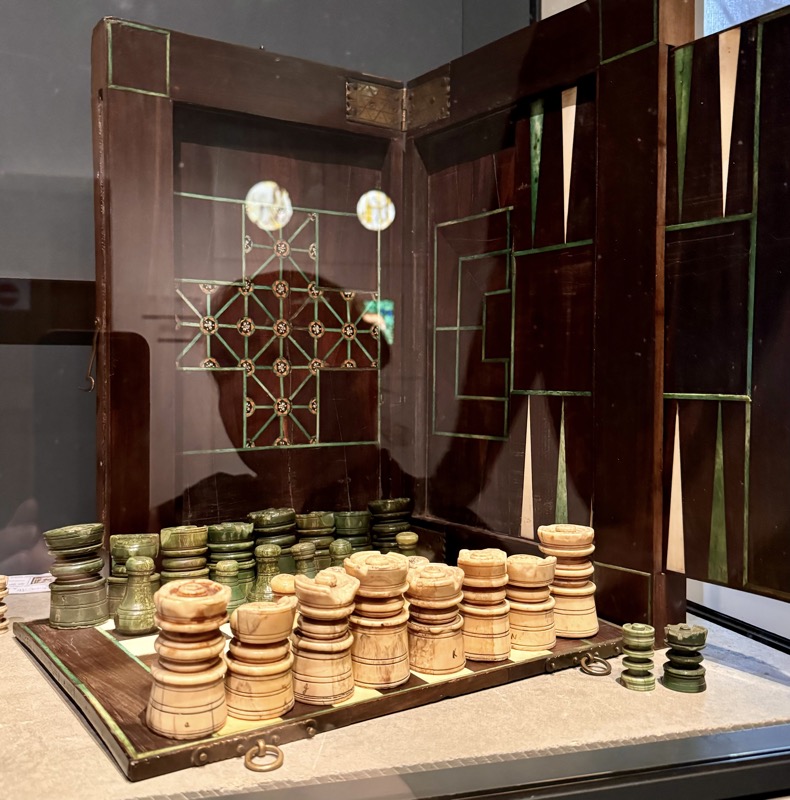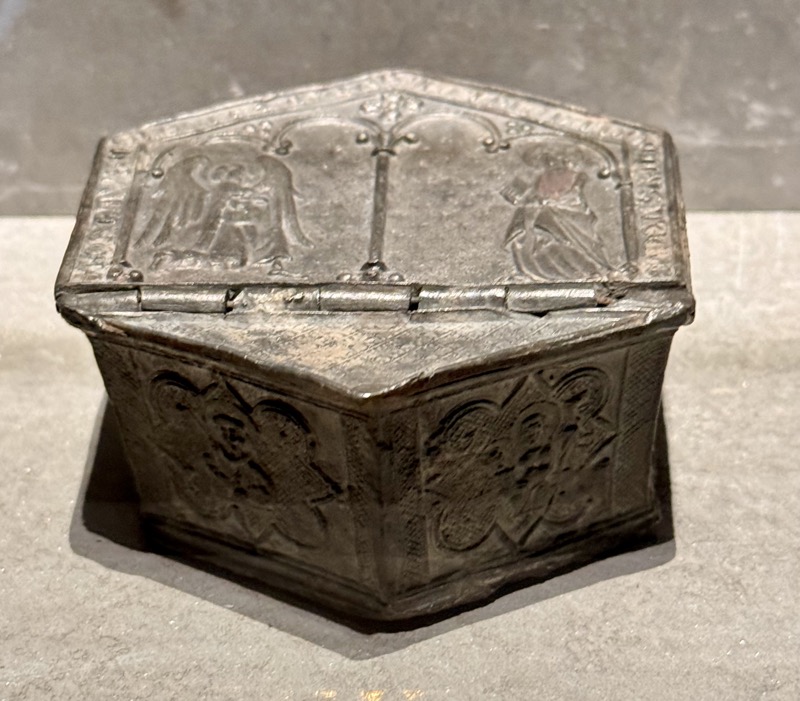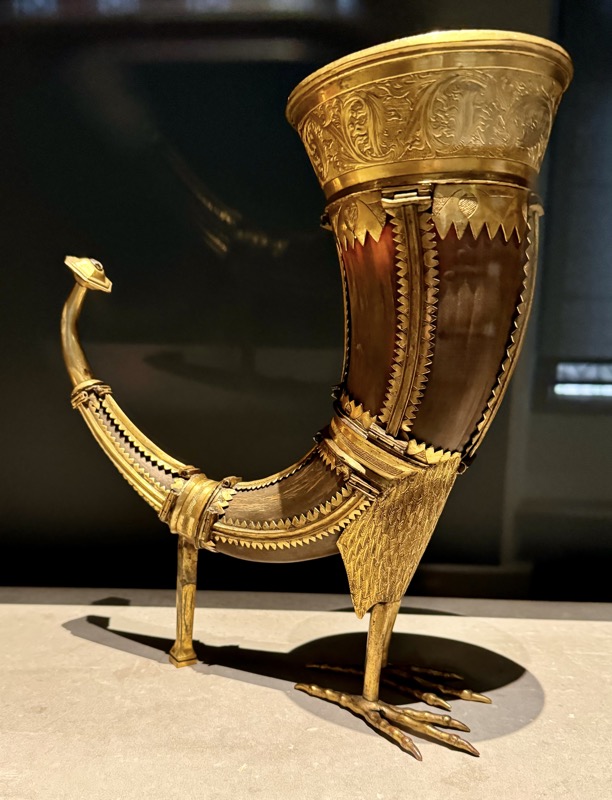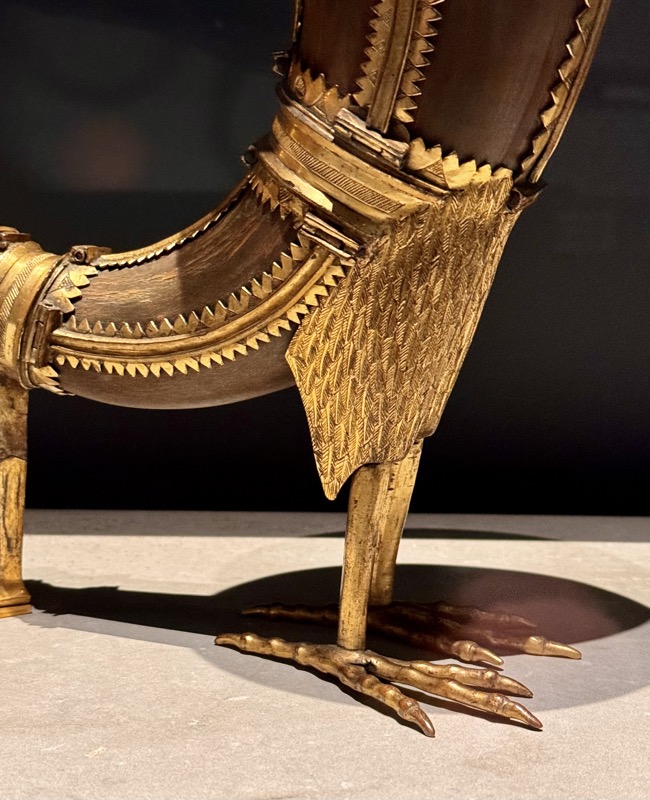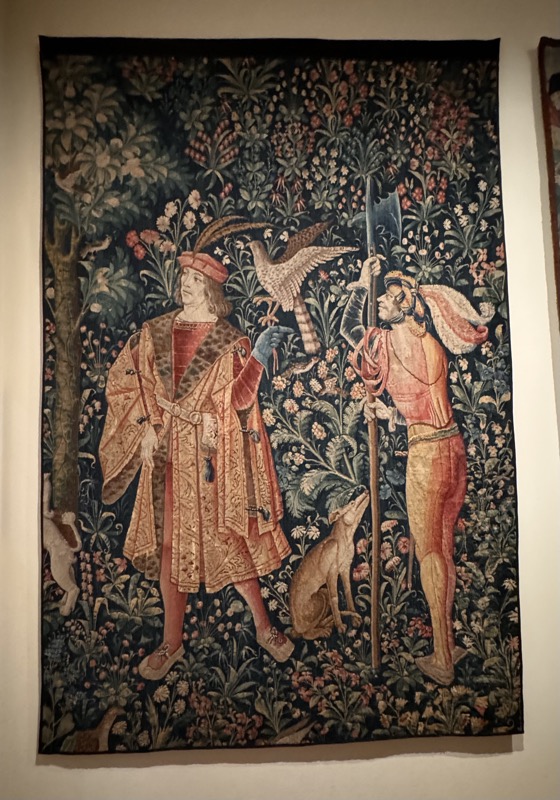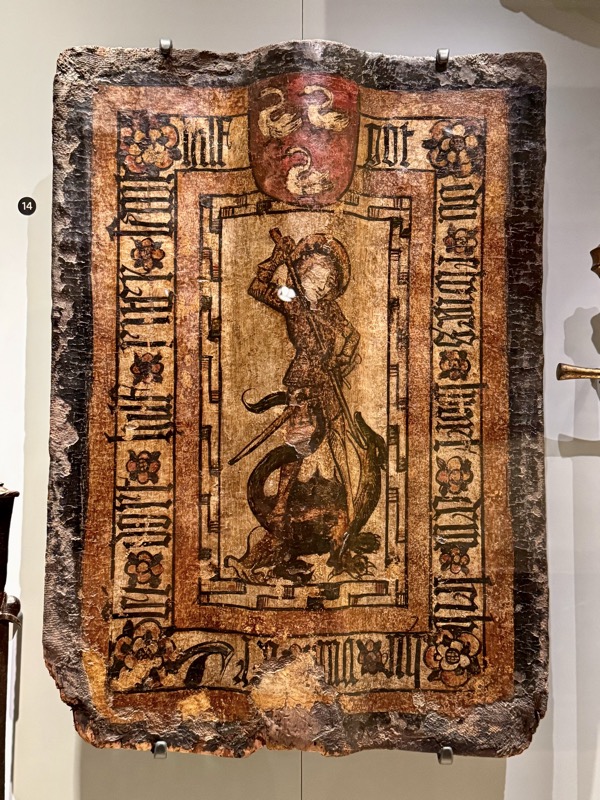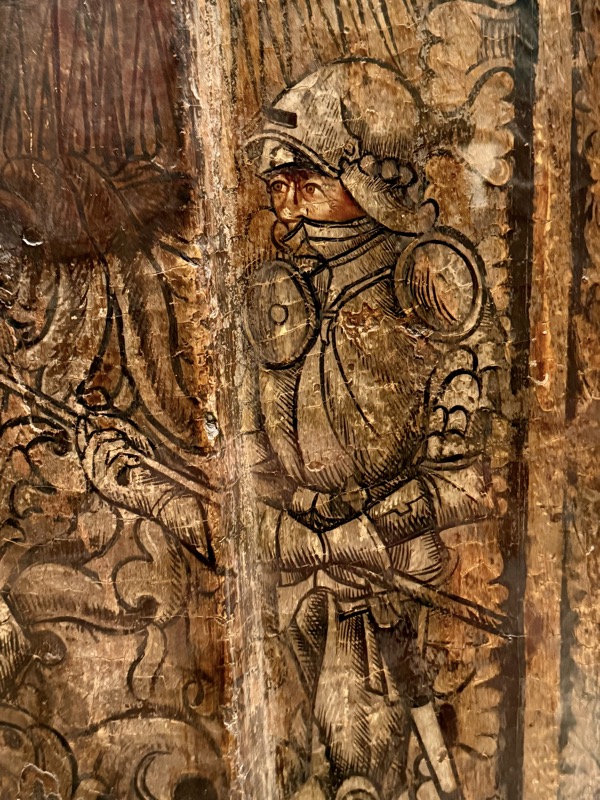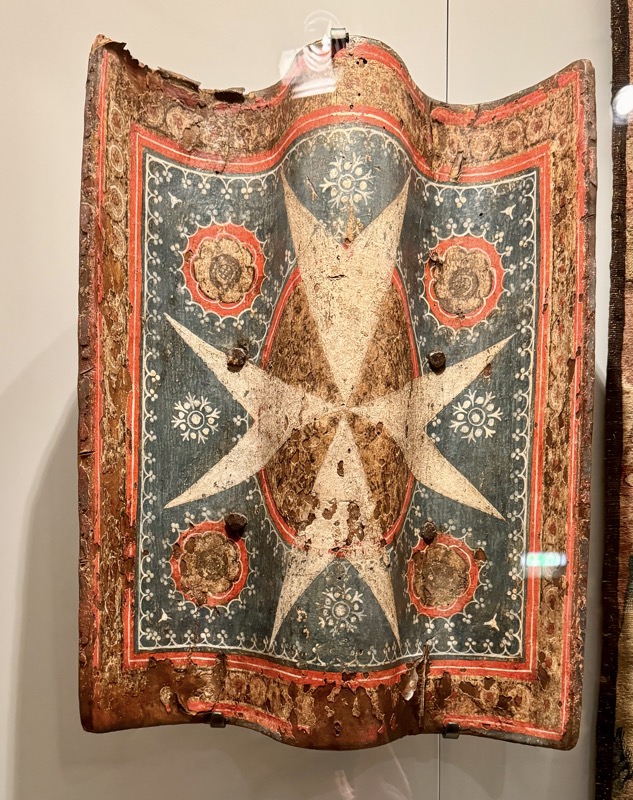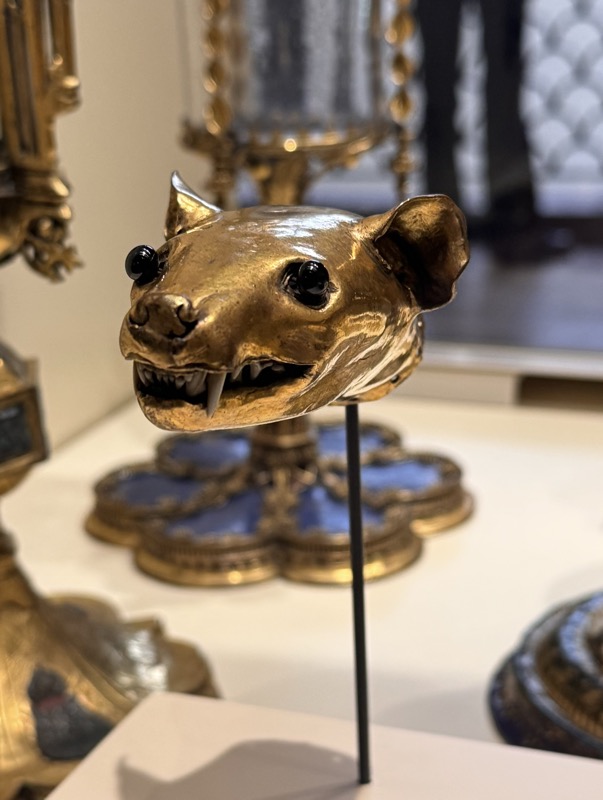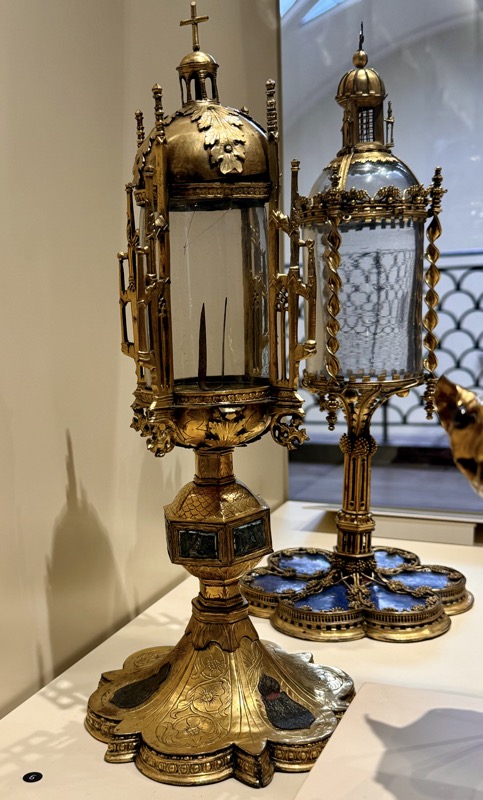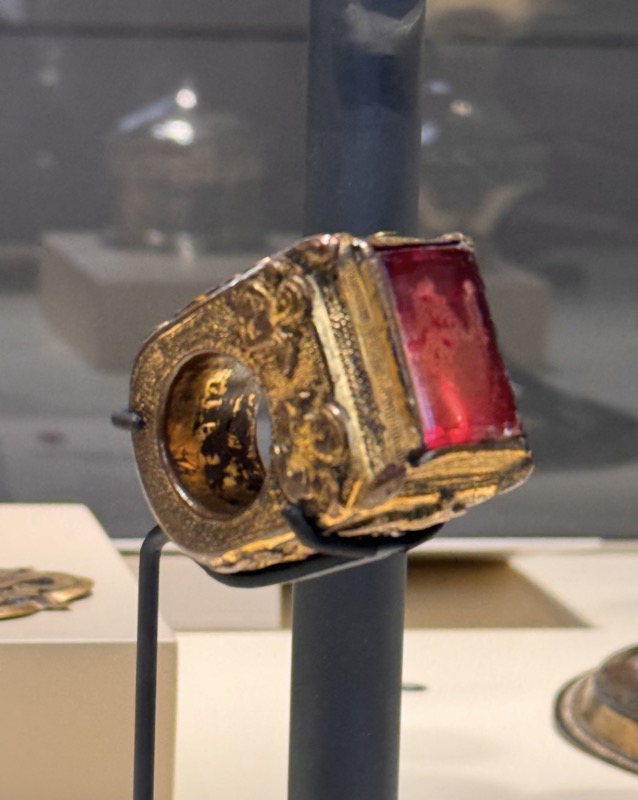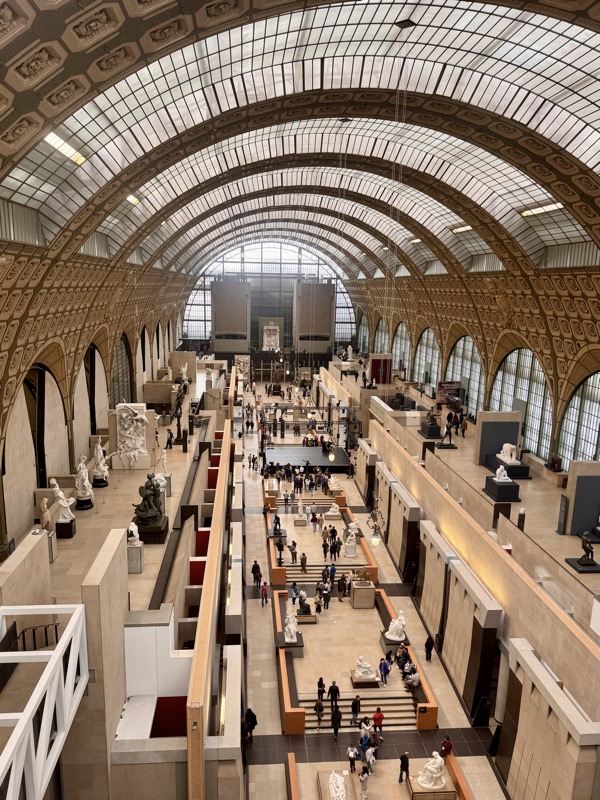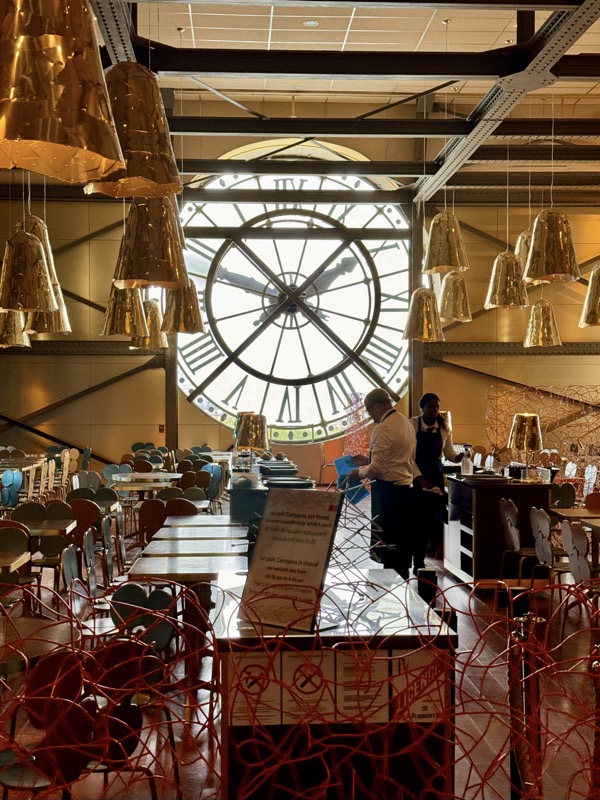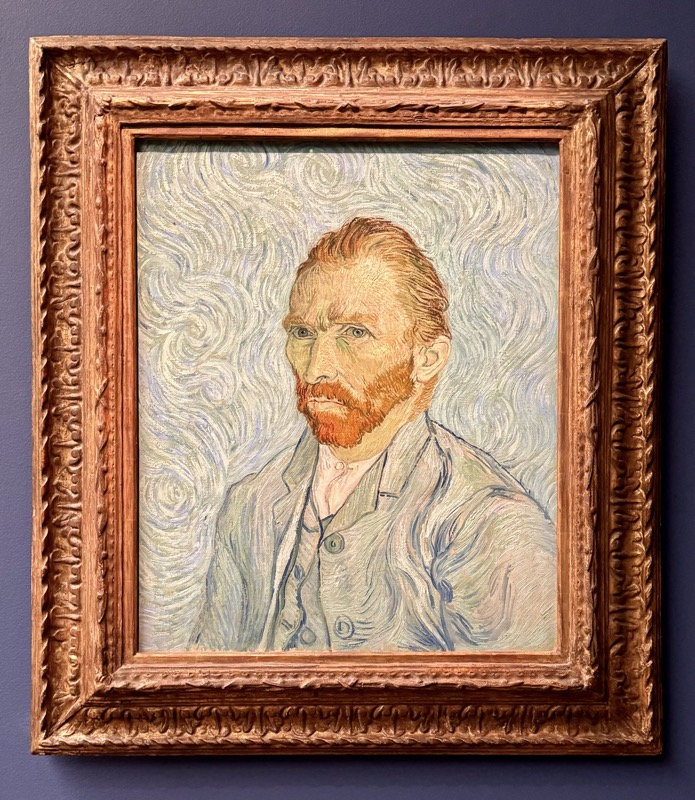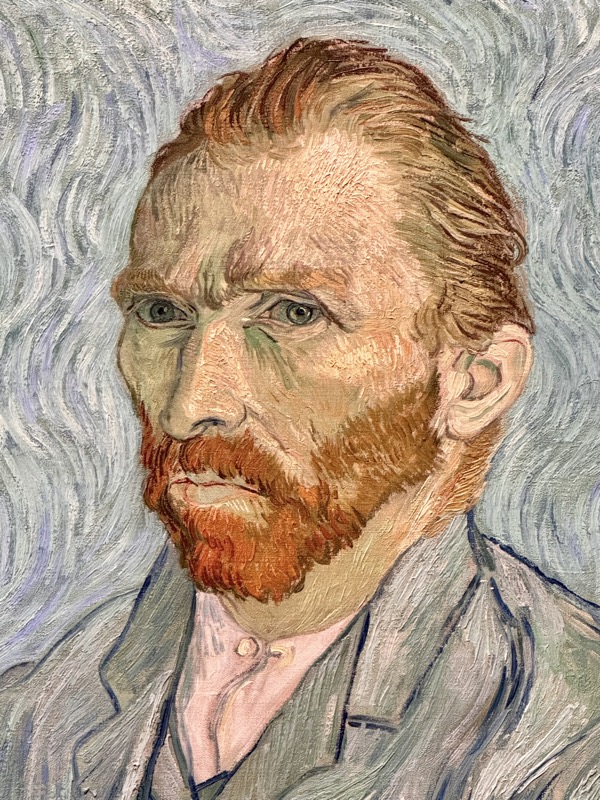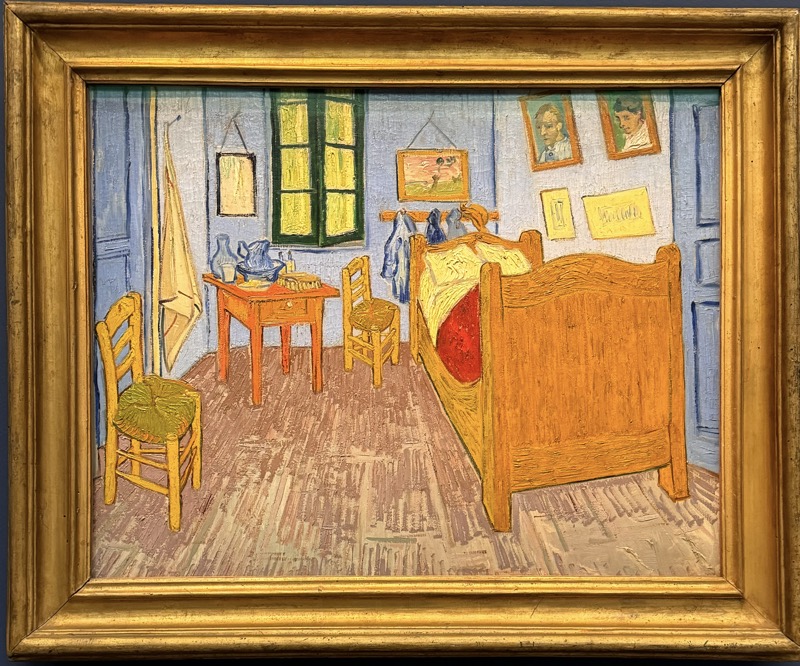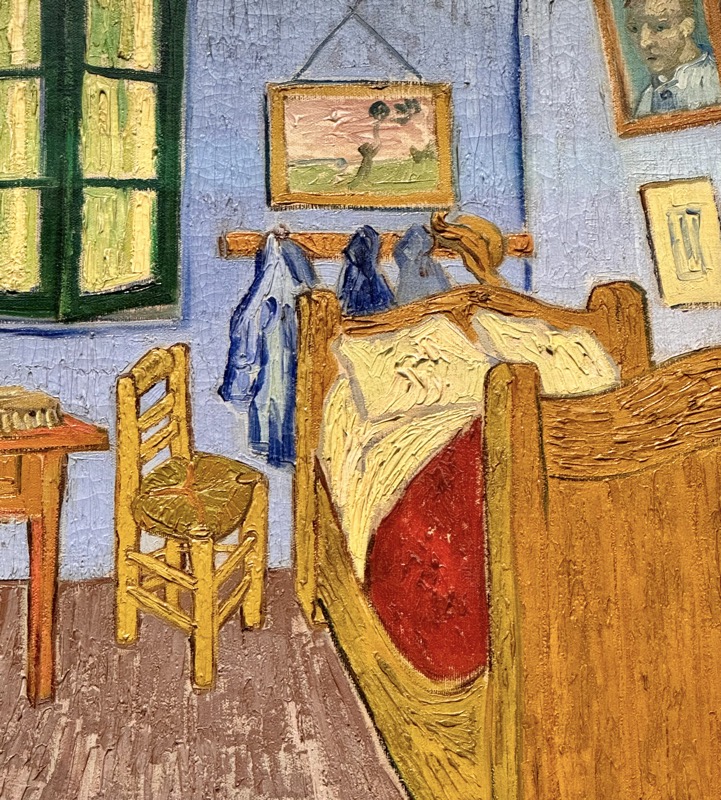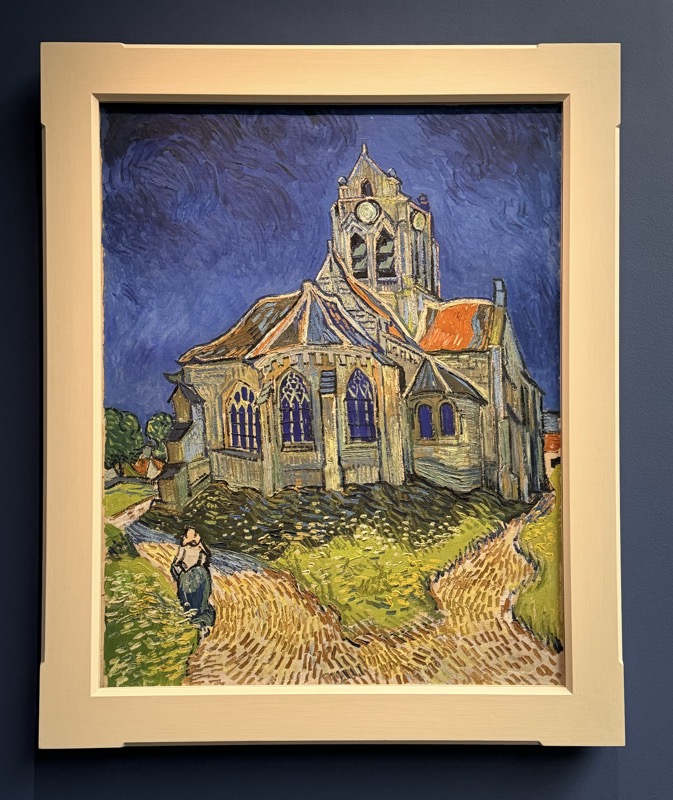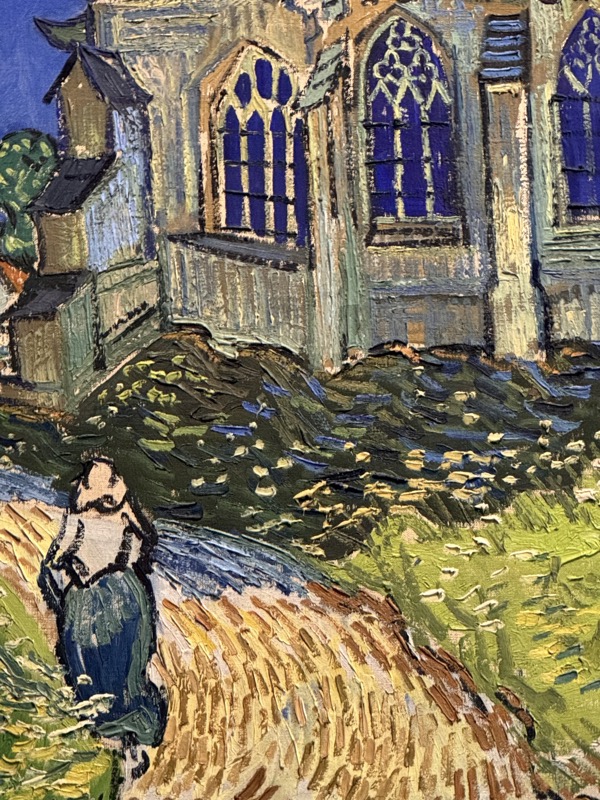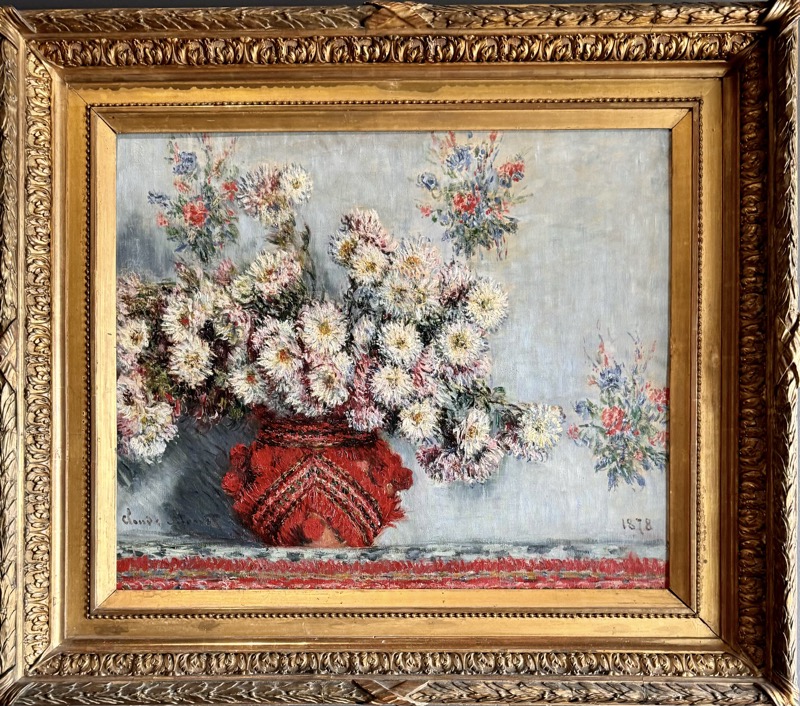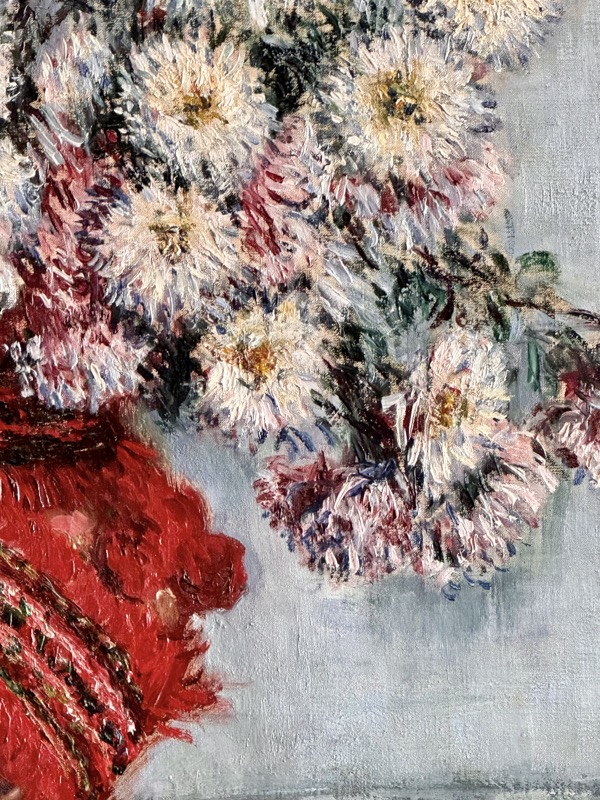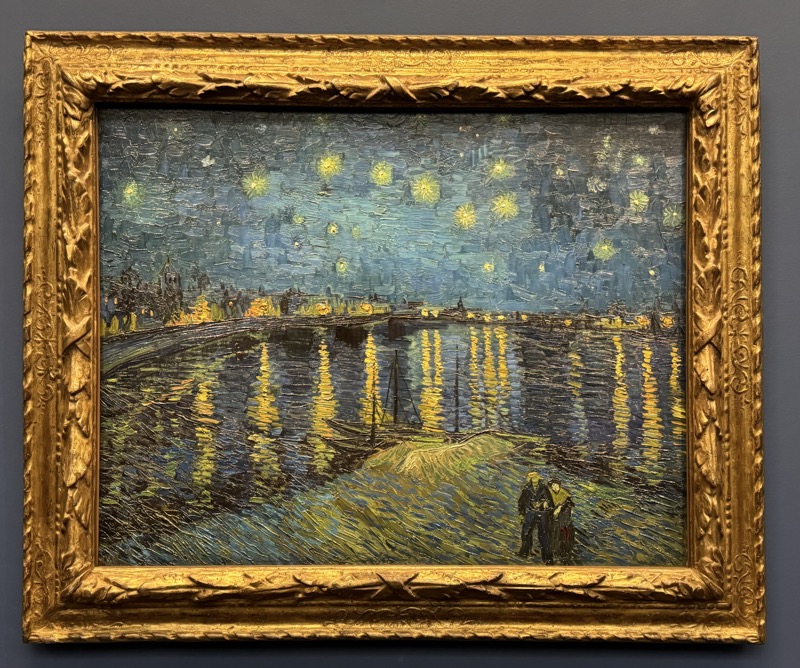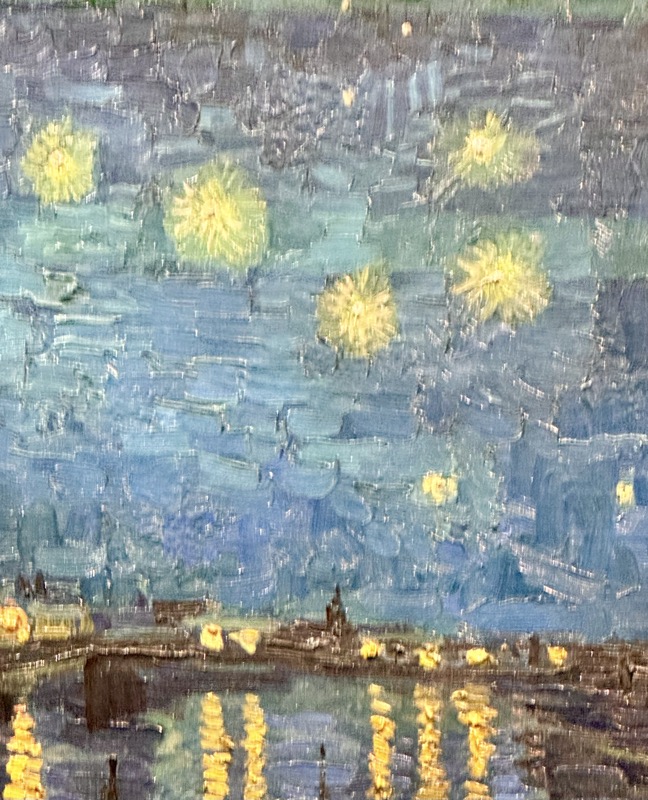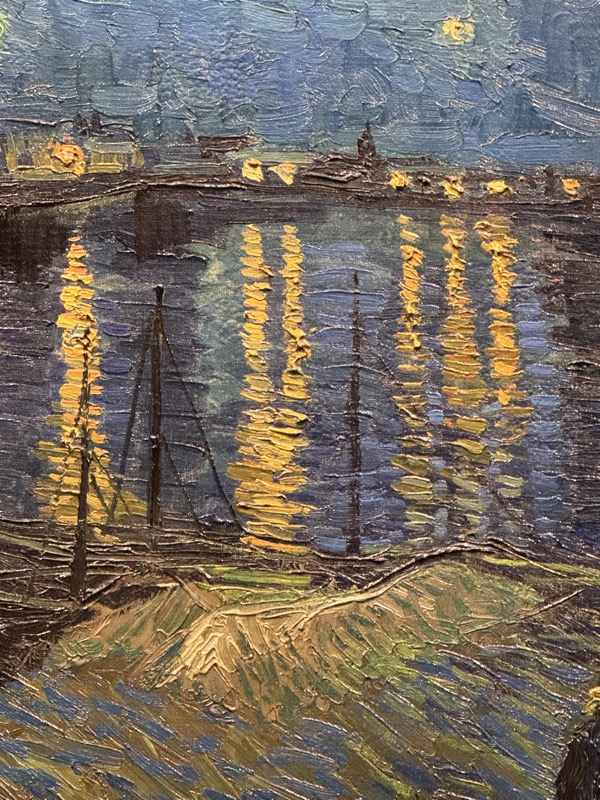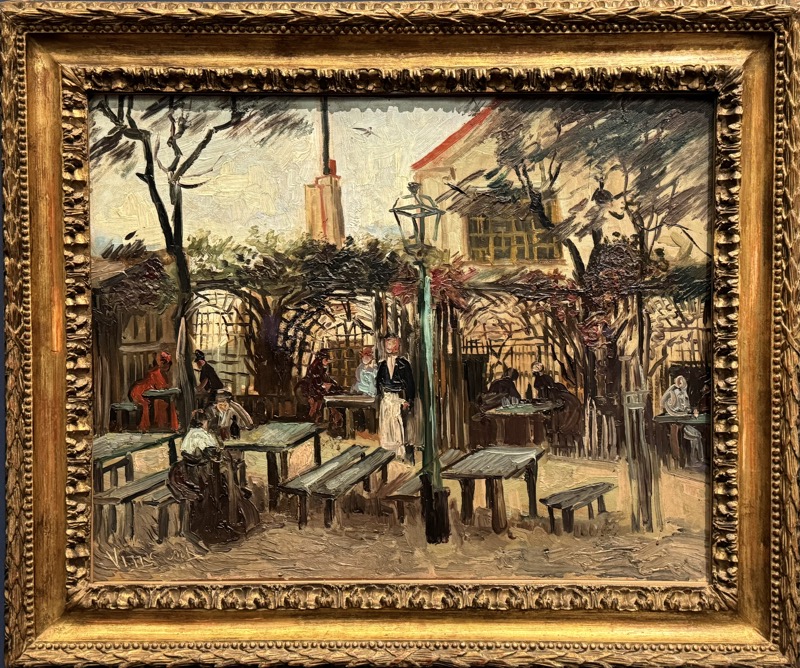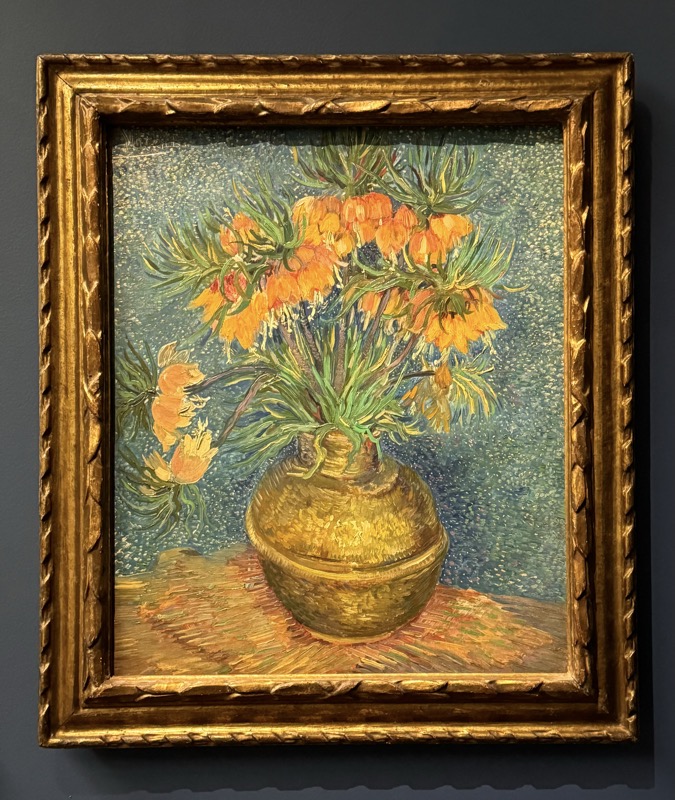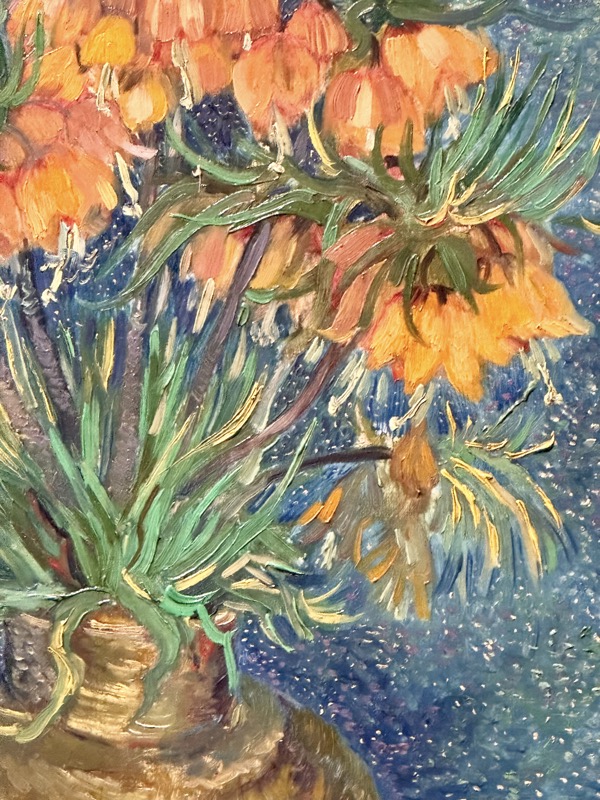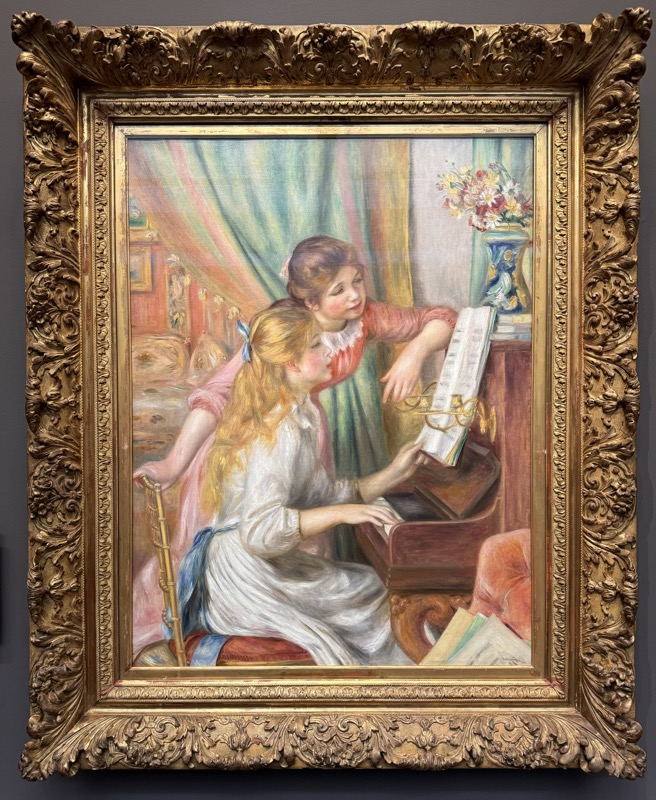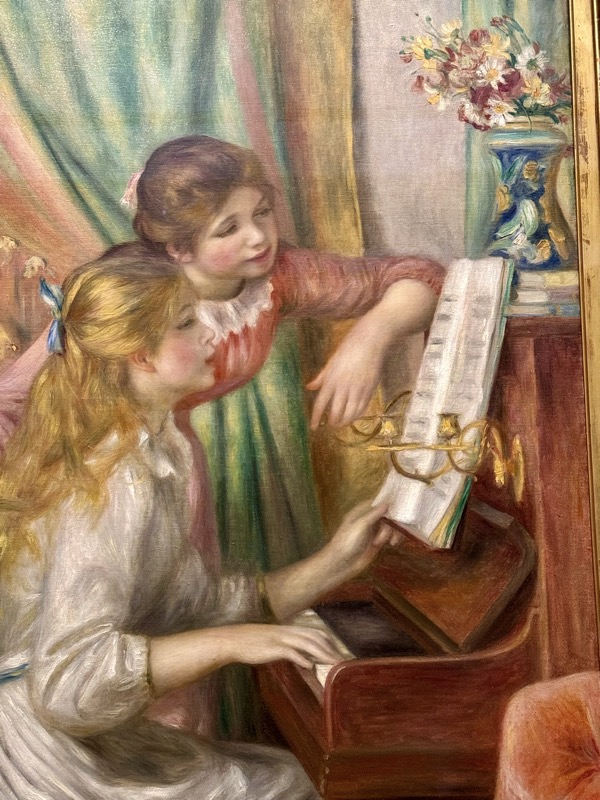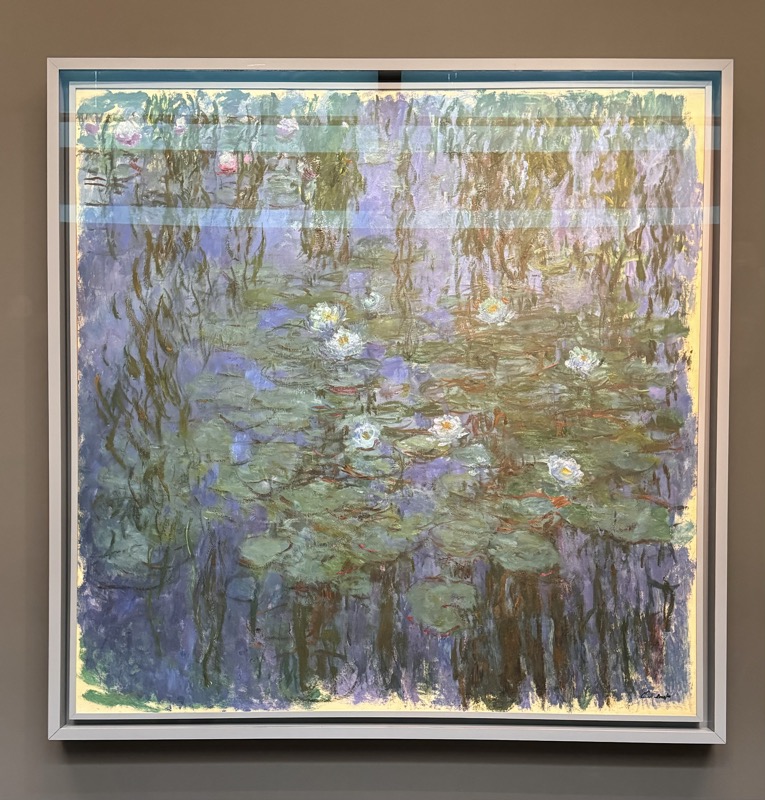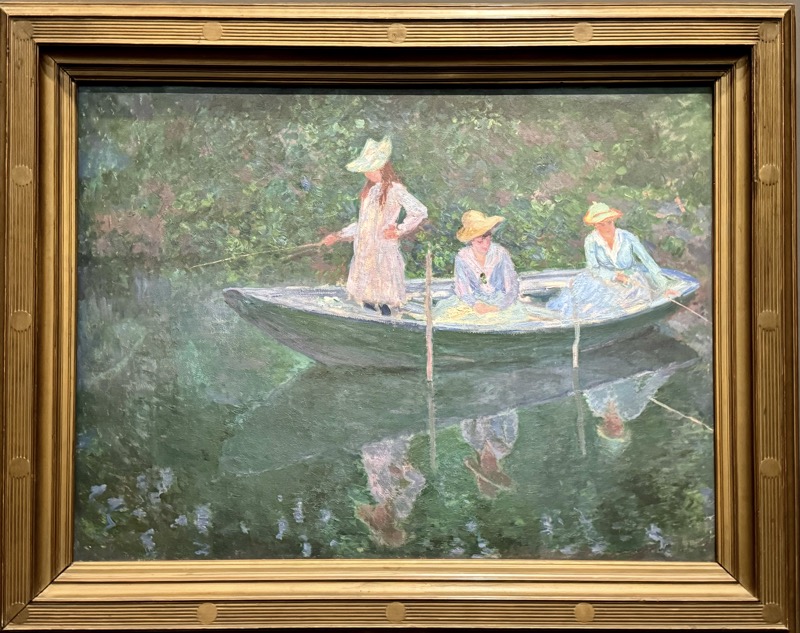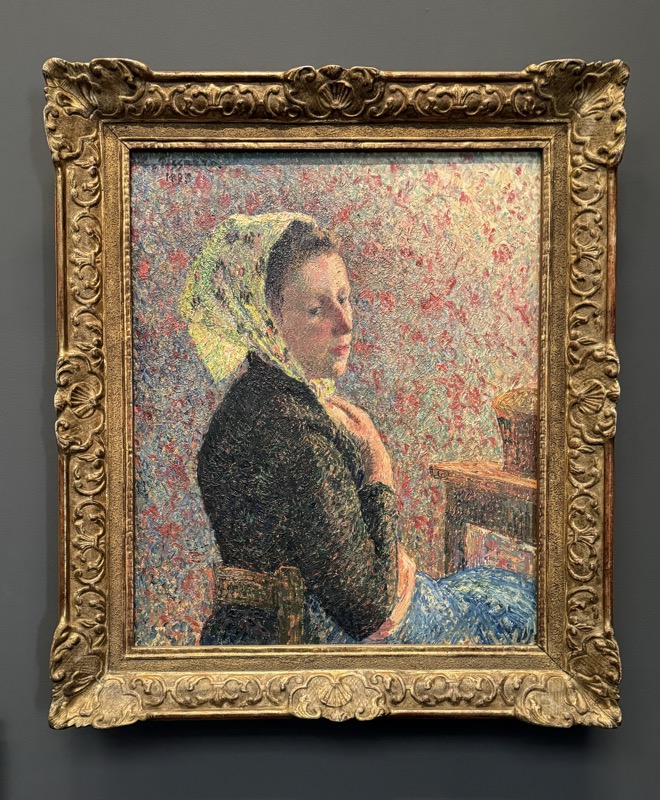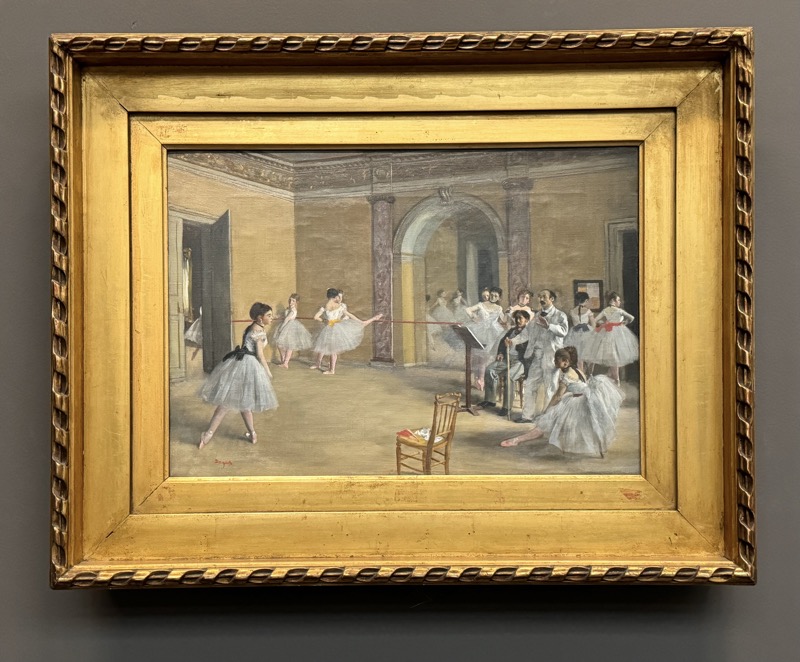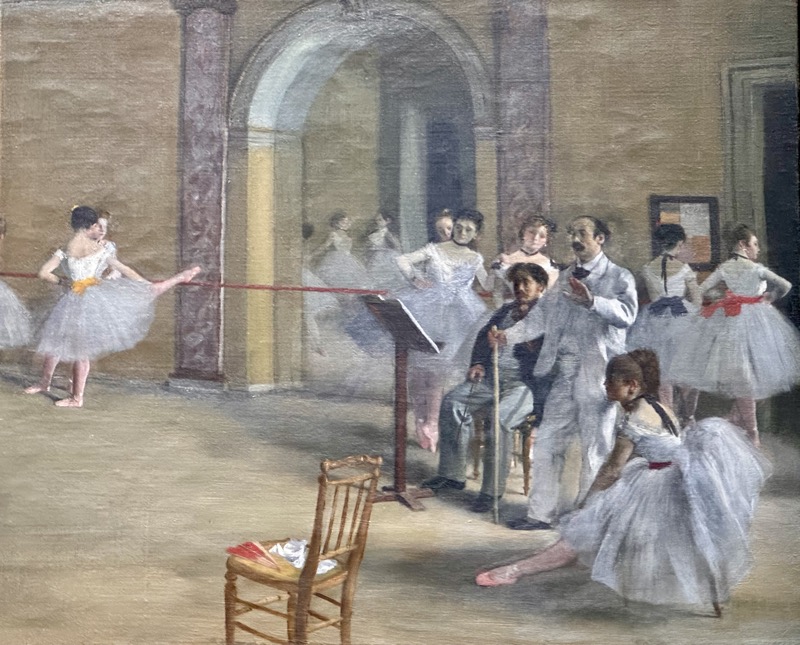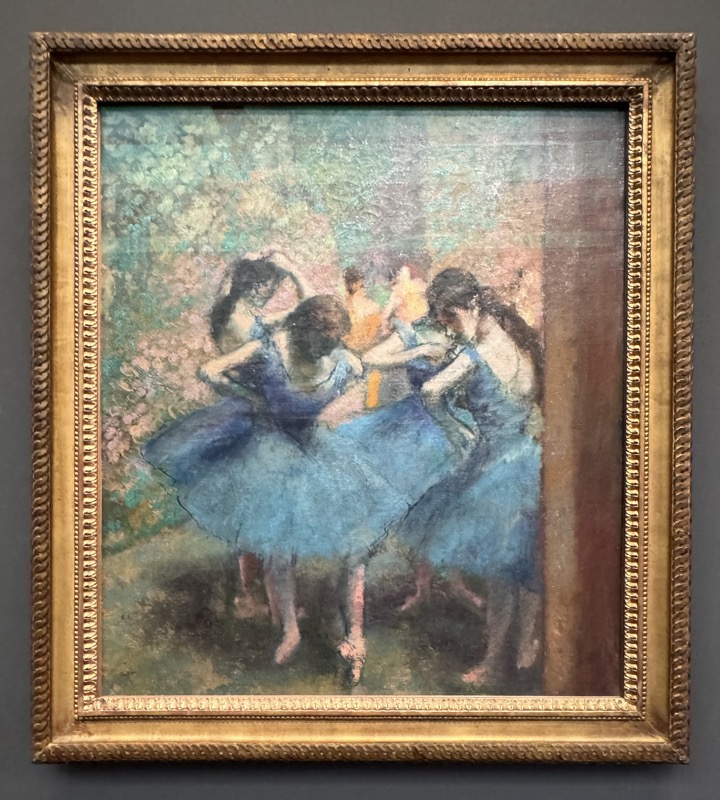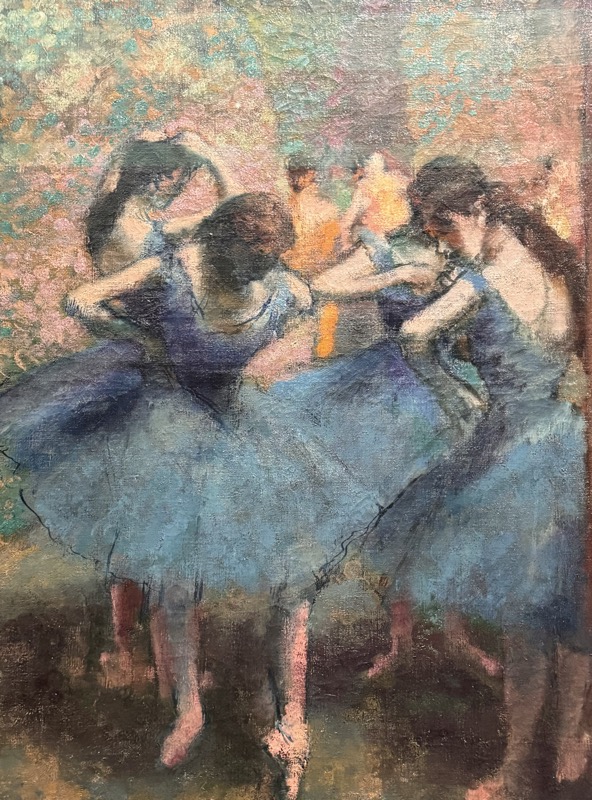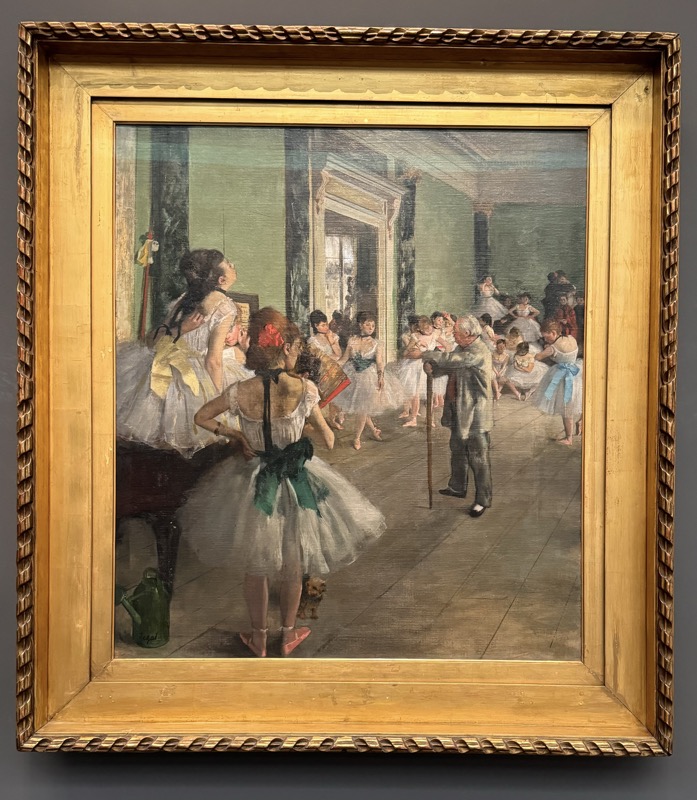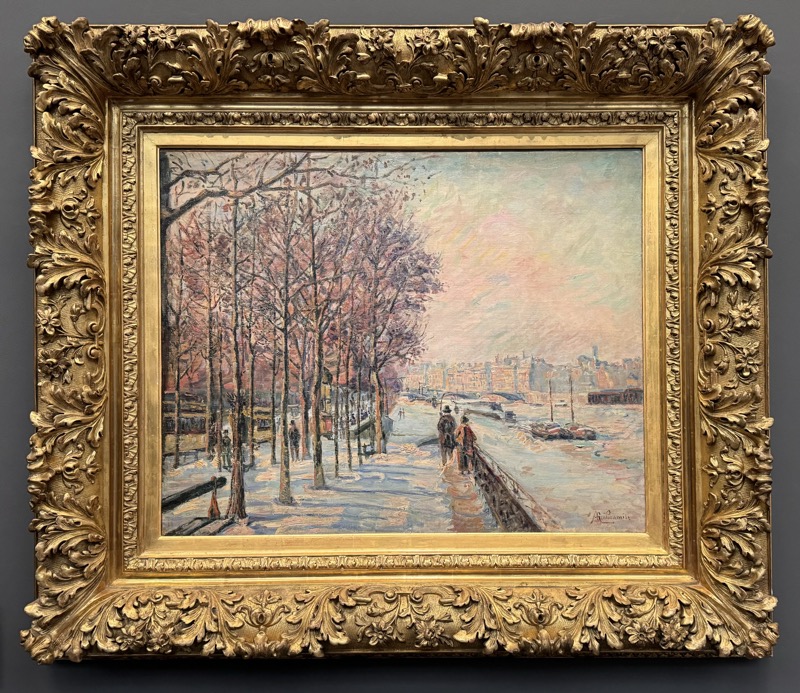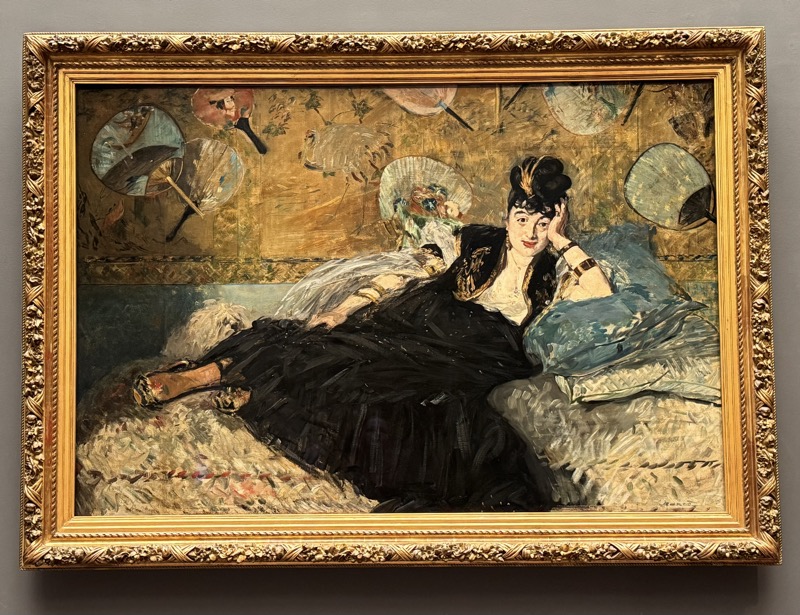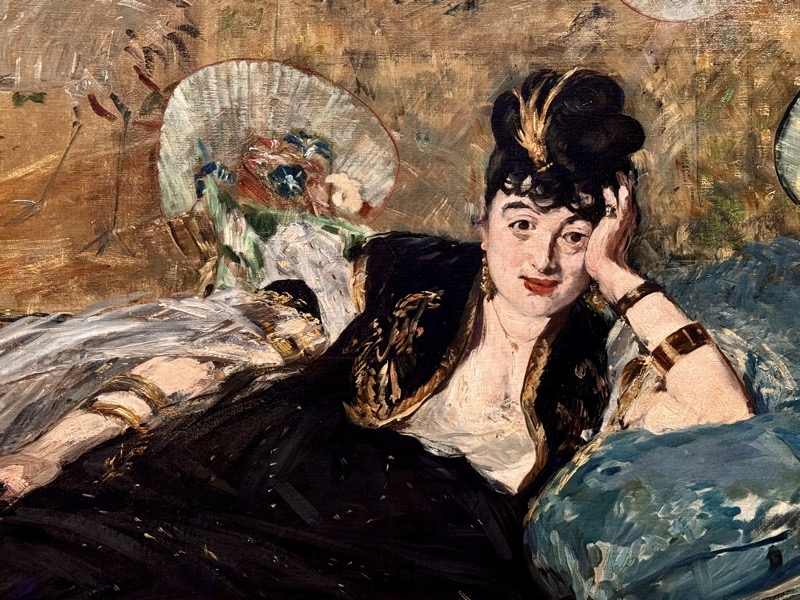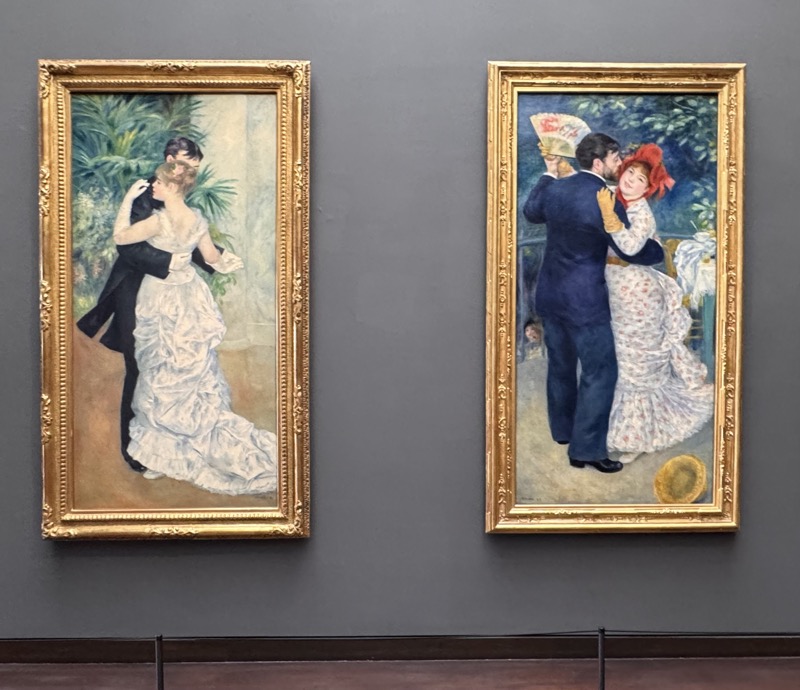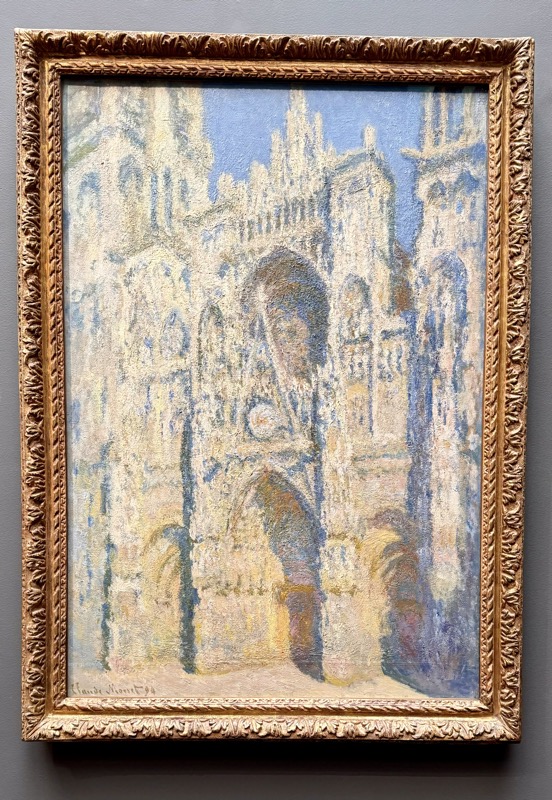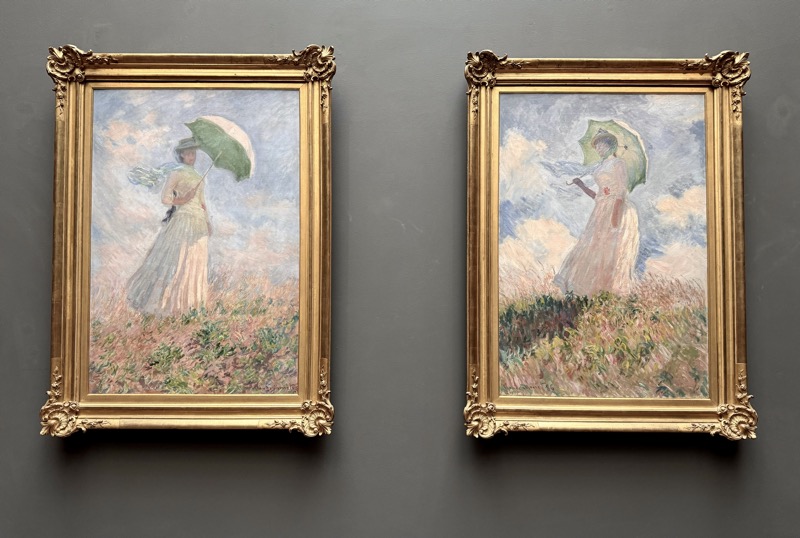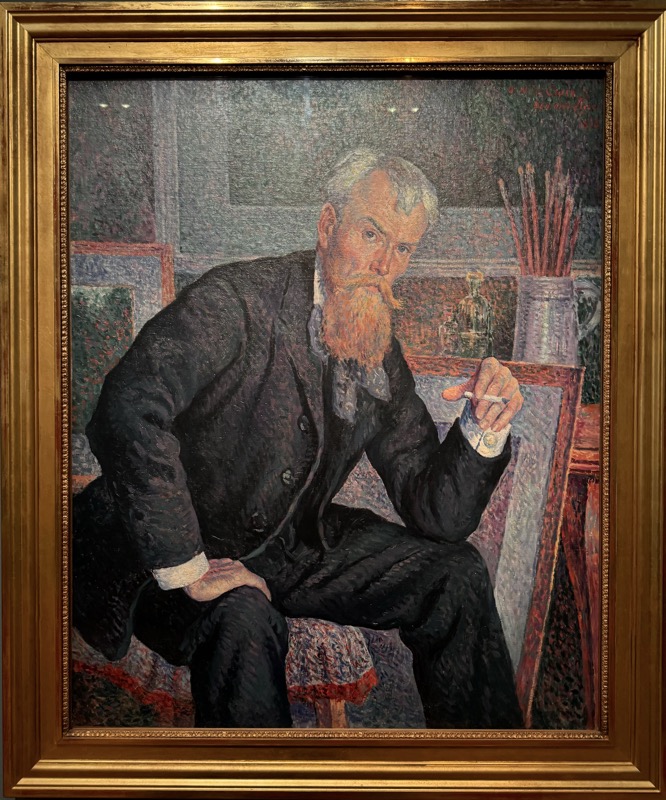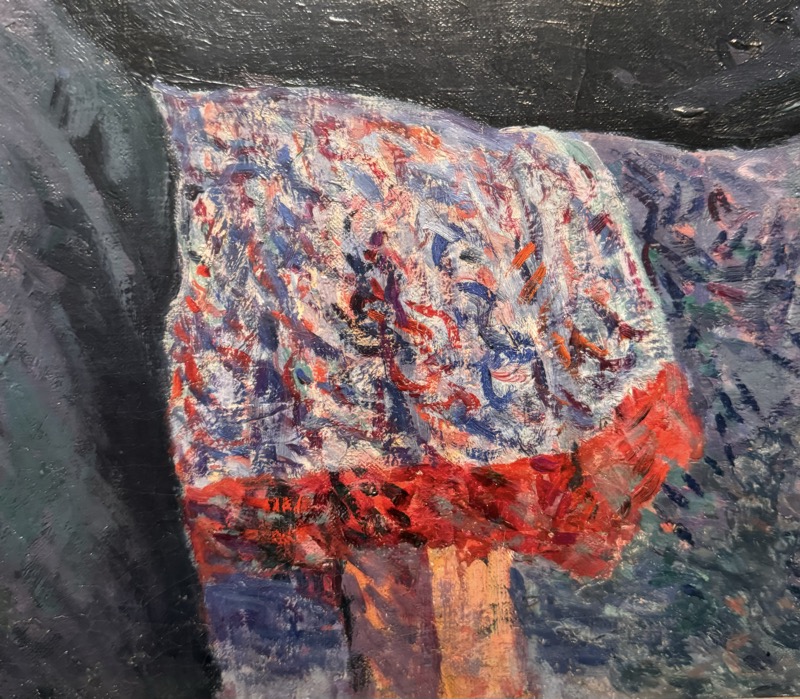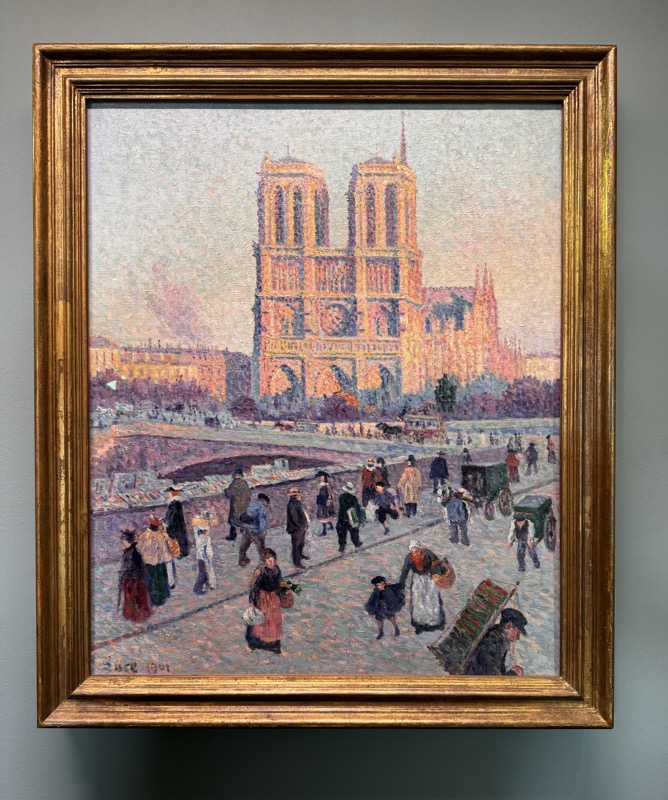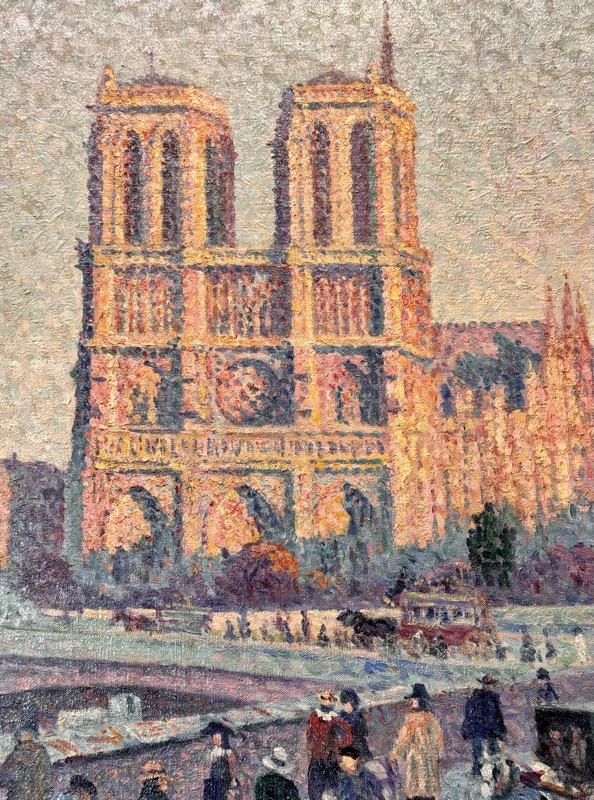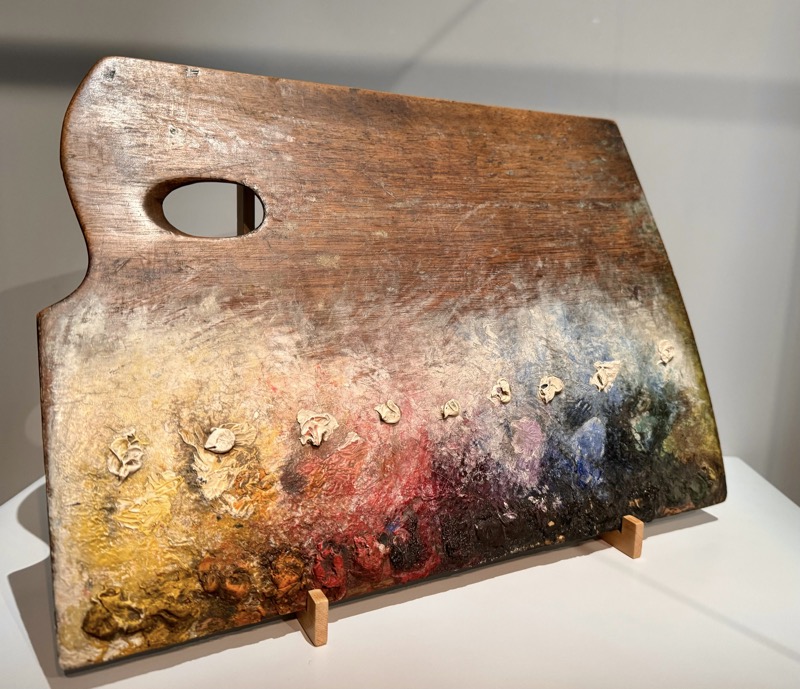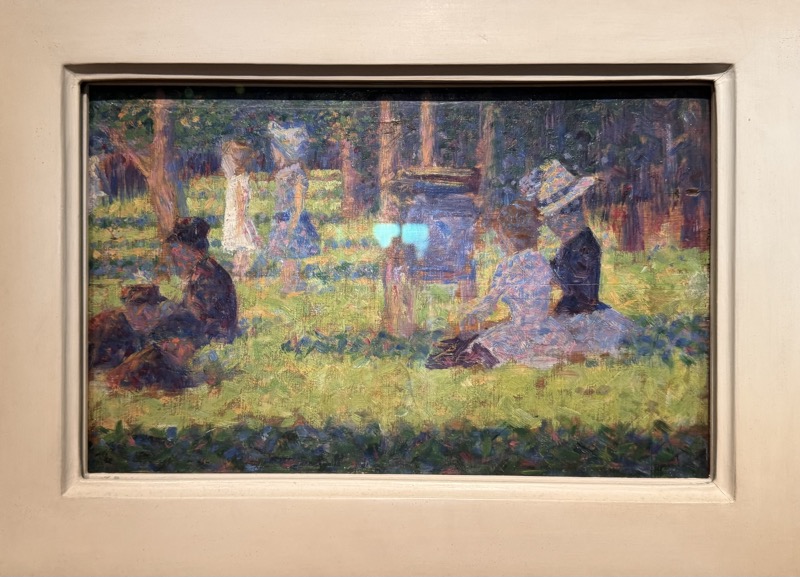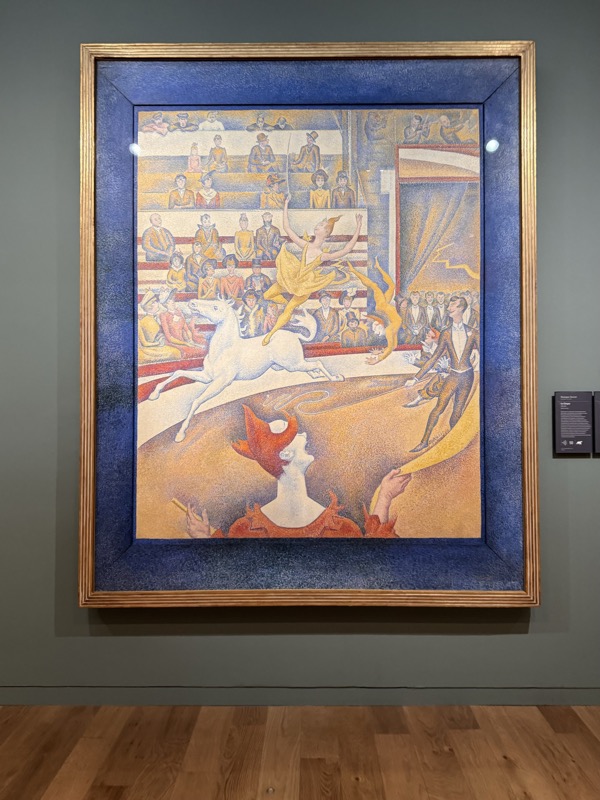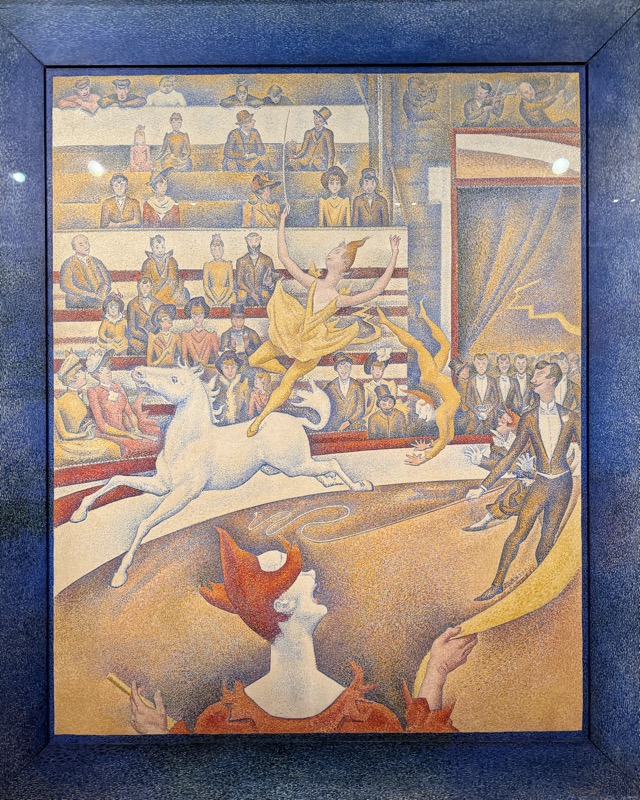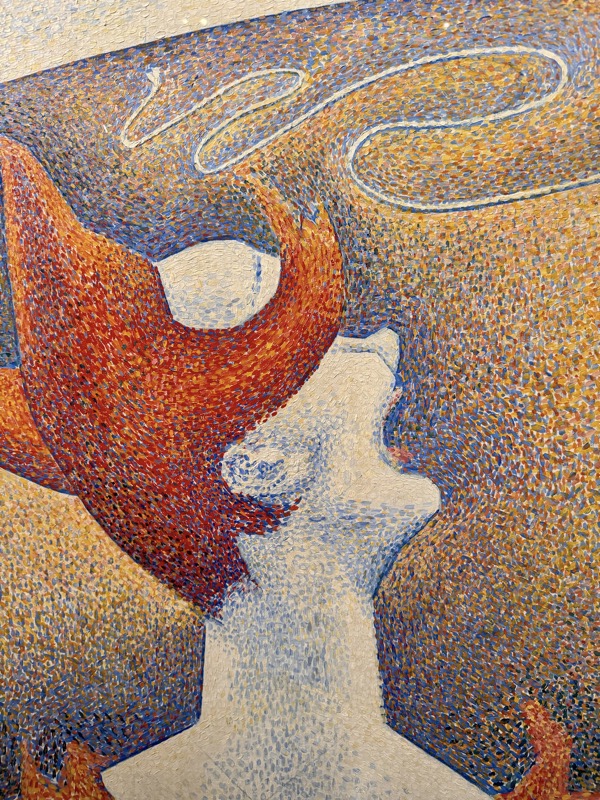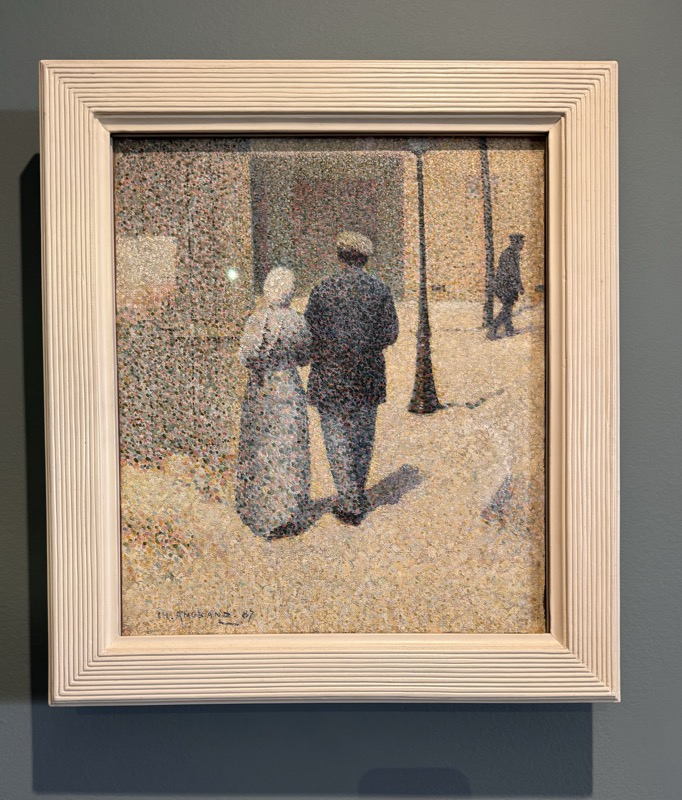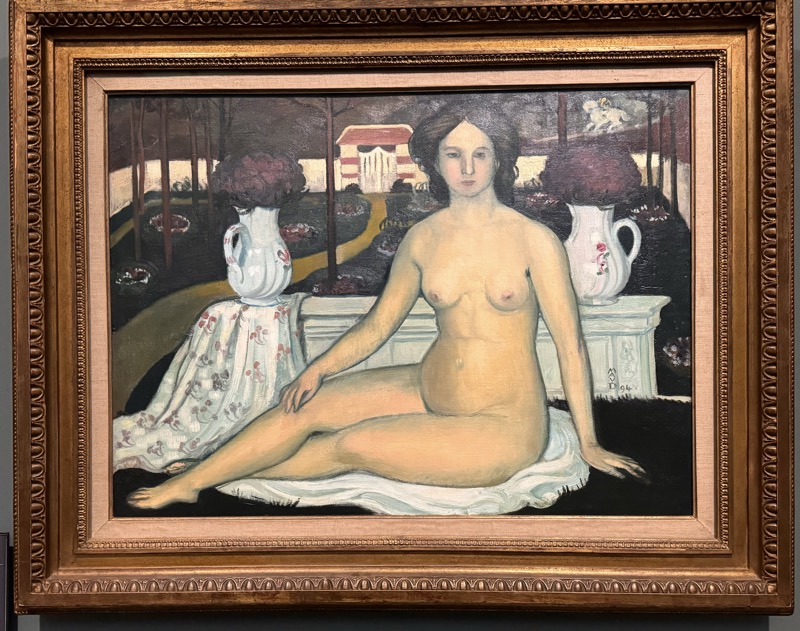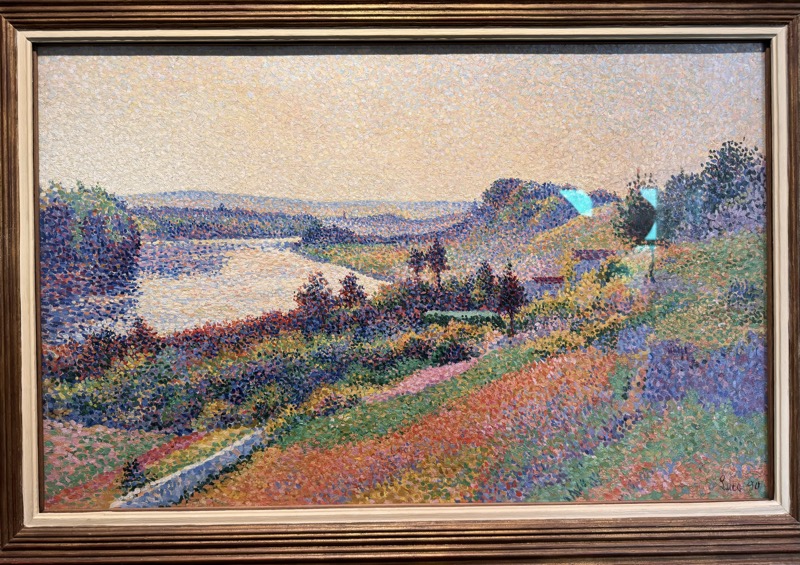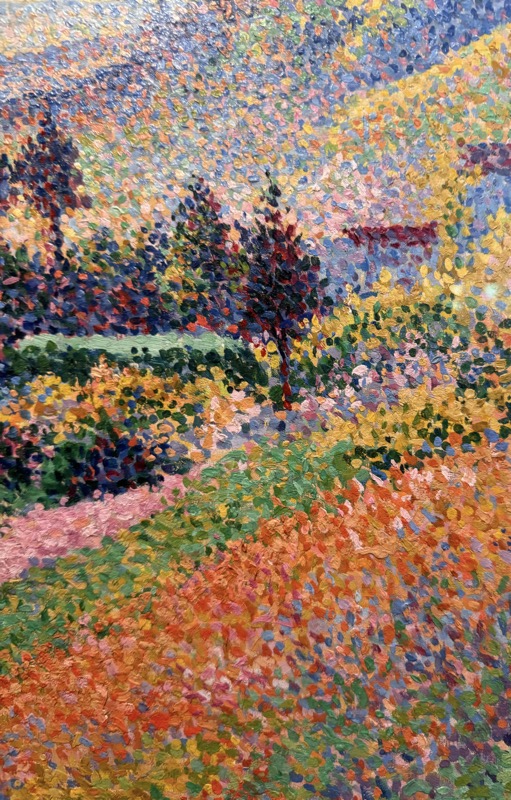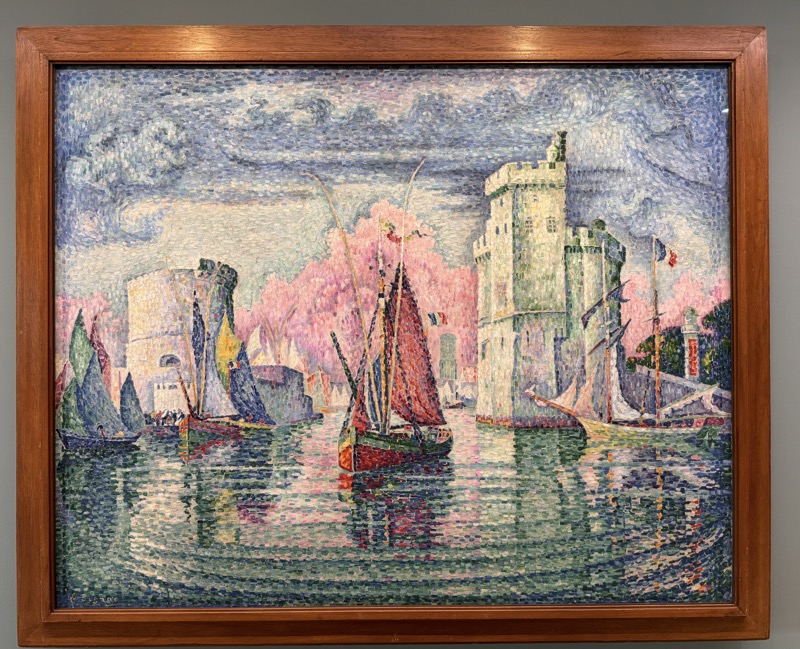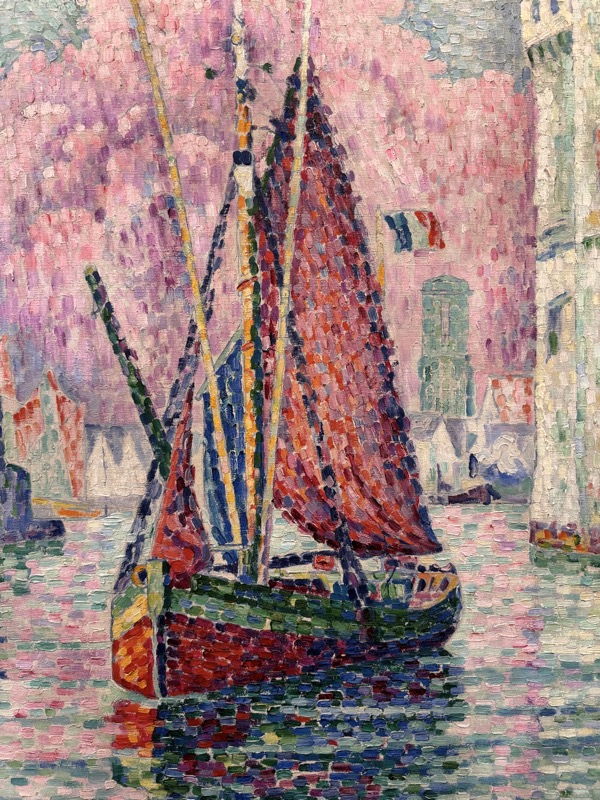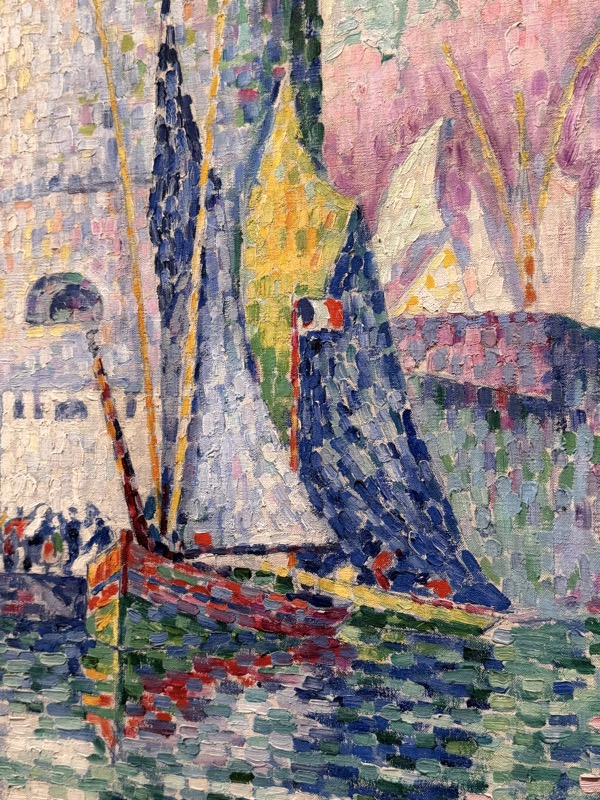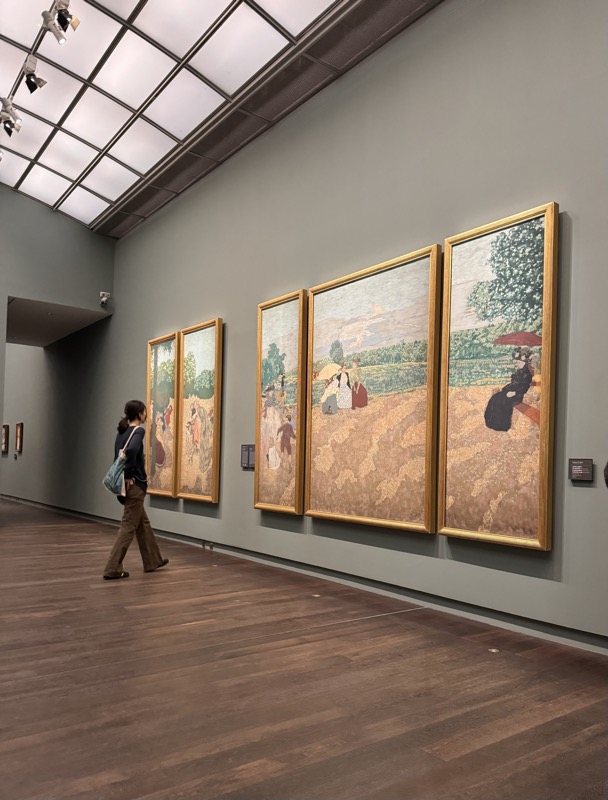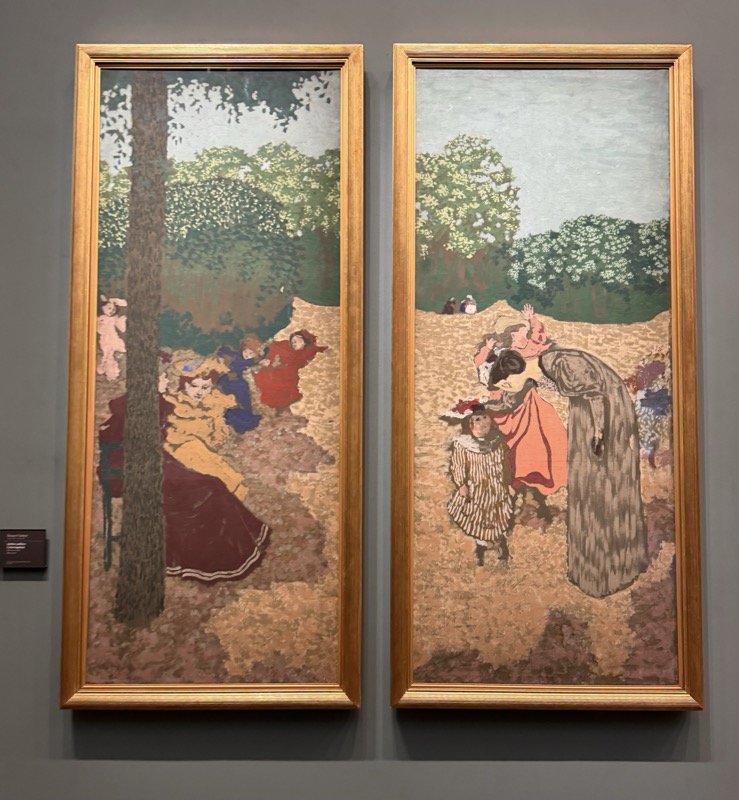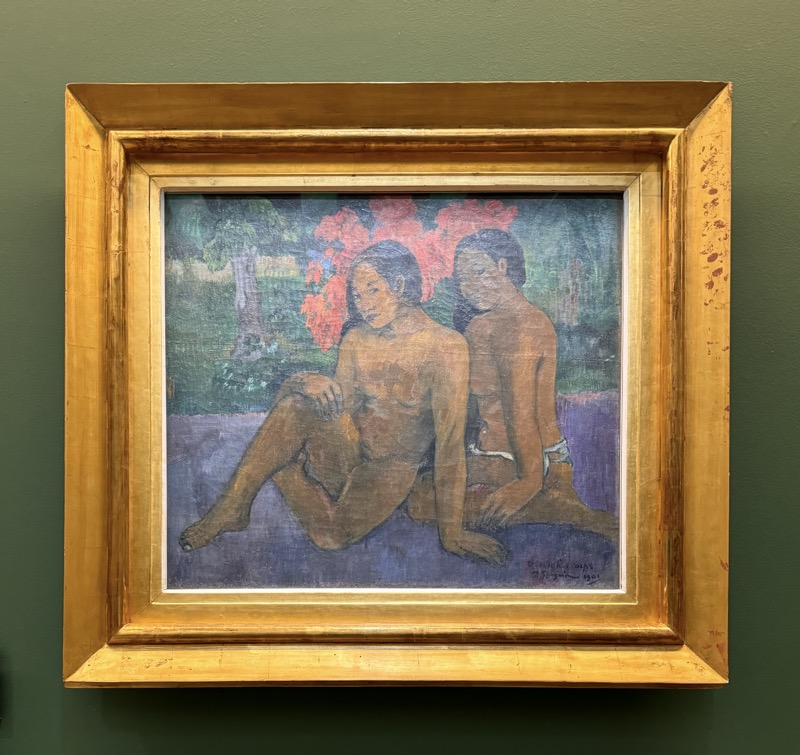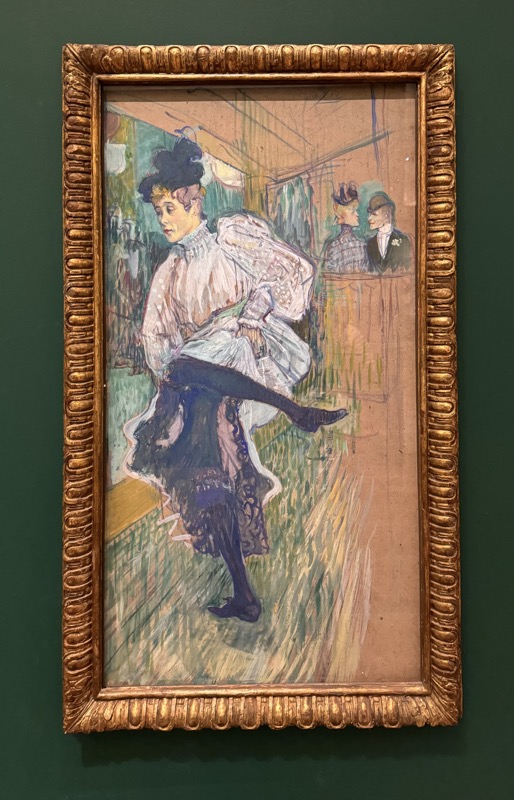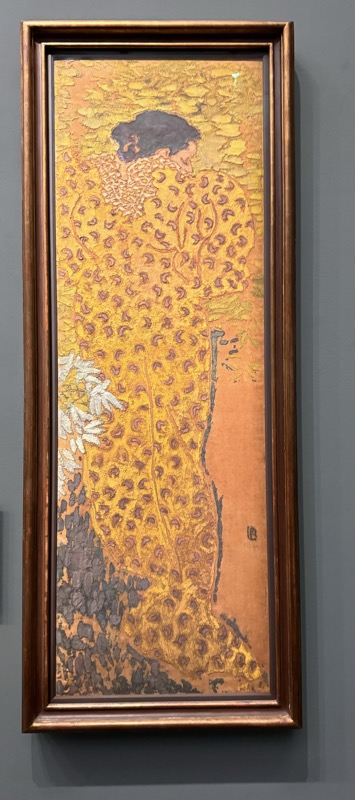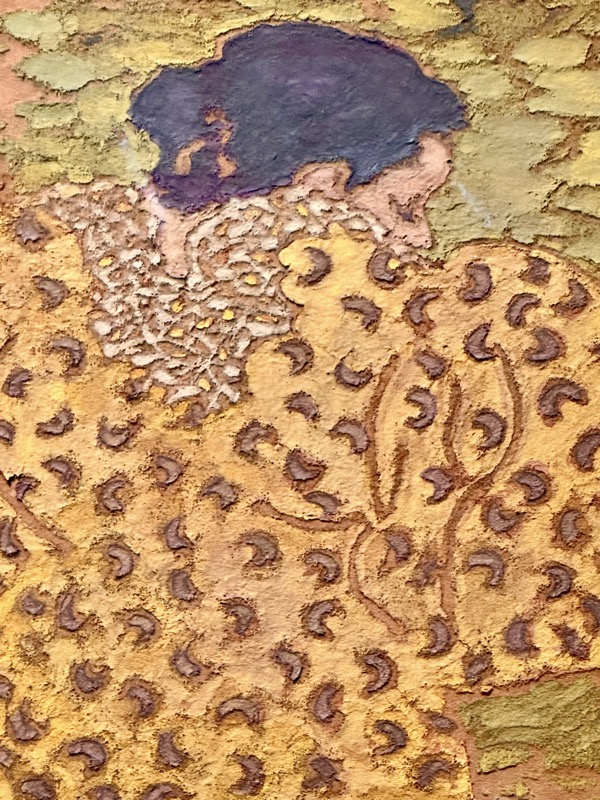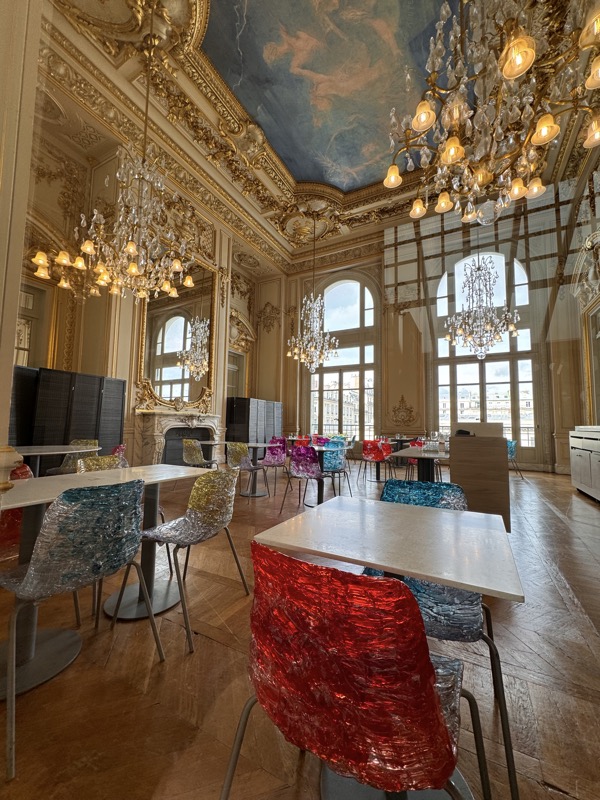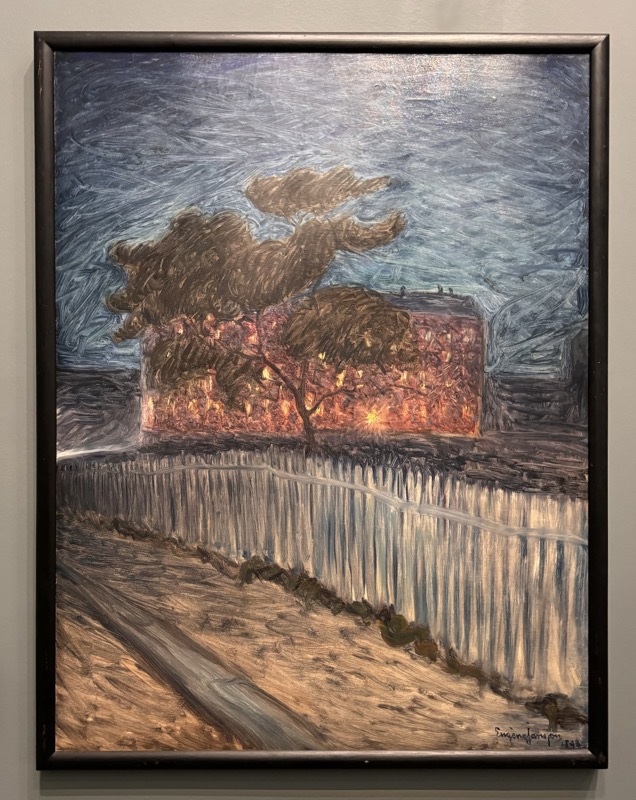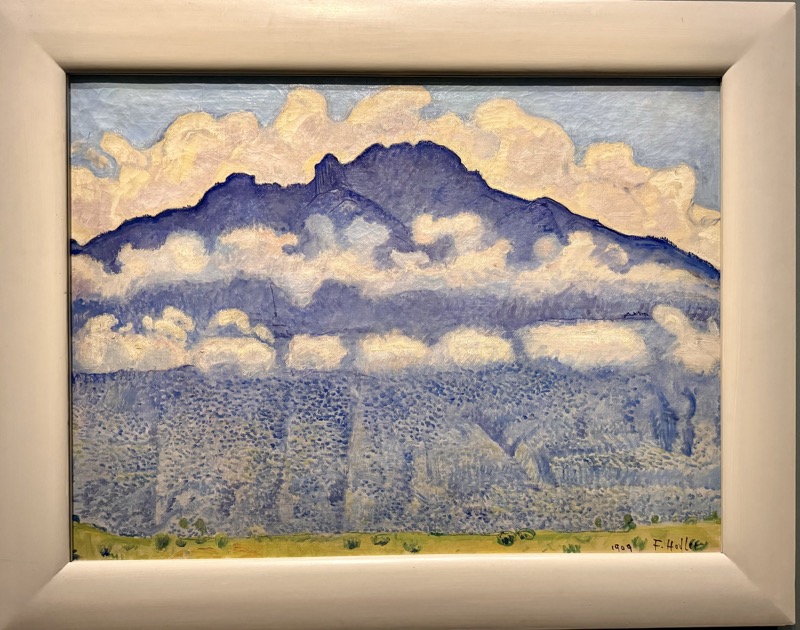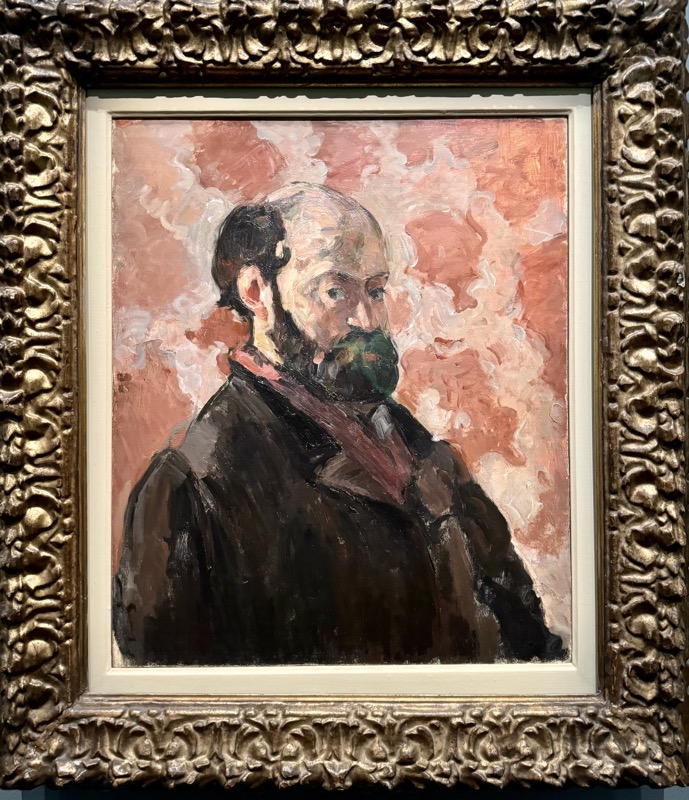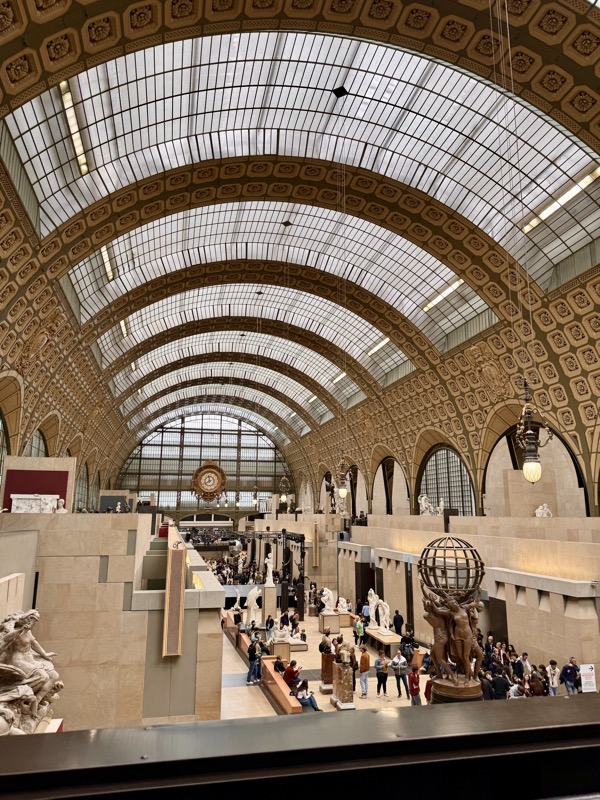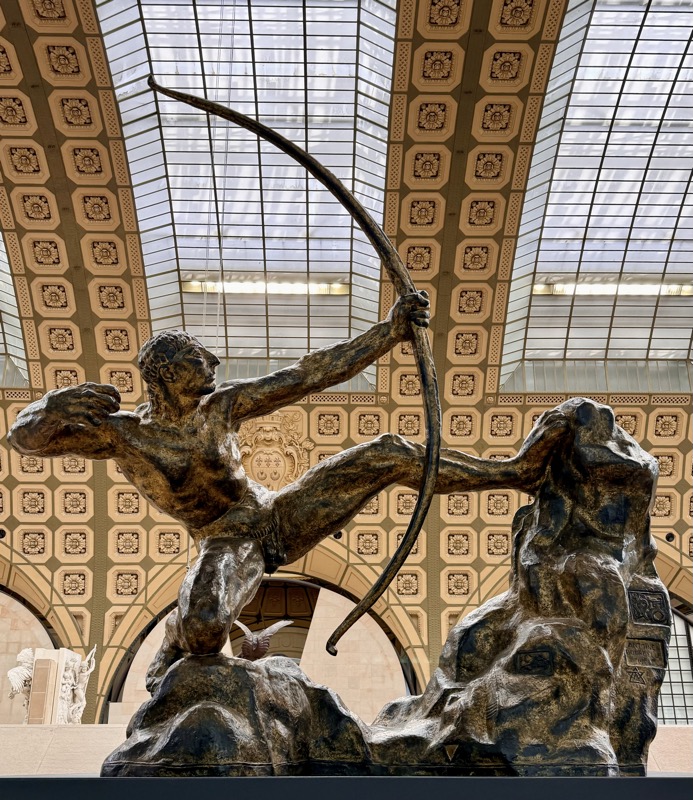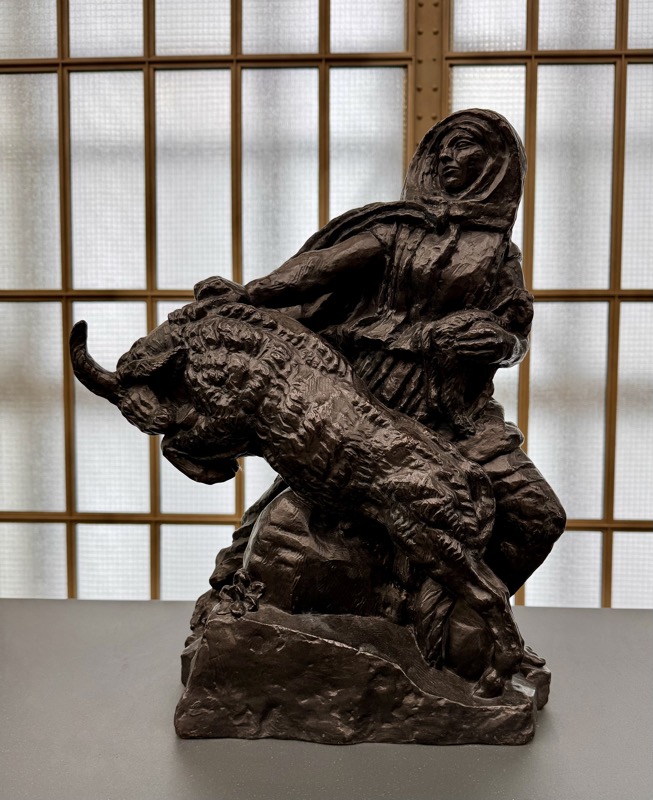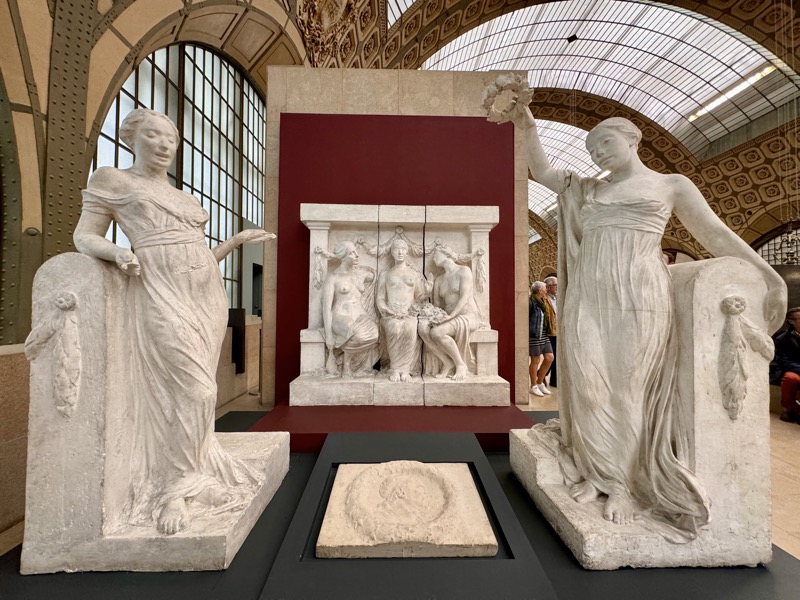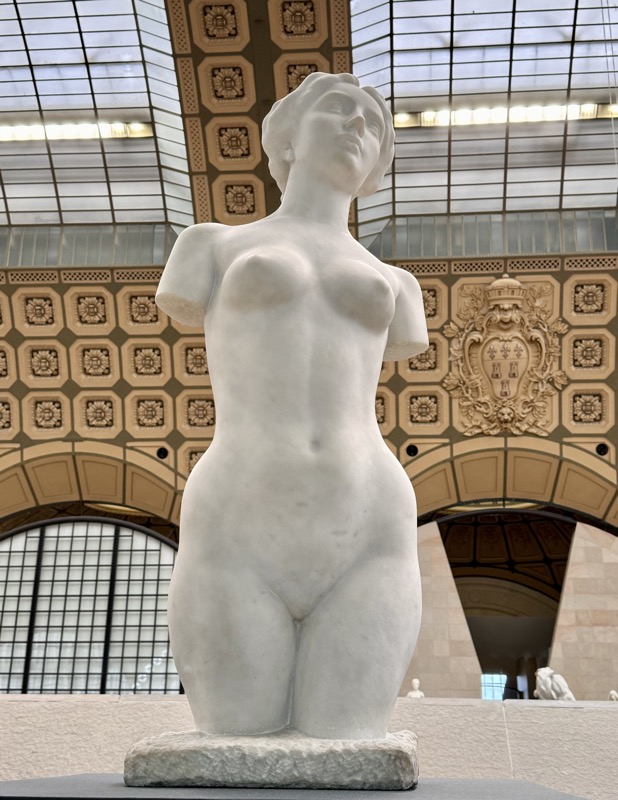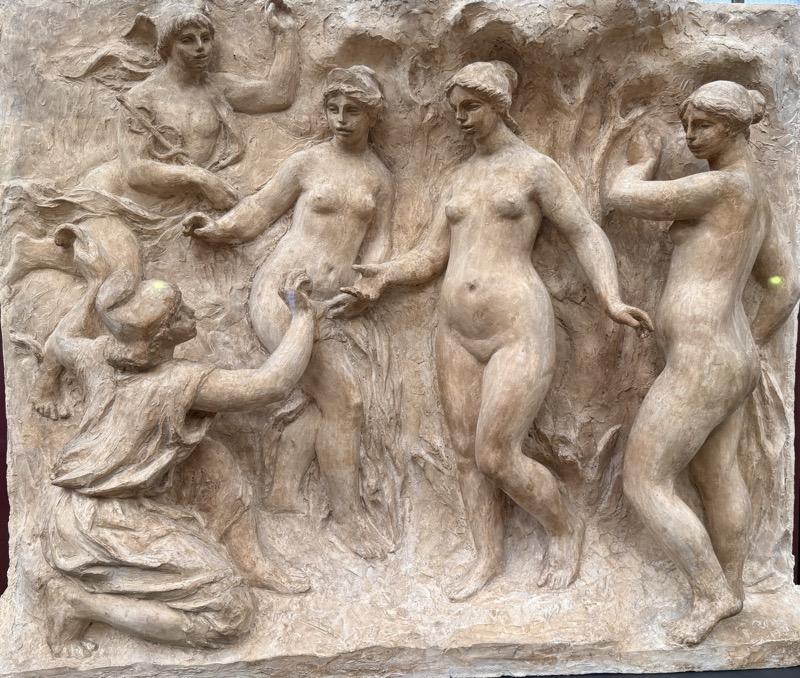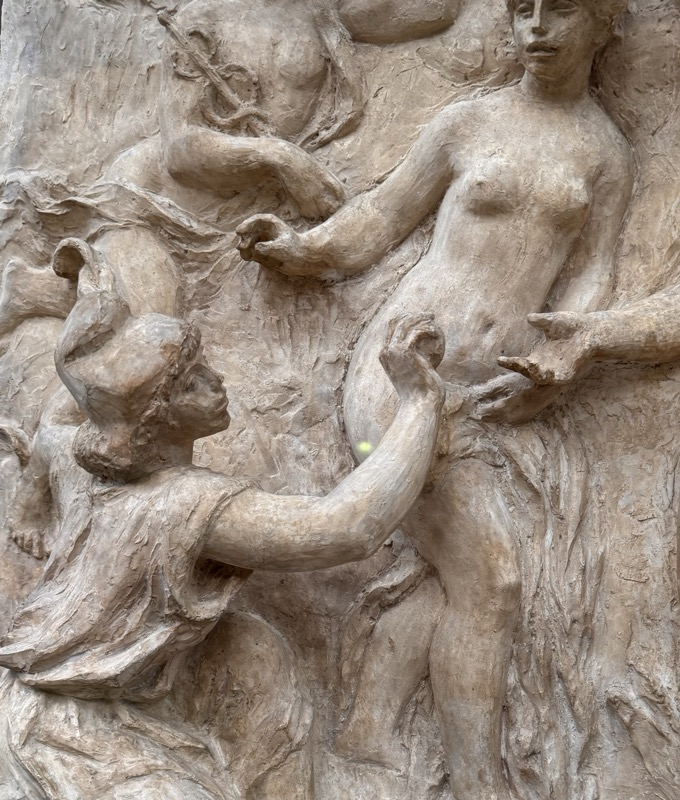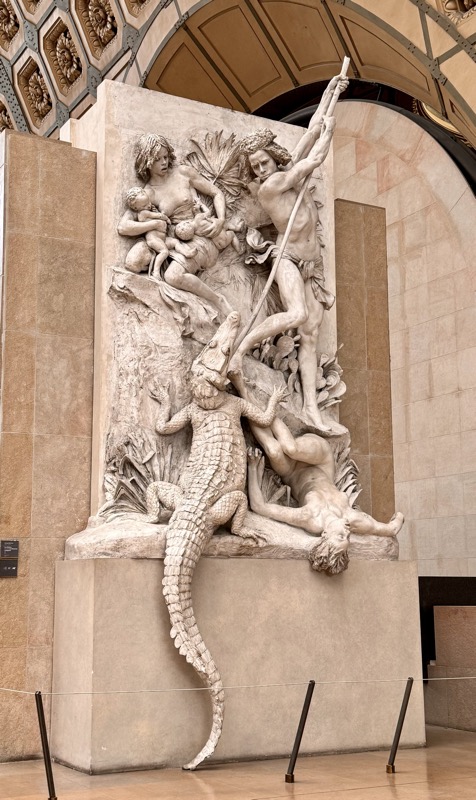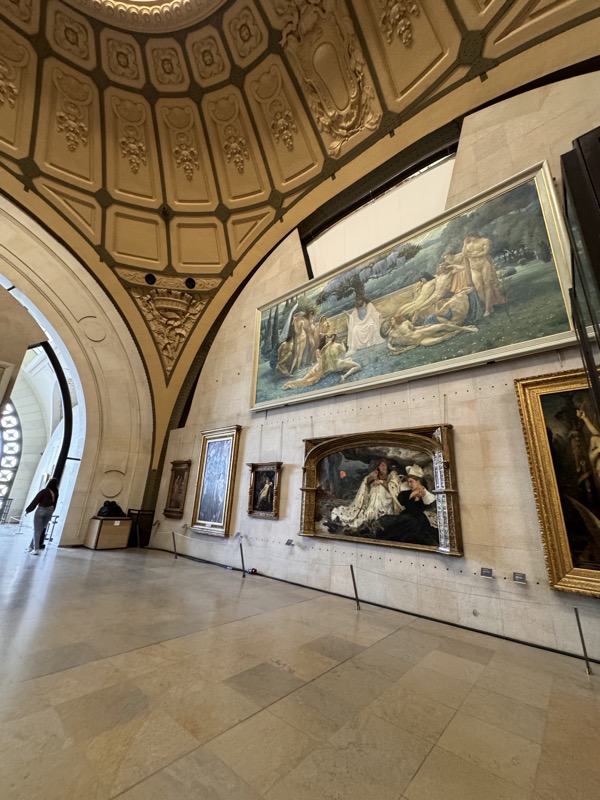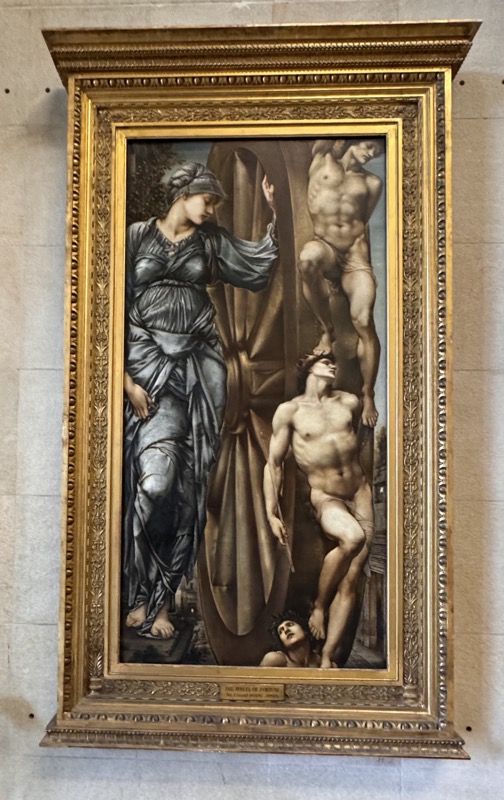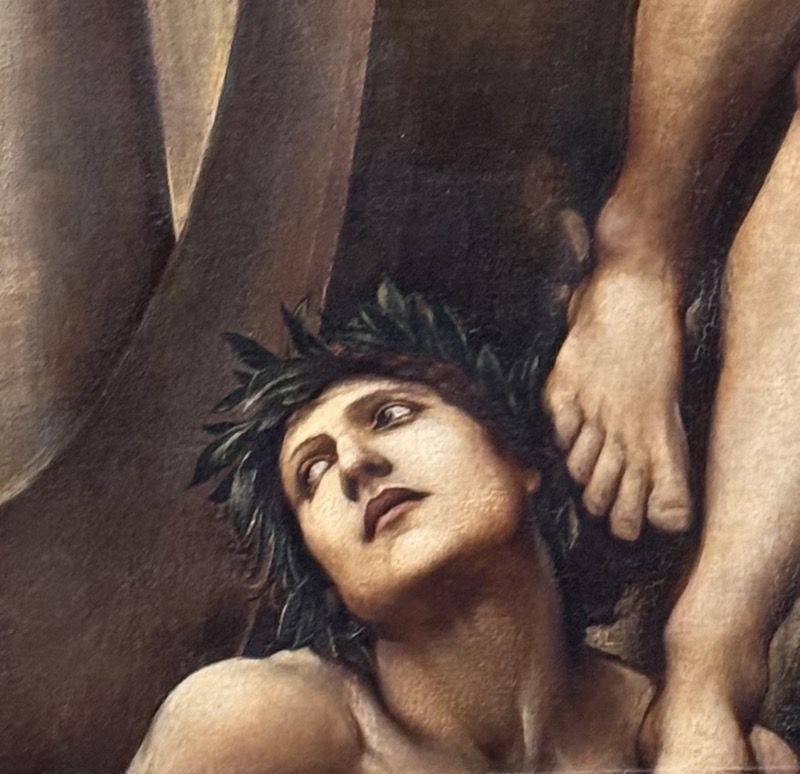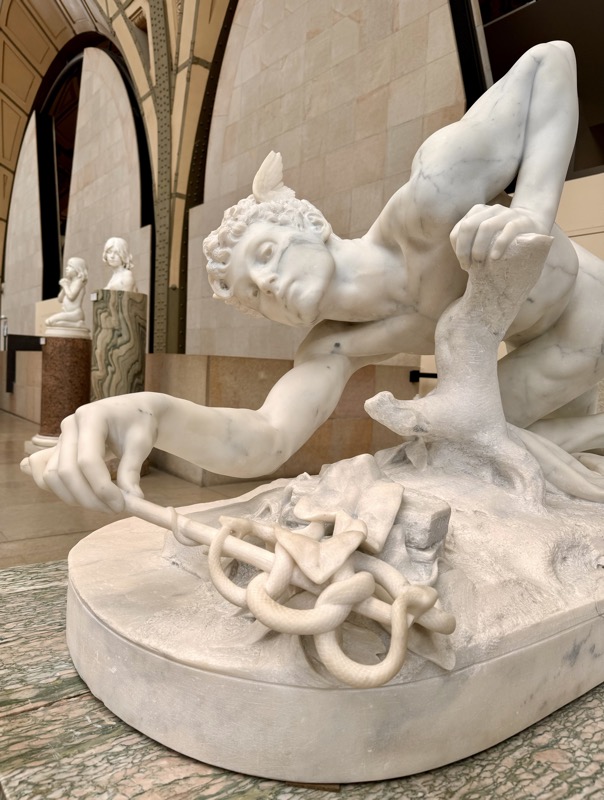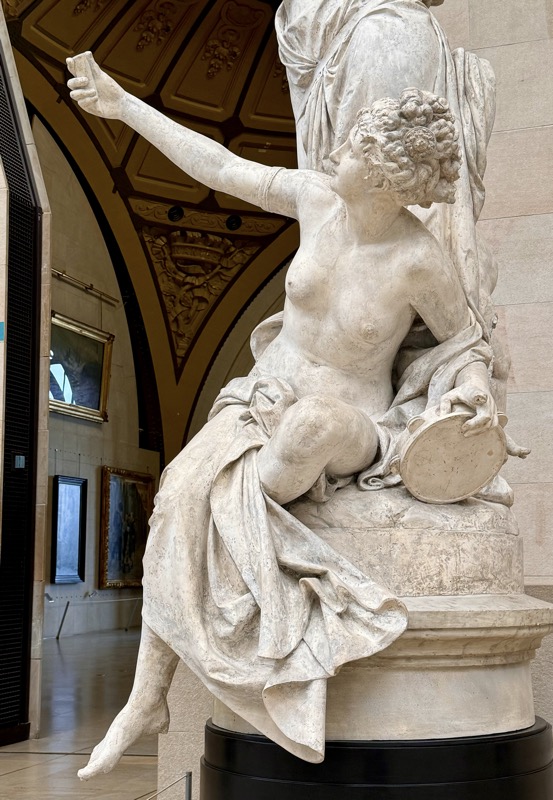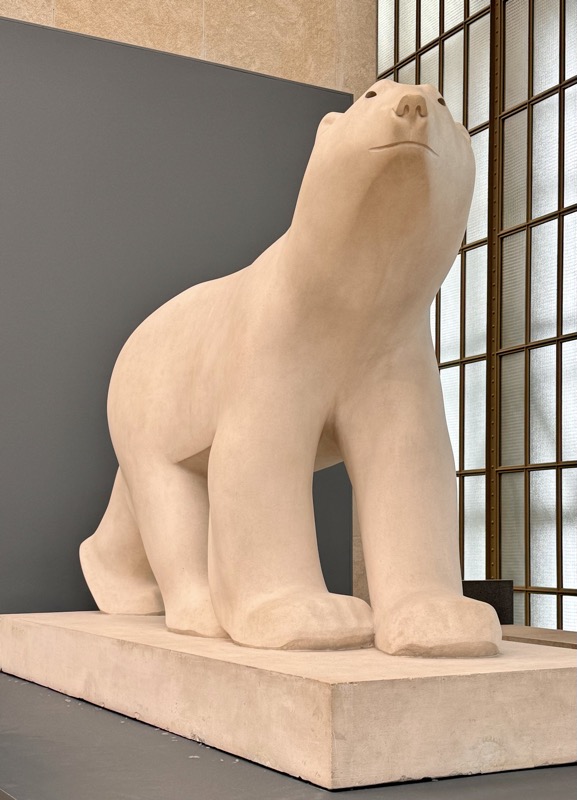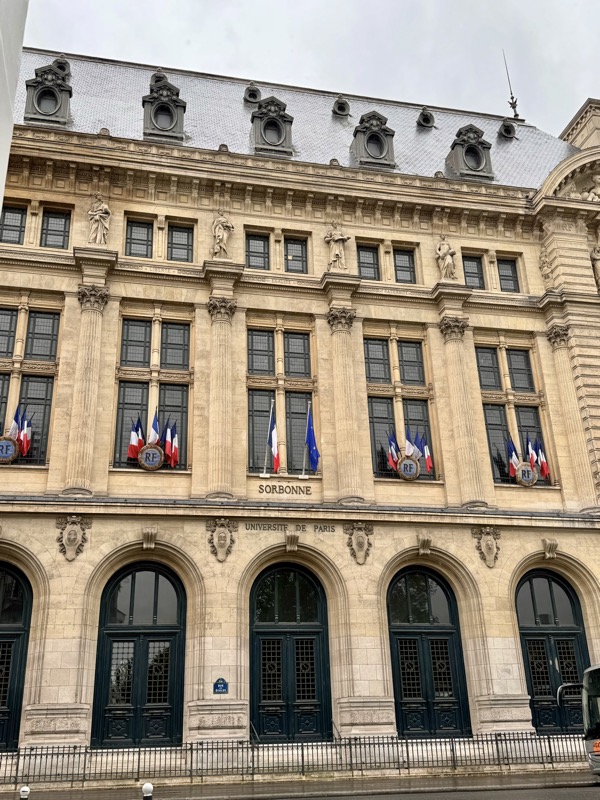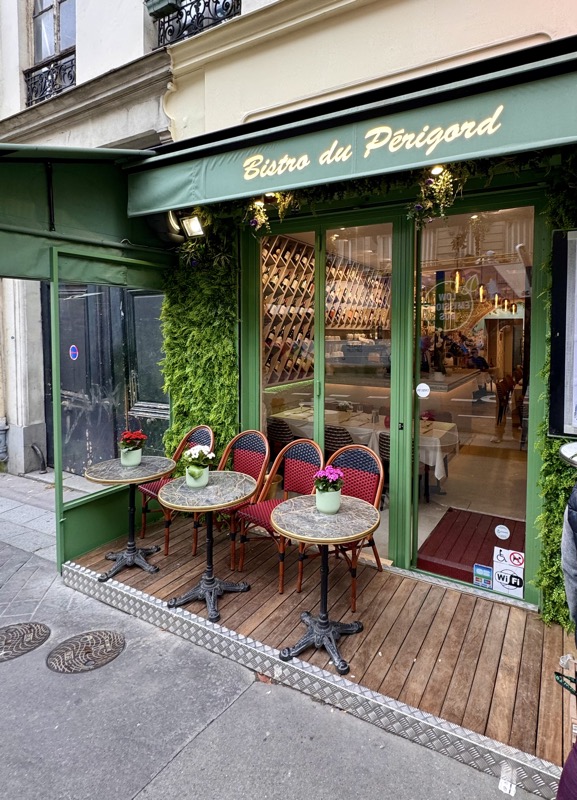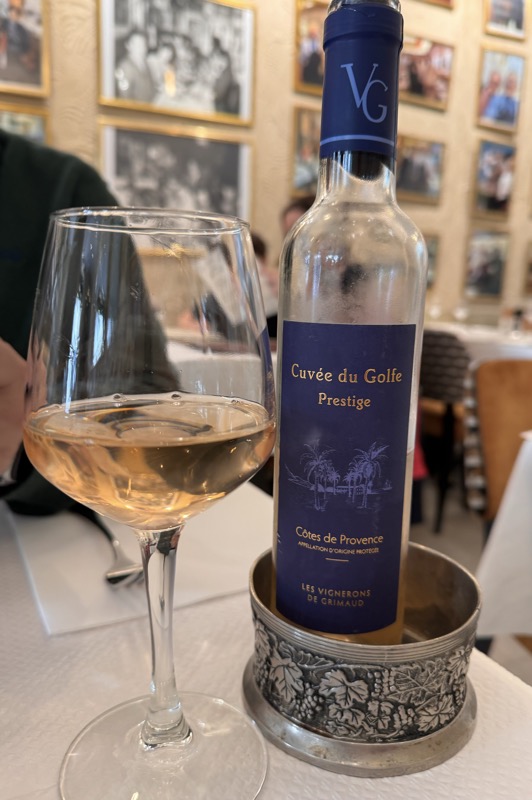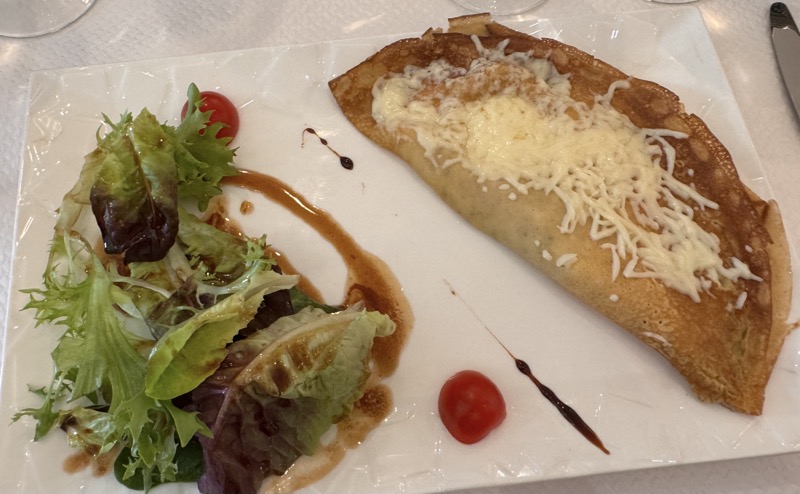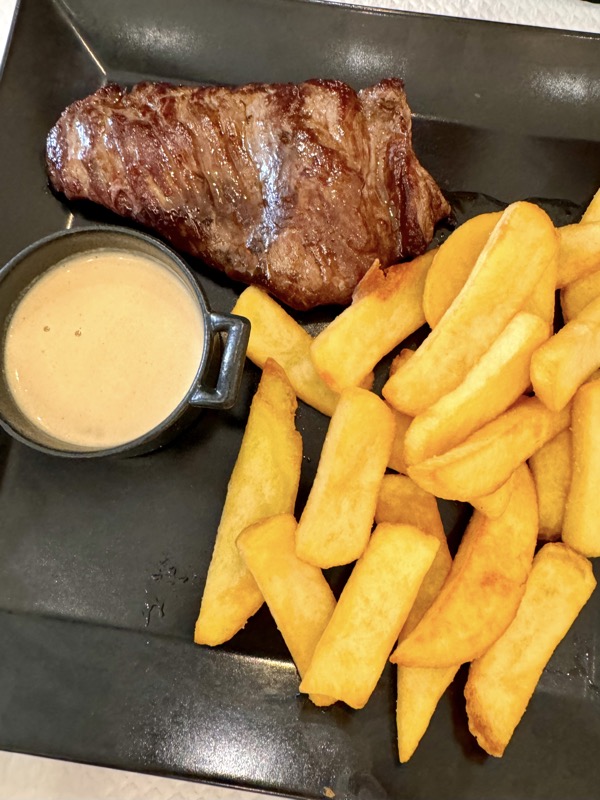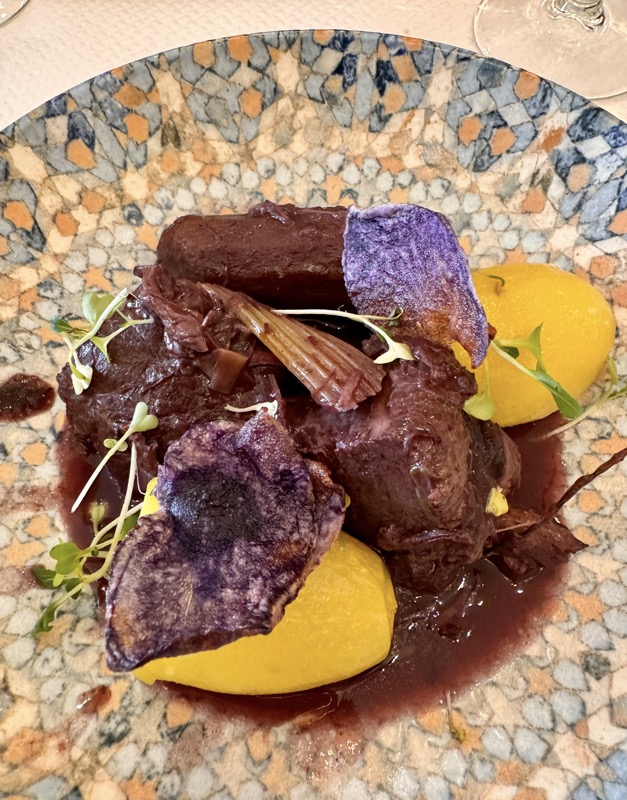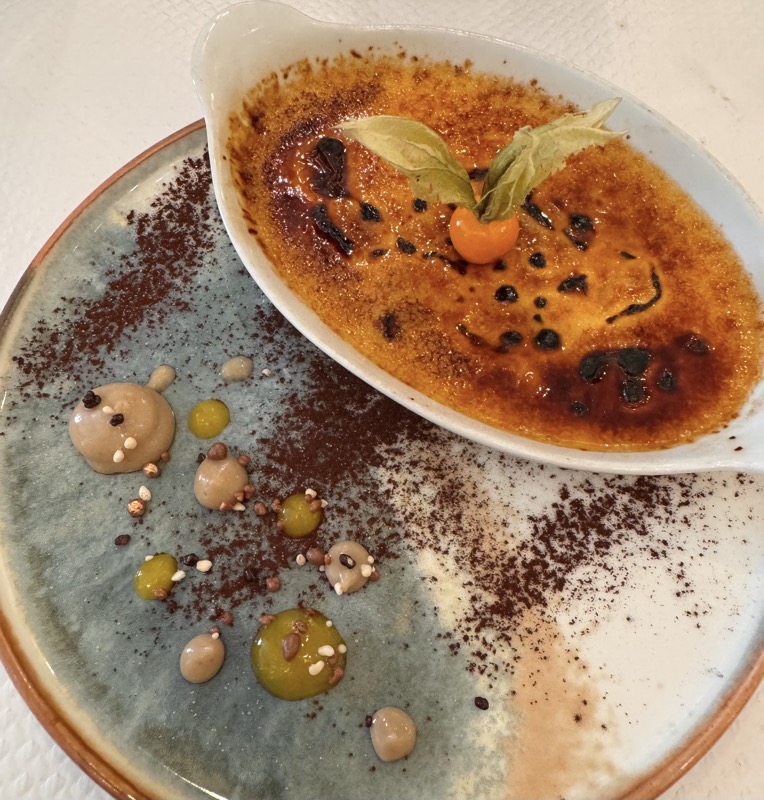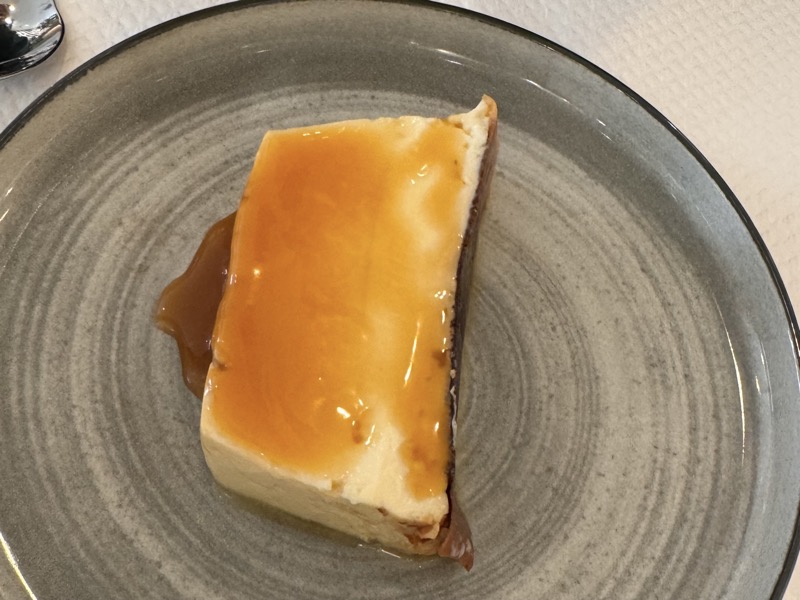Literally around the corner from our hotel was Hanover’s famous art museum, the Landesmuseum. Naturally, we knew we could spend a few hours there checking out numerous artworks, the likes of which would get an entire wing dedicated to them should even one of these pieces be in a museum back home!
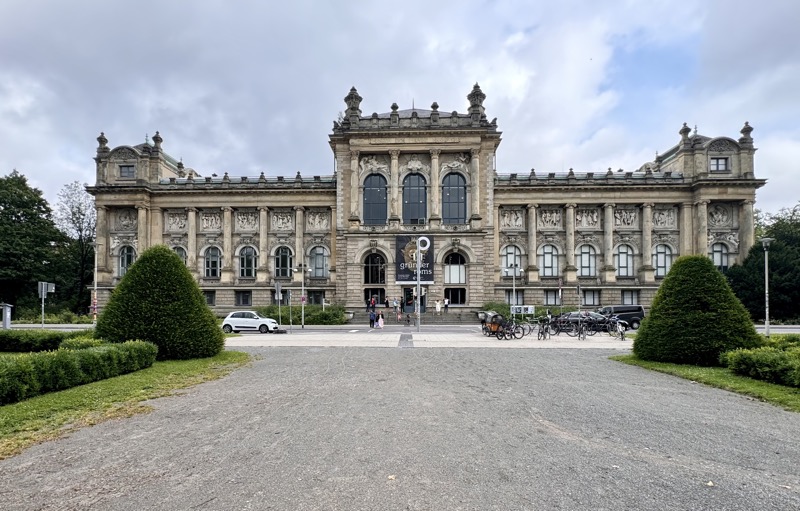
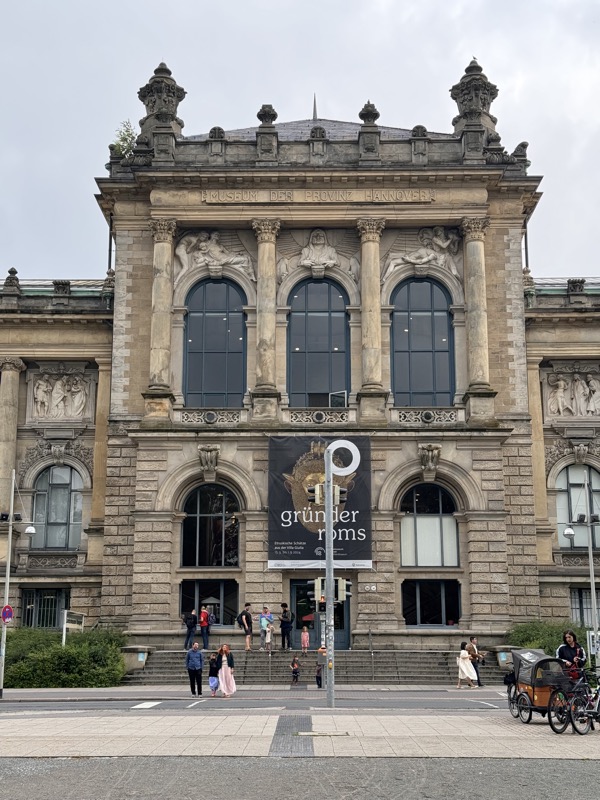
St Peter,
Evert van Roden (attributed)
Münster, c 1460
Madonna Enthroned
Lower Saxony, c. 1180 Linden wood, originally painted.
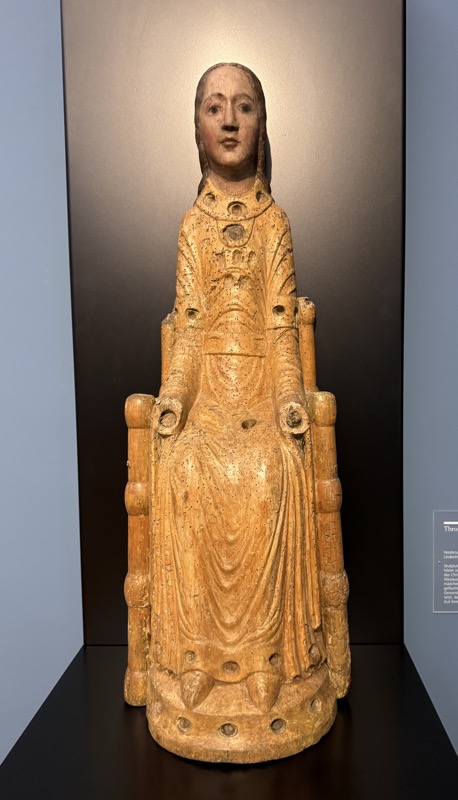
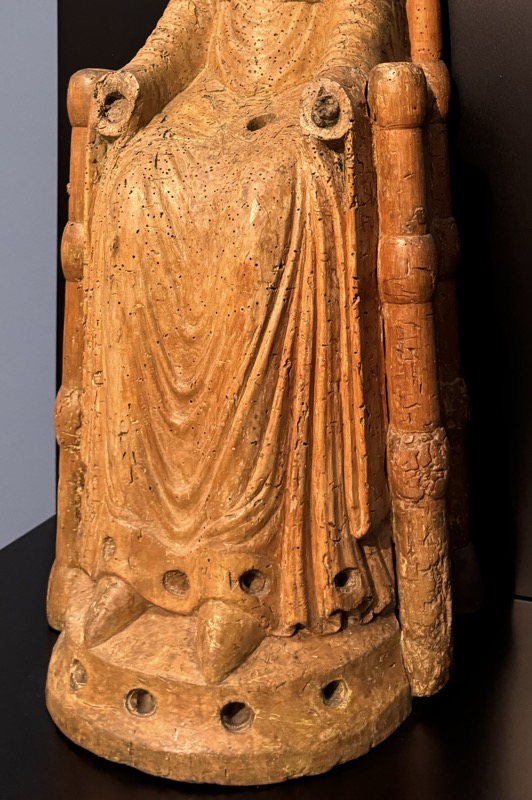
Death of Mary, Lower Saxony, c.1300/1310, Oak
The altarpiece from the former Augustinian convent in Wennigsen has only a few surviving panel paintings from the early 14thC. The apostles and a bishop have gathered at Mary’s deathbed. In the middle appears Christ, who has descended from heaven to collect Mary’s soul in the form of a small, white-clad figure.
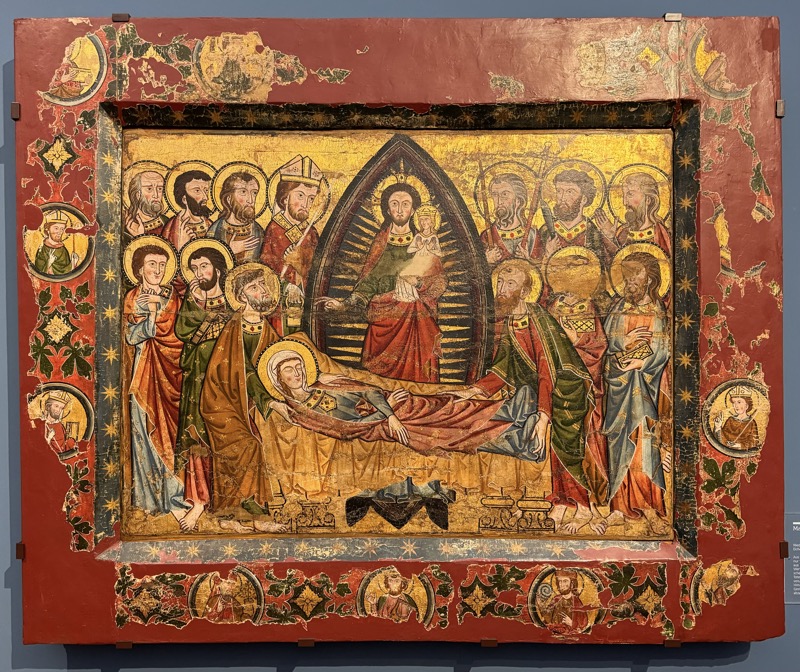
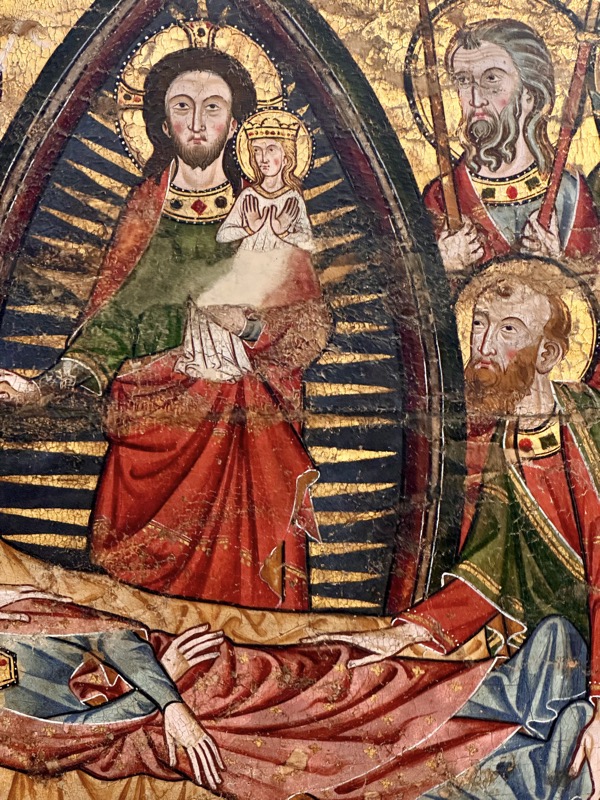
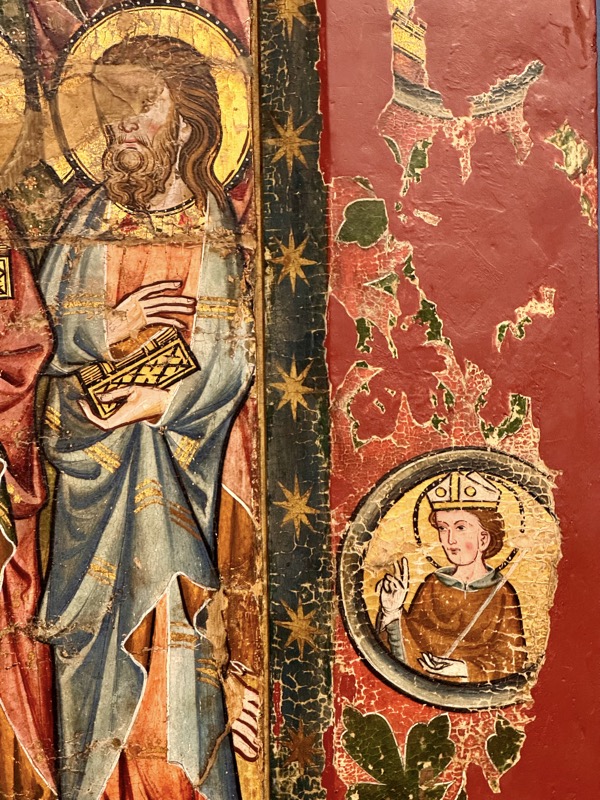
Ten Commandments panel. Master of the Göttingen Jacobi Church Altar, c.1400. Oak.
The wings of this work, were originally mounted on both sides of the central panel, have been lost. Therefore, only six of the ten commandments can be seen. They are recited by God, who appears in a rainbow, and illustrated using stories from the Old Testament.
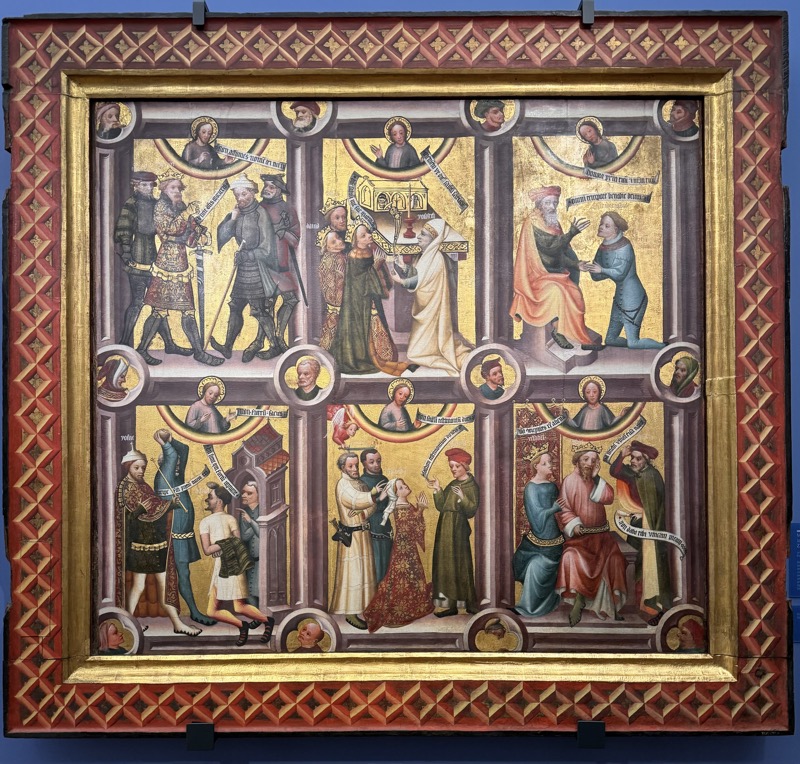
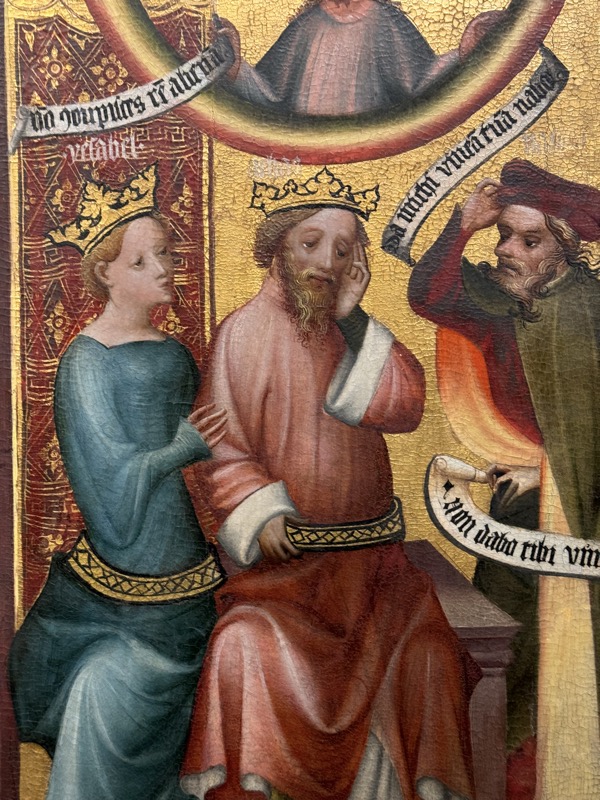
Christ with the Wise and Foolish Virgins, Lower Saxony, c. 1310-1320, Oak.
The heavenly judge turns to five expectant women with burning lamps. The ladies on the other side, however, are denied the kingdom of heaven. They had managed their finances poorly, and the oil in their lamps had run out before the longed-for bridegroom appeared in the night. The panel admonished the women in the Isenhagen monastery to live a life pleasing to God in preparation for the Last Judgement.

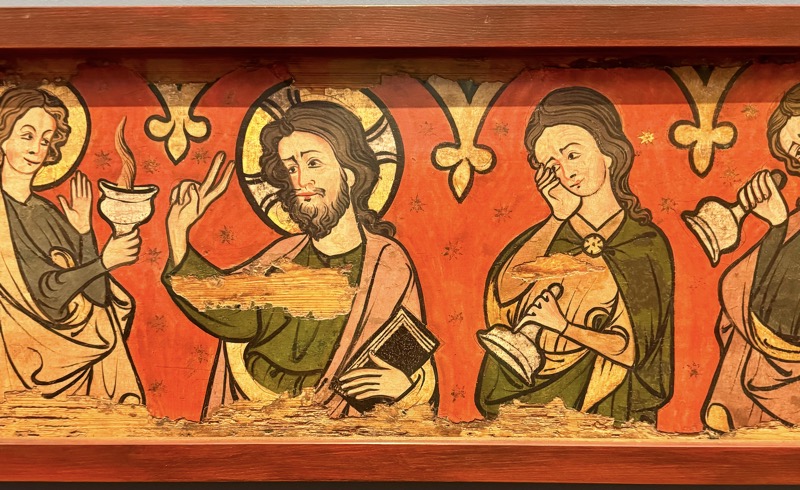
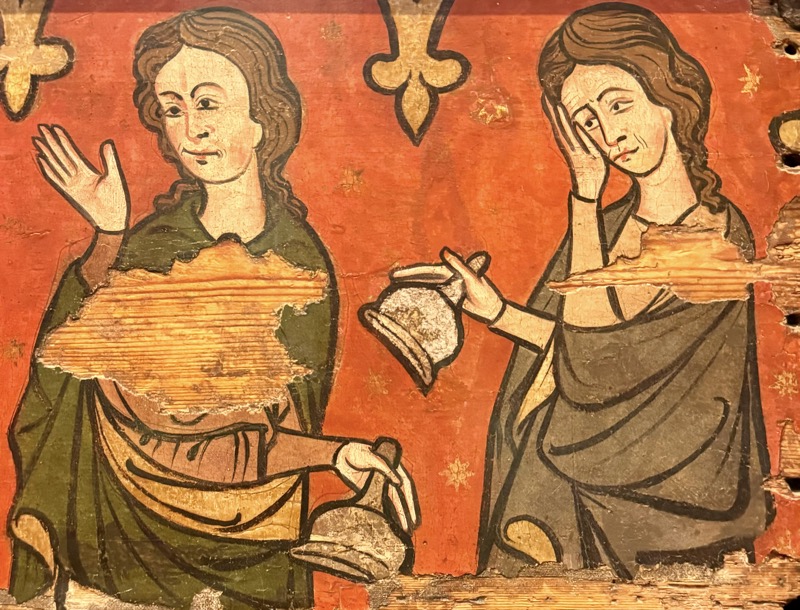
Childhood and Passion of Christ, Lower Saxony or Westphalia, c,1390, oak.
The two panels acquired from the Aegidienkirche in Hanover Münden once formed the wings of an altarpiece, the middle of which has been lost. When opened, the work was almost eight meters wide. The scenes from the life of Jesus are separated from one another by an artfully painted decorative architecture. A differentiated color scheme and a special interest in costume details characterize the painting.
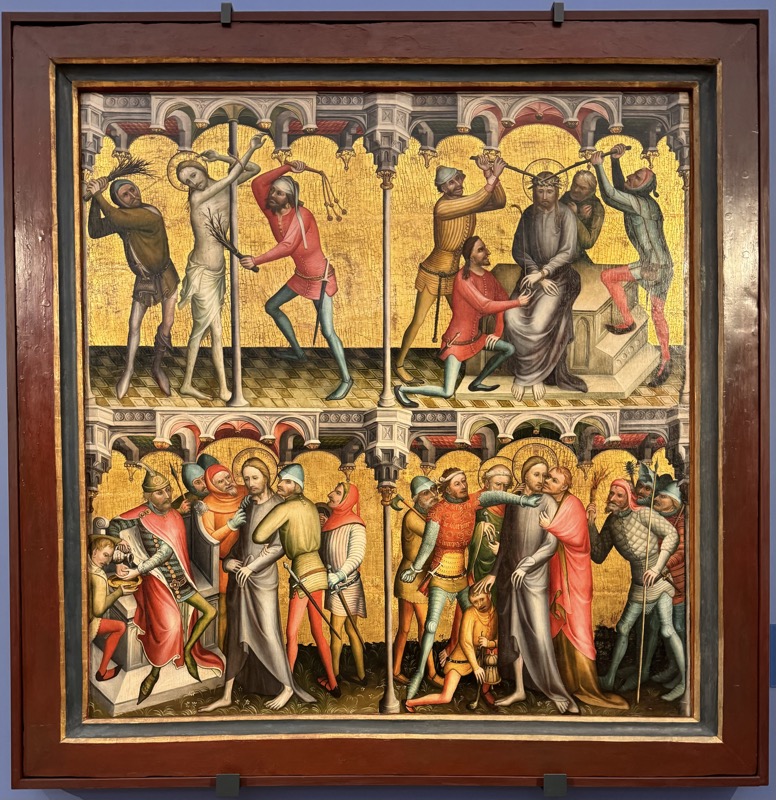
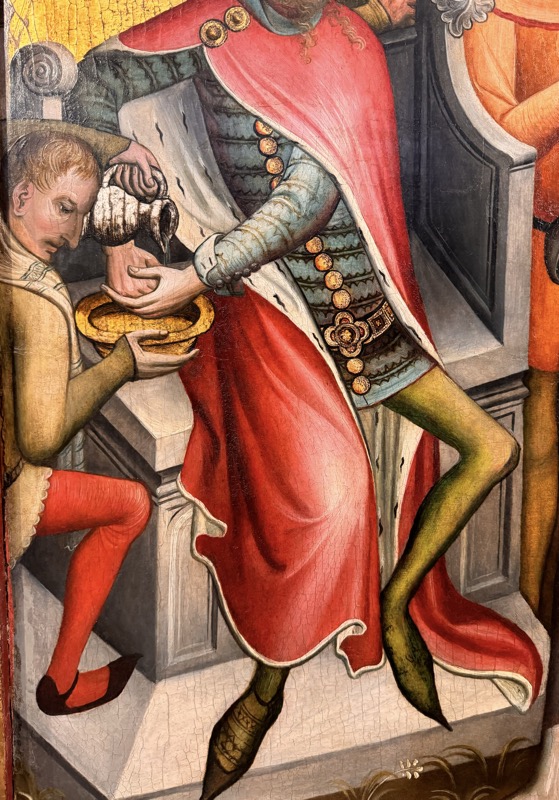
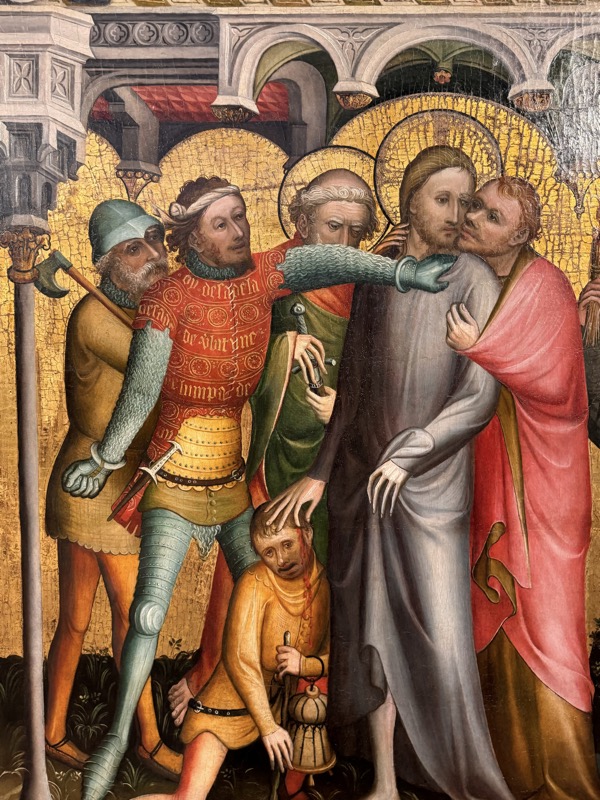
Panel 2
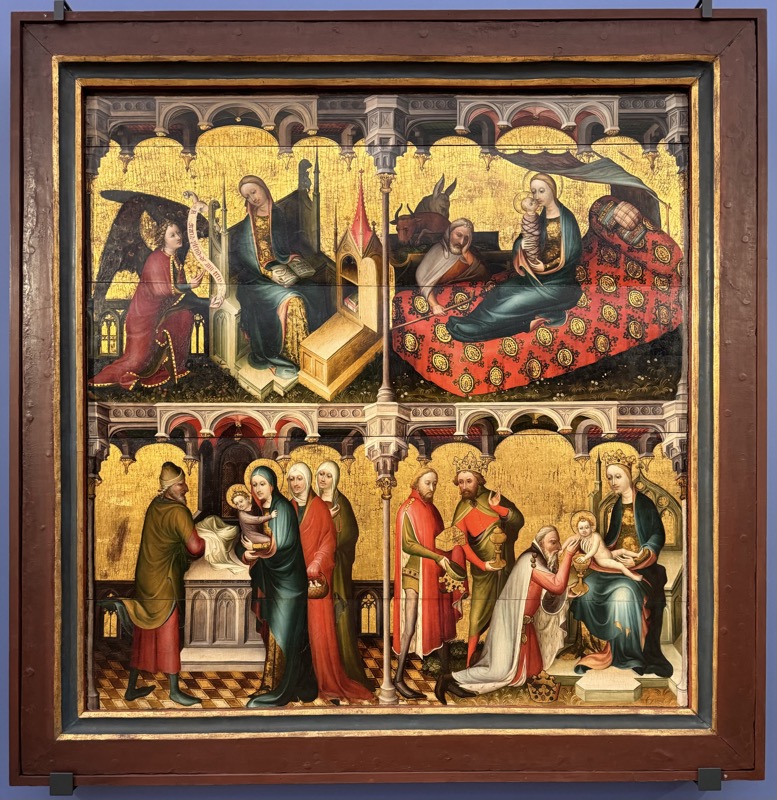
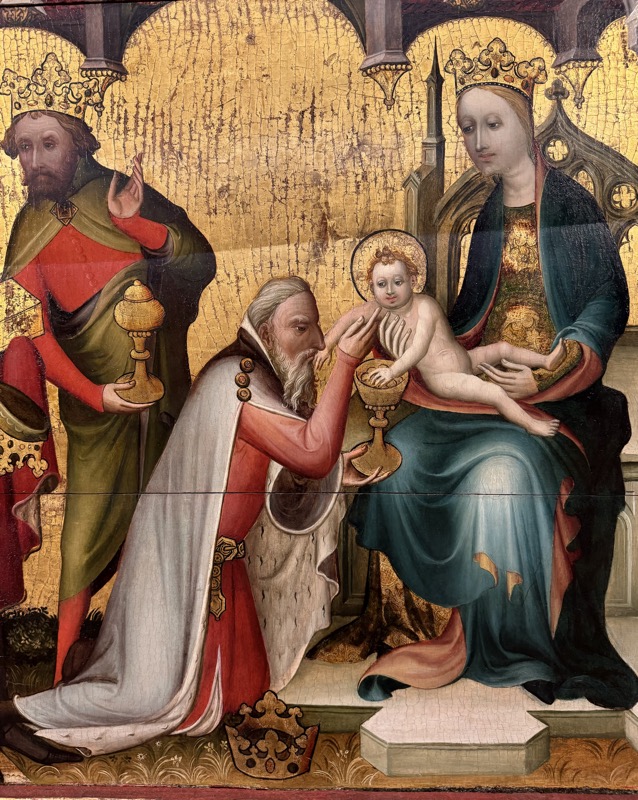
Annunciation to Mary and Coronation of Mary, Masster Bertram Minden, c.1340-1414/14, Hamburg, oak.
The panels formed the outside of the altar on the left. The Annunciation to Mary and her coronation in heaven highlight the importance of the Mother of God in the salvation process. The robes, halos, crowns and angel wings once shimmered in gold and silver, the lions identify Mary as the Queen of Heaven.
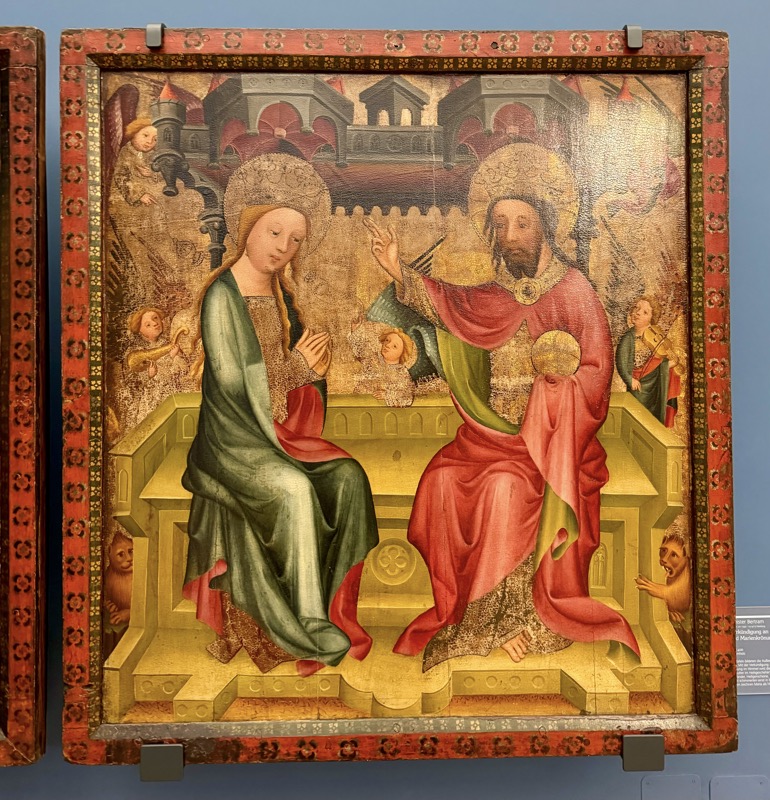
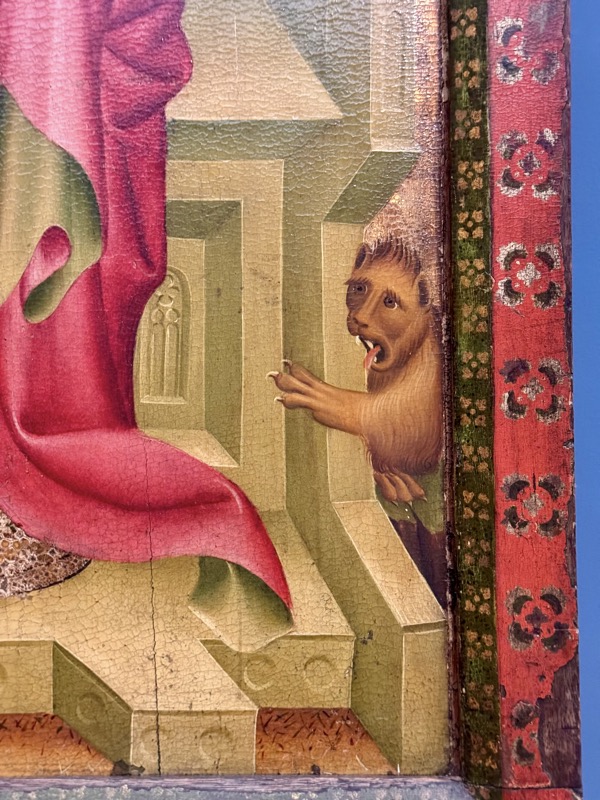
Passion Altar, Master Bertram Minden, c. 1340 – 1414/15 Hamburg, Oak.
It is rare to be able to link the painters mentioned in the written reports with surviving works. In northern Germany, Master Bertram is the exception: he came from Westphalia, was familiar with the art of the imperial court in Prague and with the latest painting in the Netherlands, and ran a successful workshop in Hamburg. The altarpiece was probably created in his studio.
Inv.
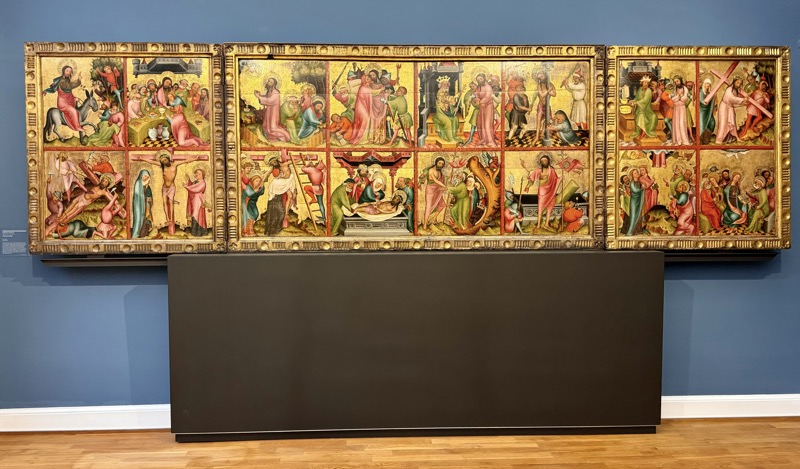
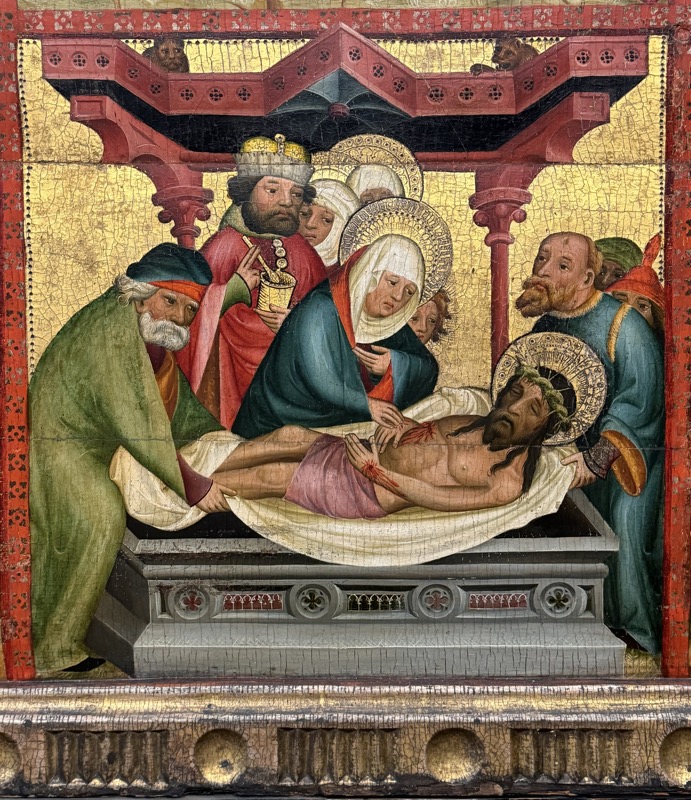
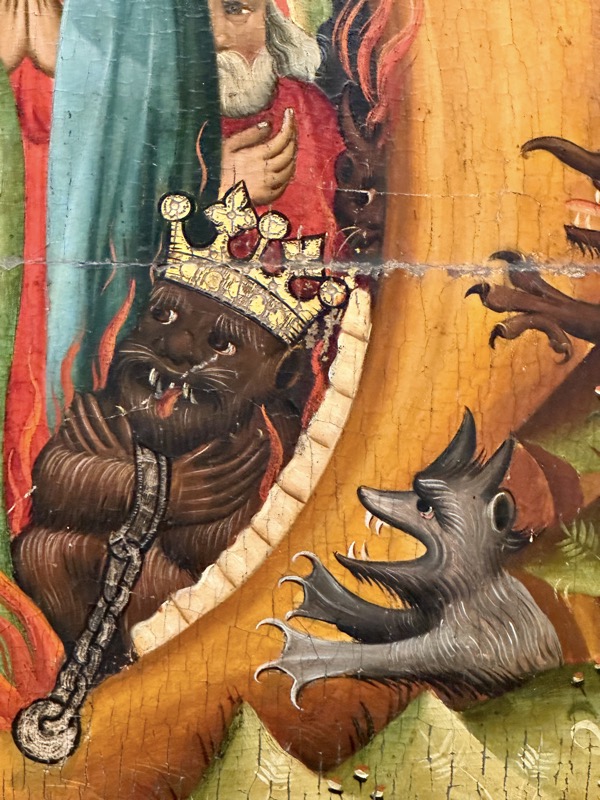
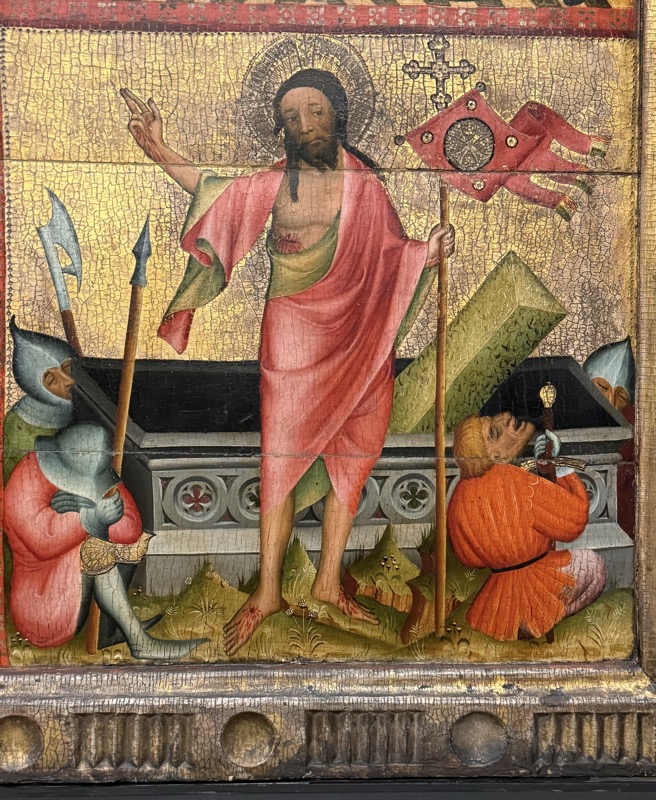
The Gottingen Barfusseraltar, Gottingen, c.1424, oak and spruce.
St Francis of Assisi’s followers were committed to poverty, as itinerant preachers in towns and cities, they walked barefoot or clad in simple sandals, for that reason they were also know as ‘barefoot friars’ (German: Barfuss).
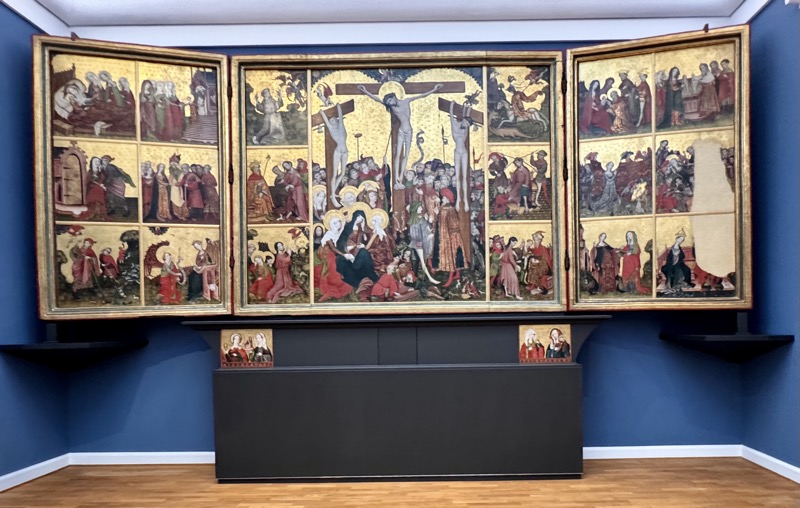
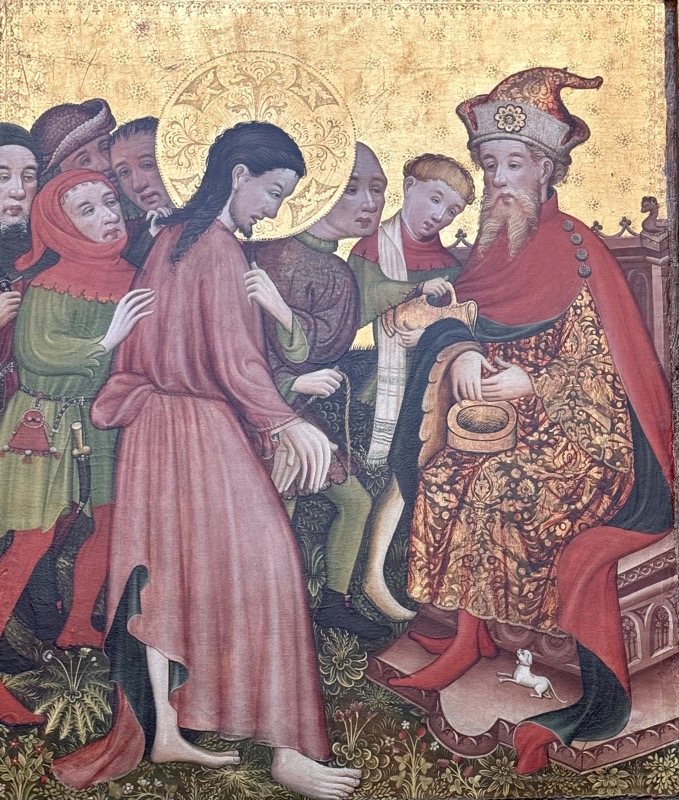
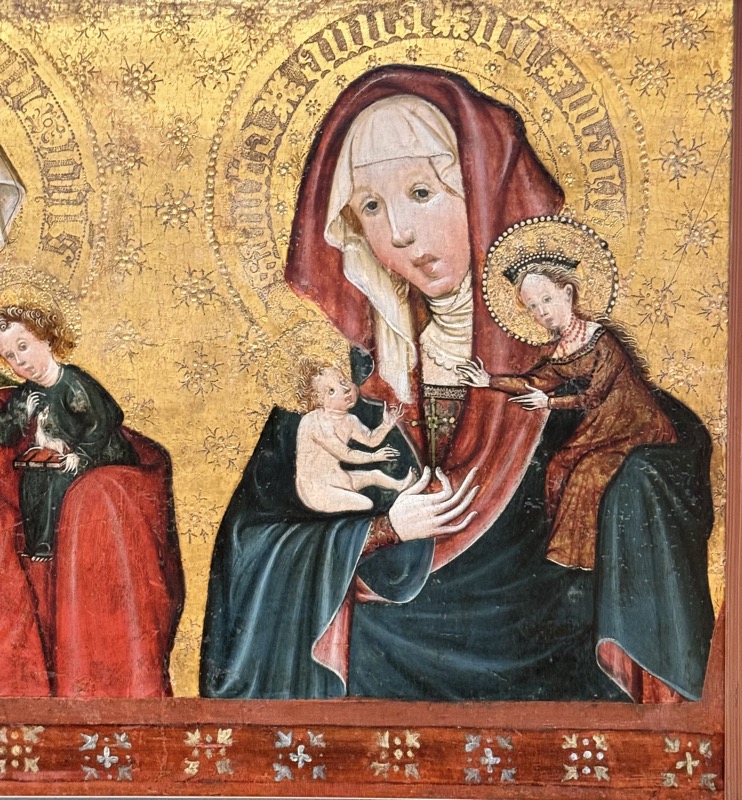
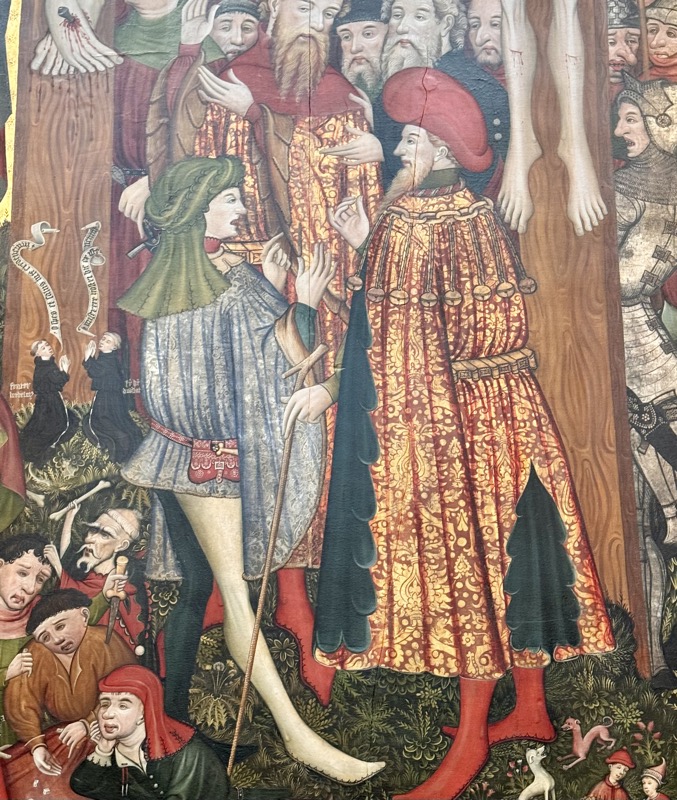
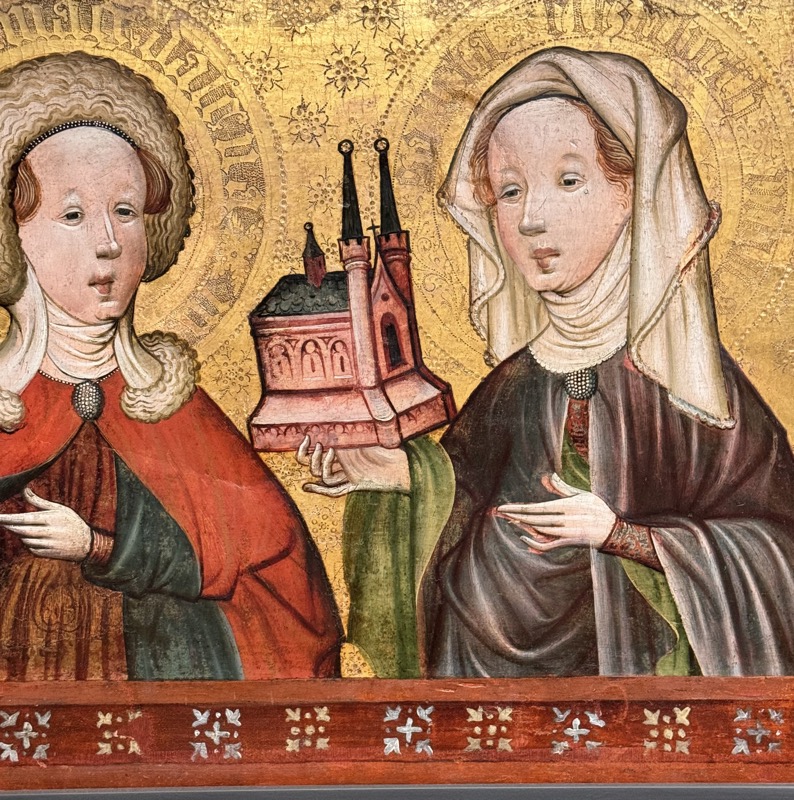
The Golden Panel
Lüneburg, c. 1420-1430, Oak

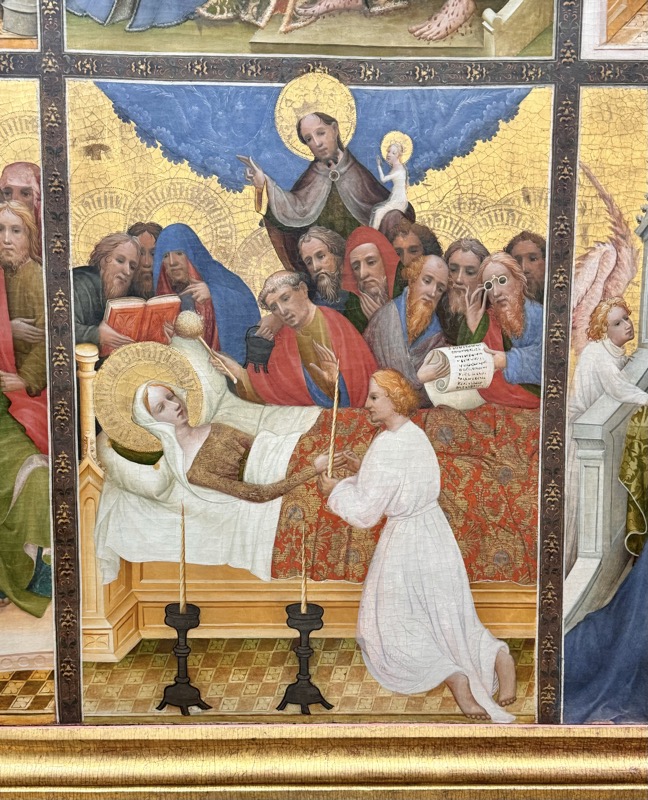
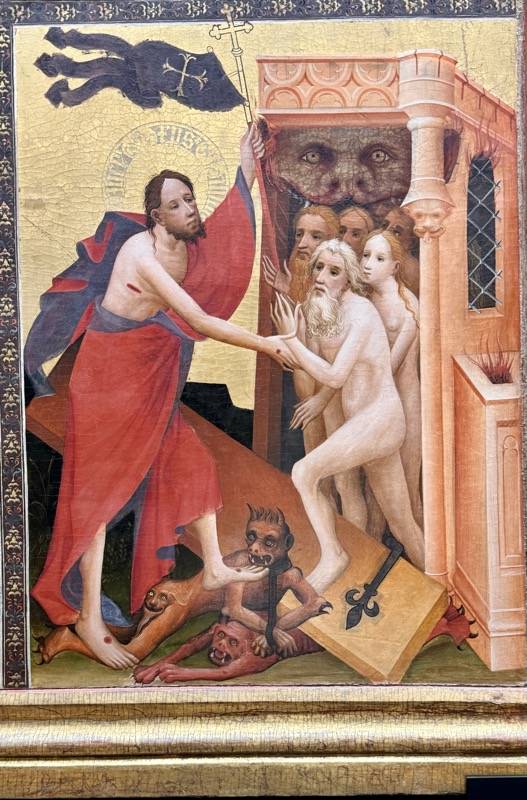
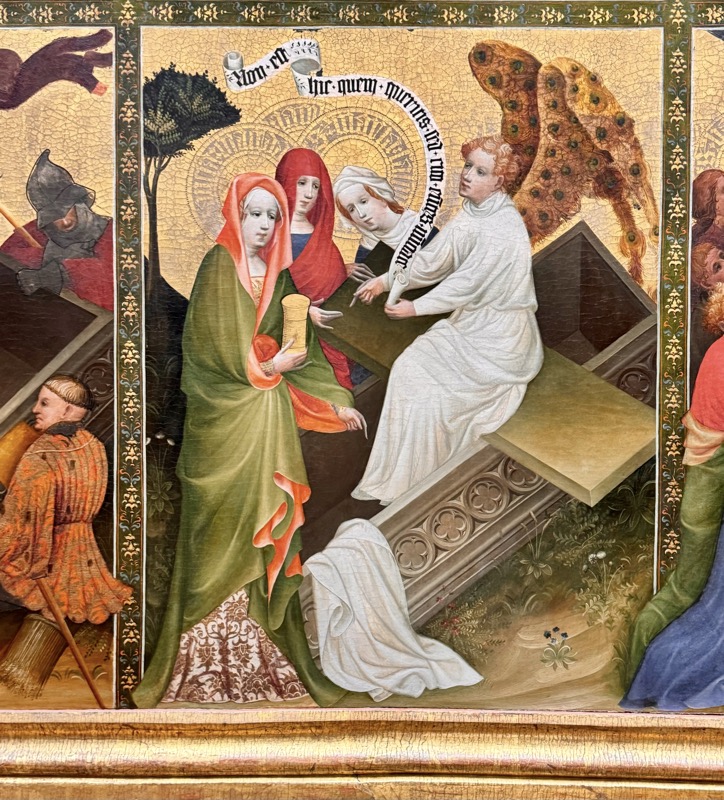
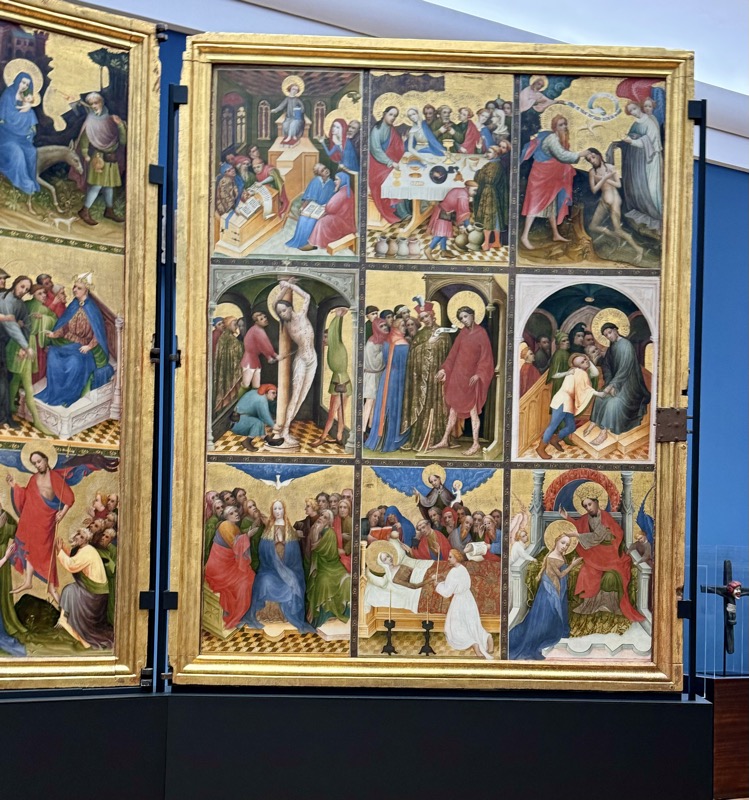
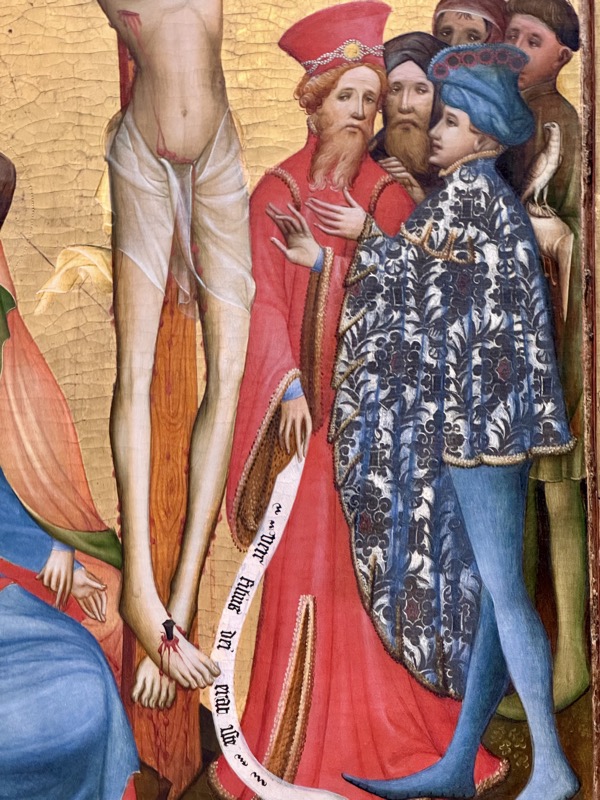
The ‘back’ or outside of the Golden Panel… simply stunning.
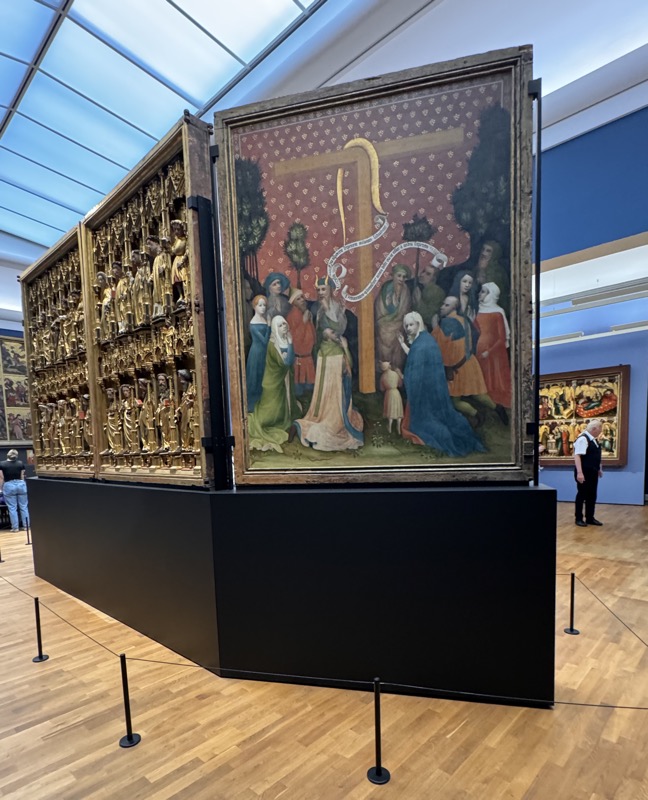
Arm reliquaries of Saints Valerius and Pancras, Lower Saxony, c. 1150/1175, Lime wood.
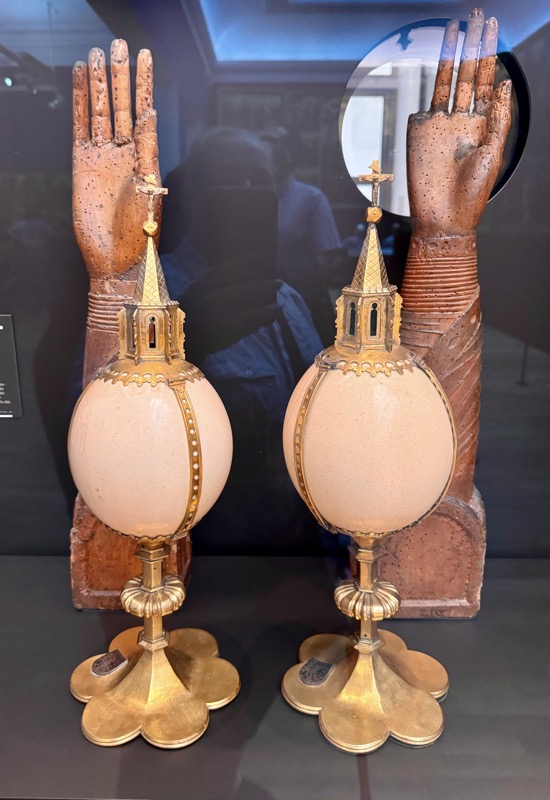
Reliquary bust: 1 of the 11,000 virgins Depicted as St Ursula, Lower Saxony (Lüneburg?), c.1300, oak.
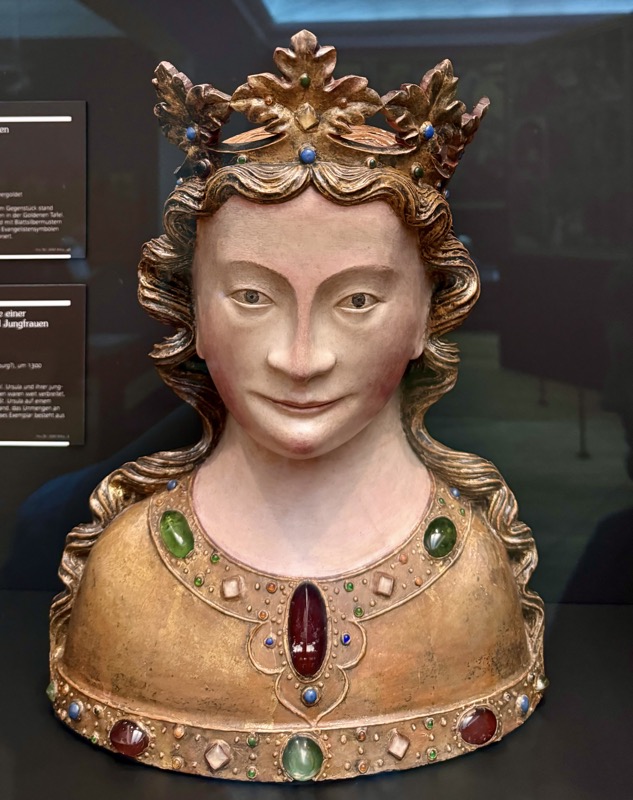
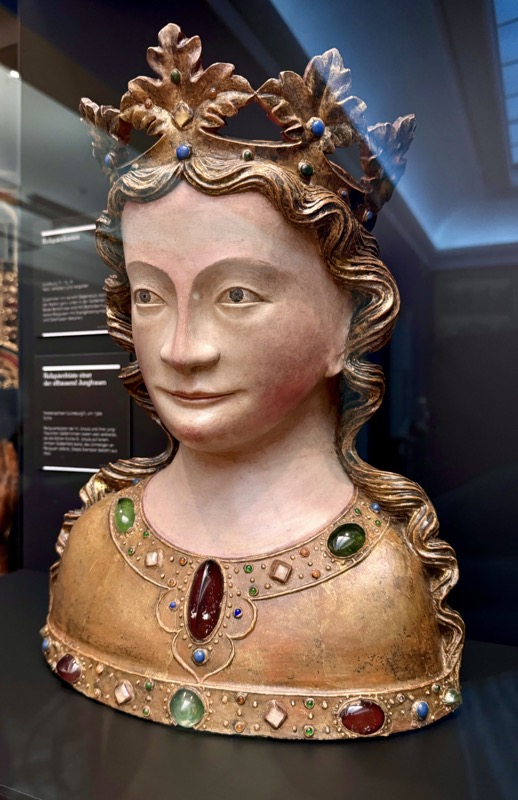
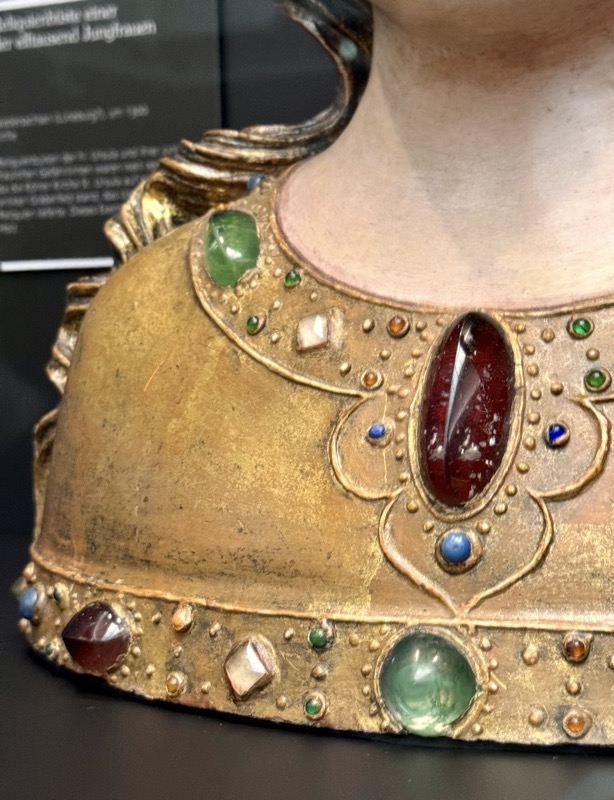
Two reliquary busts of the 11,000 virgins, Lower Saxony (Lüneburg?), c.1432, lime wood, silver-plated.
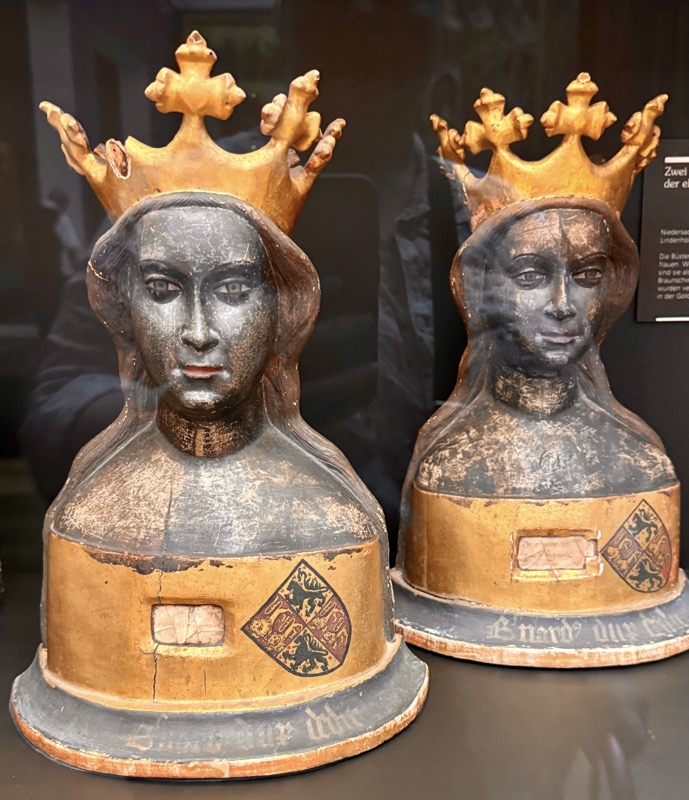
Reliquary box, Lüneburg, 15th, Wood, silver-plated and gold-plated.
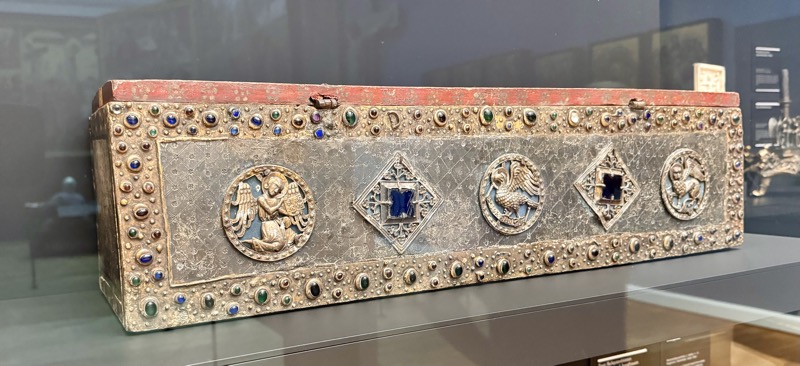
Reliquary box, Lüneburg, 15th, Wood, silver-plated and gold-plated.
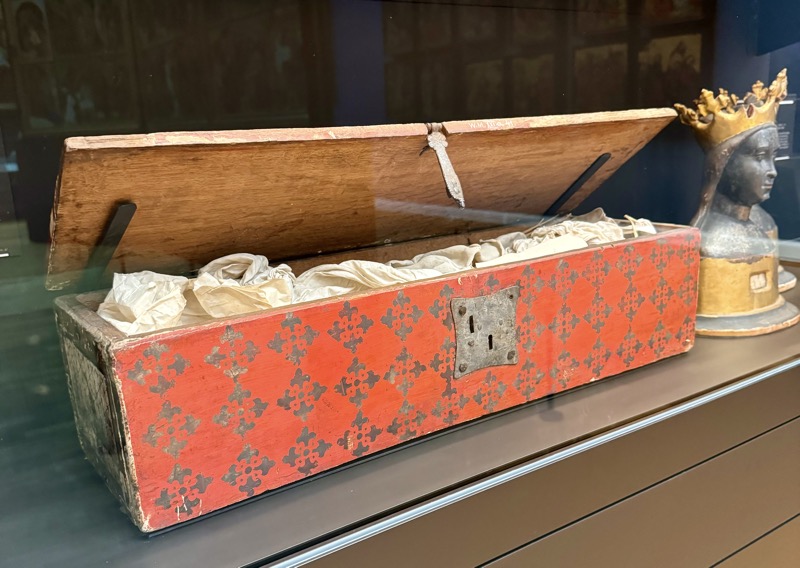
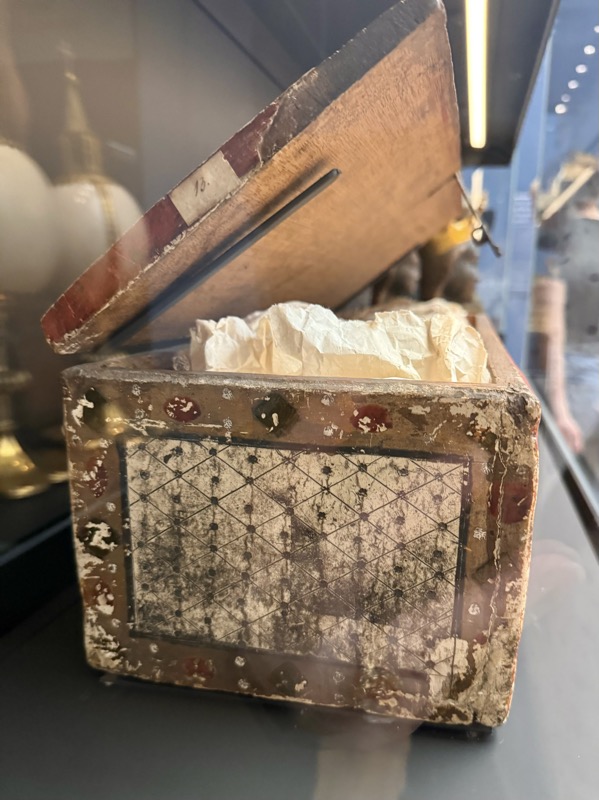
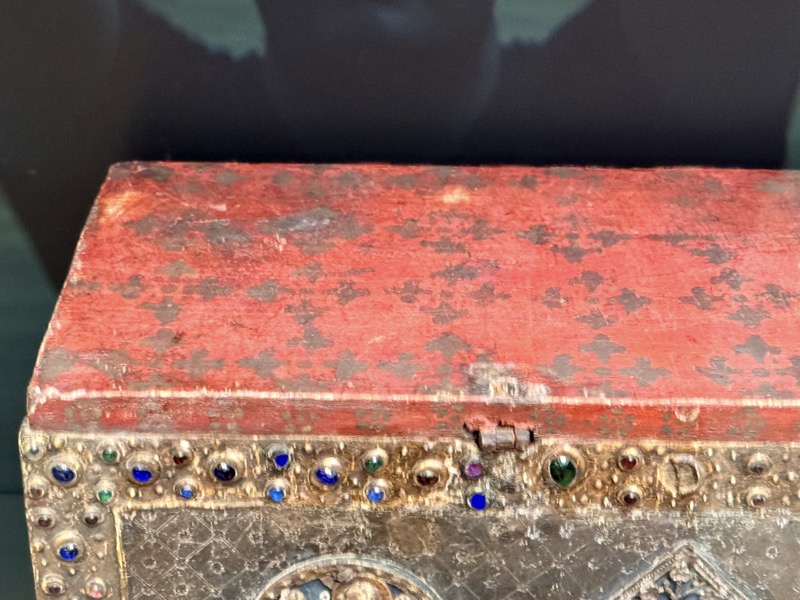
Reliquary in the form of a book/ ivory tablet from the Romanos group
Lower Saxony, 14th/15th century / Constantinople, around 950, wood, linen fabric, parchment / ivory
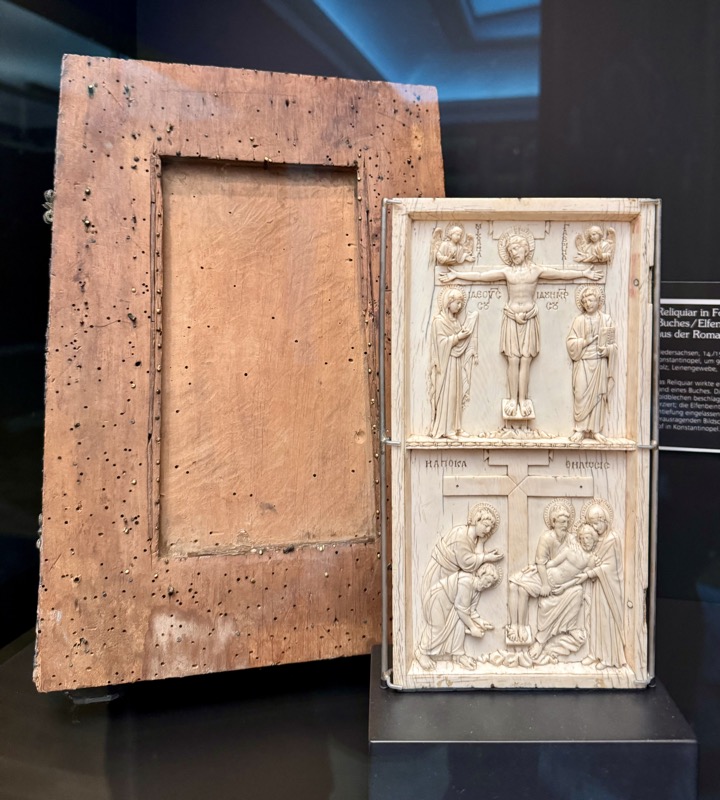
Cross base with the resurrected Adam, West Germany, 11th/12th century Bronze, remains of gilding
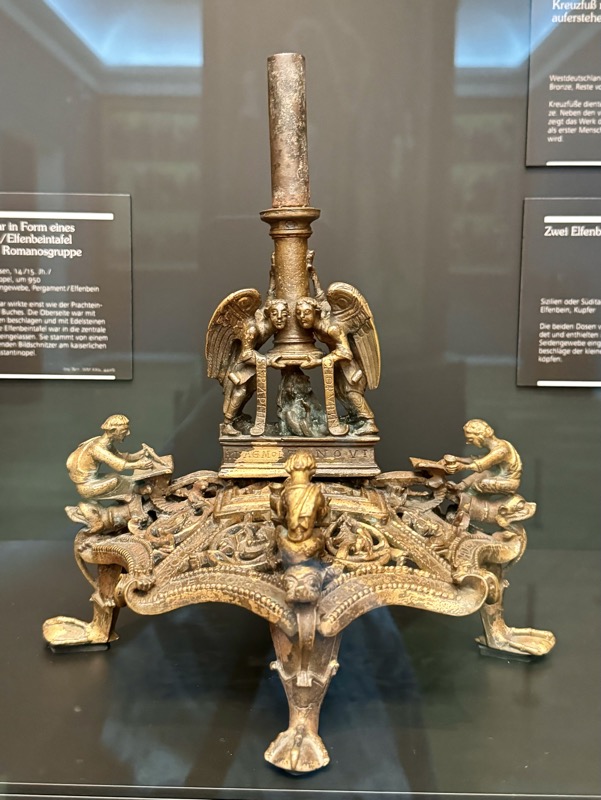
Two ivory boxes, Sicily or southern Italy, 12th/14th century.
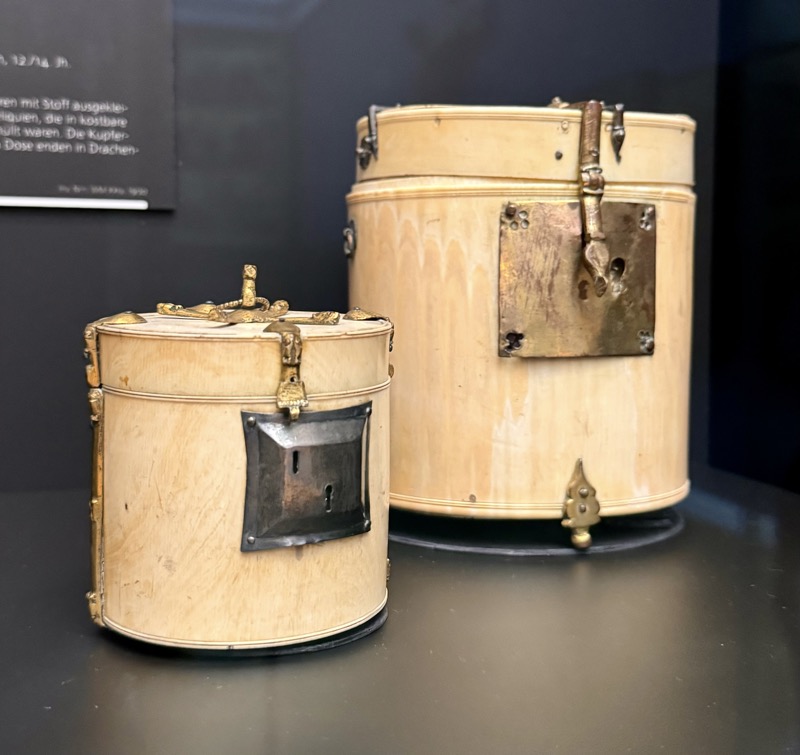
Cain and Abel chest, Lower Saxony, Westphalia, 11th century… c. 1230, oak core,
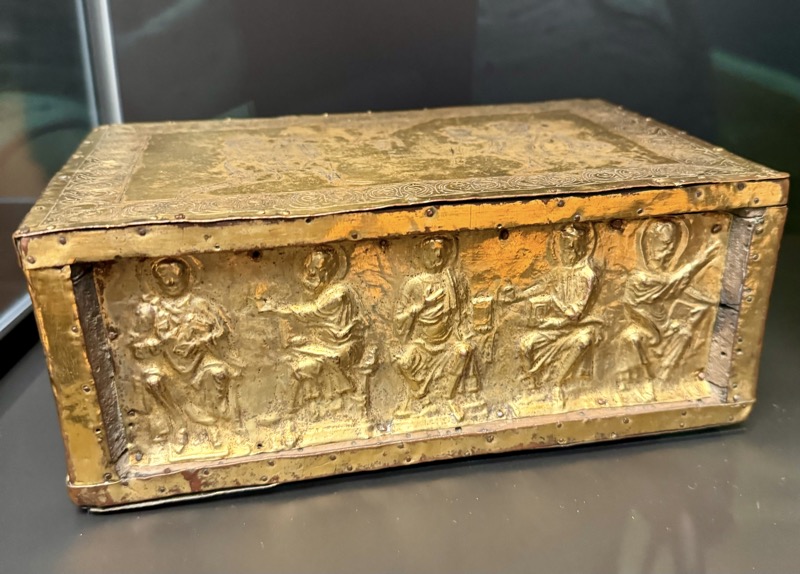
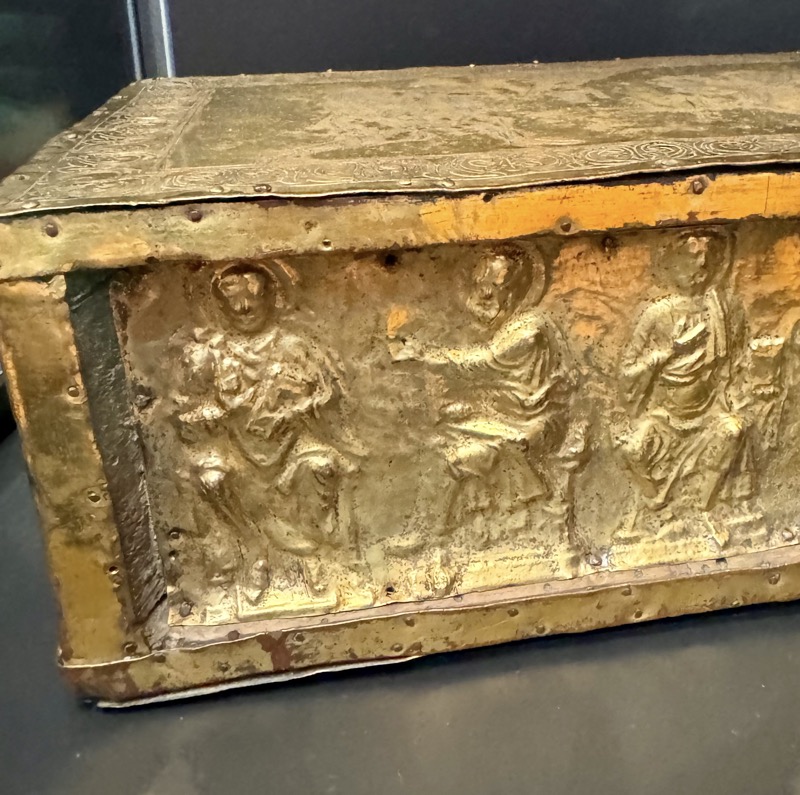
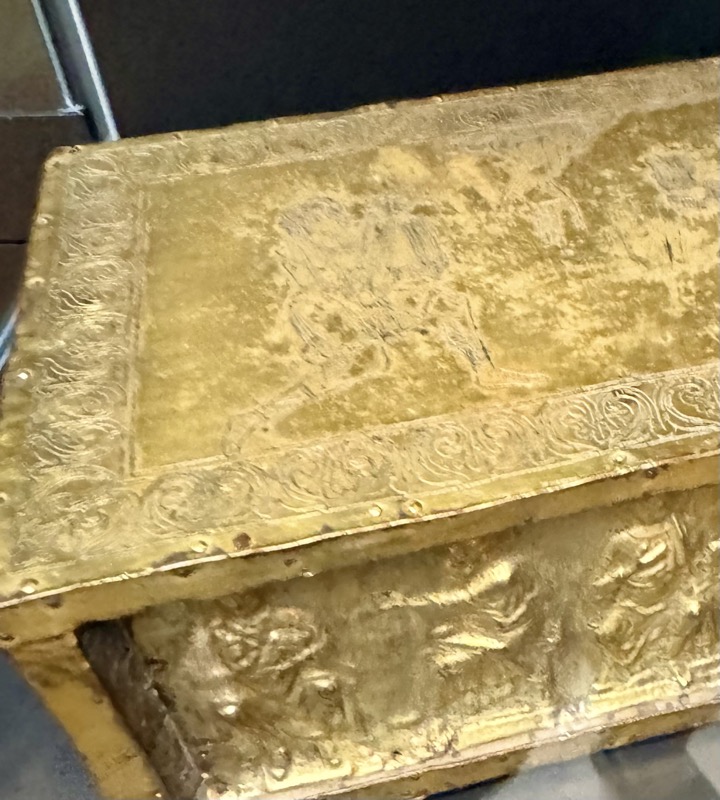
Enamelled reliquary box, Lower Saxony, Rhineland, Maas region, 12th-13th century, wood, copper, pit enamel, brown varnish
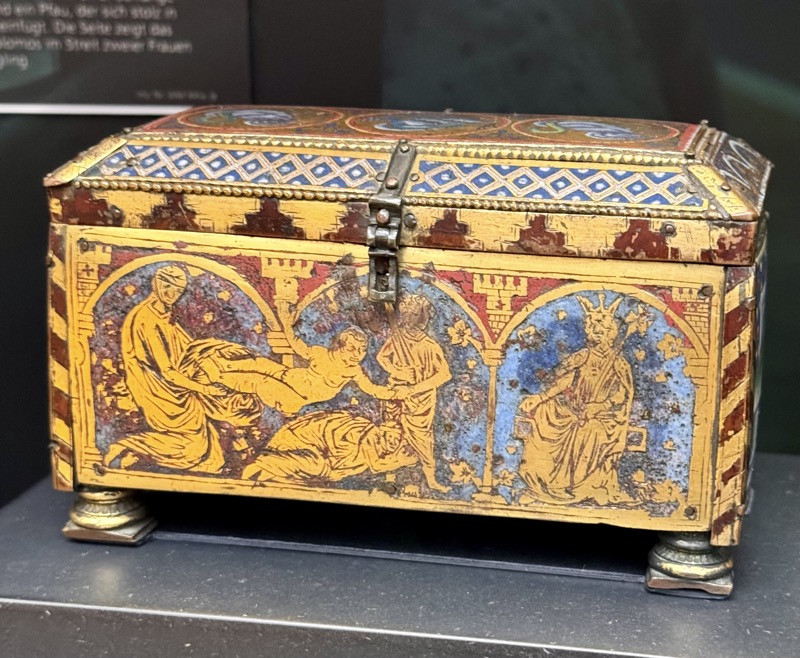
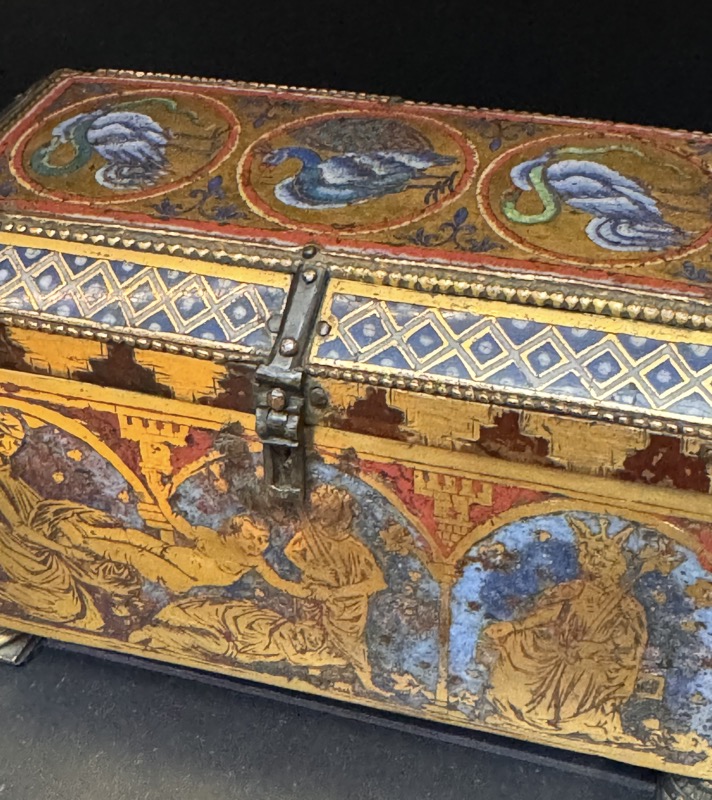
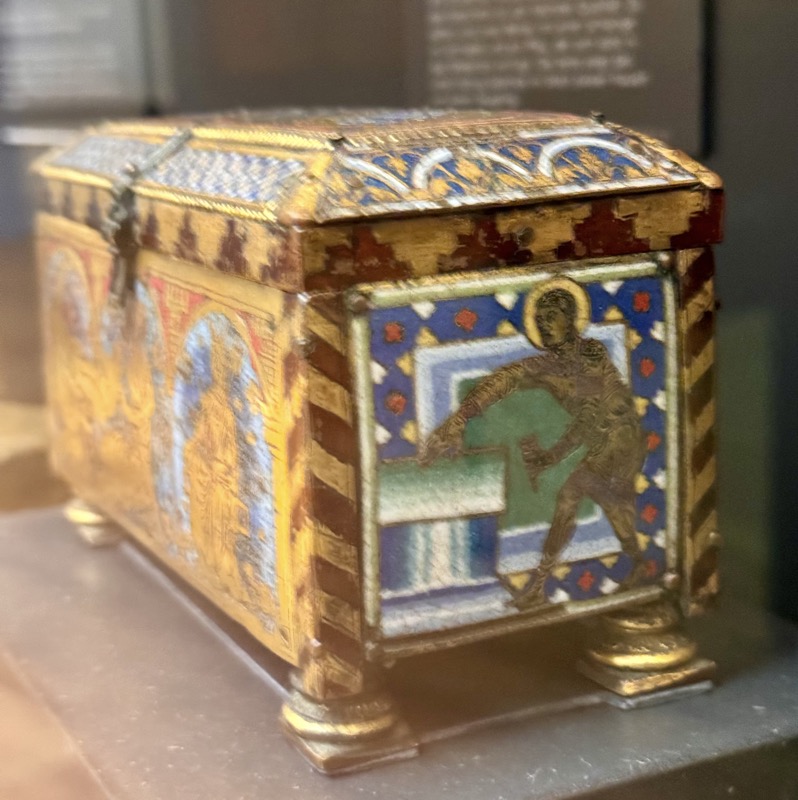
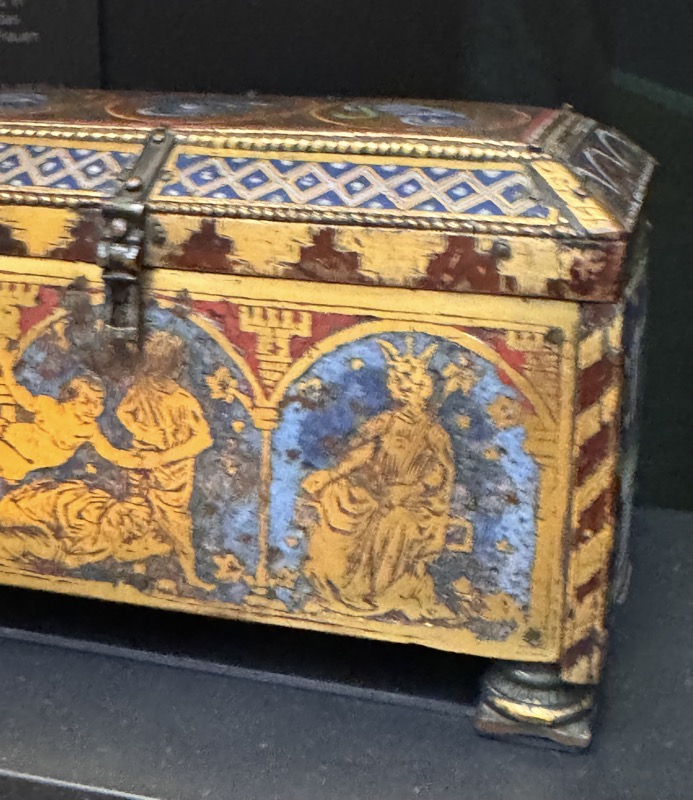
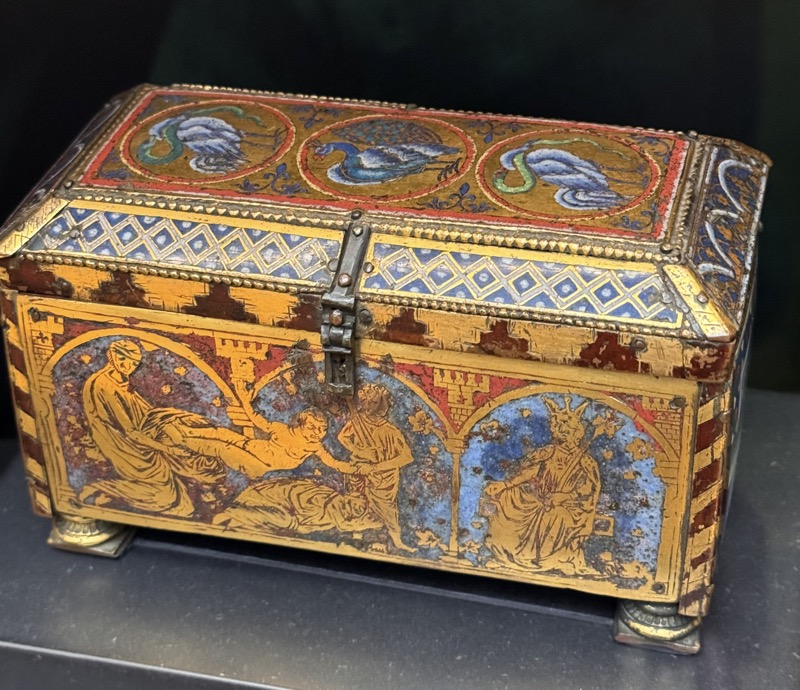
Abraham casket, West Germany, Lower Saxony, c.1025-1050, oak, copper-gilt fittings.
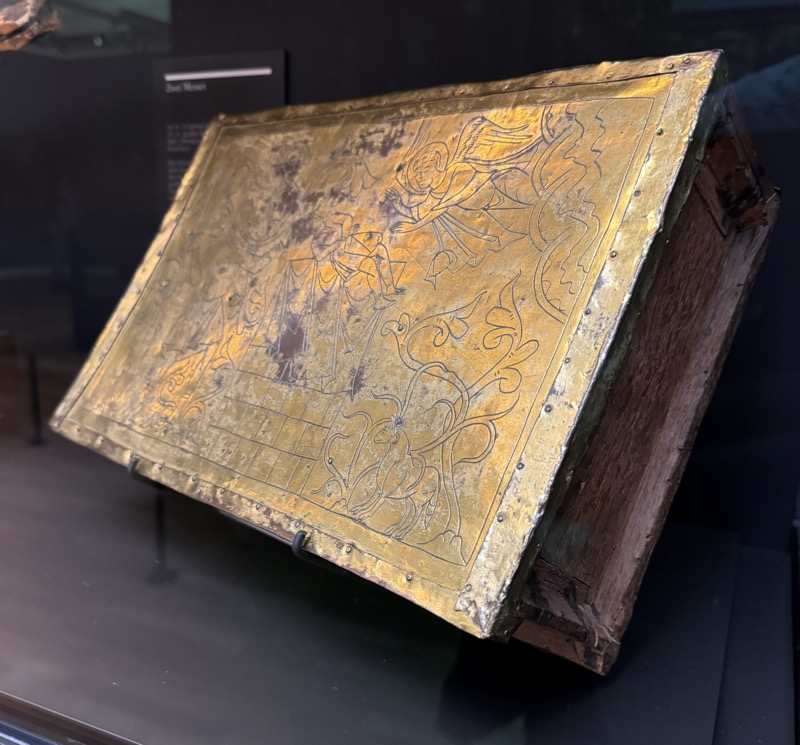
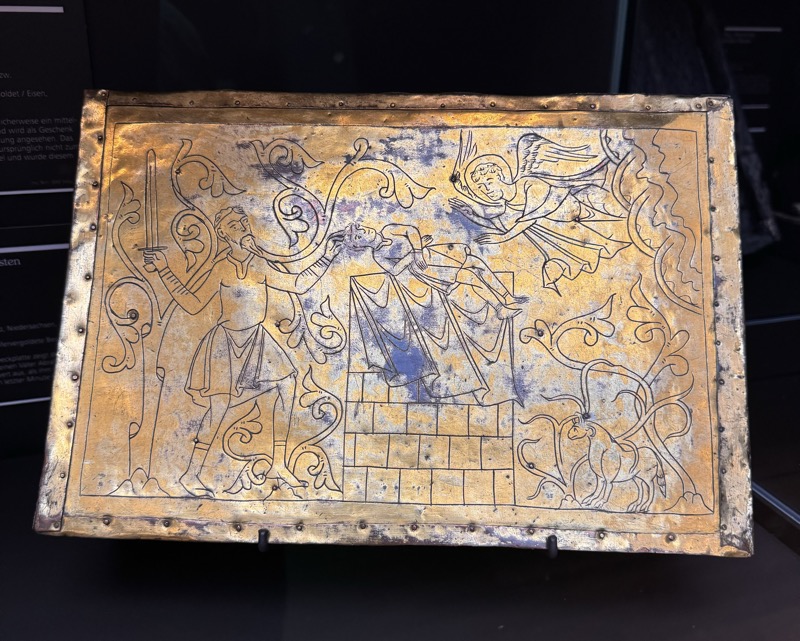
Two bowls for washing hands, Limoges, late 12thC, copper, enamelled, gold-plated
The magnificent bowls bear the coat of arms of the French ruling dynasty of the Plantagenêt. They were originally used for washing hands during courtly table ceremonies. They probably came to Lüneburg via Richard the Lionheart. HOLY SHIT!!!
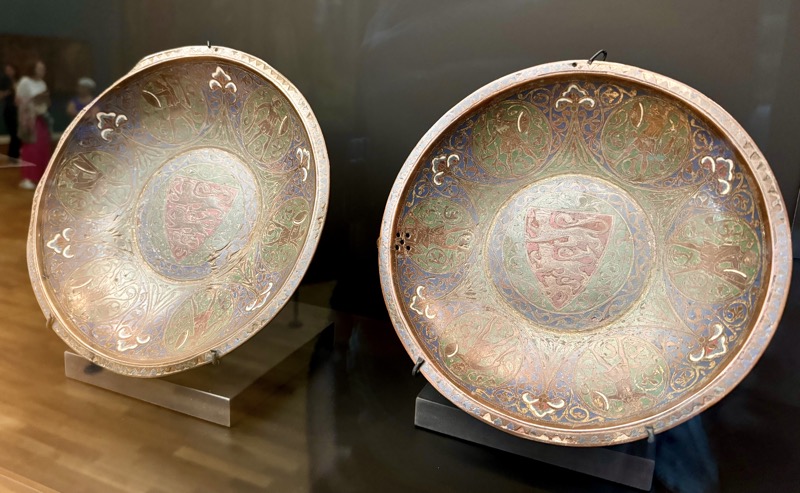
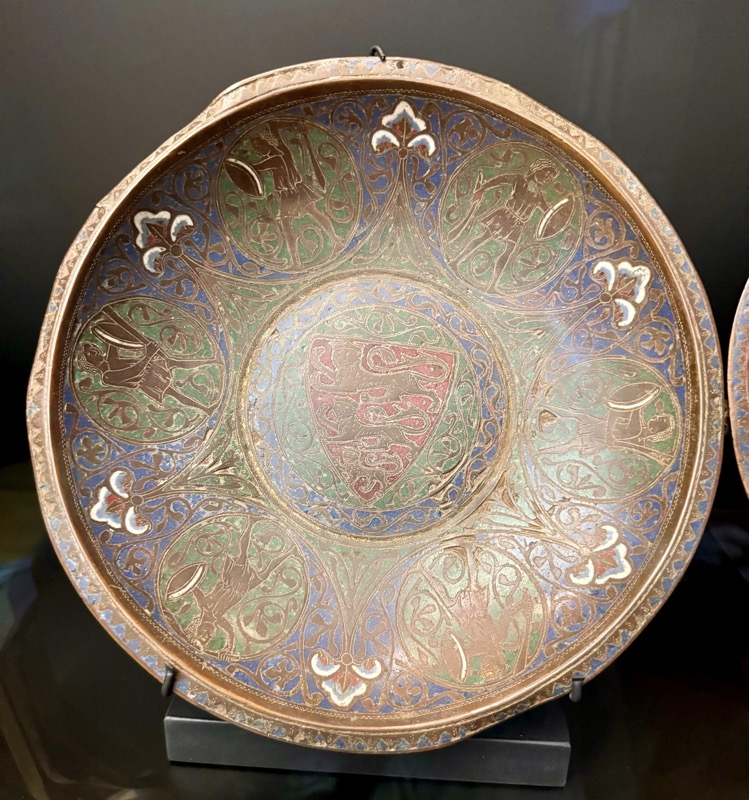
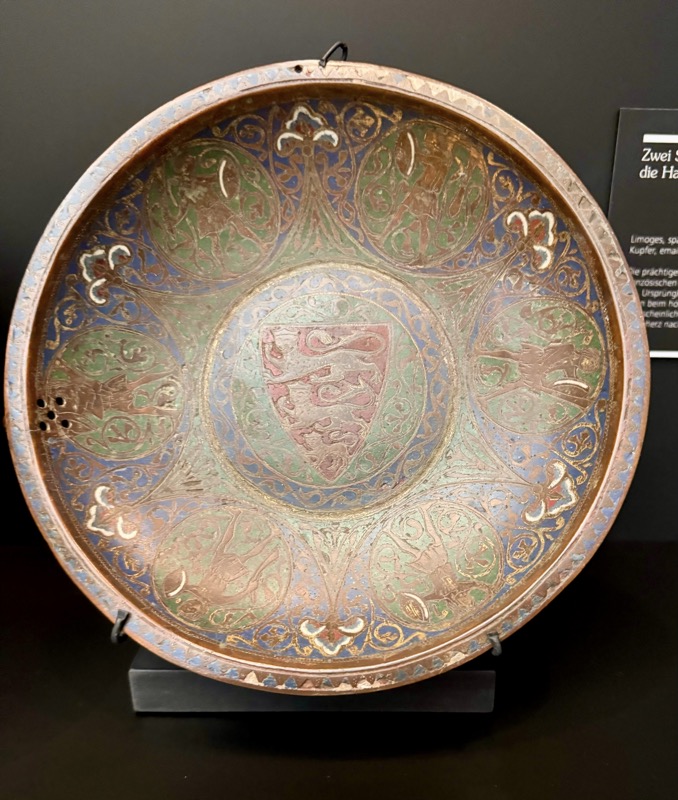
Leather box, Lower Saxony, around 1300 wood, leather-covered, stamped and then painted.
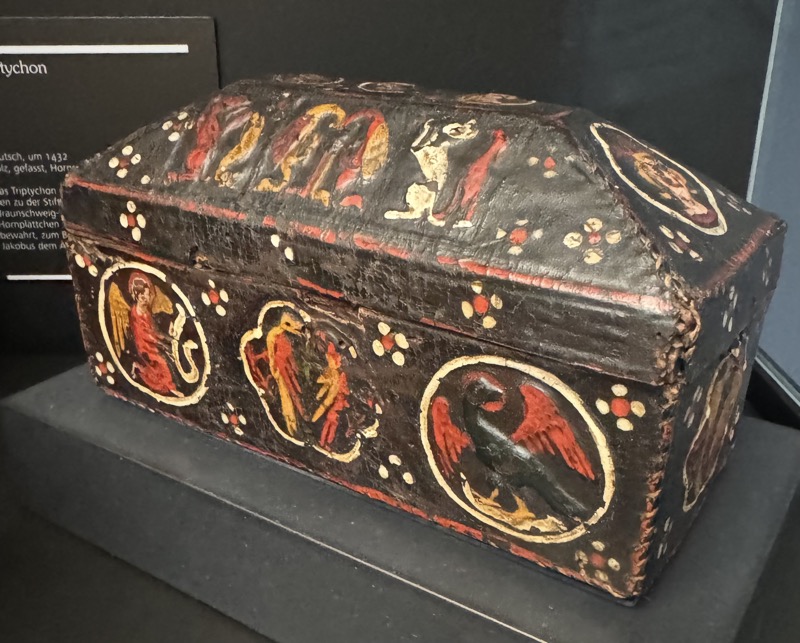
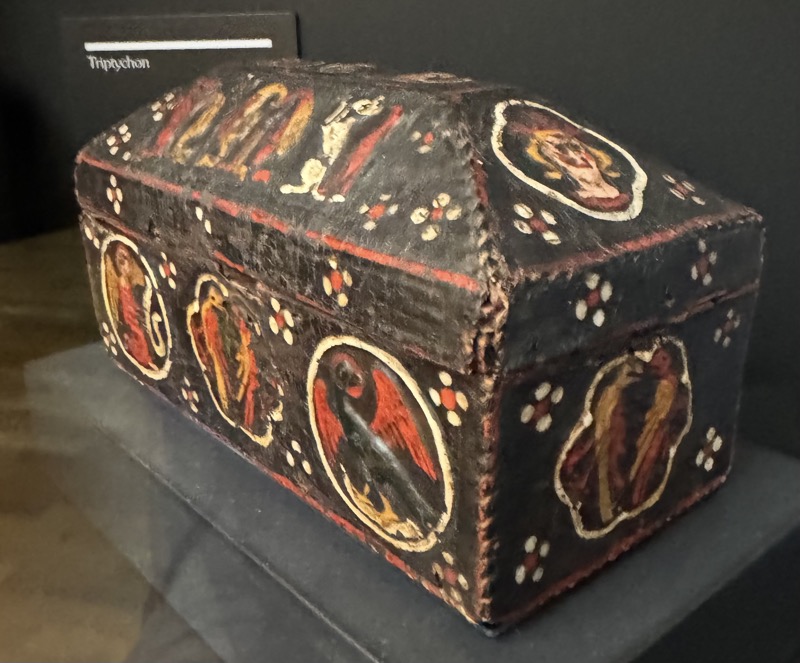
Portable Triptych Relics, German, c.1432, wood, painted, horn discs.
According to the inscription and coat of arms, the triptych belongs to the foundation of Duke Bernhard I of Brunswick-Lüneburg. A large number of relics are kept behind transparent horn discs, for example pieces of the the Holy Cross, from James the Elder and from the Holy Sepulchre.
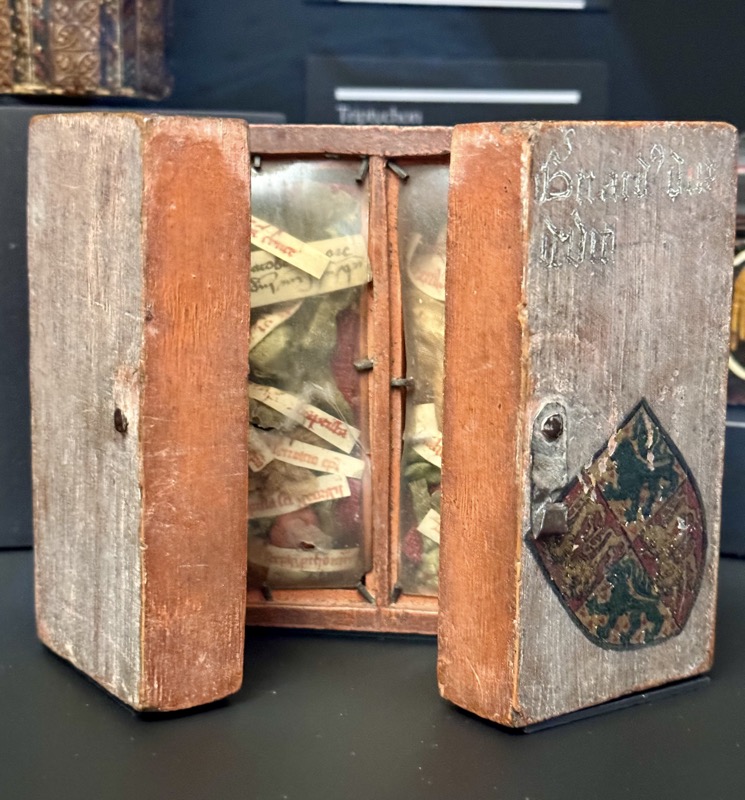
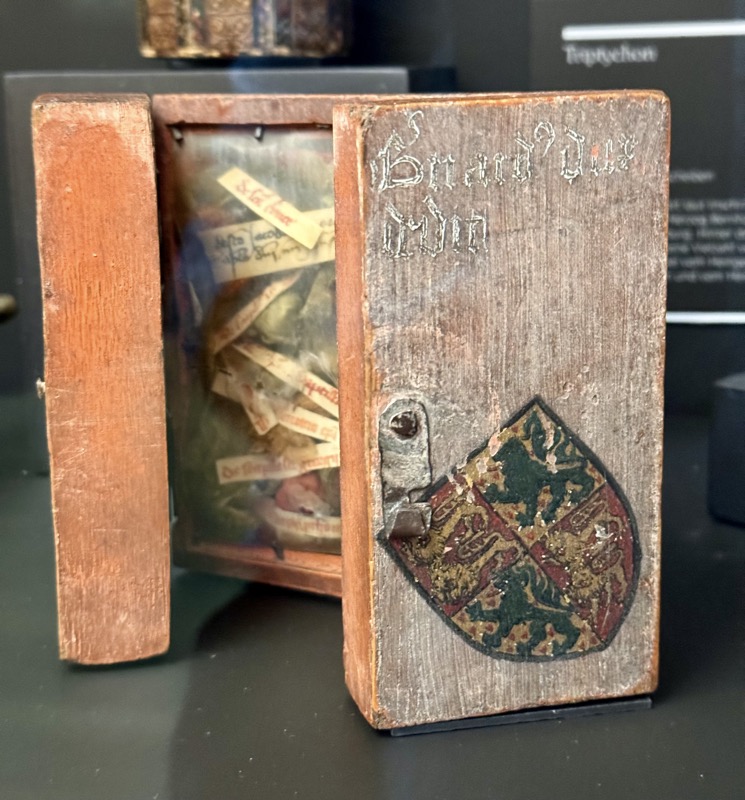
Octagonal container,
Italy, 14th C
Leather, parchment, pastiglia
The container covered with colored parchment strips is an extremely rare and beautiful piece. Before it was converted into a reliquary, it may have served as a cover for a drinking cup.
Lambert Altar, Master of the so-called Hildesheim, 12 panels of a Passion Altarpiece, c.1420/30, Oak
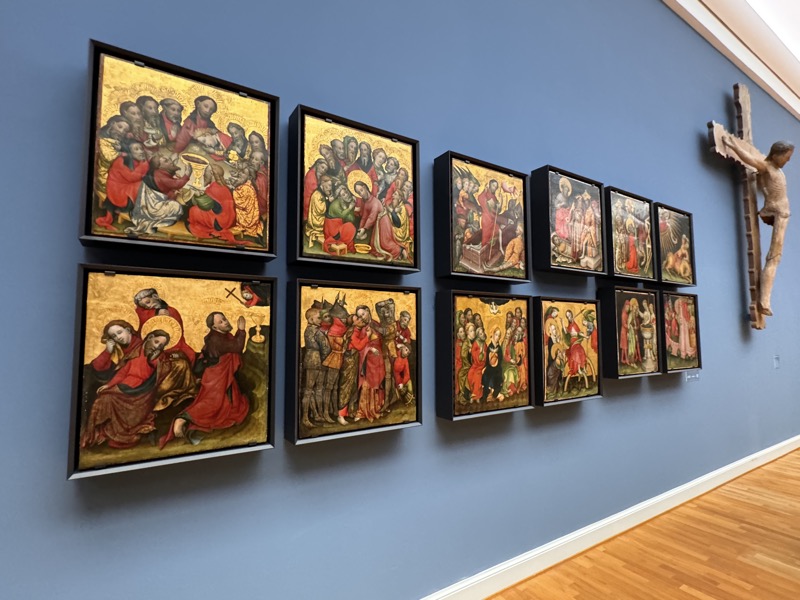
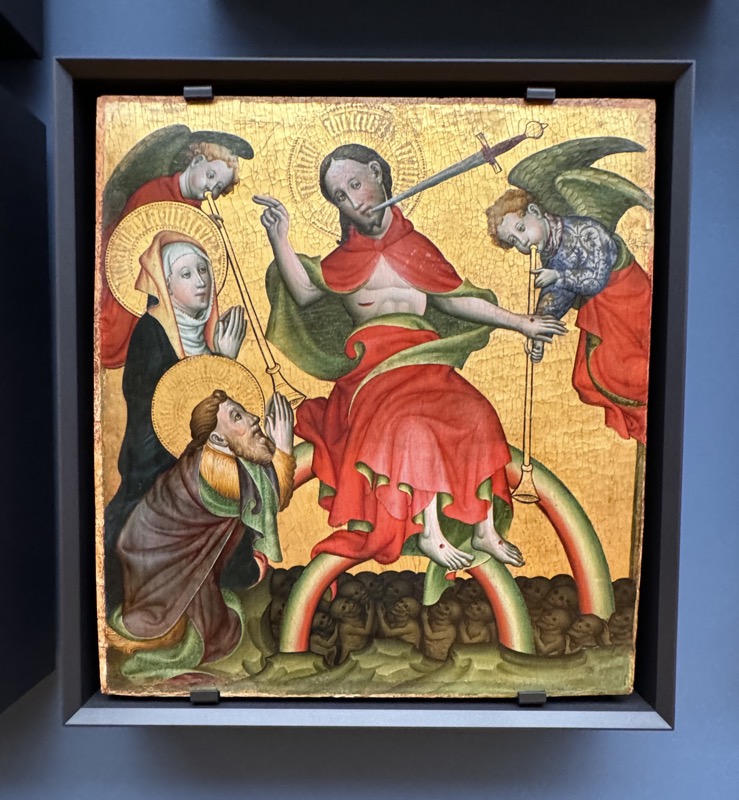
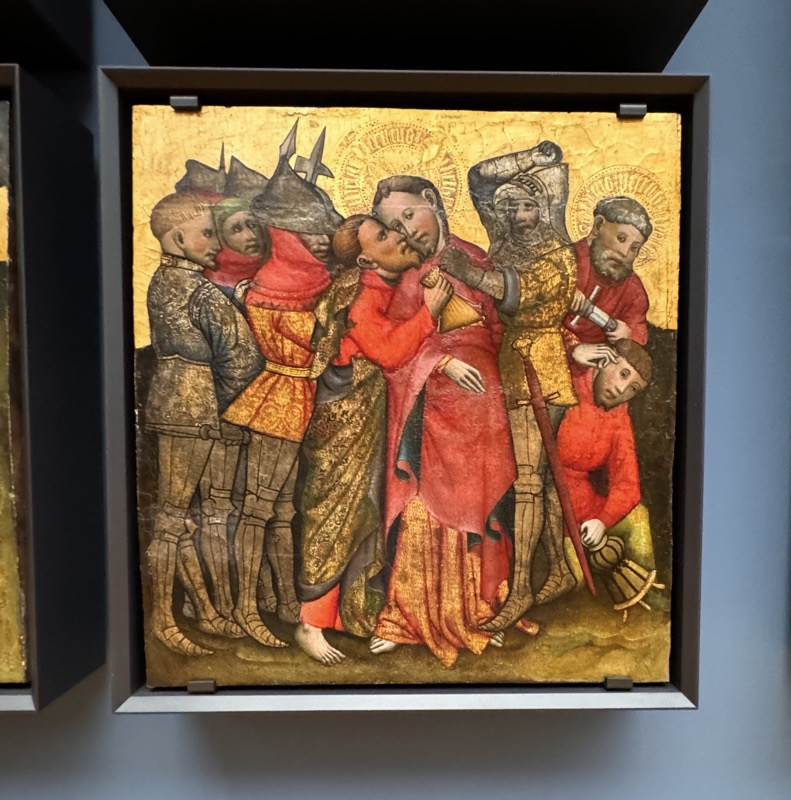
Diptych, Lower Saxony (Hildesheim), c.1420, Lime wood
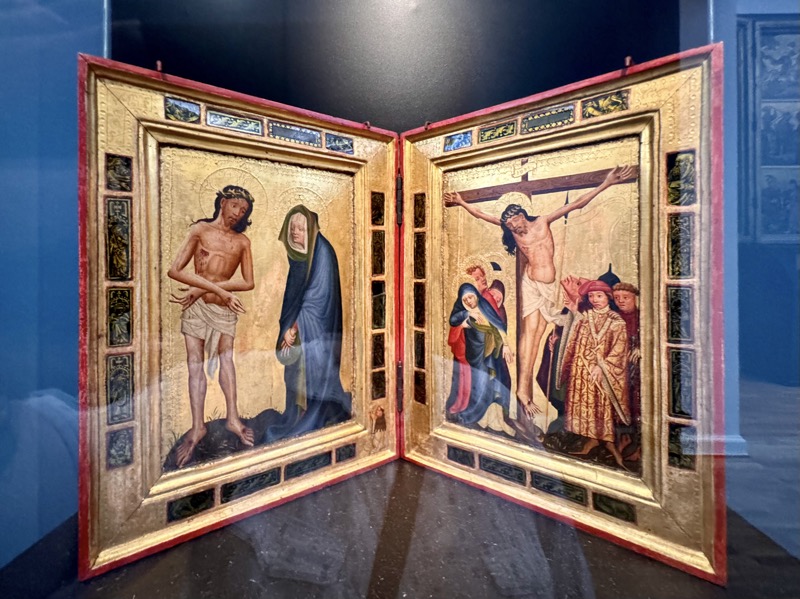
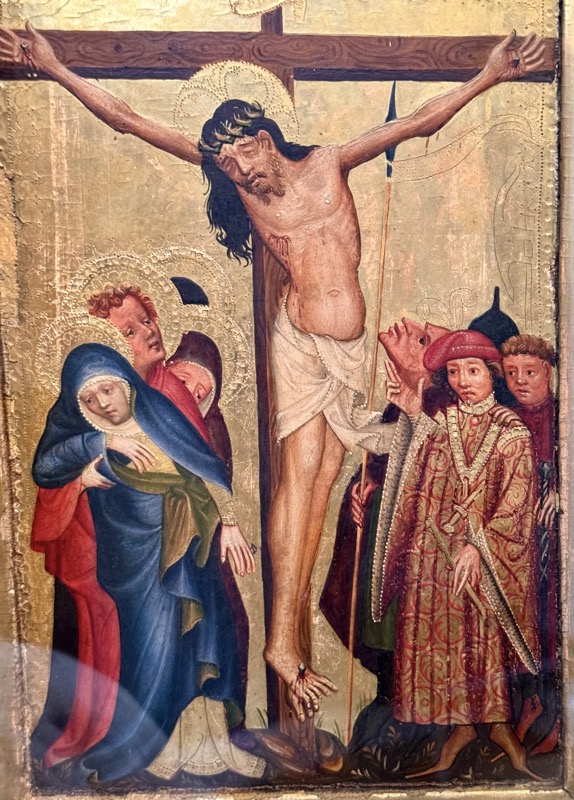
The Tree of Life, c.1400, Master of the Richardson Triptych active in Sama (1370-1418), poplar wood.
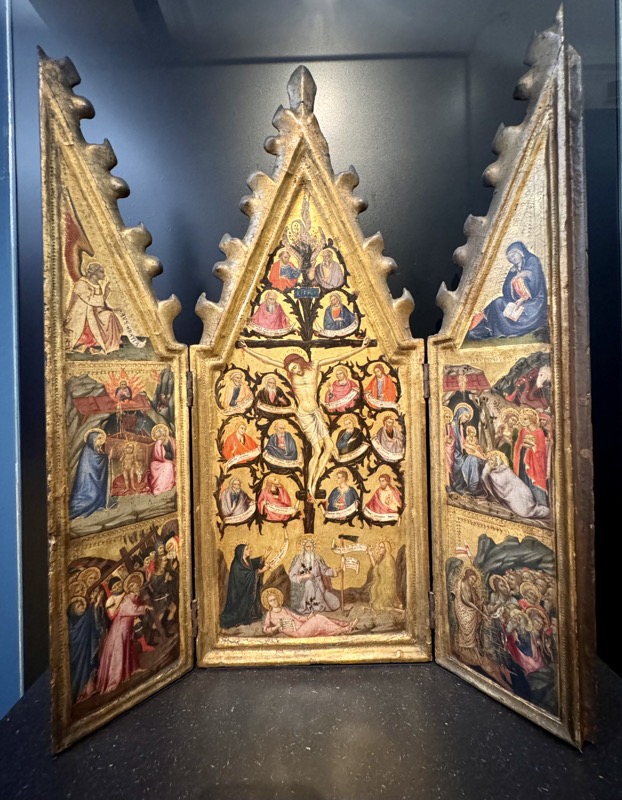
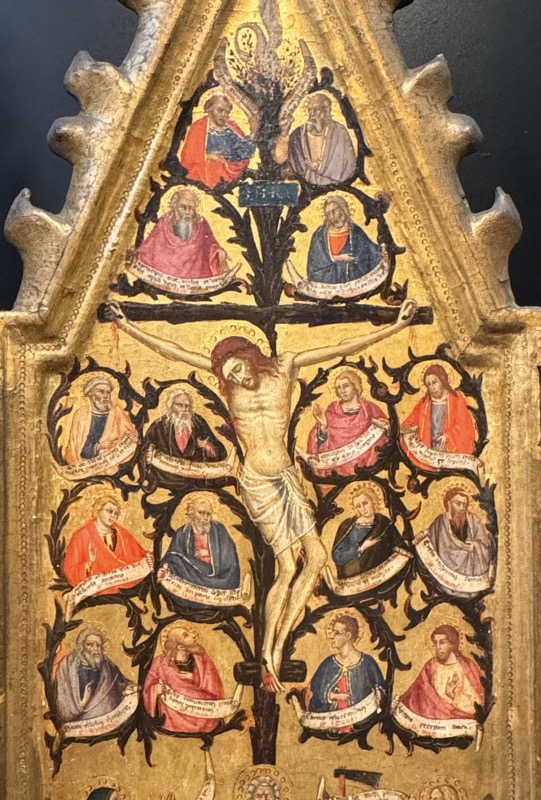
Crucifixion Altar c.1506, Hans Raphon (1460-1512), Göttingen or Northeim, lime wood.
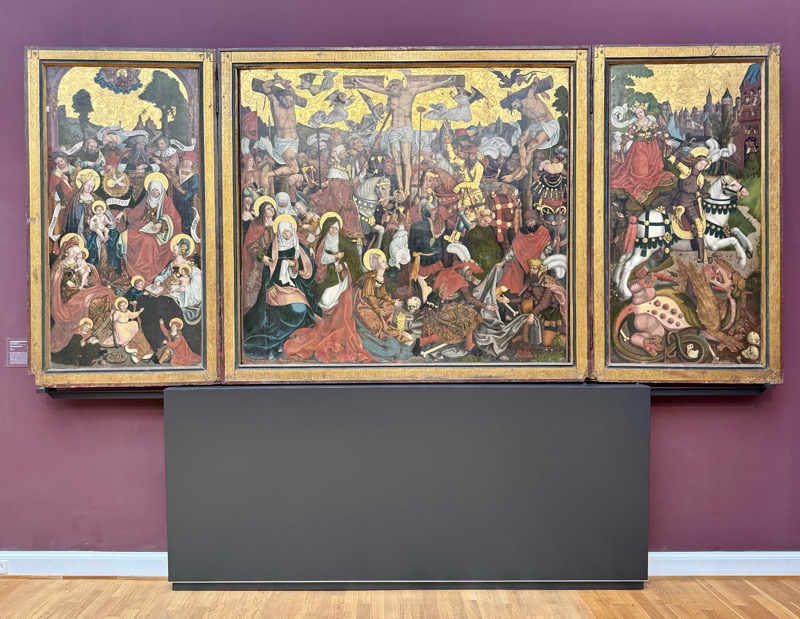
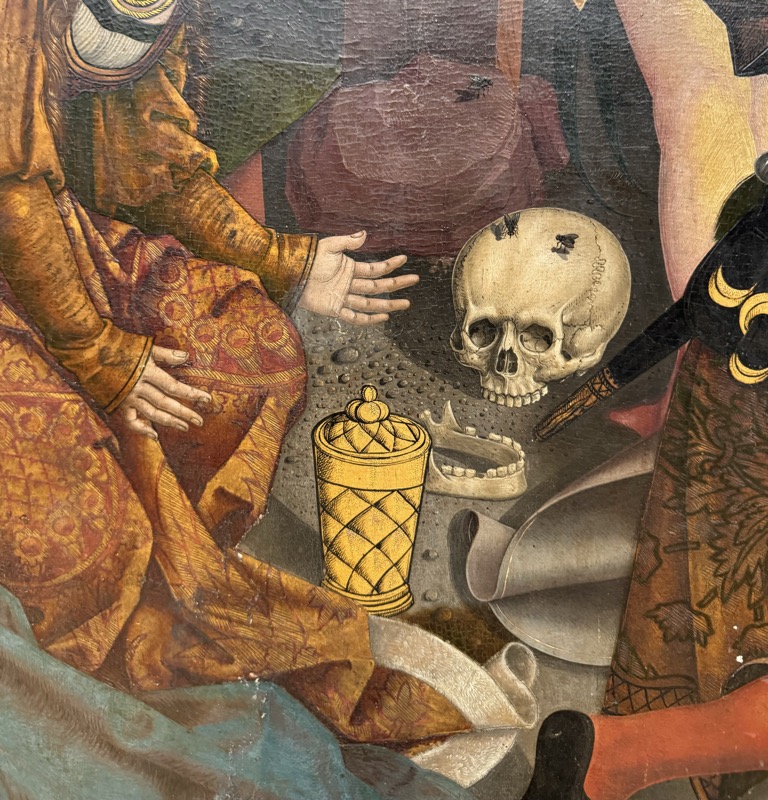
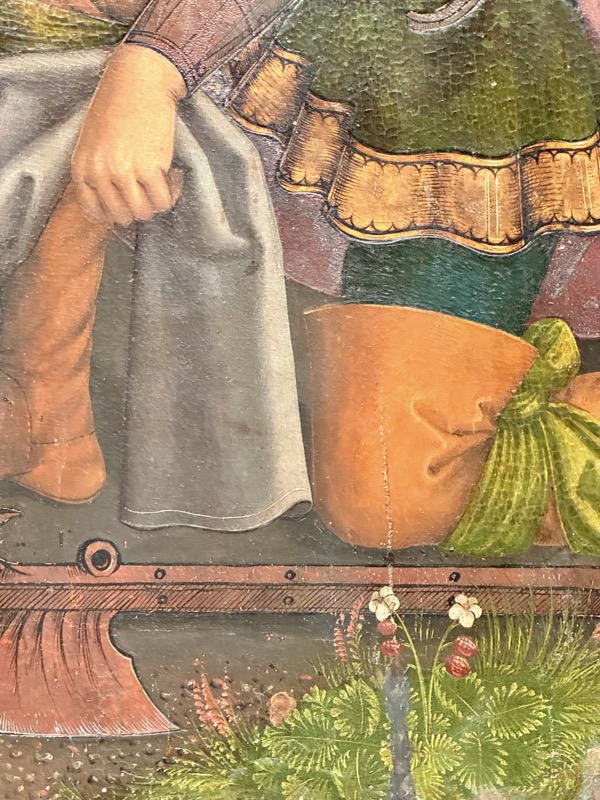
Mercy Altar, c,1510/1520, Tilman Riemenschneider (and workshop operating 1460-1531), Heiligenstadt/Eichsfeld, Würzburg, Lime wood.
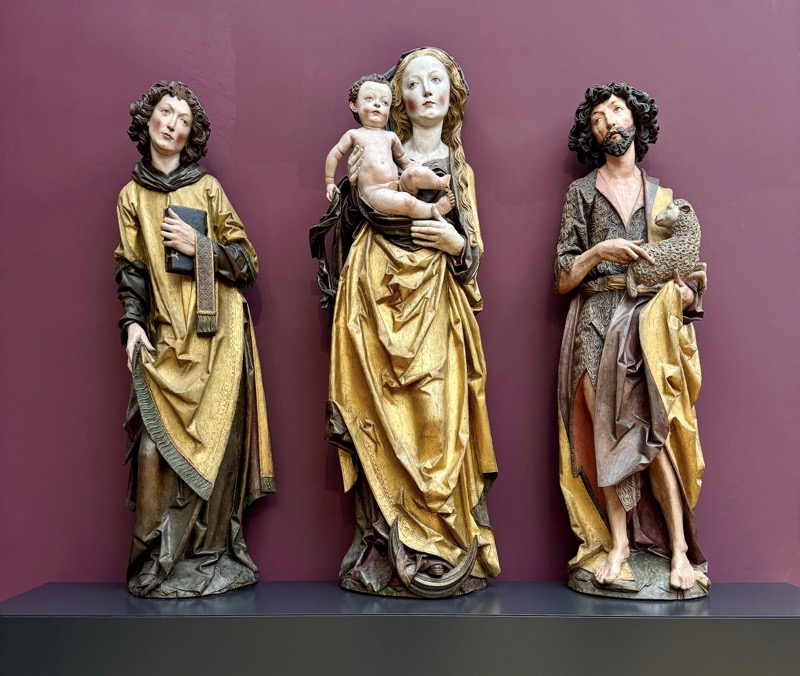
Family altar, Lower Saxony, c. 1500/1510, Lime wood (?)
St. Anne, Mary’s mother, was particularly popular in the late Middle Ages. A chapel was dedicated to her in the Hanover Kreuzkirche, for which the winged altar was created. Her daughters, grandchildren, husbands and sons-in-law have gathered around the saint. On the wings there are various scenes from her life on the left, and the birth of Mary on the right.
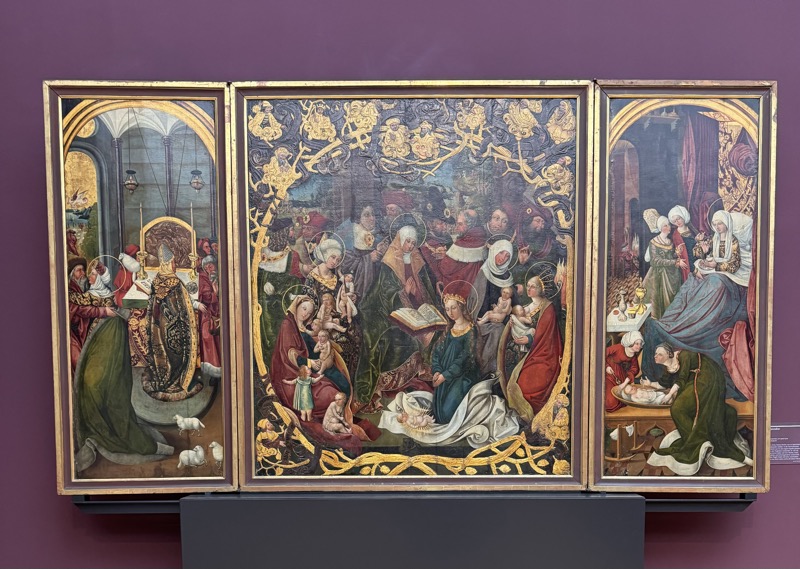
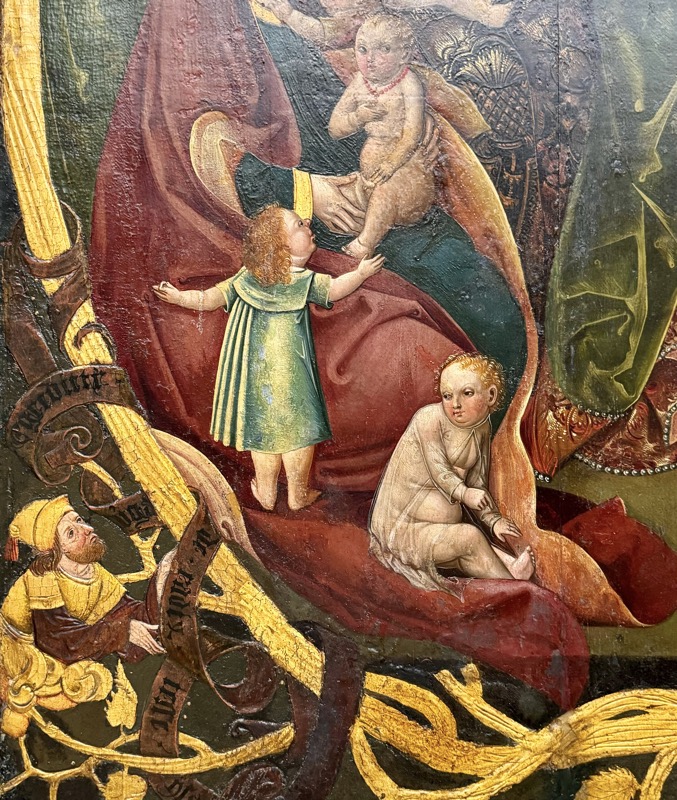
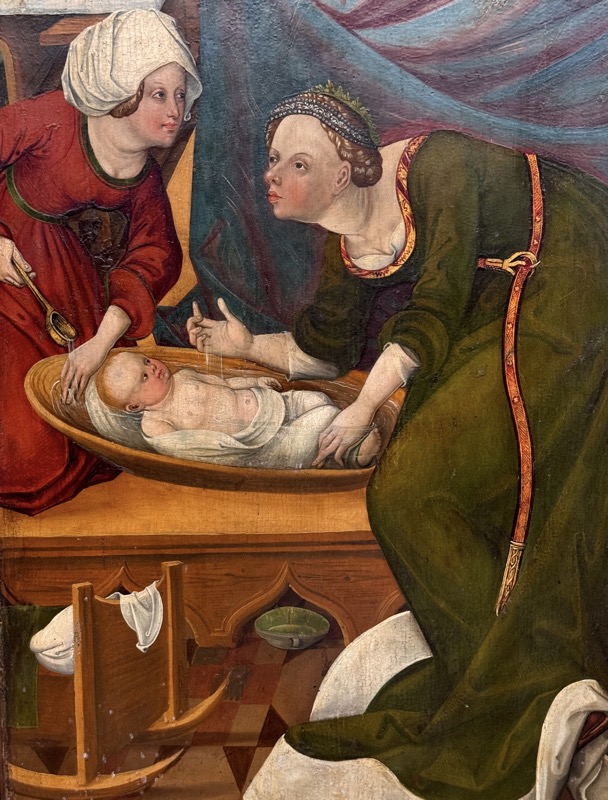
Mother of God Altar c.1510 to 1515,, Hans Raphon, Göttingen or Northeim c,1460-1512 and Bartold Kastrop, Northeim c.1465-1531/1532 Göttingen, oak wood.
The Madonna is based on a copperplate engraving by Albrecht Dürer. His works of art printed on paper quickly spread and were often used as templates by other artists. The altarpiece was created for the Einbeck collegiate church of St. Alexandri,
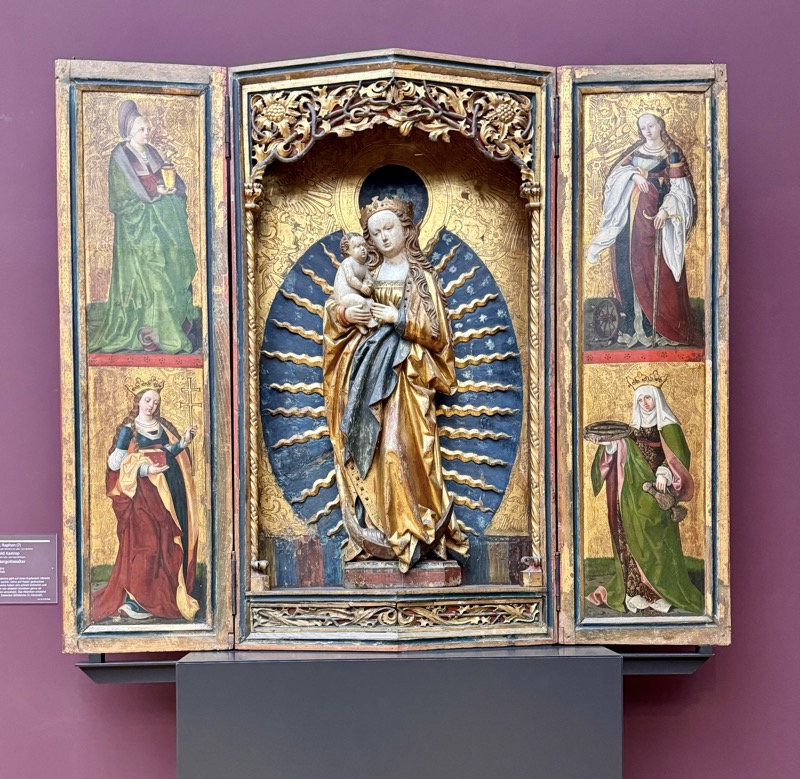
Rosary altar, c. 1500, South Lower Saxony (Einbeck), oak.
The center of this winged altar is occupied by the Mother of God accompanied by angels.
Mary stands on a crescent moon and is surrounded by a halo of rays; the crown also identifies her as the Queen of Heaven. (I love the facial expression on the guy in the bottom right image)
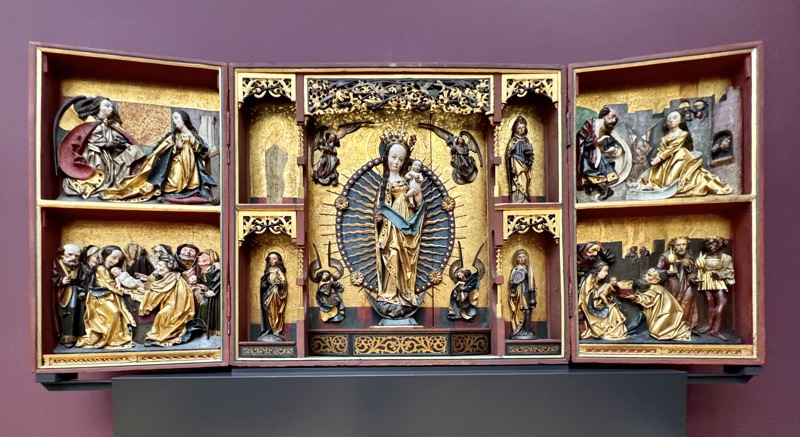
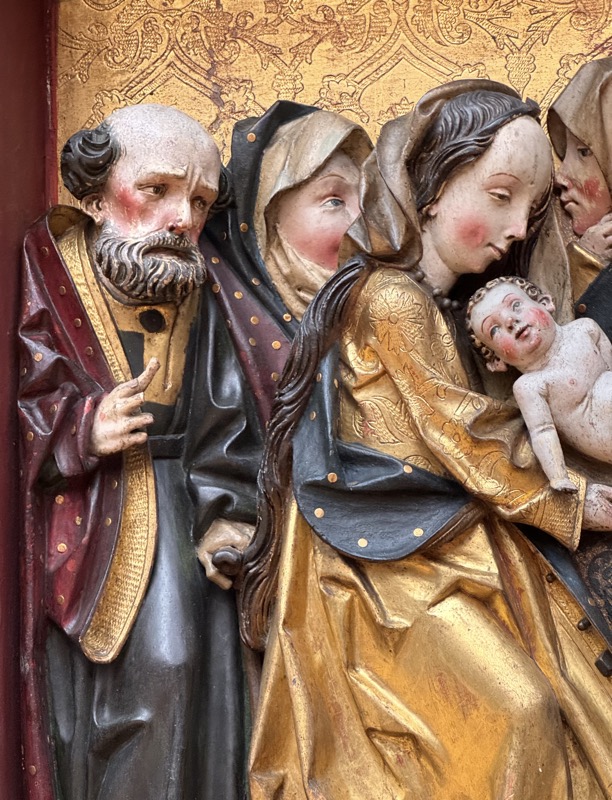
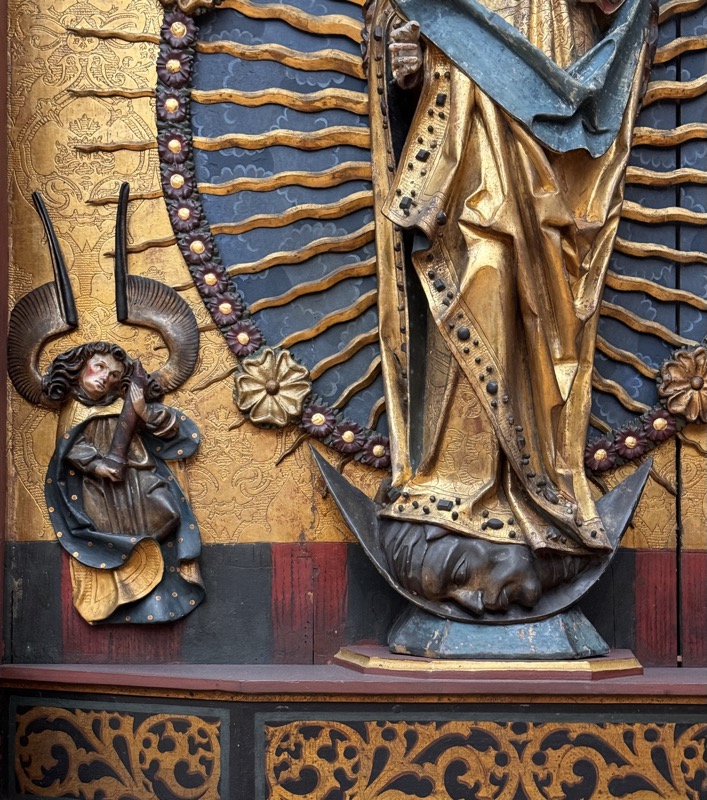
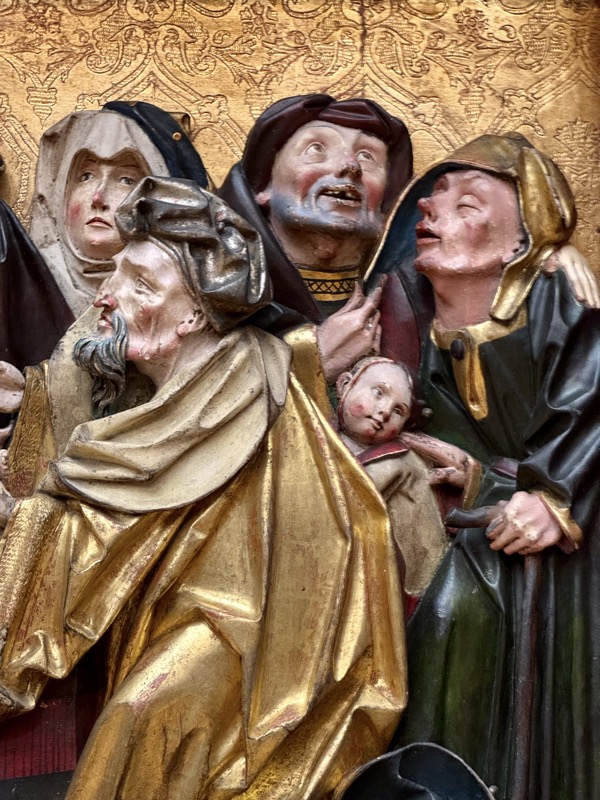
Christ and Mary on Golgotha, c.1505, Hans Holbein the Elder, Augsburg, (1465- 1524), lime wood.
The thorn-crowned Christ sits on the cross and is mourned by Mary. A moment of pause is captured on Mount Golgotha, which Holbein characterizes as a hilly landscape and makes recognizable by skulls and bones.
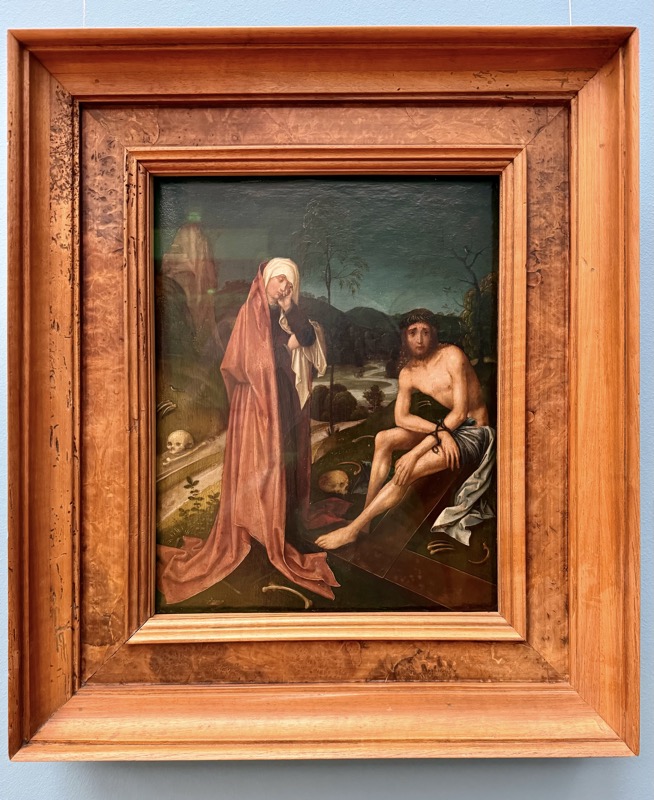
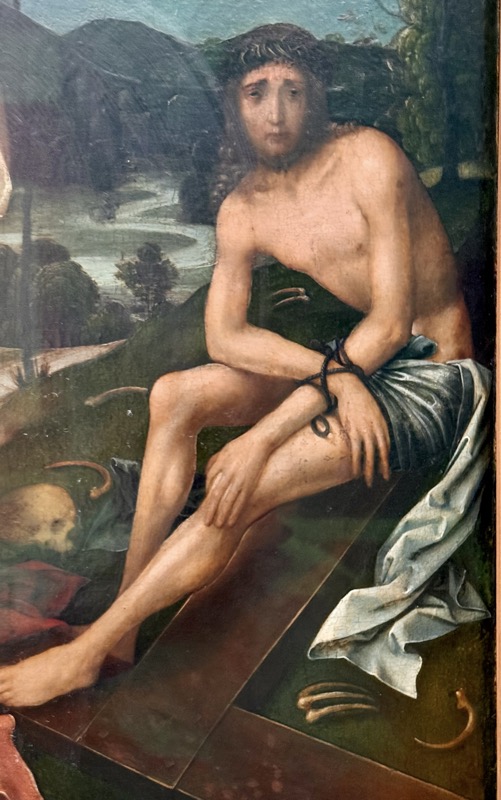
John the Ev. and Jacob the Elder, c. 1510, oak
The two saints are deceptively realistic painted sculptures set in a stone architecture made of reddish marble. Such painted sculptures were particularly popular in the Netherlands. They were usually found on the outside of the winged altars, which then unfolded their full splendor of color when opened.
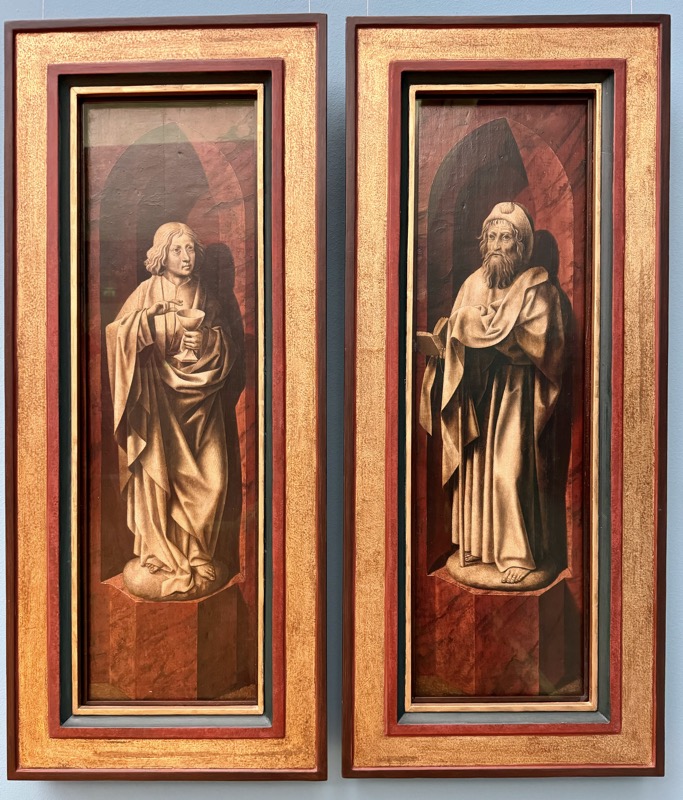
Portrait of a Man, Jakob Elsner, c.1507.
Nuremberg 1460/1465-1517 Nuremberg, Parchment or paper on oak.
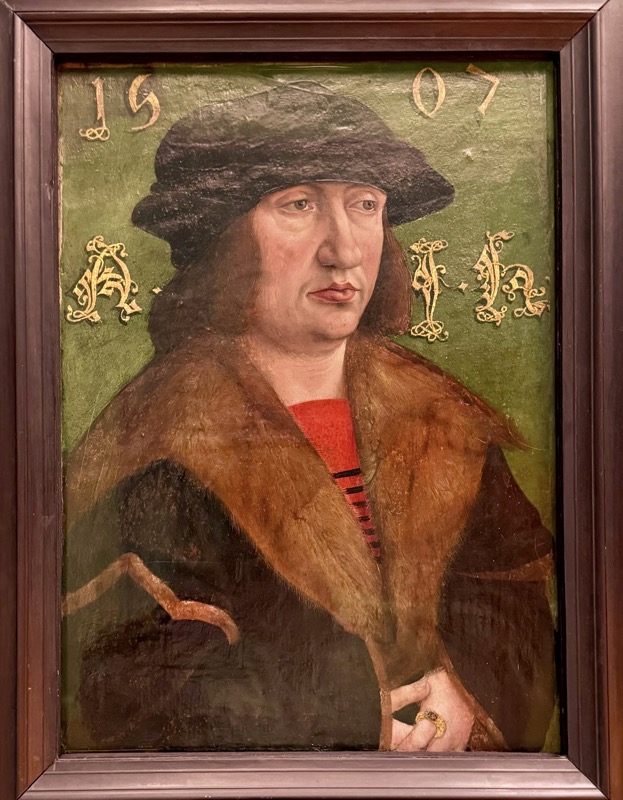
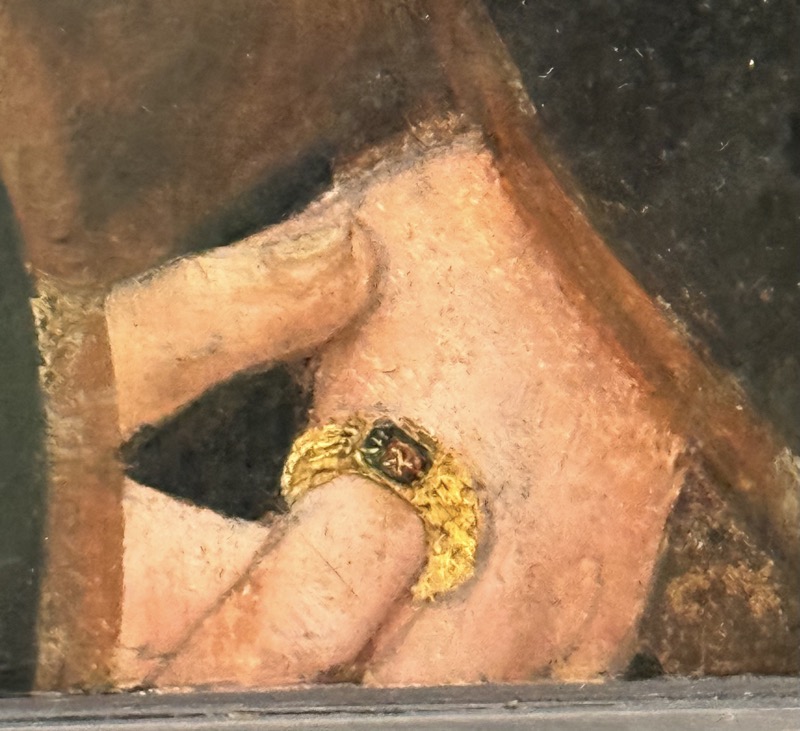
Portrait of the Astronmer Johann Schöner, c.1528, Master of the Neudörfer Portraits active in Nuremberg around 1500-1530, Linden wood.
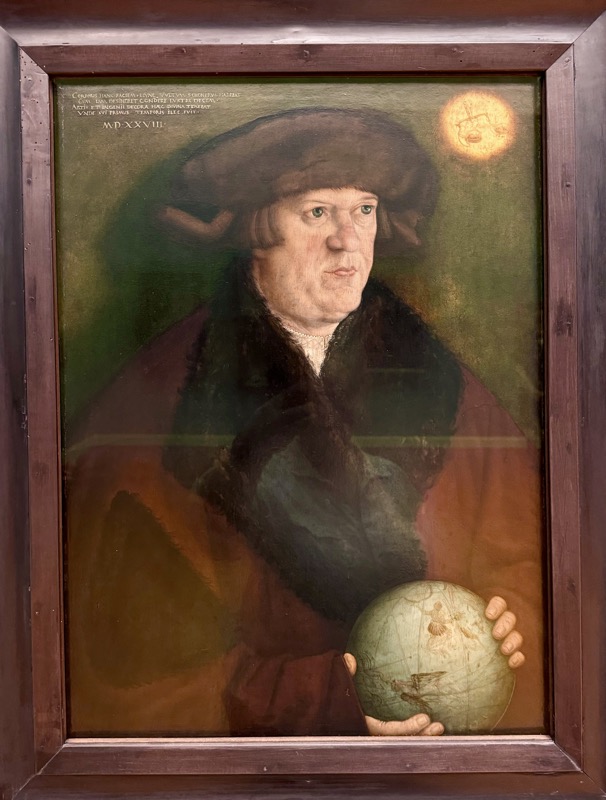
Female Saint, c.1510, Tilman Riemenschneider, Heiligenstadt/Eichsfeld, active 1460-1531, Würzburg,
Limewood, painted in color – the figure is carved from limewood, a material that can be worked in many different ways. The garments form a delicate relief. The carver has masterfully crafted the turban-like headdress, the veil and the wavy hair. Originally a standing figure an early collector sawed off the bottom of the work and converted it into a bust.
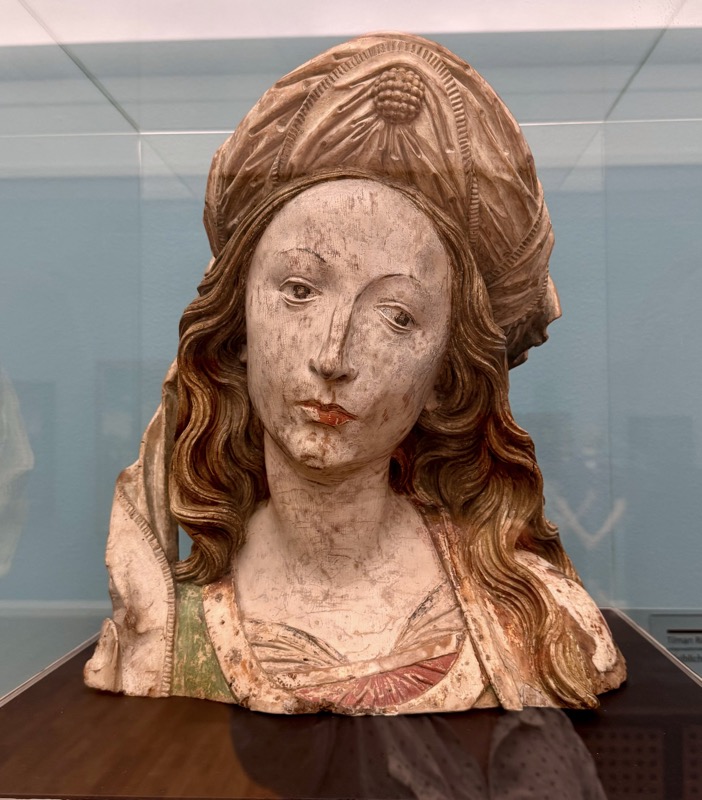
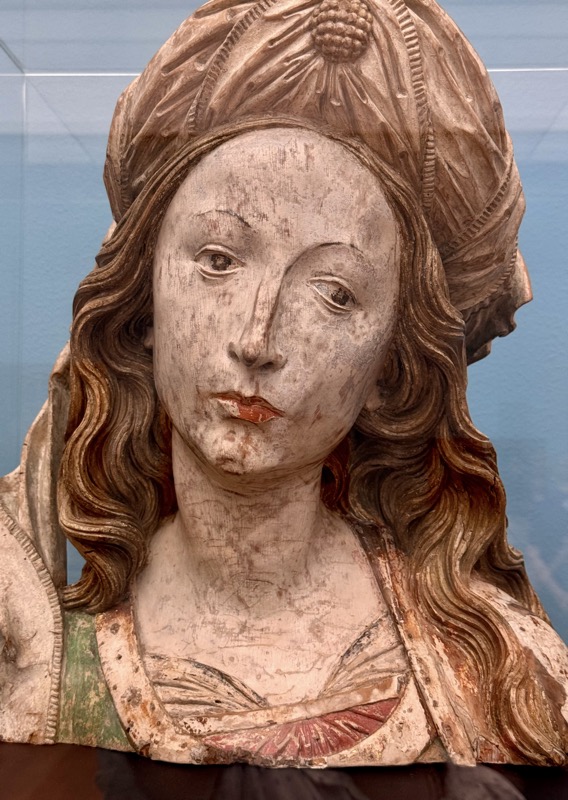
John the Baptist and Mary Magdalene, c. 1515, Hans Suess von Kulmbach (1470 – 1522),
Nuremberg, lime wood
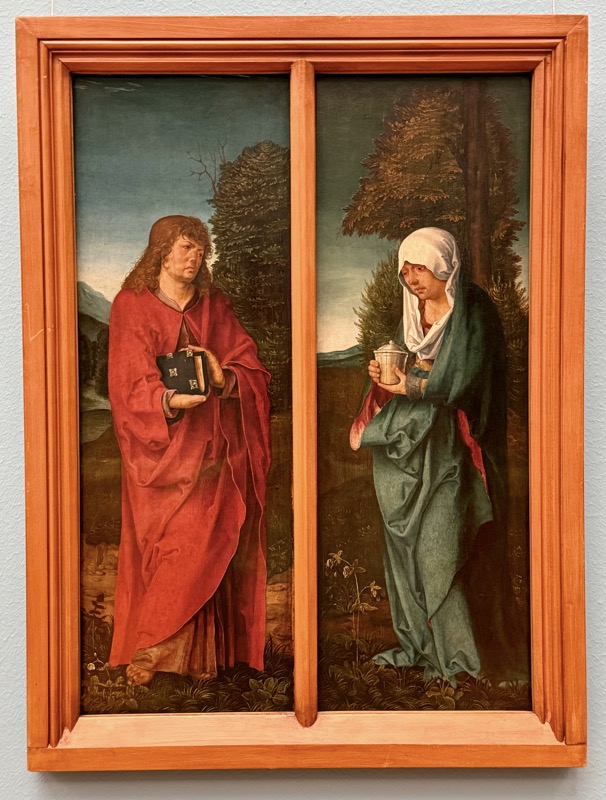
The Saints Sebastian and Rochus, c.1518, Hans Suess von Kulmbach, (1470-1522),
Nuremberg, linden wood.
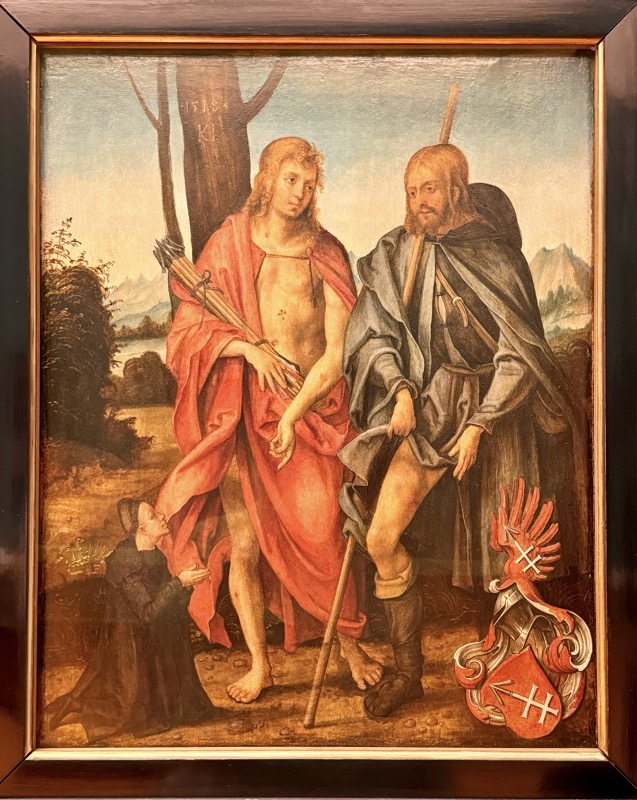
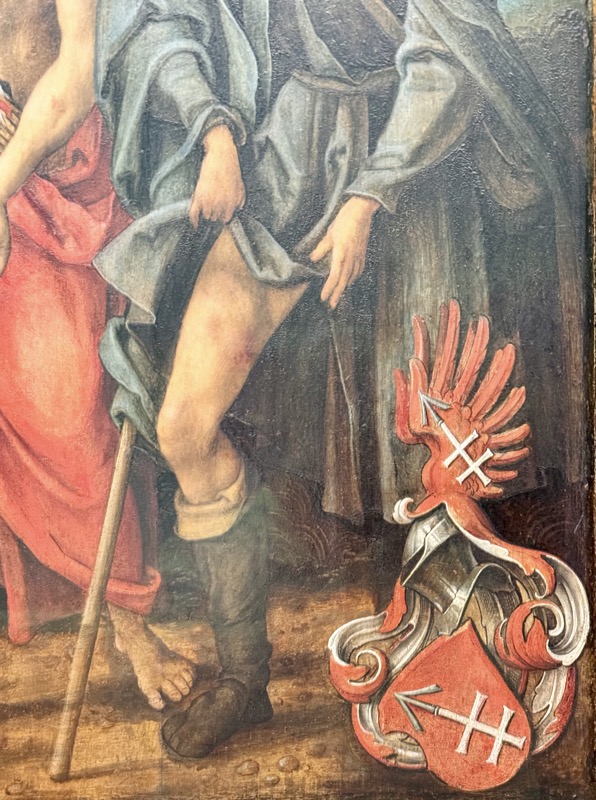
Venus with Cupid, c. 1515-1520, Lucas Cranach the Elder
Kronach 1472-1553 Weimar, transferred to plywood
The painting corresponds entirely to the Renaissance’s renewed interest in the female nude.
Venus appears life-sized. Her skin color and posture are reminiscent of ancient sculptures.
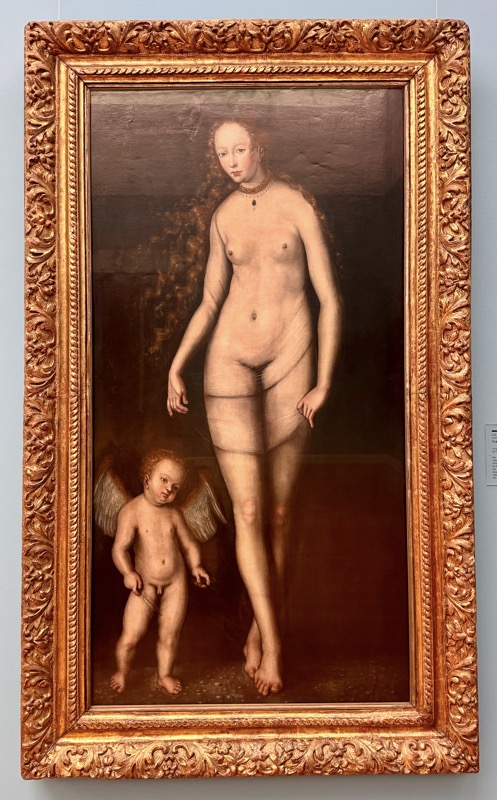
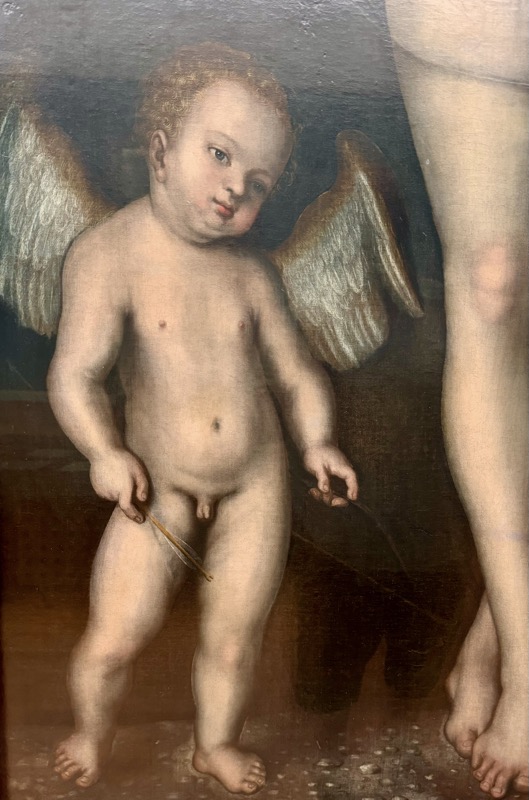
Lucrezia, c.1525, Lucas Cranach the Elder, Kronach 1472-1553 Weimar. Beechwood.
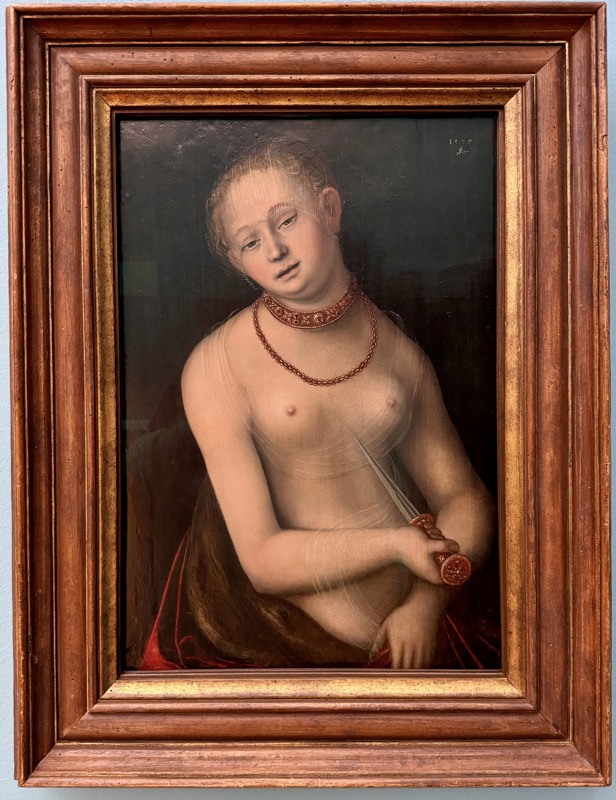
Martin Luther and Katharine von Bora, c.1528, Lucas Cranach the Elder (1472-1553) Weimar, beechwood
In 1525, the former Augustinian monk, Martin Luther married the nun, Katharina von Bora. By marrying, both broke their church vow of celibacy. The portraits became so popular at the time that numerous replicas were soon created.
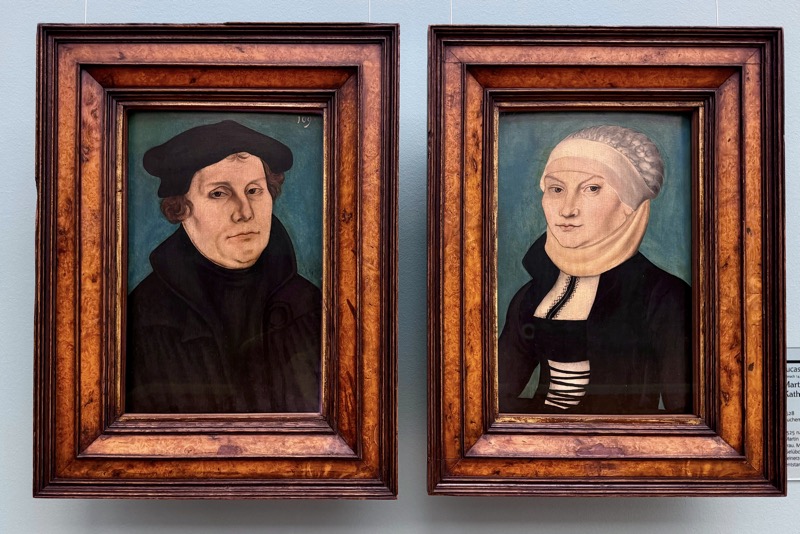
The martyrdom of the seven sons of Felicitas c. 1530/1535, Lucas Cranach the Elder (1472-1553), Weimar, Oak wood.
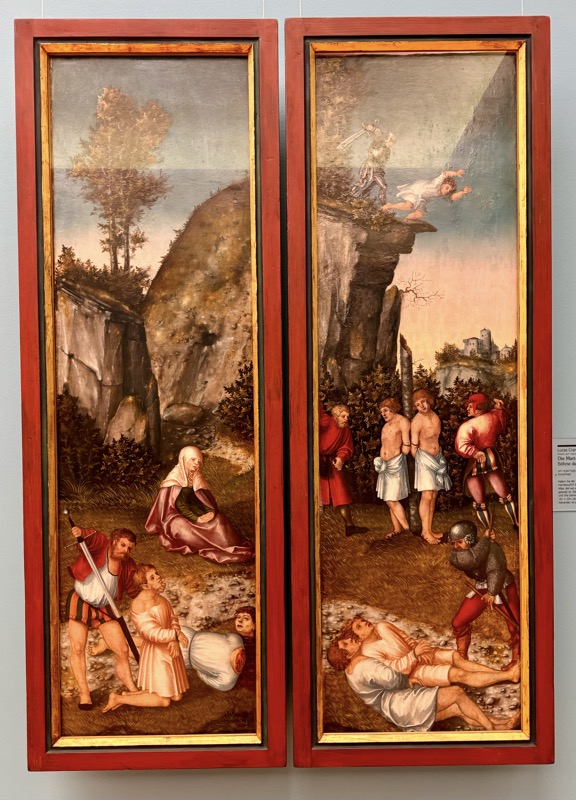
Salvator Mundi panel, c.1537, Hans Kemmer (1495- 1561) Lübeck, oak wood.
The woman’s jewelry helps to identify the couple praying to the Savior: it is quite likely that her shoulder amulet shows the heraldic animal of the Lübeck merchant Carsten Timmermann. The couple probably commissioned the painting in memory of a deceased child. It was executed by Cranach’s student Hans Kemmer, who was the leading painter in Lübeck since the Reformation.
Inv.
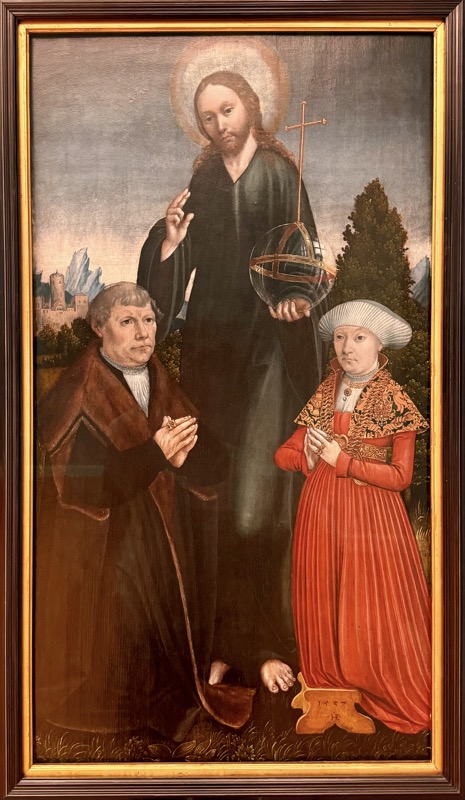
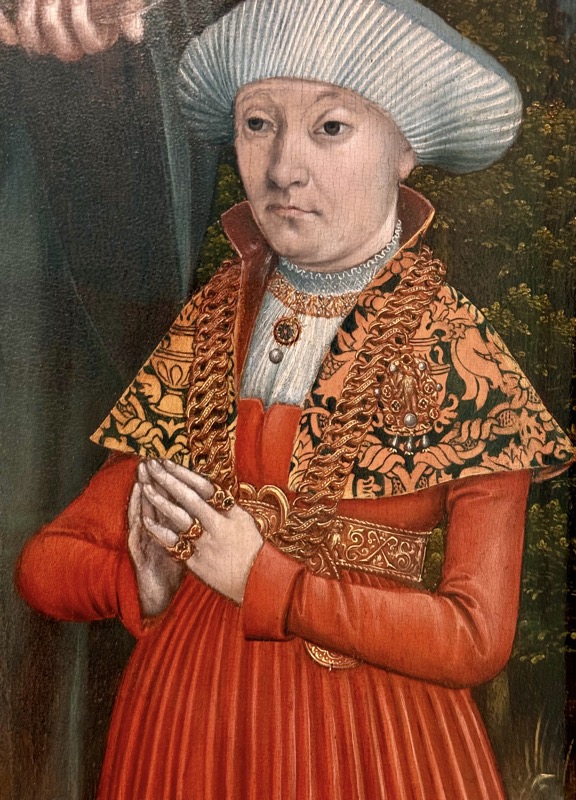
Portraits of a Donor Couple, c.1520, Bartholomäus Bruyn the Elder (1493-1544), Cologne, oak.
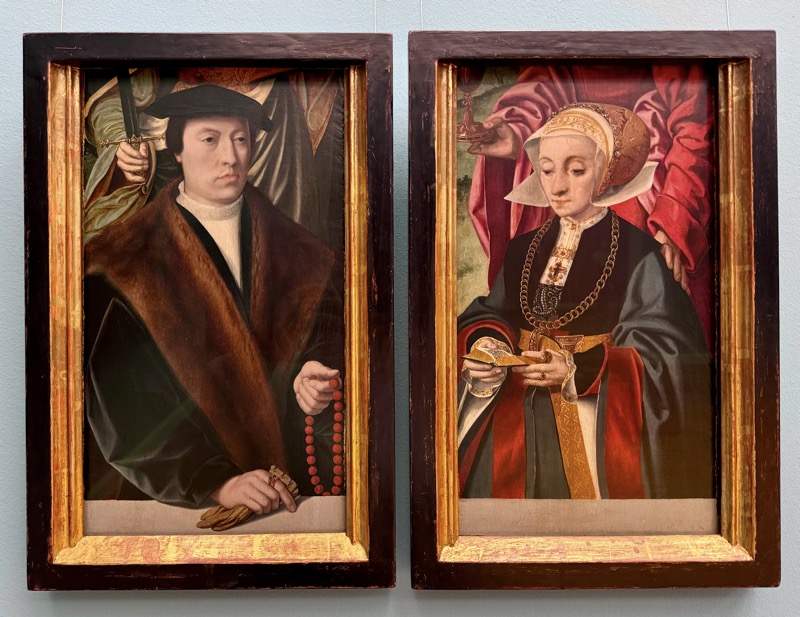
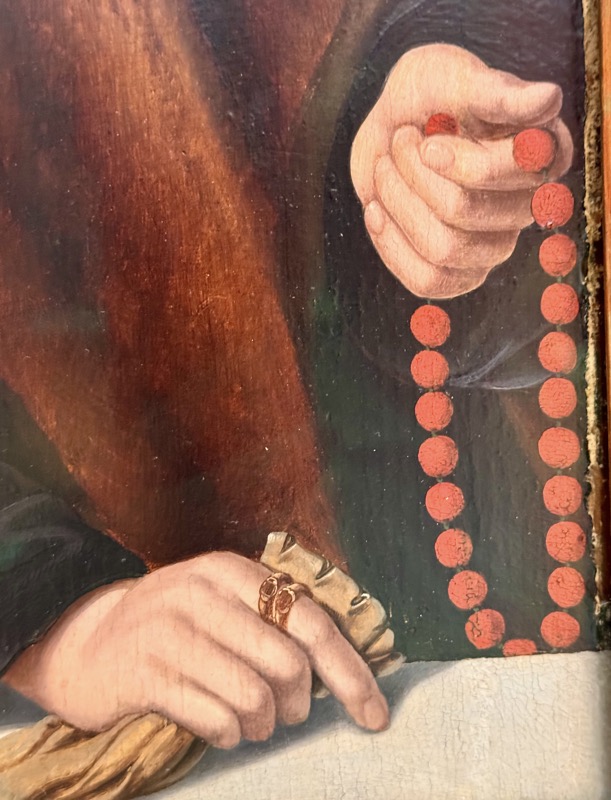
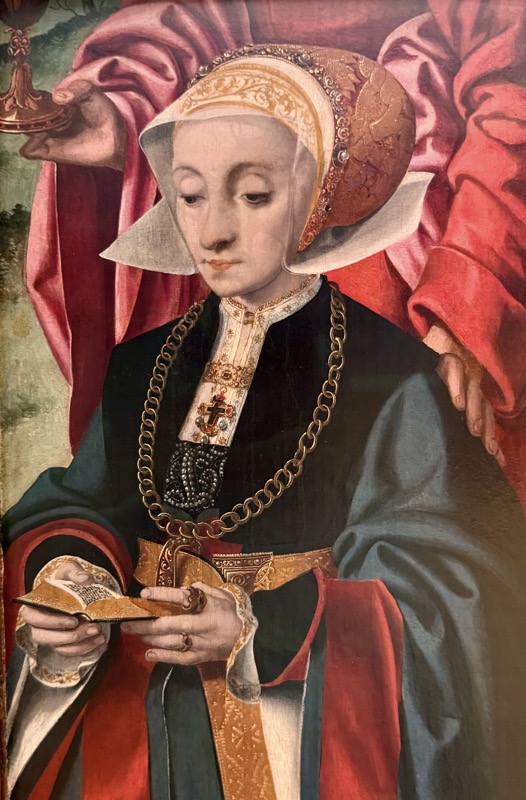
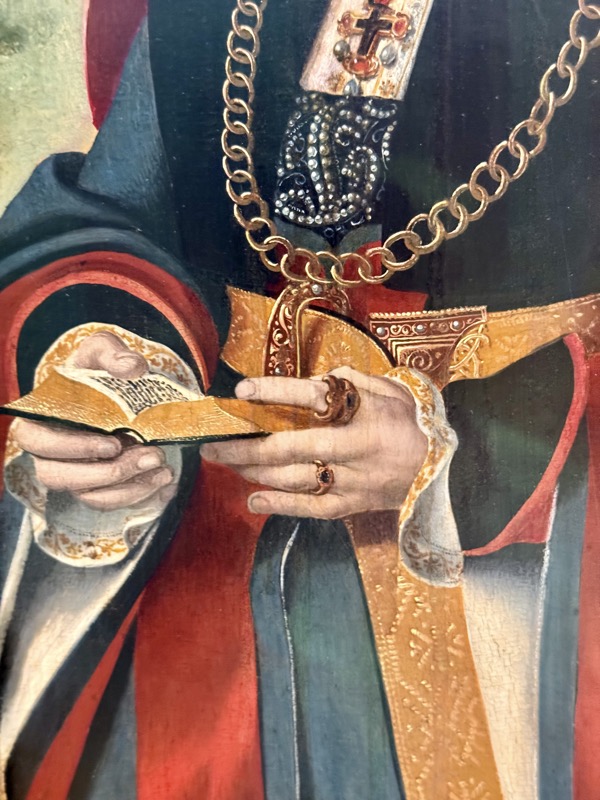
Lucrezia, c.1510, Sodoma (actually Giovanni Antonio Bazzi) Vercelli, 1477- 1549 Siena, poplar wood.
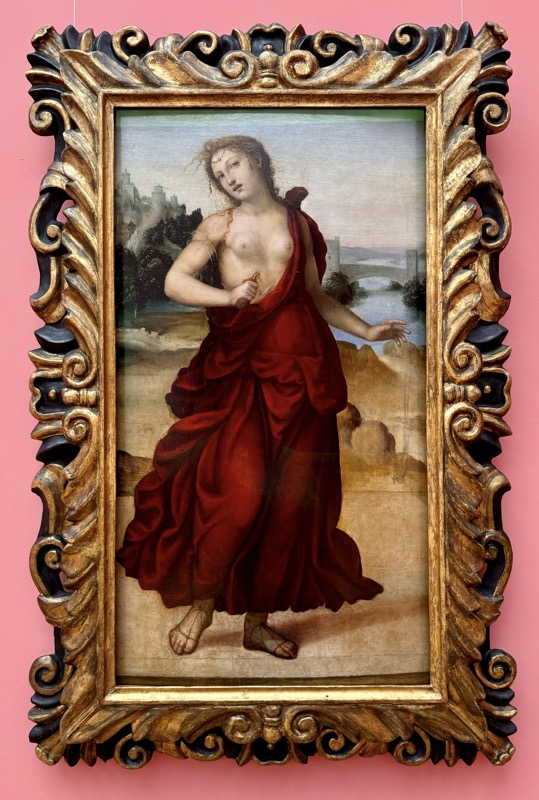
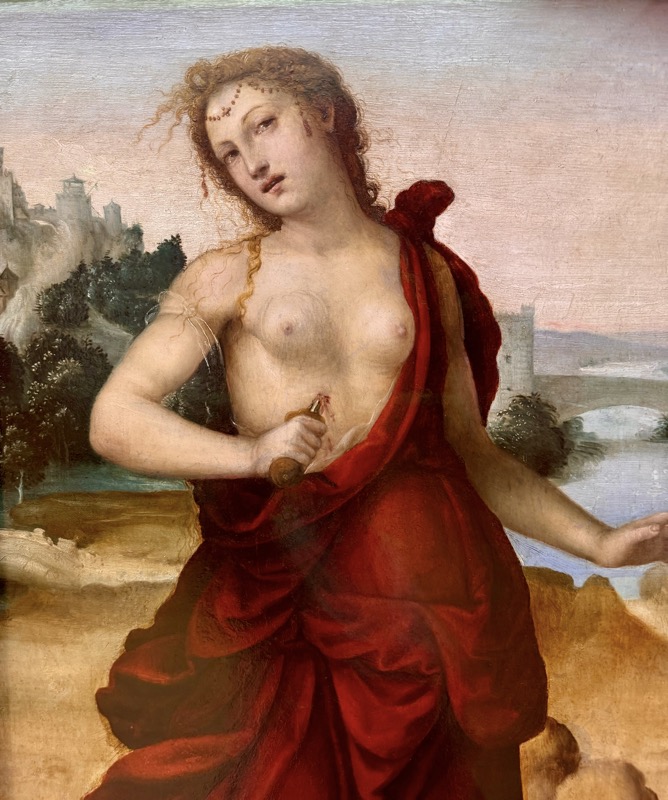
Portrait bust of Grand Ducke Fernando I de Medici, c.158790,
Pietro Francavilla Cambrai (1548 – 1615), Paris, marble.
In antique idealization, the portrait bust shows the third ruler of the younger Medici line, Ferdinando I (1549-1609). Under his leadership, the House of Medici achieved its greatest power and significant influence throughout Europe.
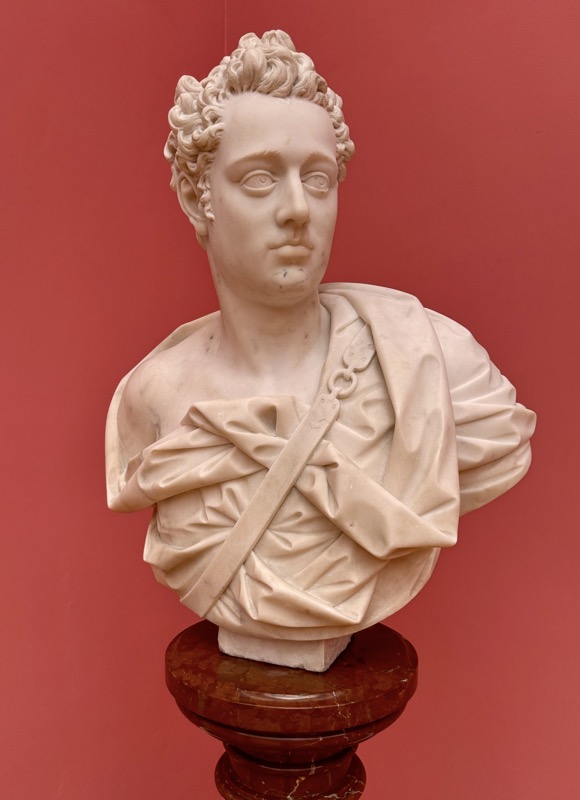
Annunciation to Mary, c.1500/15150, Sandro Botticelli (workshop), Florence 1445 – 1510 Florence, poplar wood. Once developed, compositions were used more frequently in Sandro Botticelli’s studio. The Annunciation angel resembles a painting in the Uffizi in Florence, and the Virgin Mary resembles a painting now kept in London. The work was created for the private devotion of the woman kneeling in front; the black robe and white bonnet identify her as a widow.
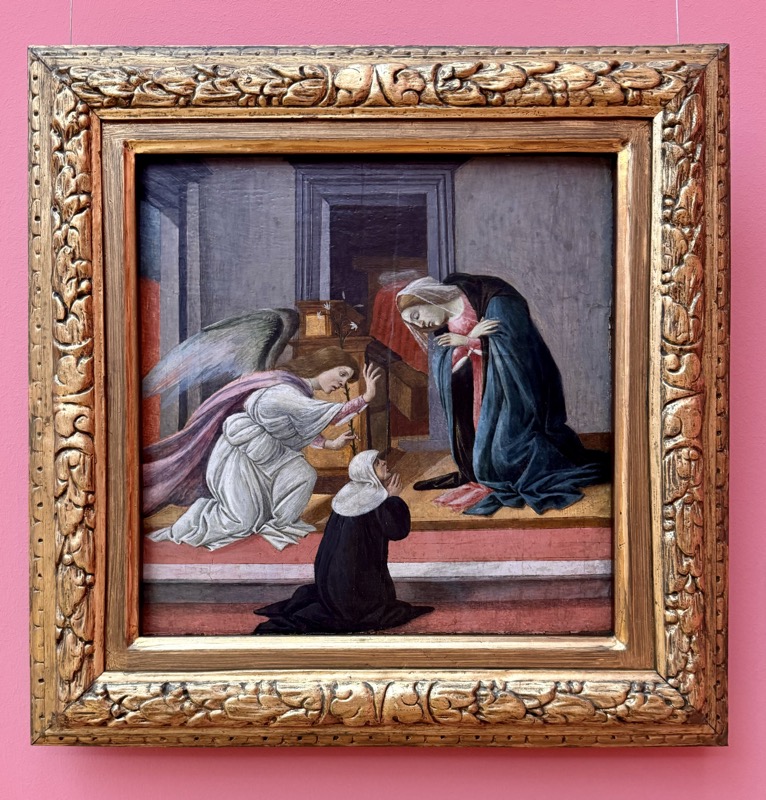
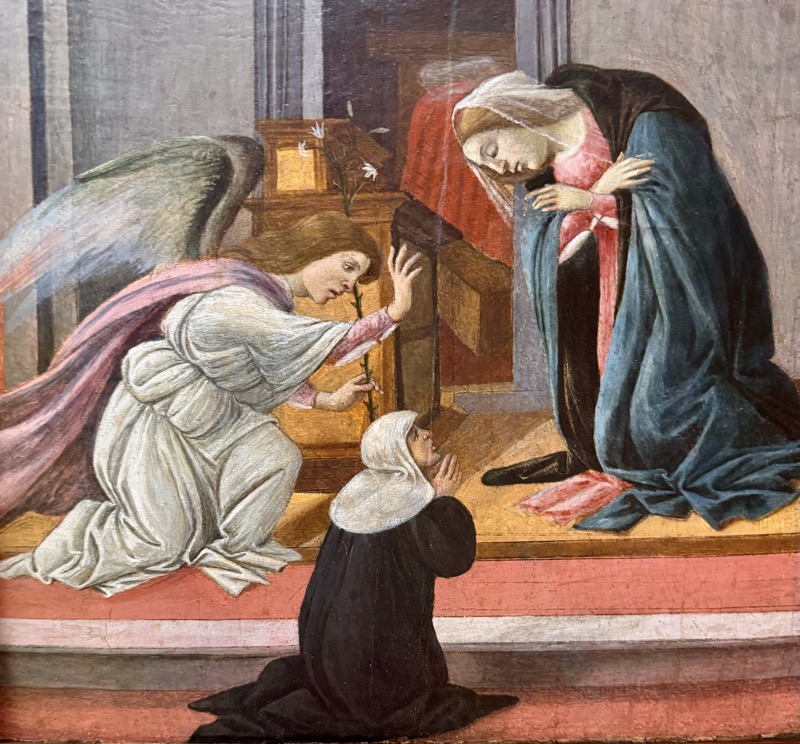
St Peter in a wreath of fruit, c.1470-80. Pietro Perugino, (1448-1524), Fontignano, poplar
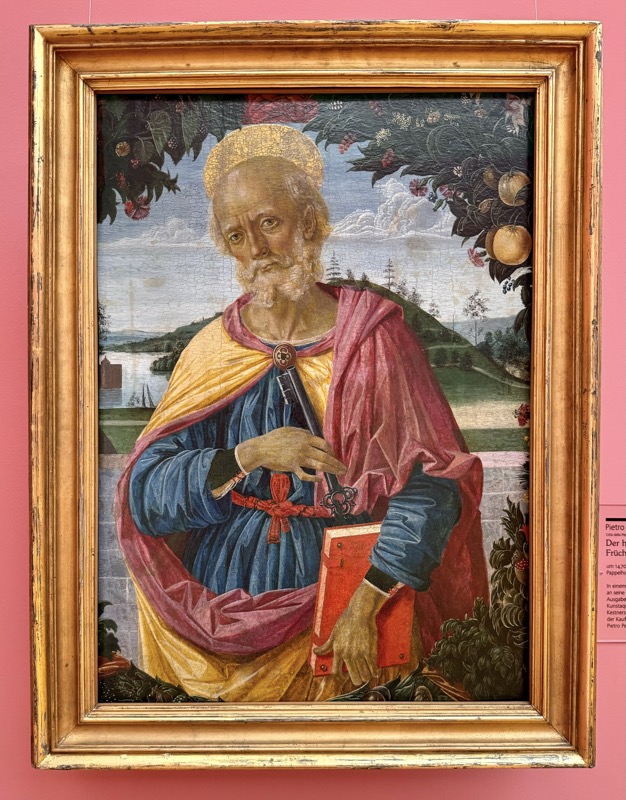
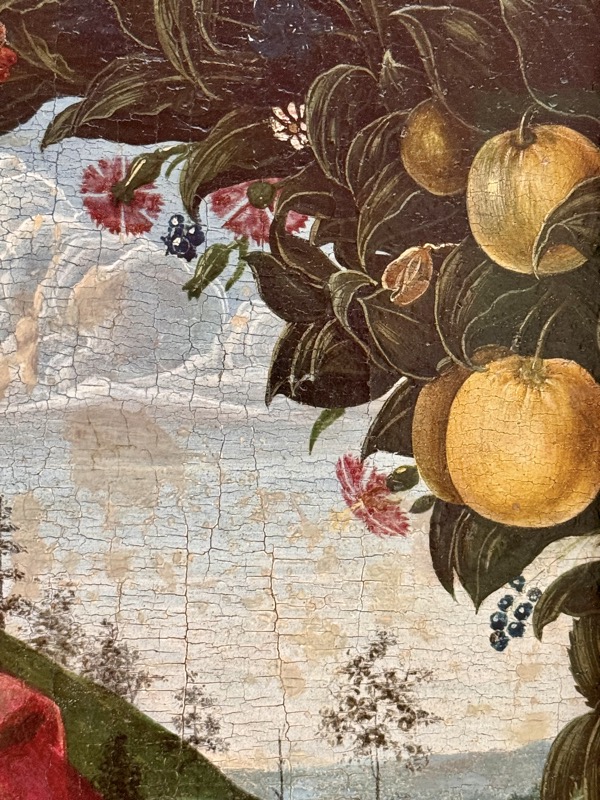
Adoration of the Child with the Infant Saint John, c.1490.
Sandro Botticelli (workshop), Florence 1445 – 1510, poplar wood.
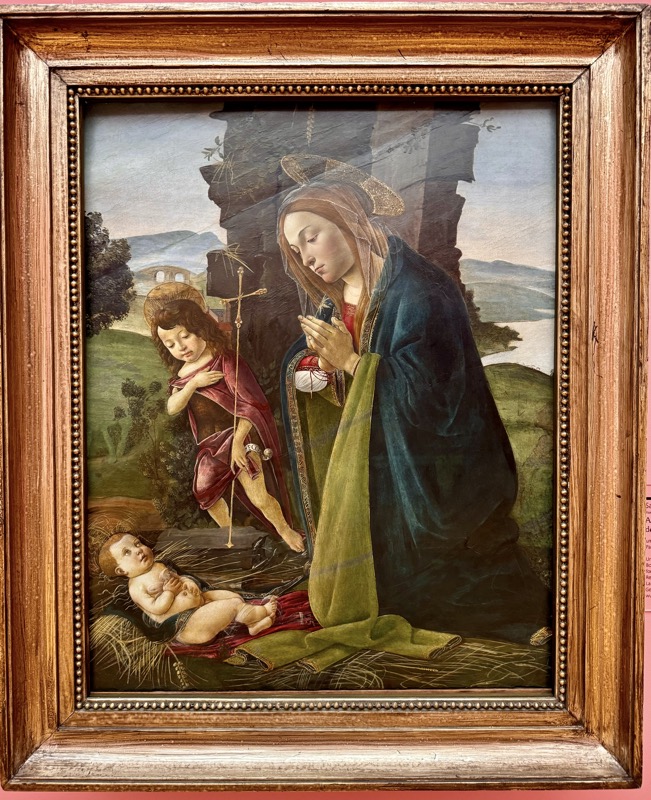
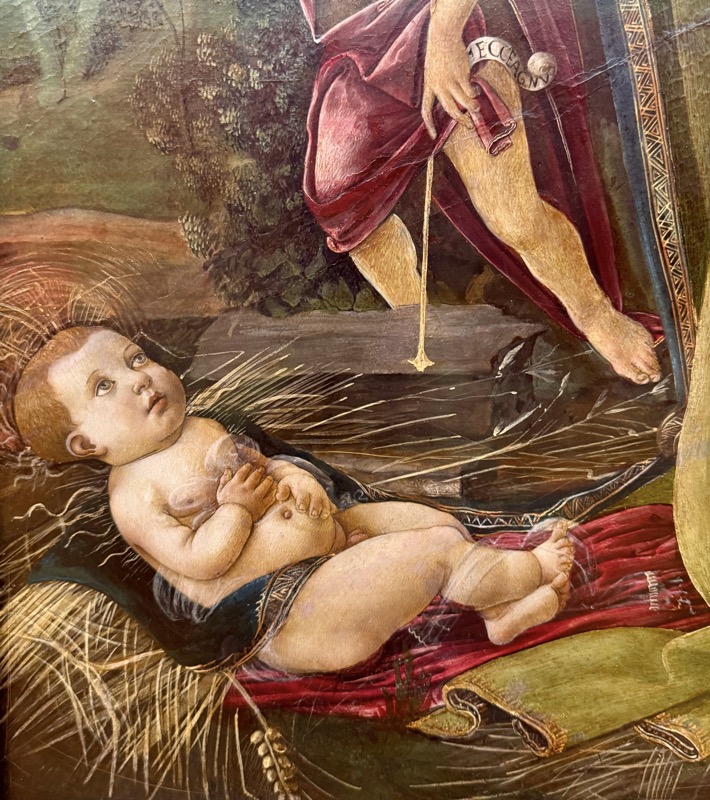
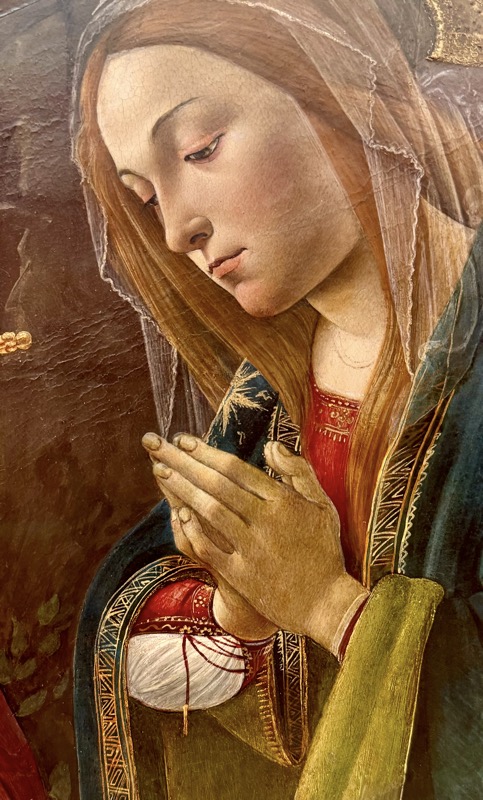
Portrait of Francesco Alunno, c.1510.
Lorenzo di Credi, Florence 1459-1537 Florence, poplar wood.
The art writer Giorgio Vasari (1511-1574) praised Lorenzo di Credi’s painting style highly: It shows a finesse that surpasses any other painting. This alludes to the smooth texture of the oil painting, which also characterizes the charming portrait of the young scholar. An inscription identifies the person depicted as the lexicographer Francesco Alunno from Ferrara.
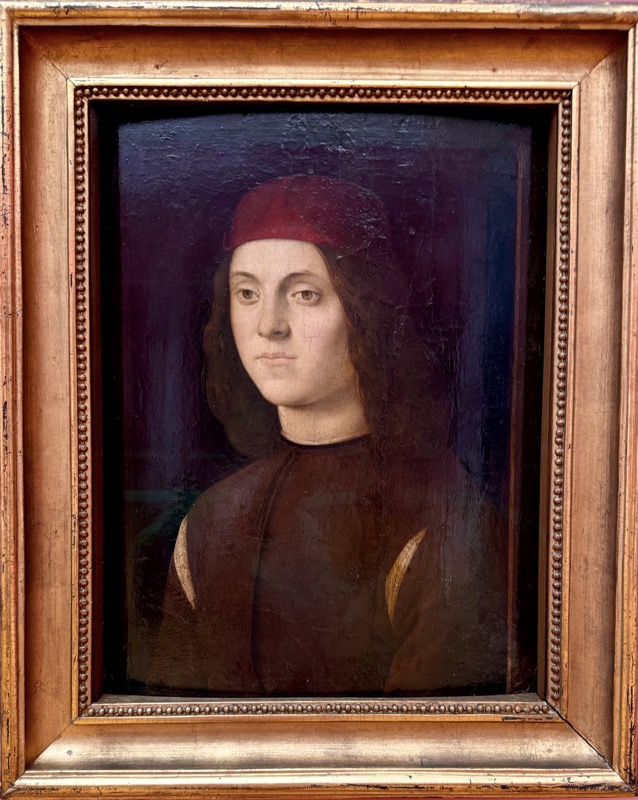
The Arrival of Aeneas at Dido’s c. 1460
Apollonio di Giovanni, Florence 1415/1417-1465, poplar wood.
In the 15th century, a bride was led to her new home in a wedding procession. Chests were carried along and used as furniture. The love story of Dido and Aeneas is shown on the chest front. Above, Aeneas arrives in Carthage; on the right, Dido welcomes him in the hall of a temple.
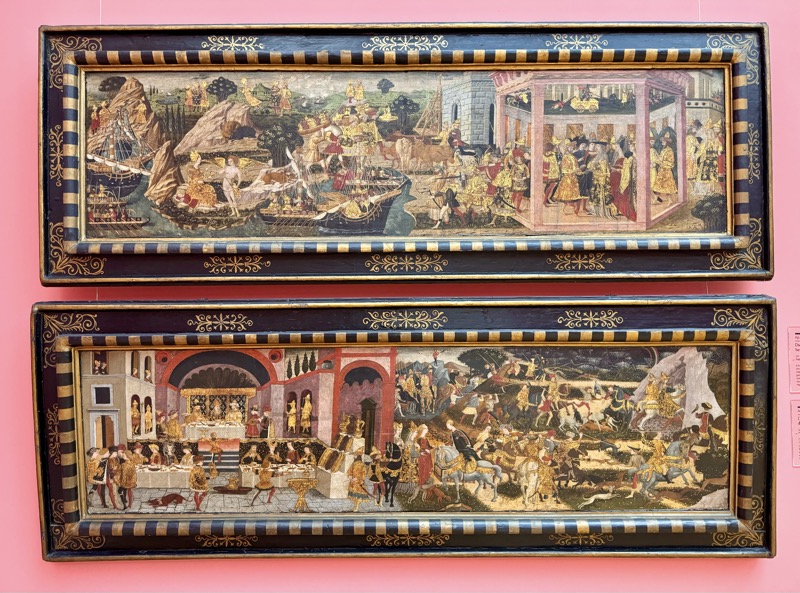
The Banquet and the hunt of Dido, c. 1460
The second chest front shows further events from the Aeneid by the ancient poet Virgil (70-90 BC). On the left, a banquet is being prepared for Aeneas, on the right, the company goes hunting. There, Dido and Aeneas are surprised by a thunderstorm. They flee into a cave, the scene of their night of love.
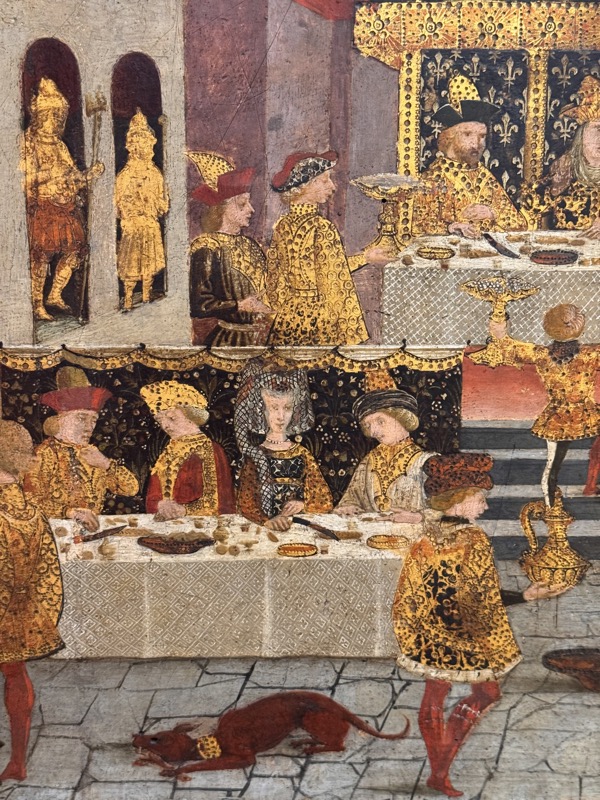
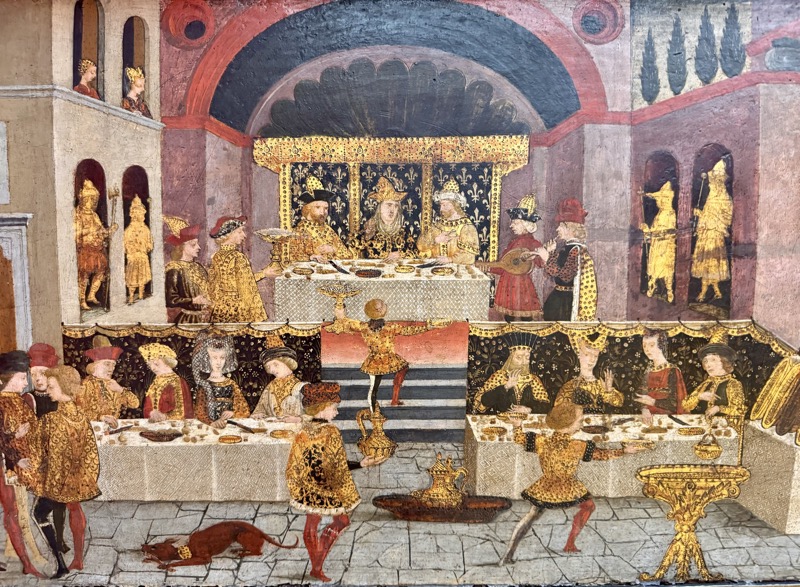
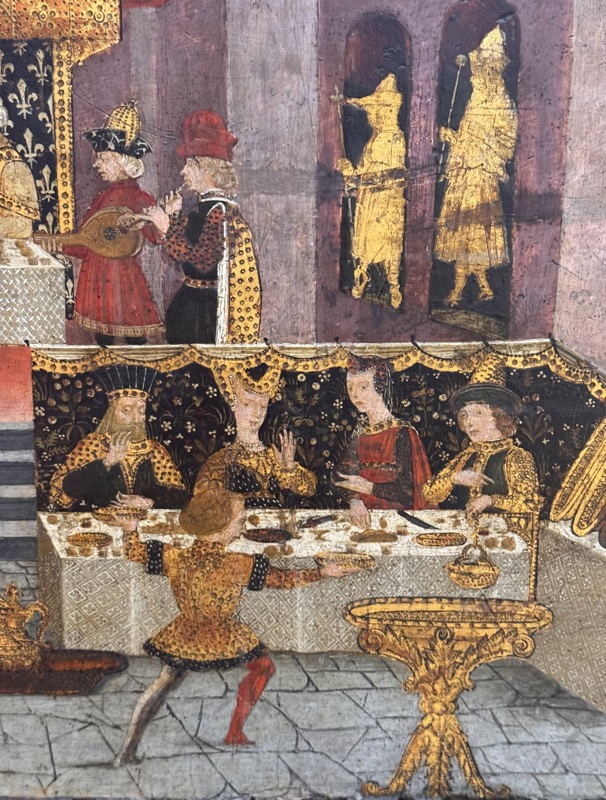
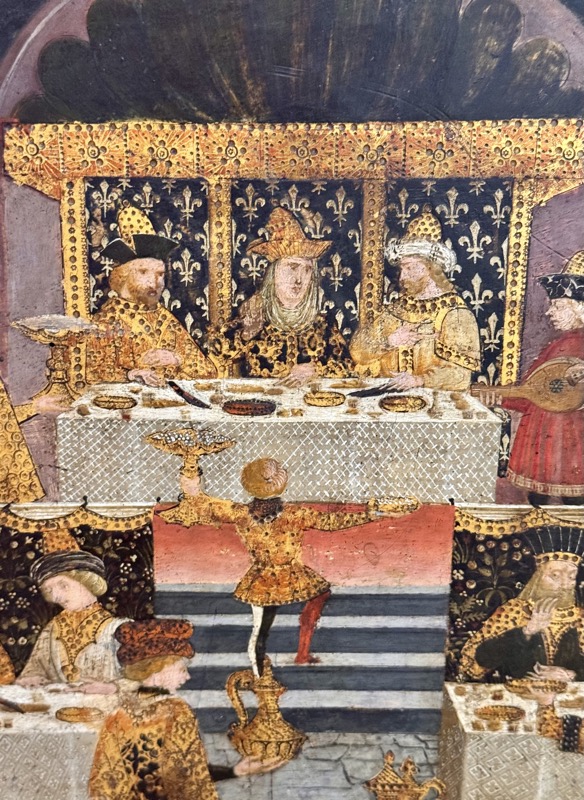
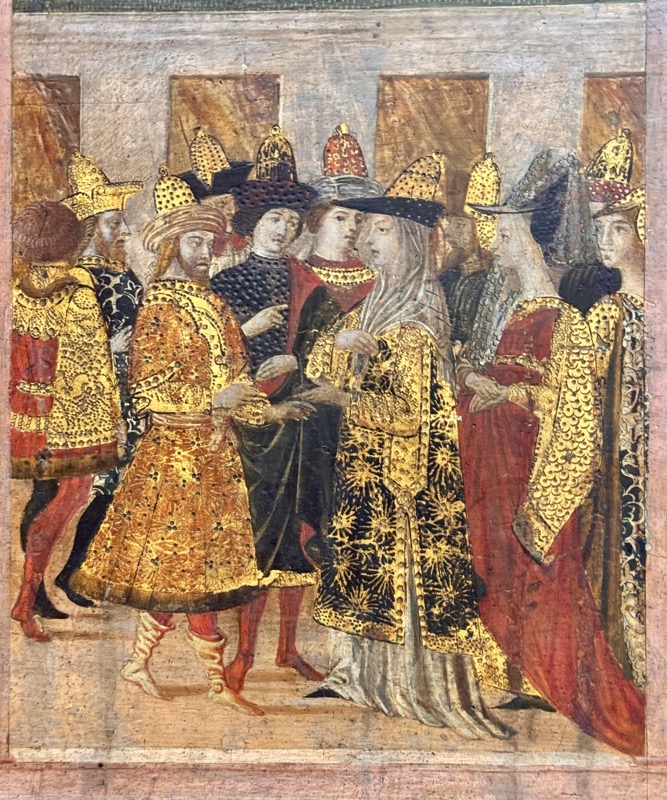
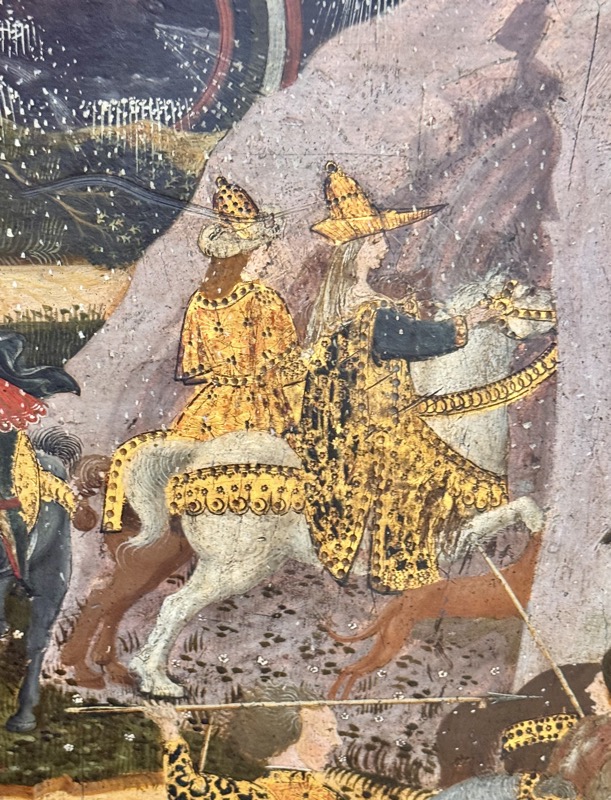
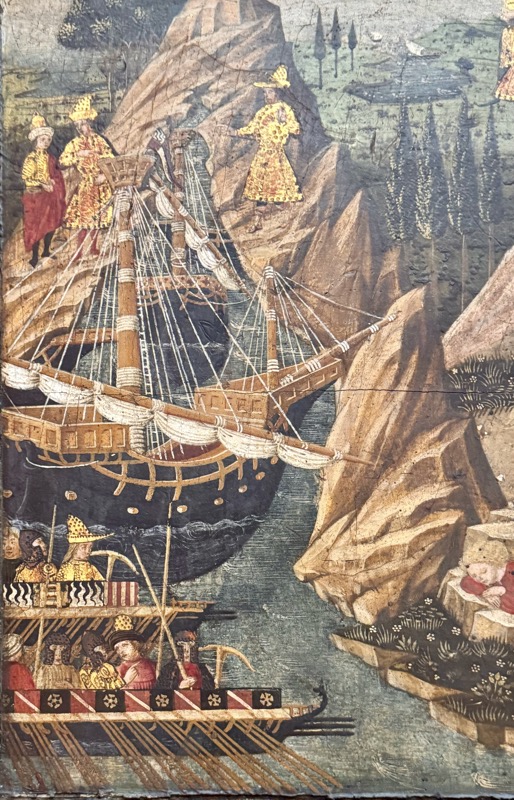
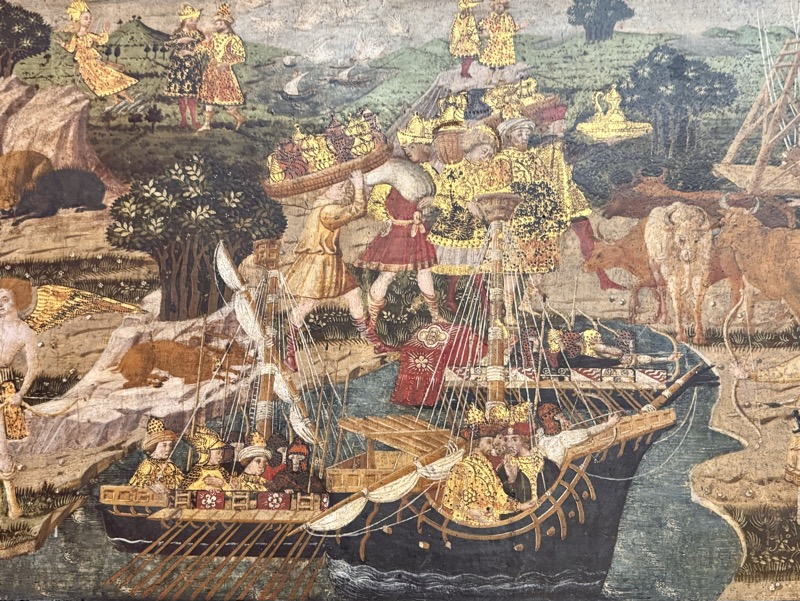
I can’t believe that I got all the way through adding these photos in, and translating descriptions and adding those in too – and totally forgot the one thing I made a mental note about while I was in the musuem! There are sensors EVERYWHERE in these galleries – and when you step too close to the artworks, a recording comes on, (with music) saying, (in English) quite loud, “STOP IN THE NAME OF ART! Before you break some art!” Kinda to the tune of the song, “Stop in the Name of Love!”, which was equal parts initially alarming, then amusing and eventually annoying. Wouldn’t have been so bad if you only heard it once or twice, but it was going off constantly – and you know why? Because the information plaques are so close to each of the artworks, and some as much as 30cm BEHIND artworks that stood proud of walls, meaning every time some old biddy leaned into to read the descriptions, or some finickity history nerd like me leaned in to take a photo of the descriptions, the damn sensors were triggered and the hideous recording went off. Again and again. It must have been set off over 50 times for the couple of hours we were in there. Never seen such an obnoxious security system in a museum before (unless you count the overly stern and officious ‘Shushhh’ing Nuns of The Vatican Museum’ – those women are seriously obnoxious but unsurprisingly, very efficient!
Aaaanyway… after checking out the medieval galleries of the Landesmuseum, we decided to take a wander through the Maschpark, Historical Garden. Gotta say, Hanover has loads of beautiful green spaces and feels like a very liveable city.
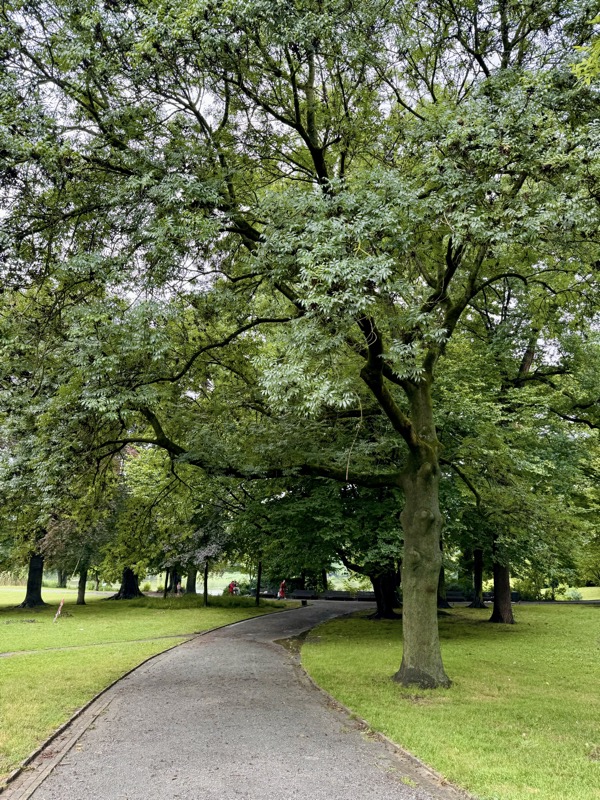

In this prettyish kind of wilderness is an enormous lake full of ducks and probably e-scooters!
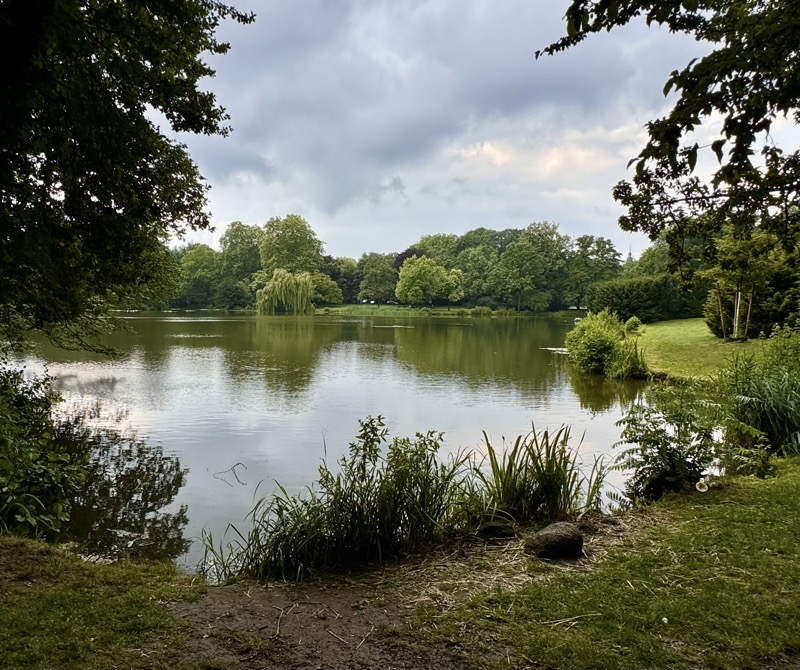
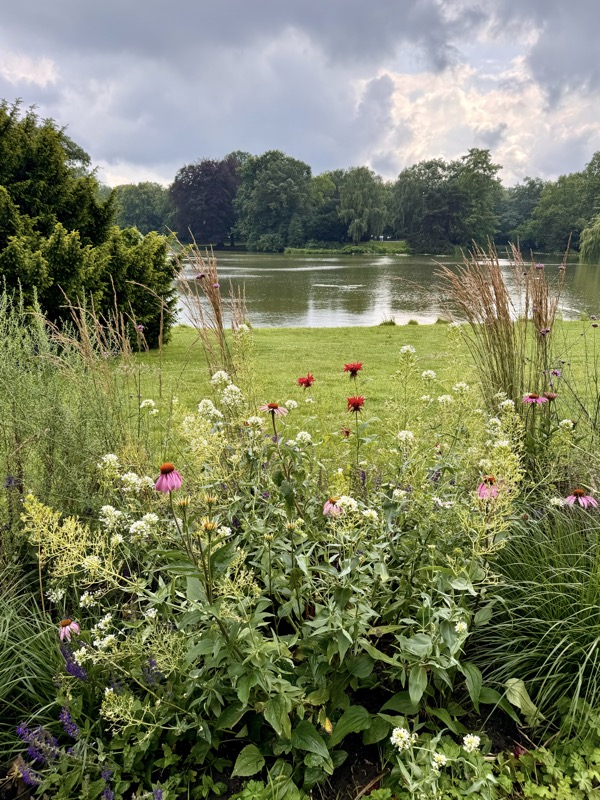
the Neues Rathaus – or New Town Hall.
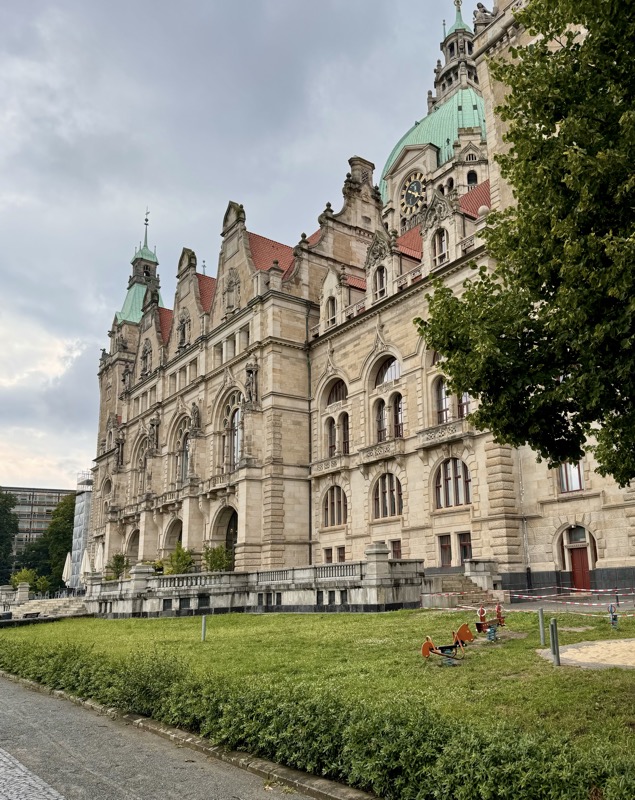
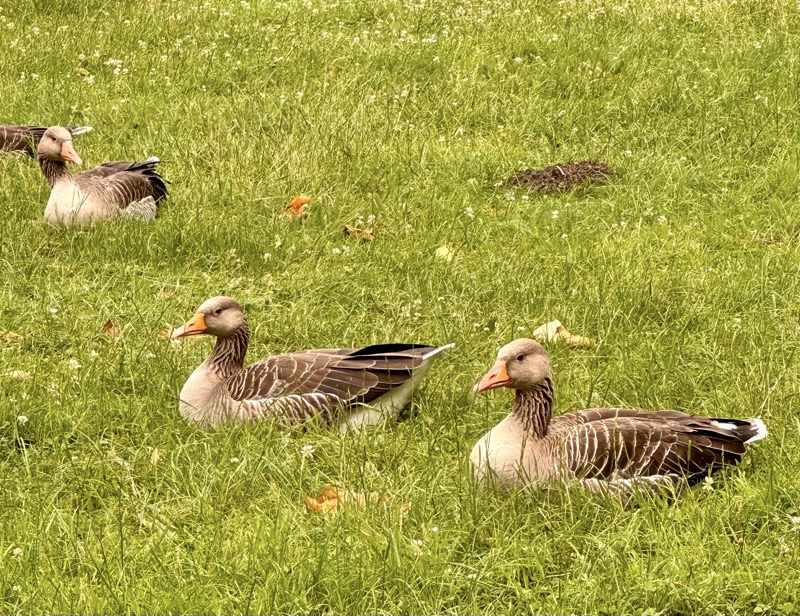
Started to rain, so we decided to bail and leave the very goose looking ducks to their weather.

